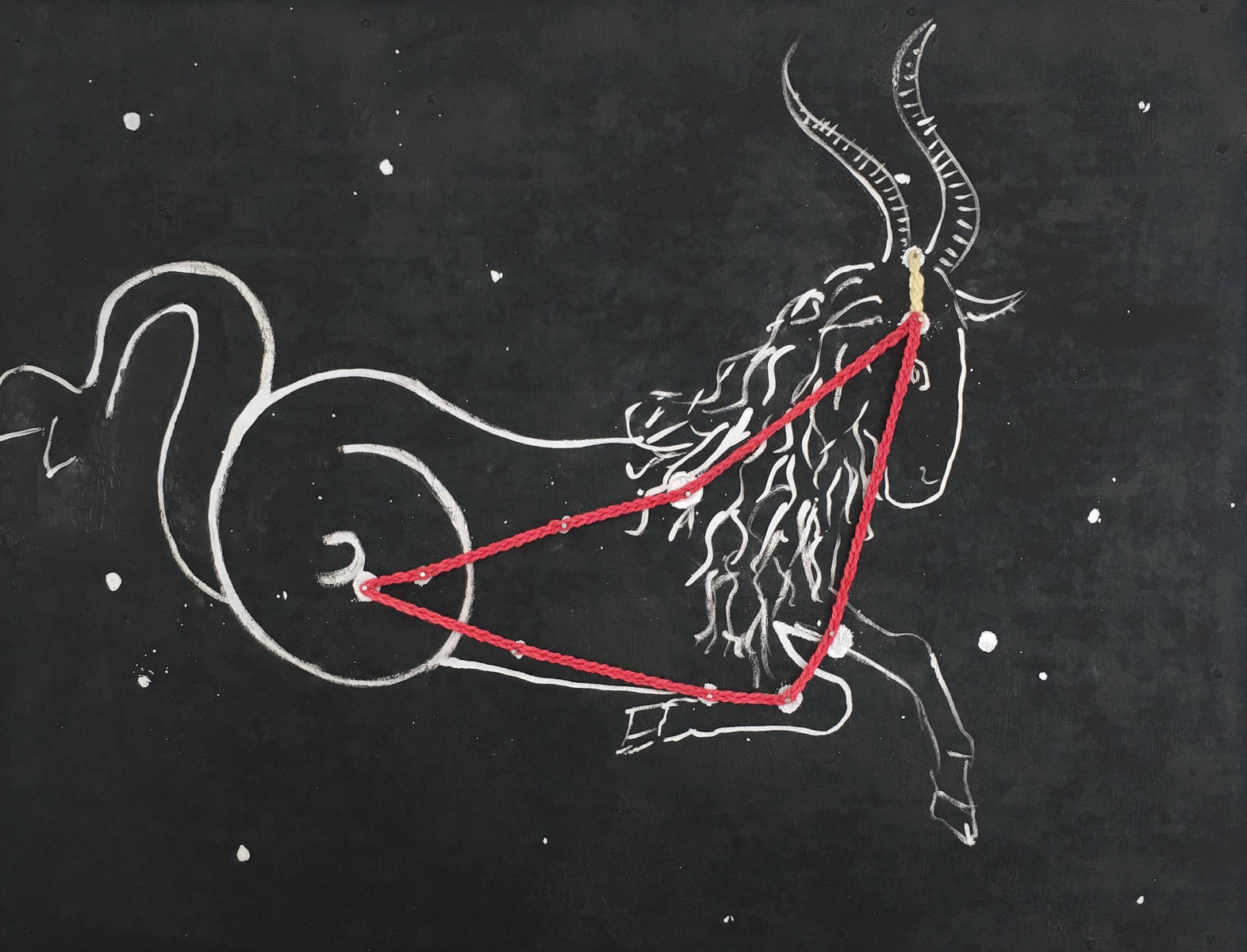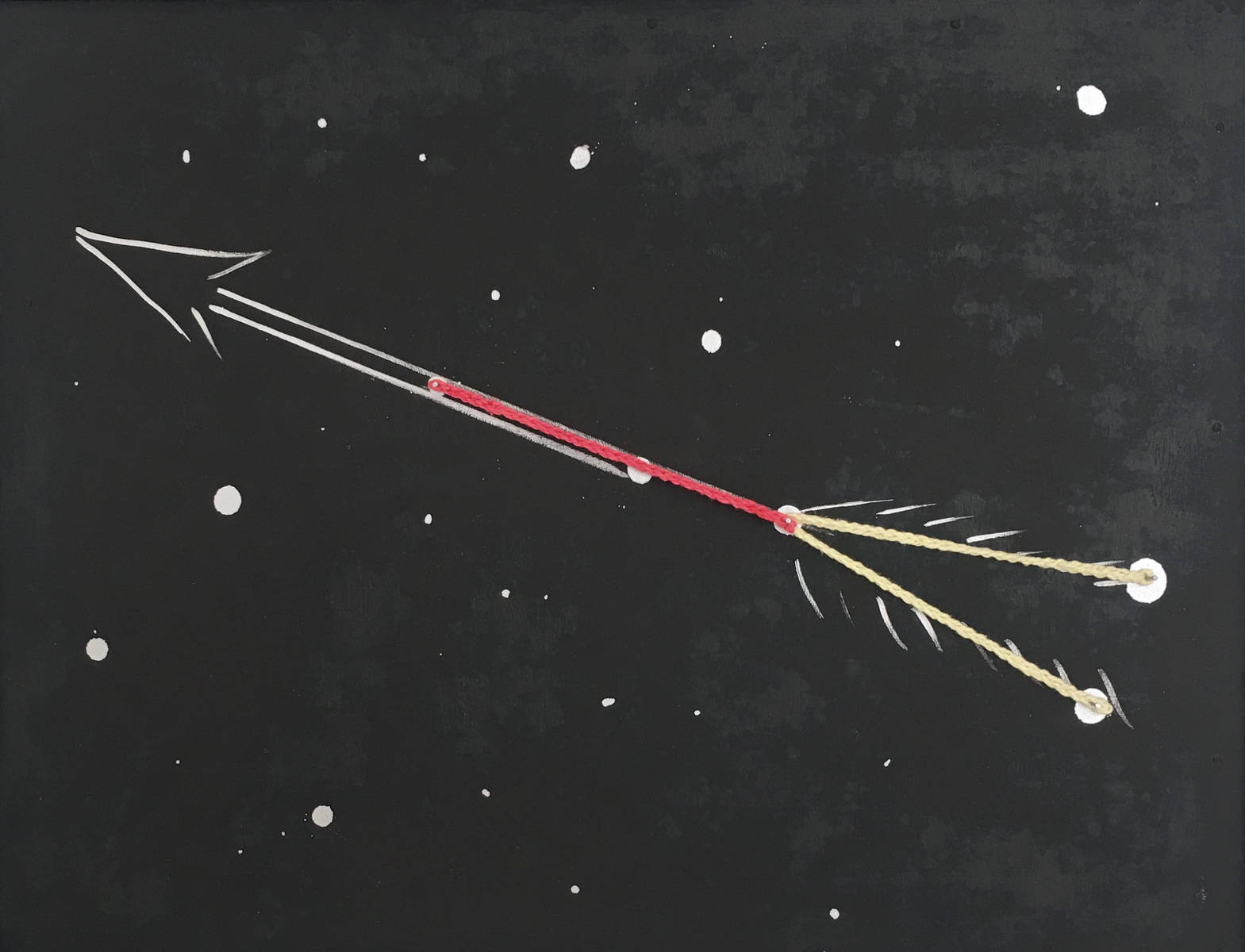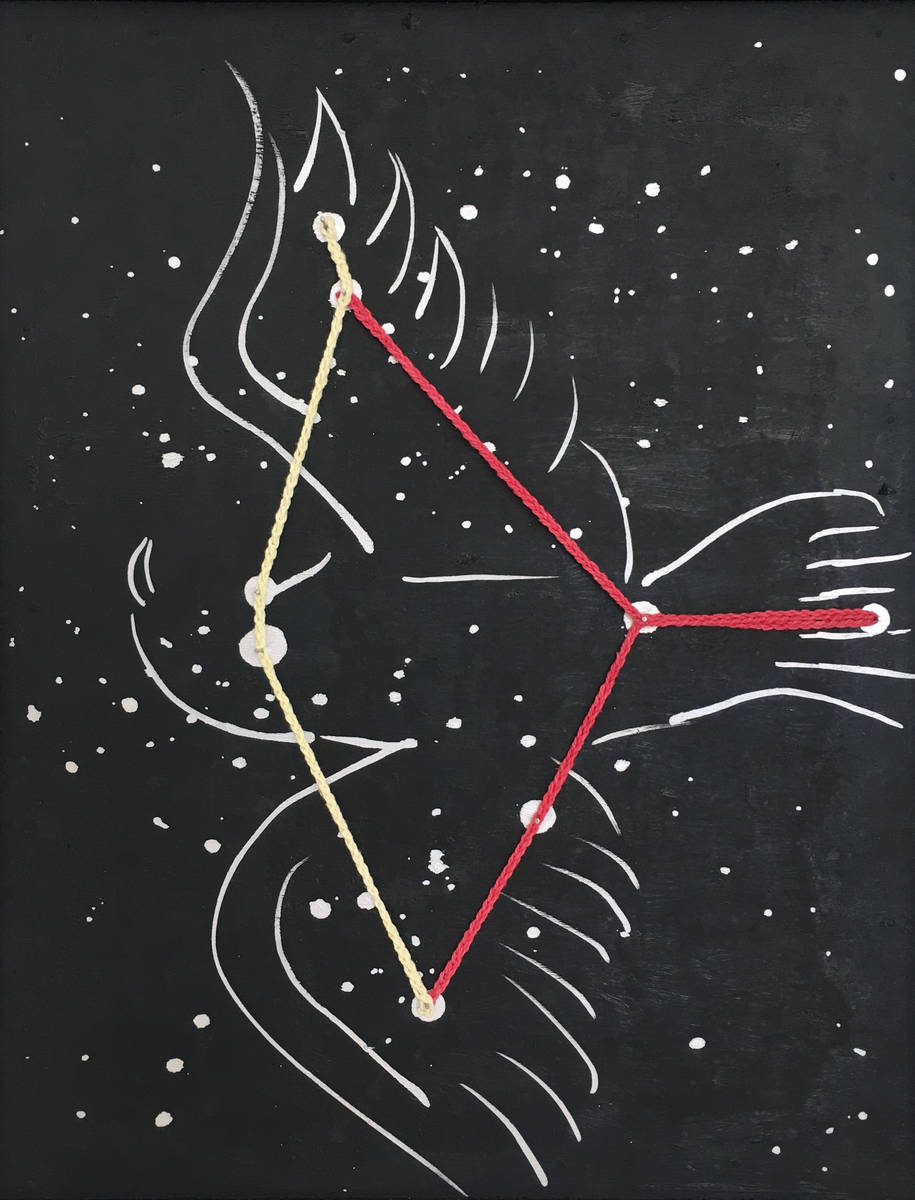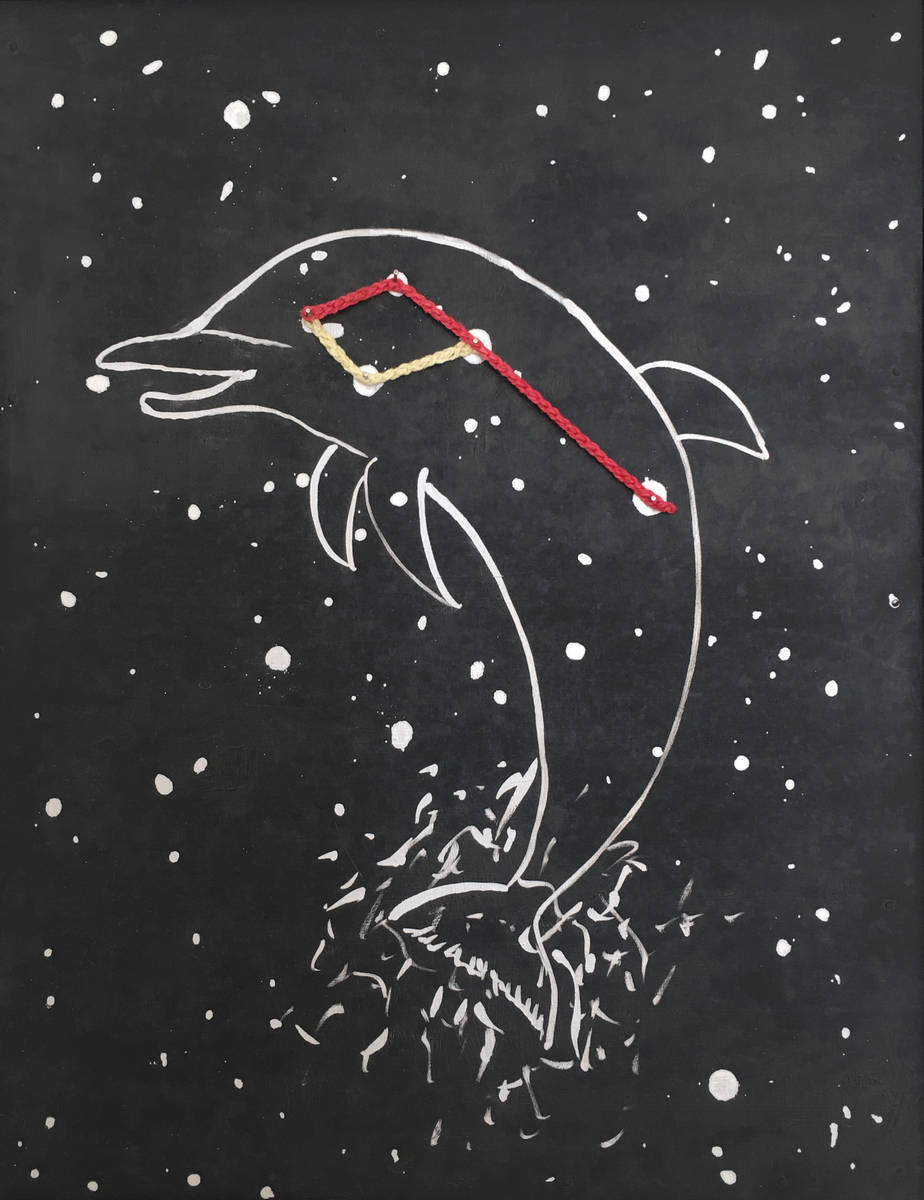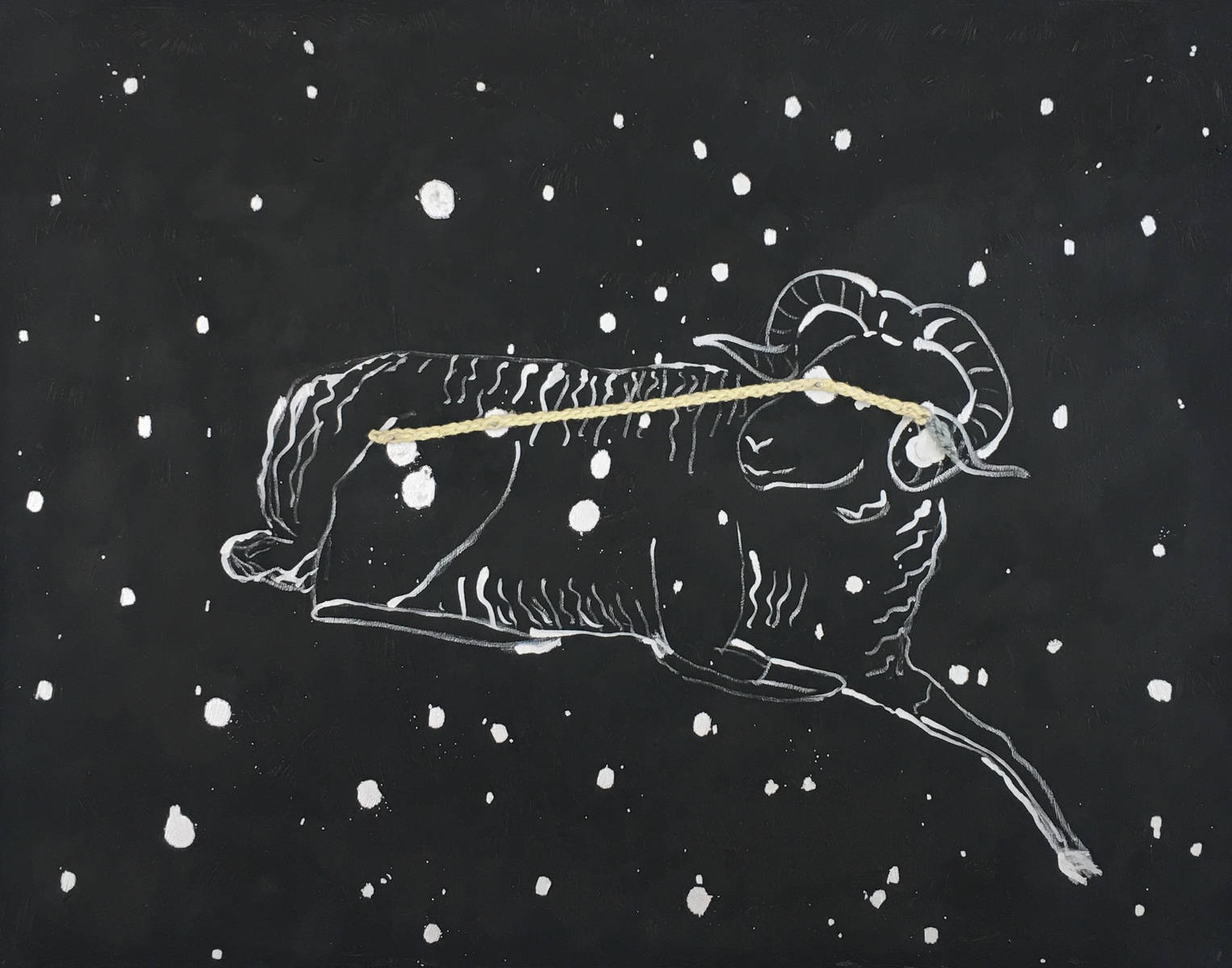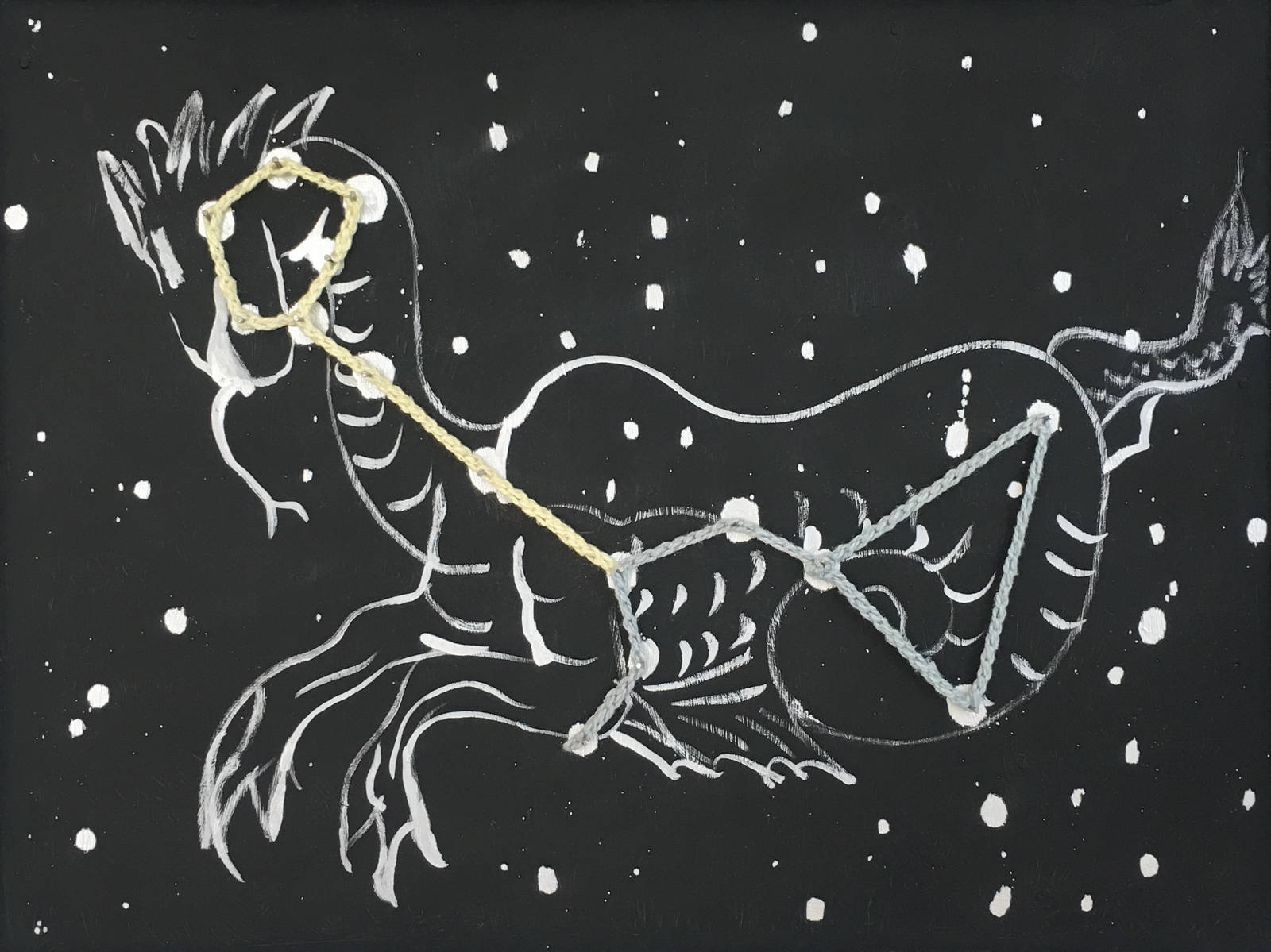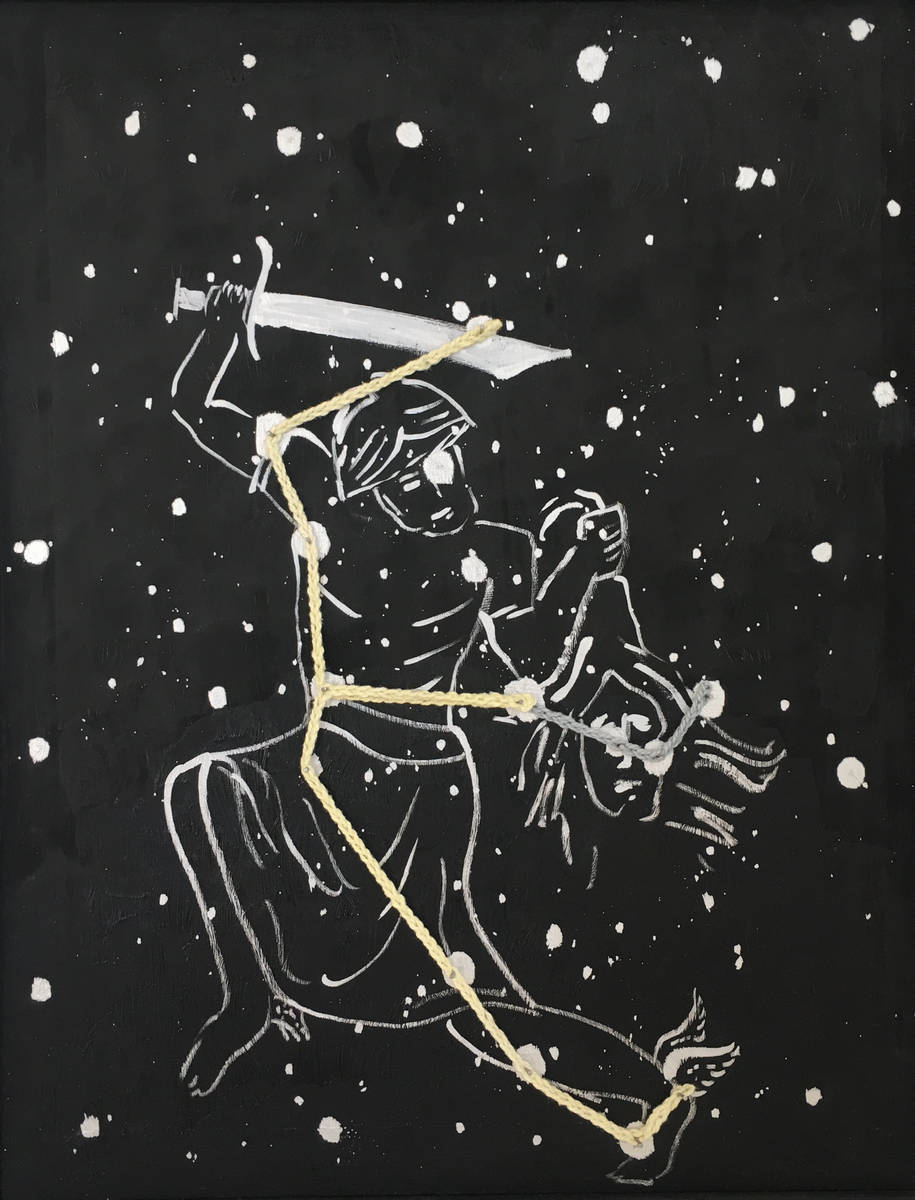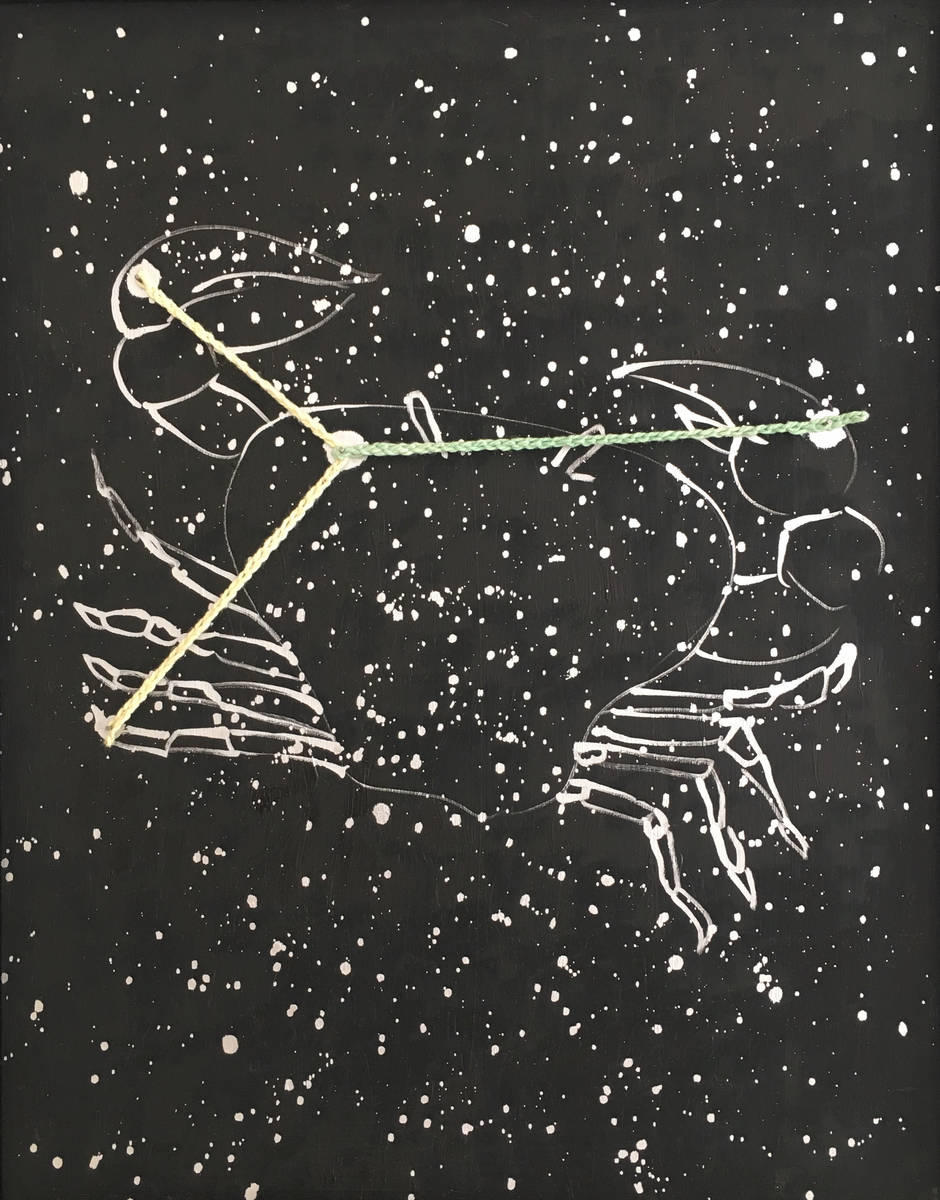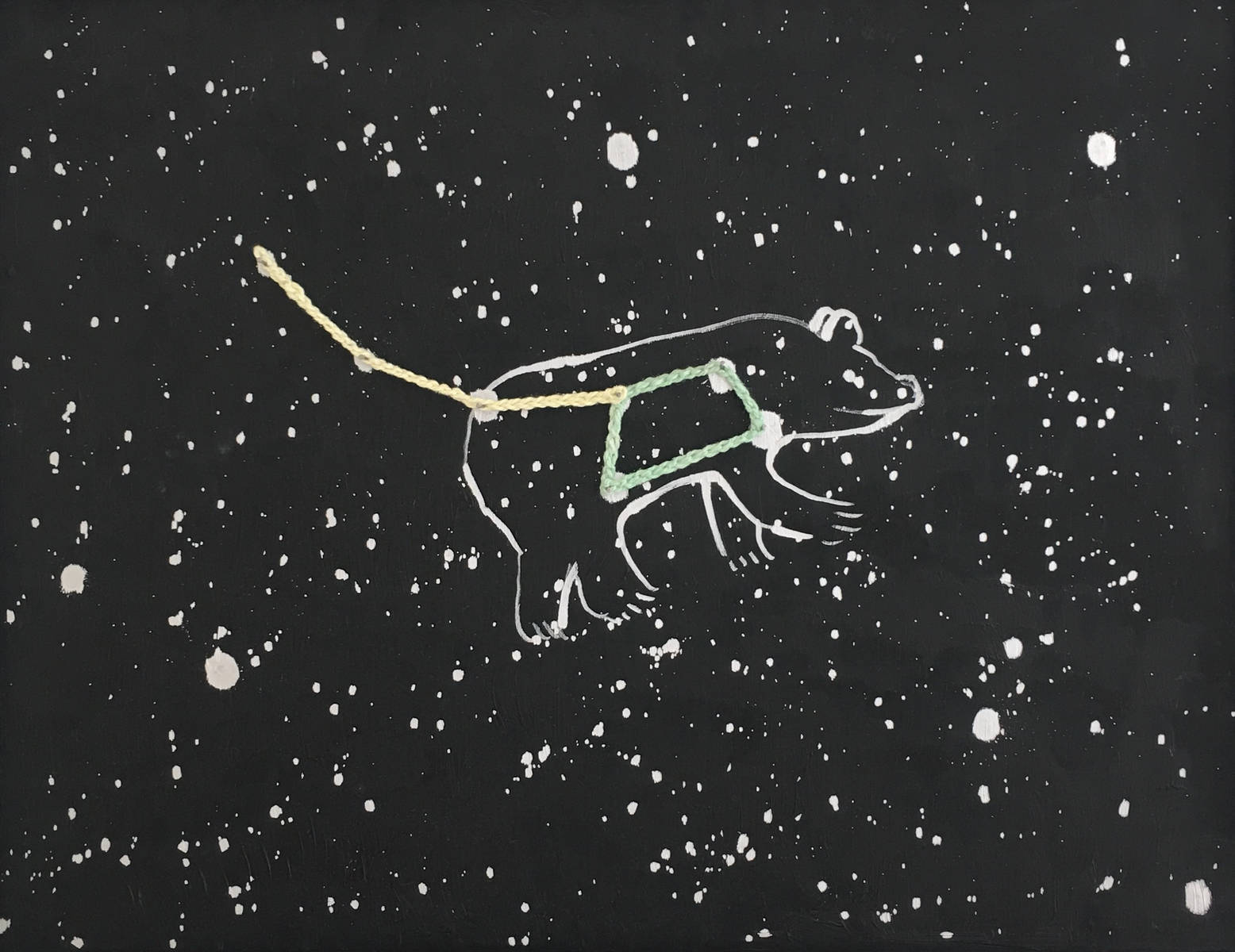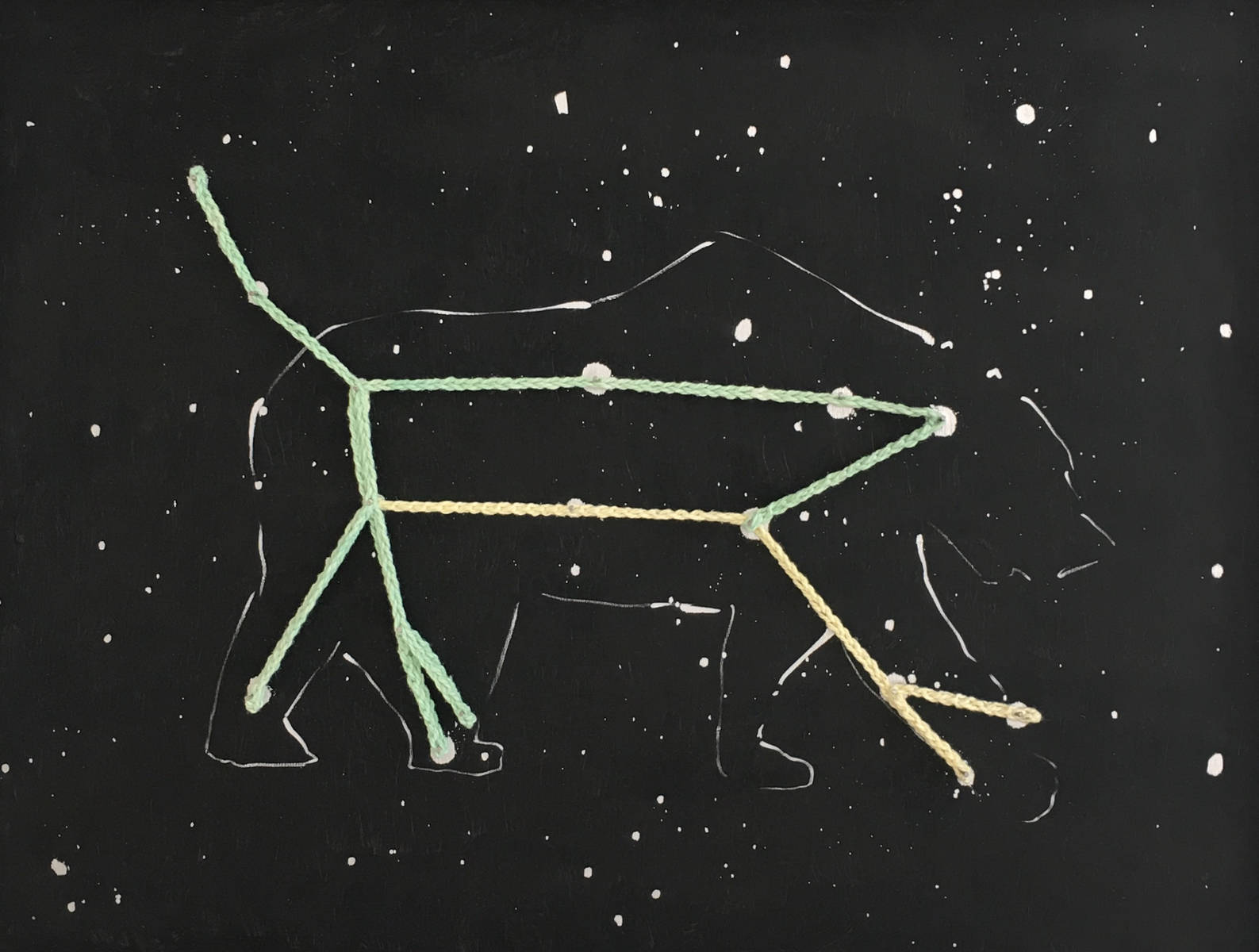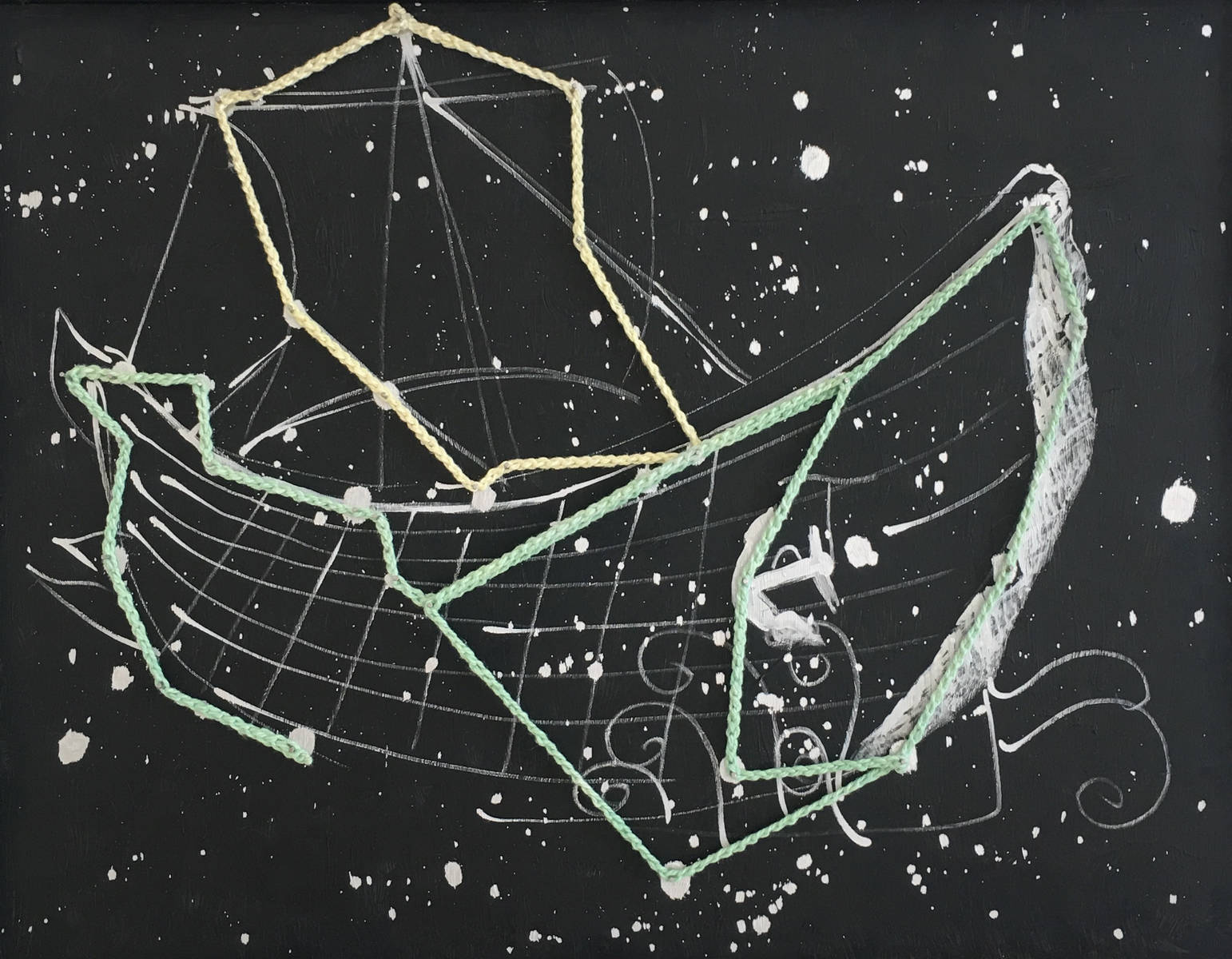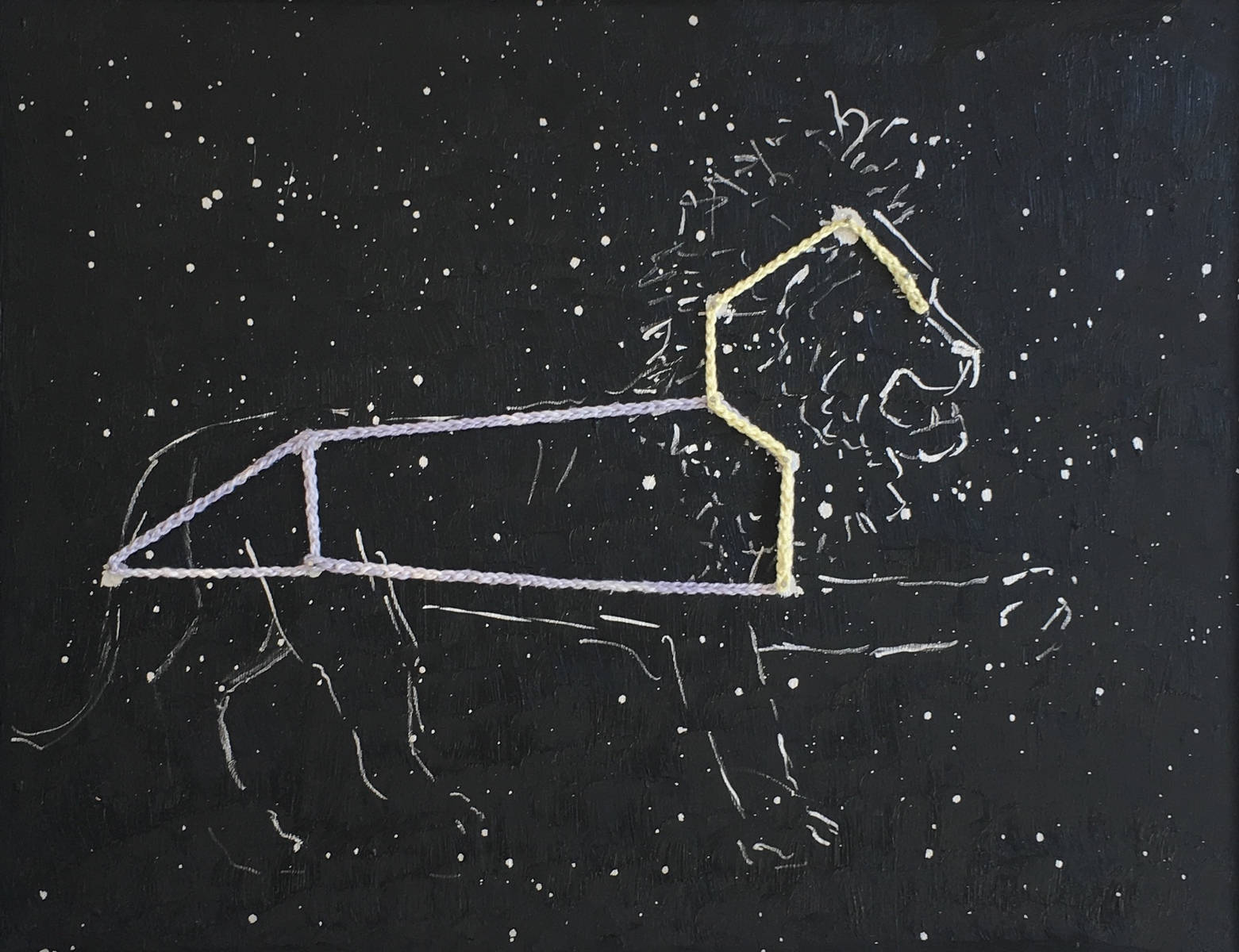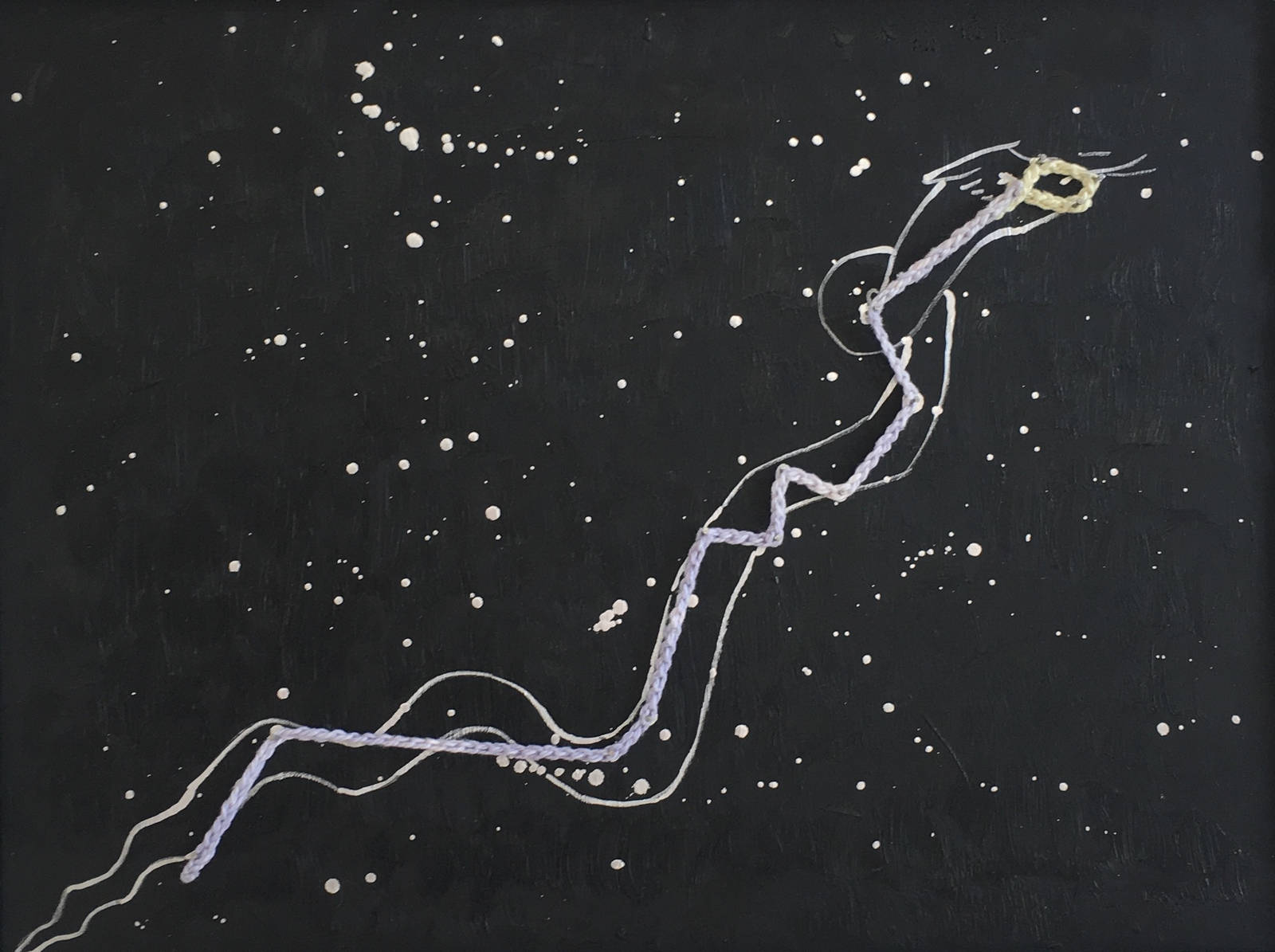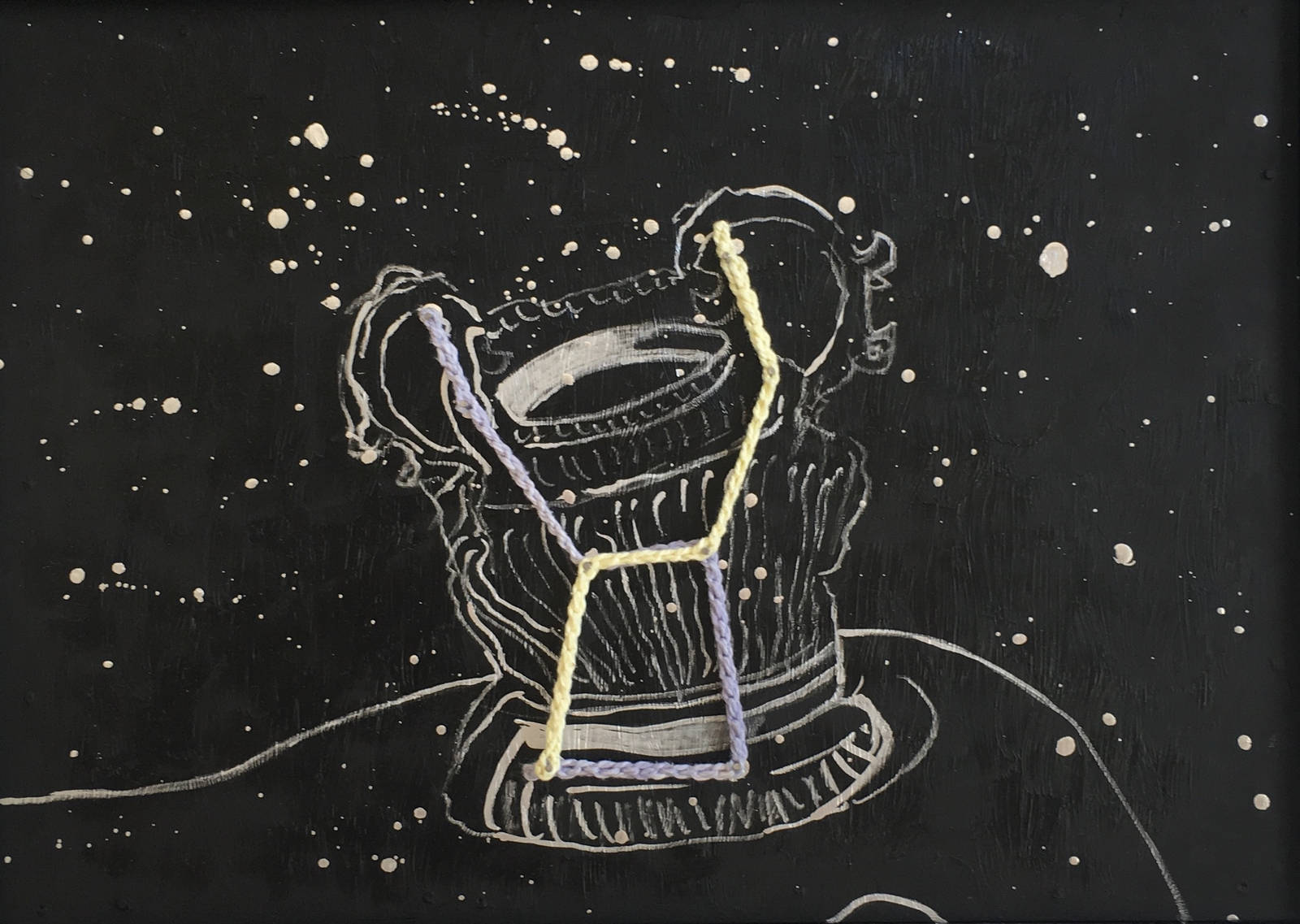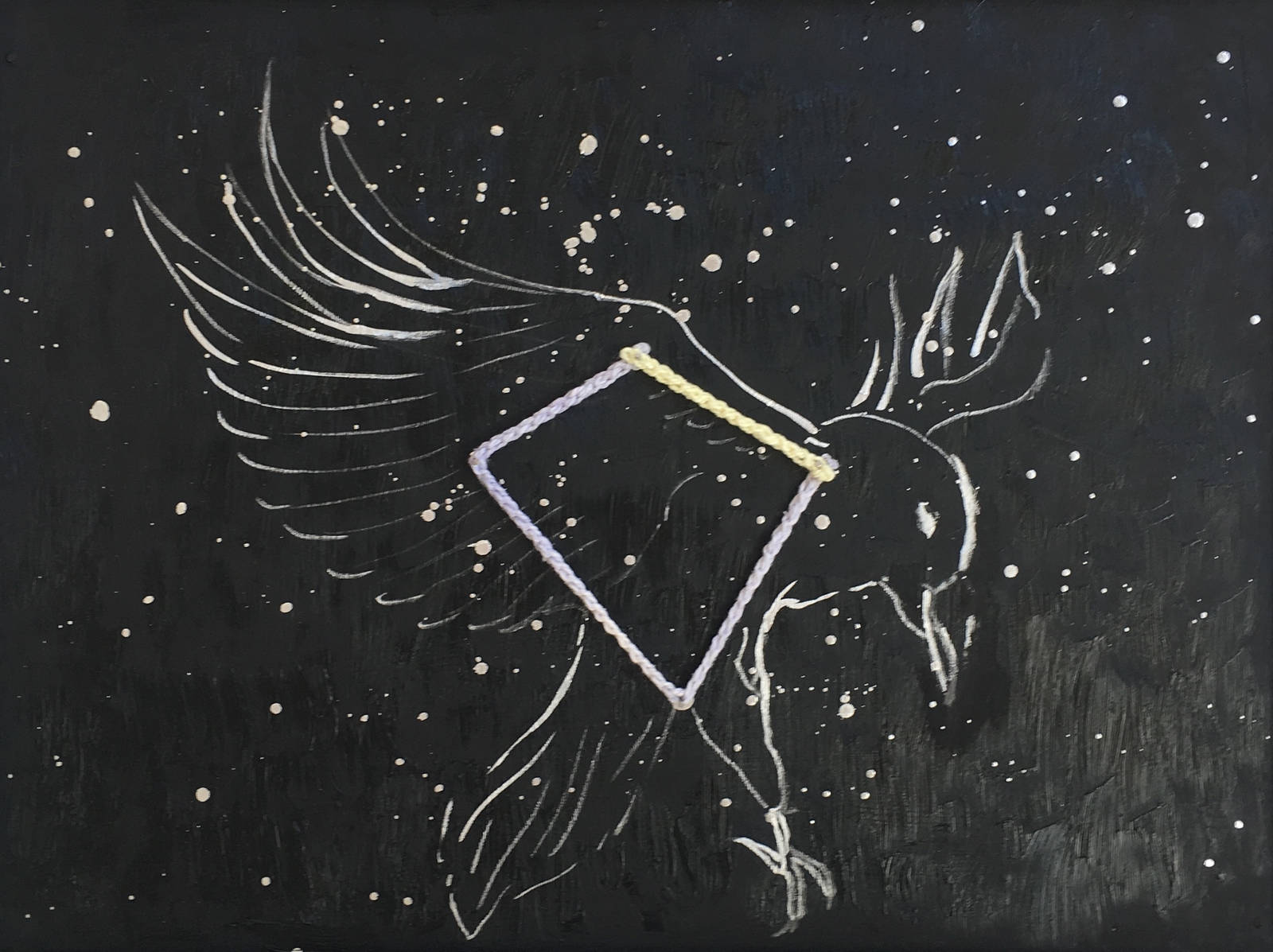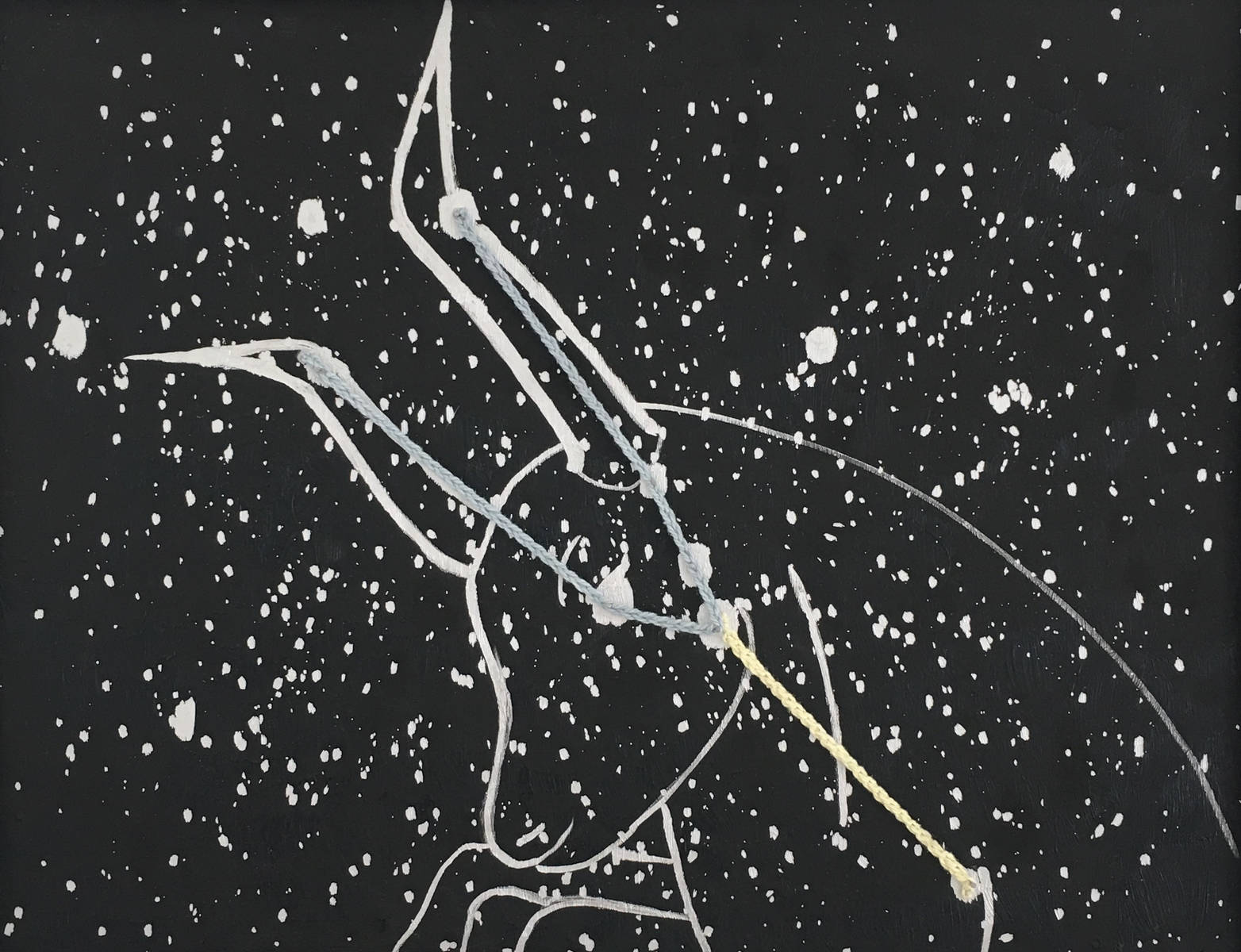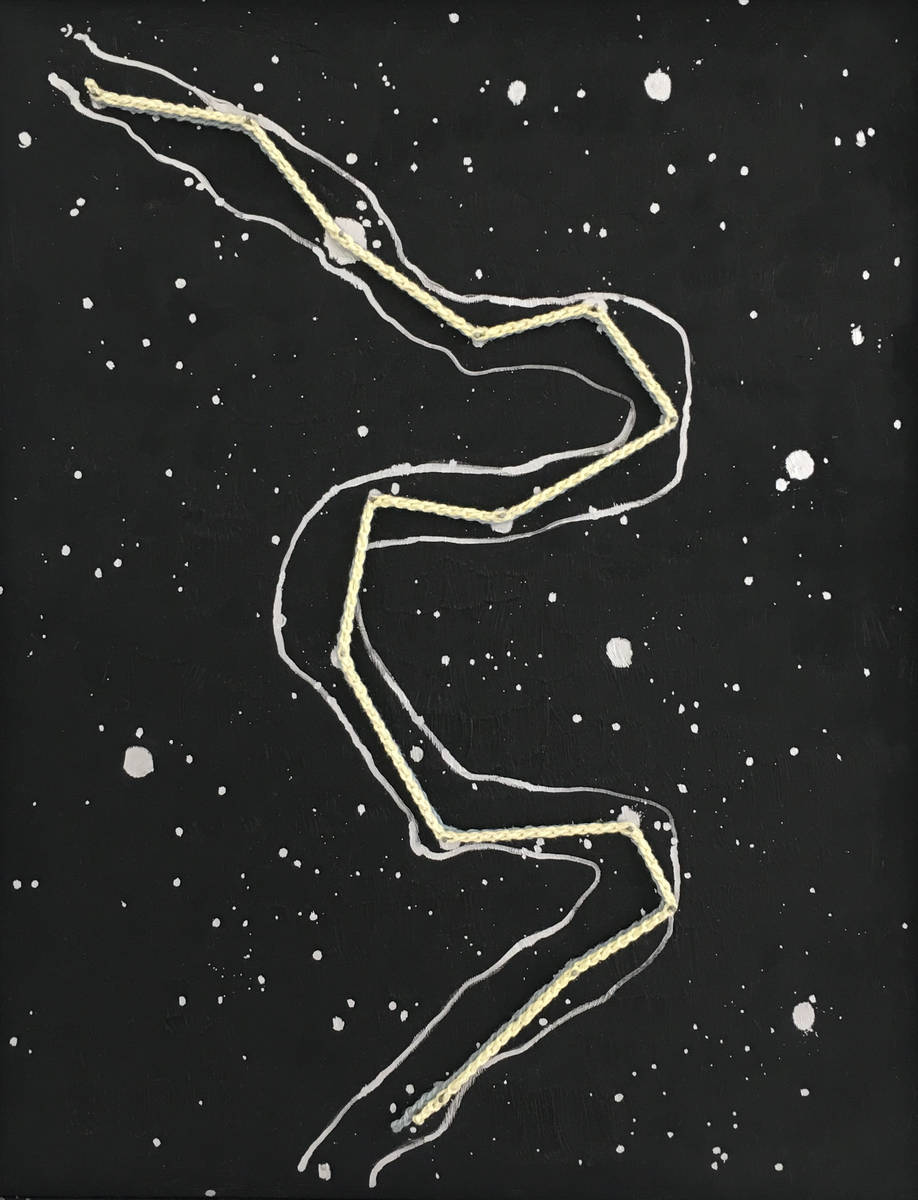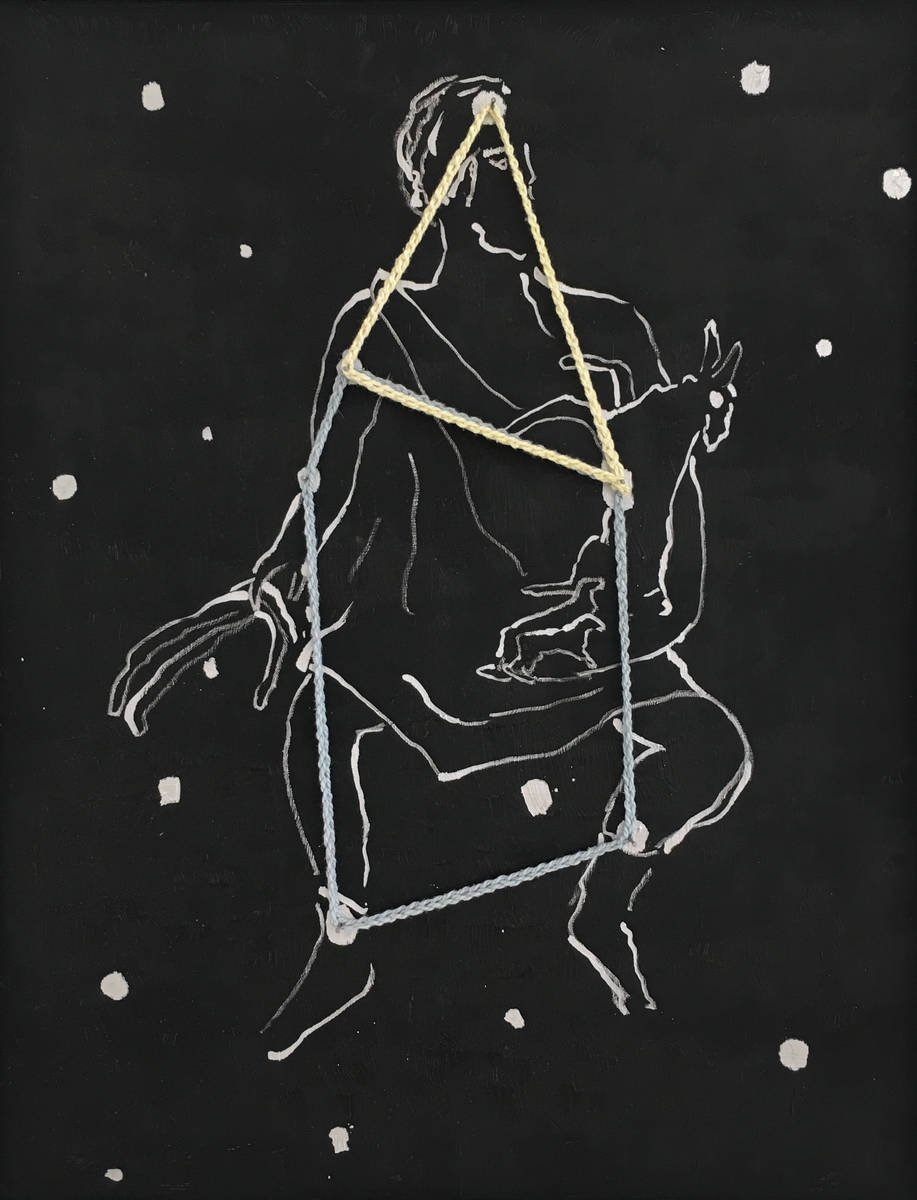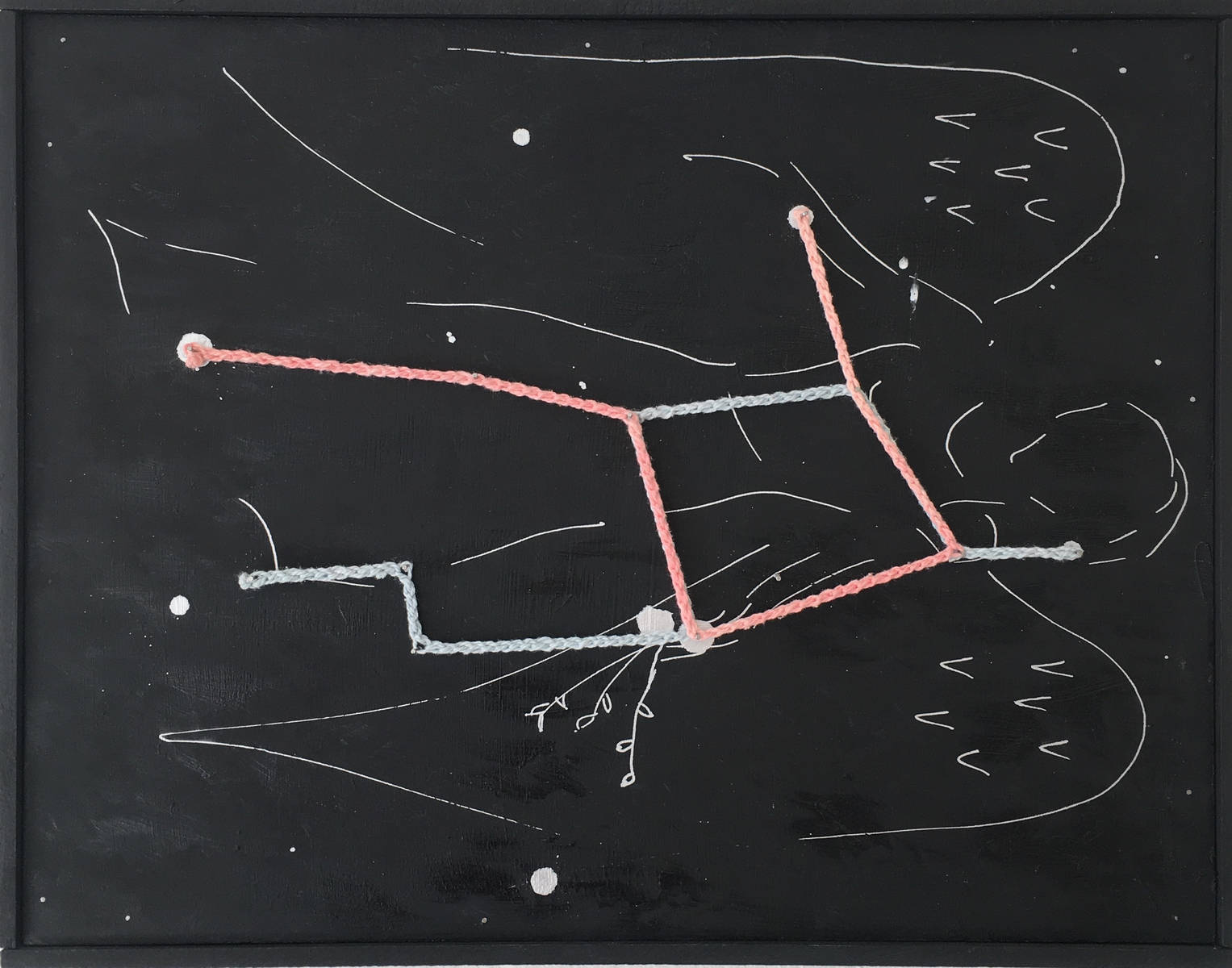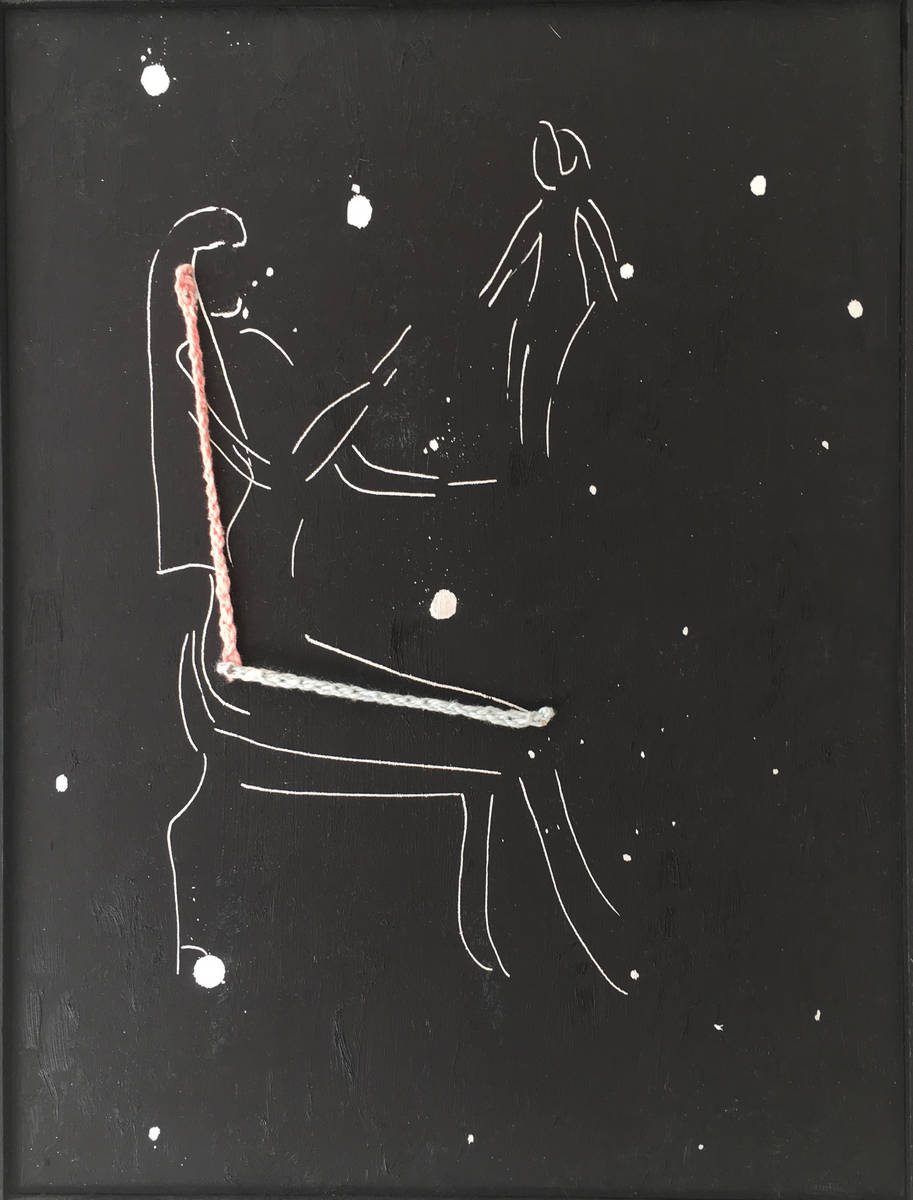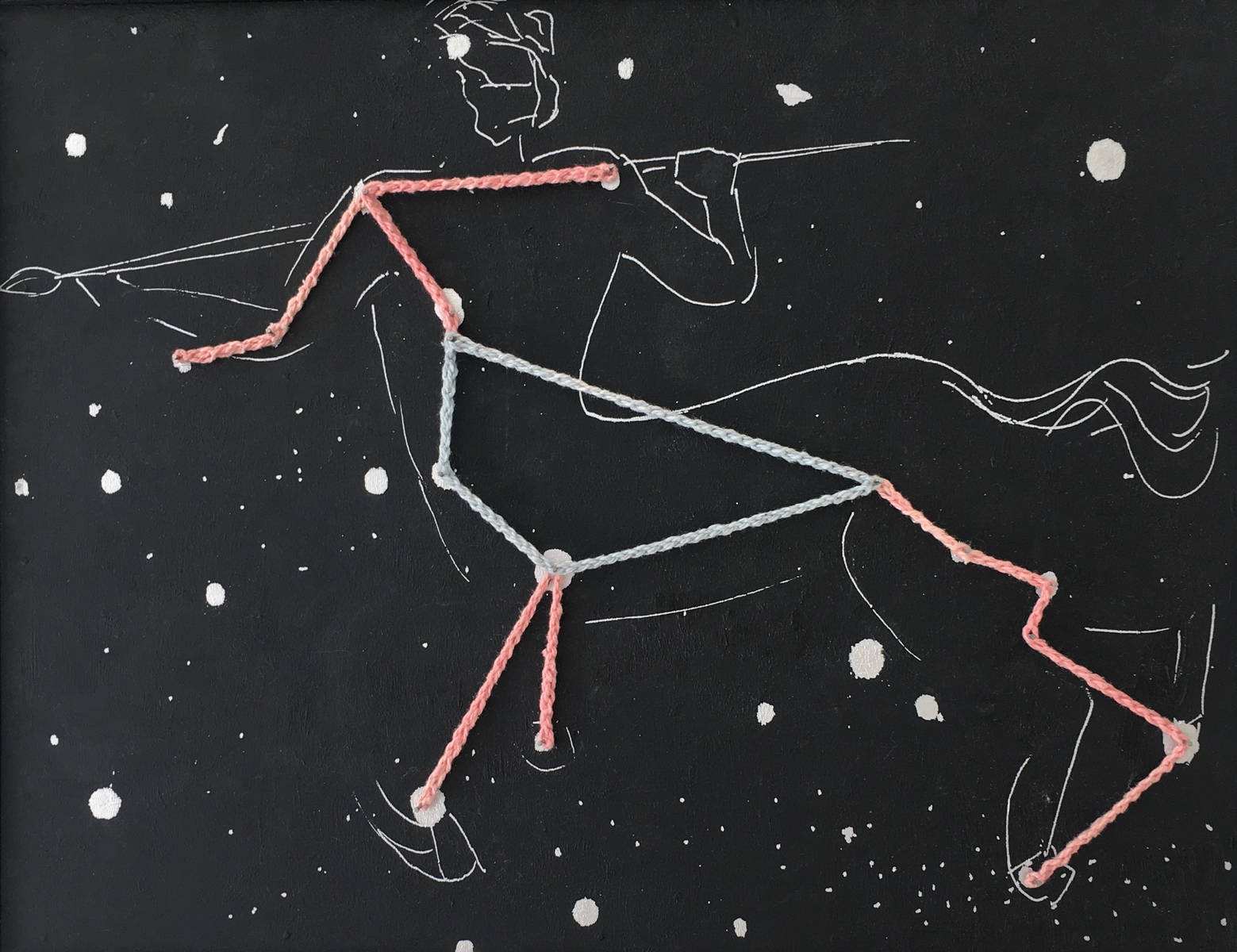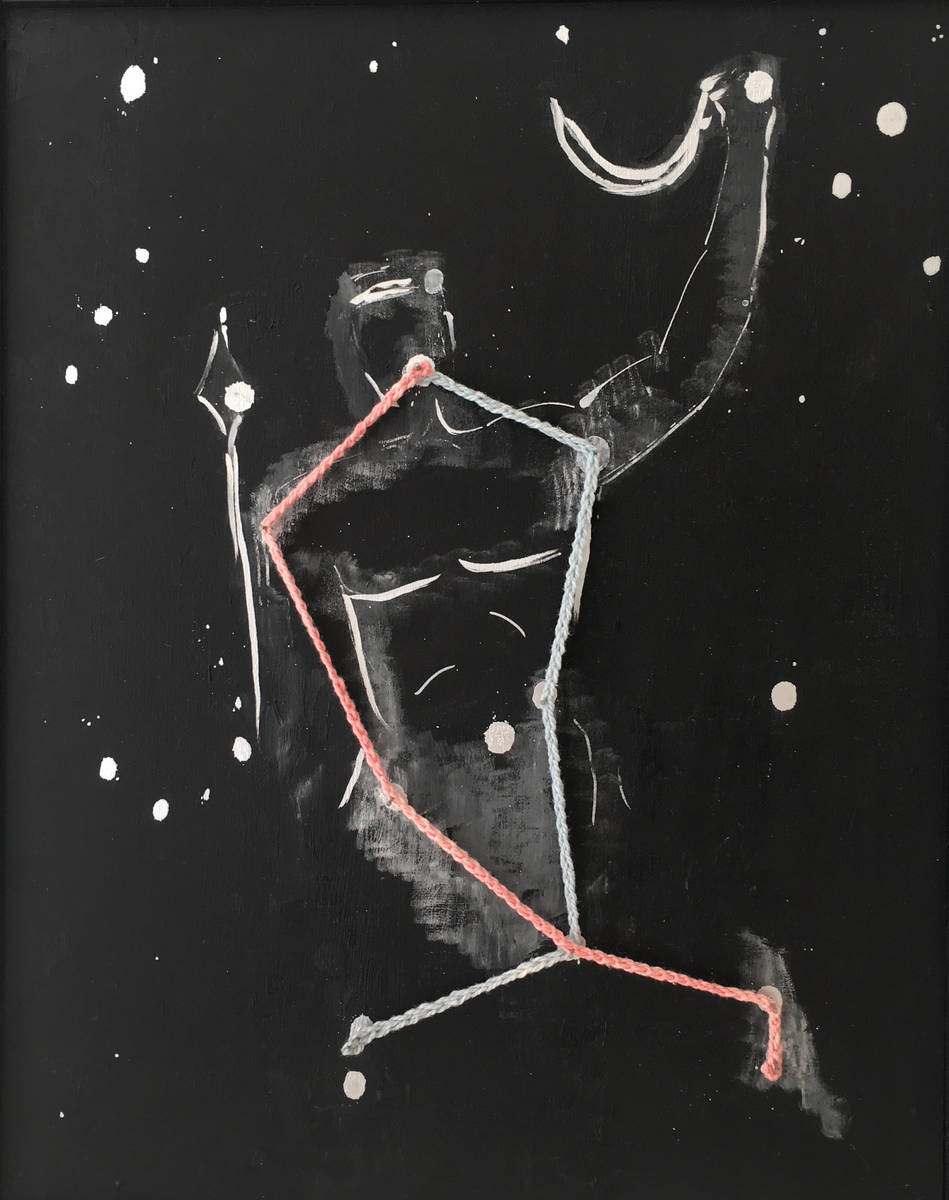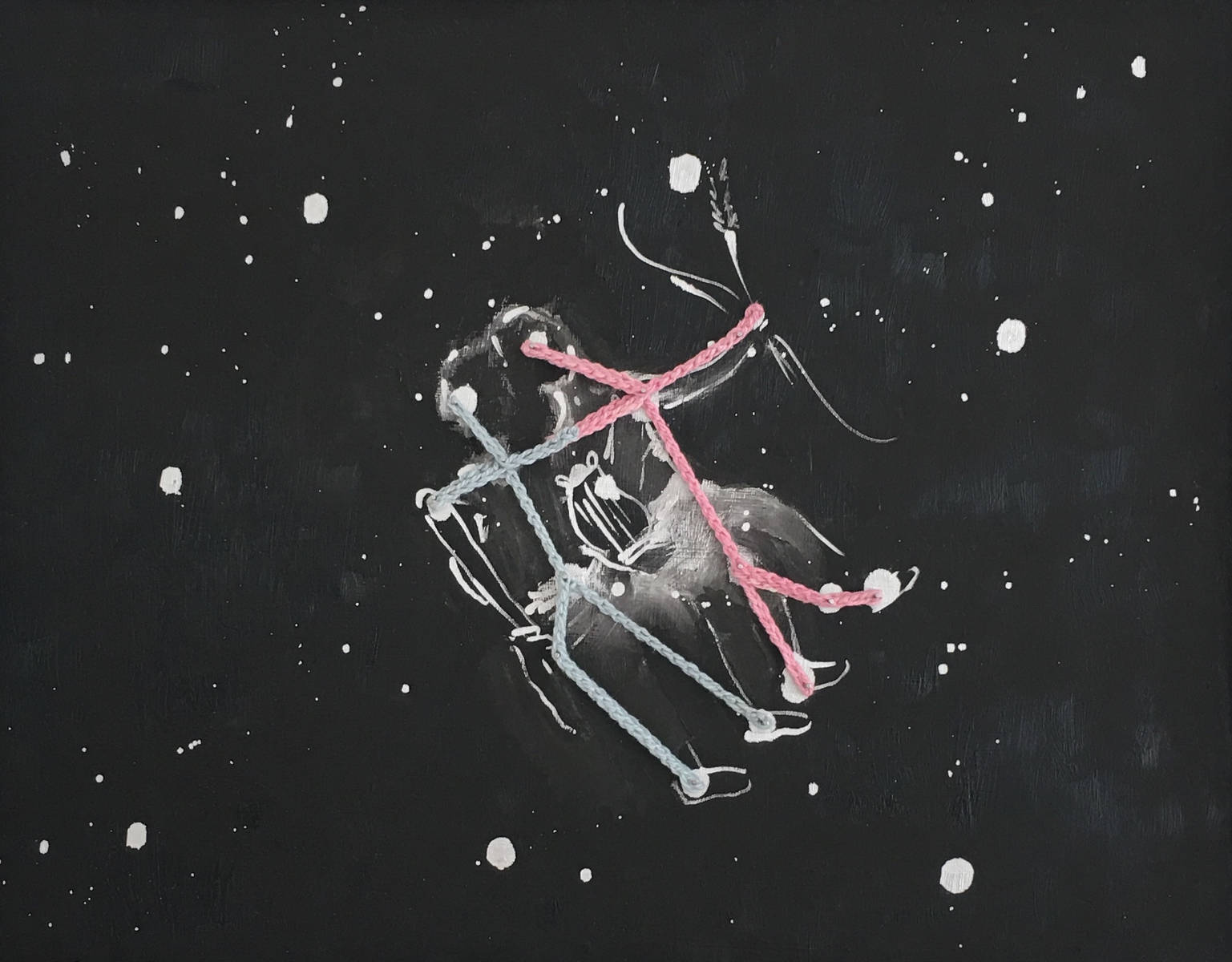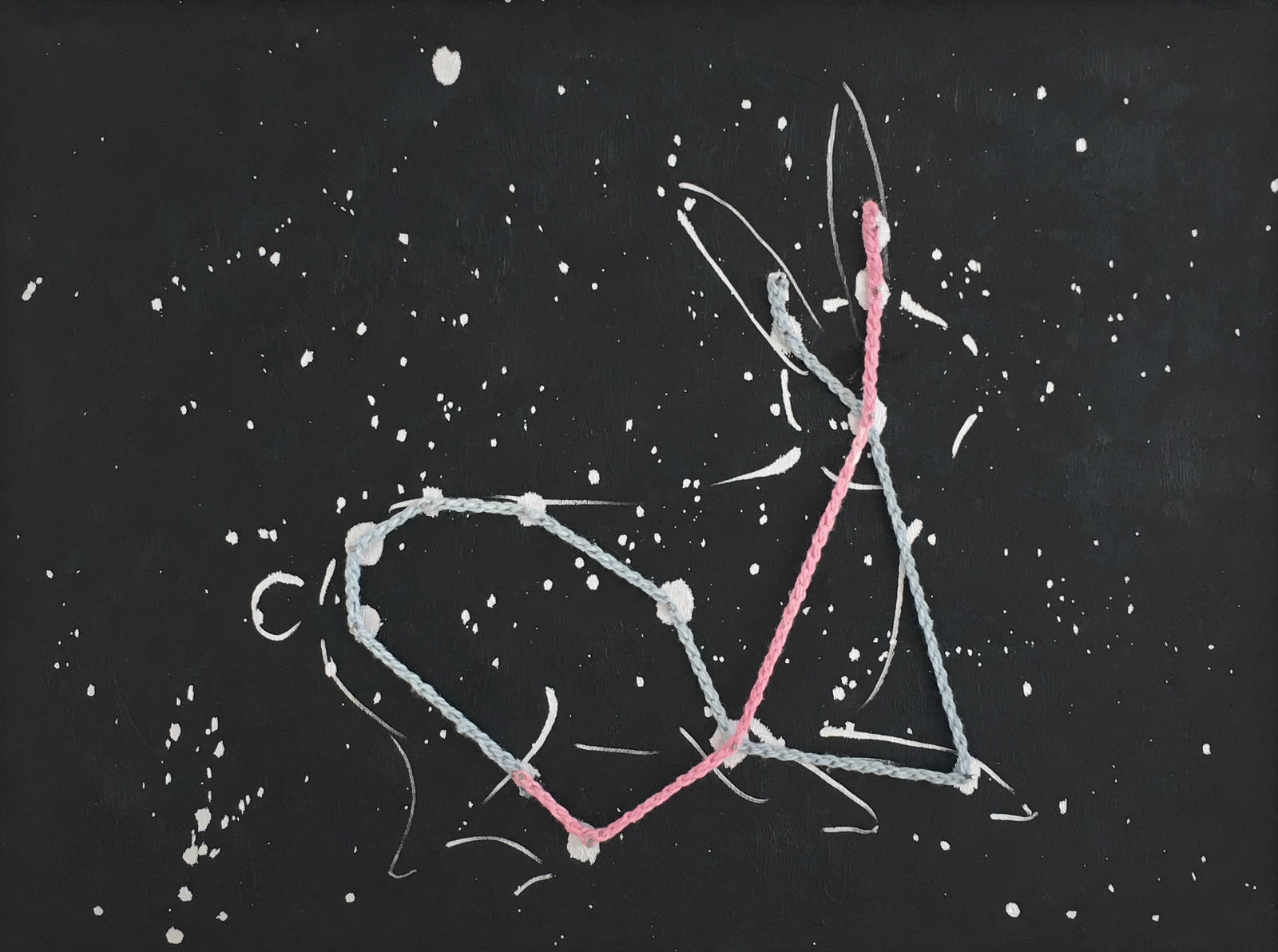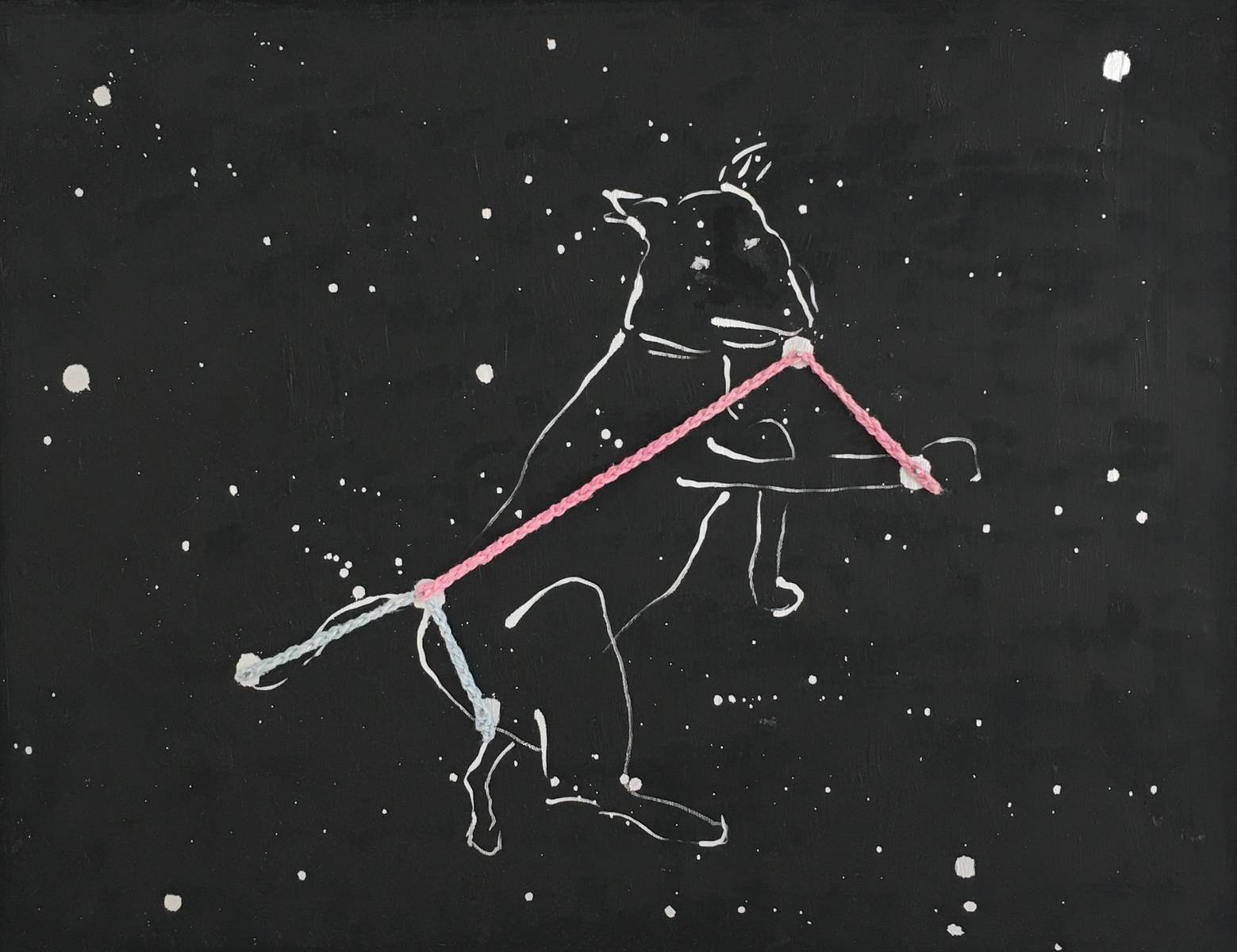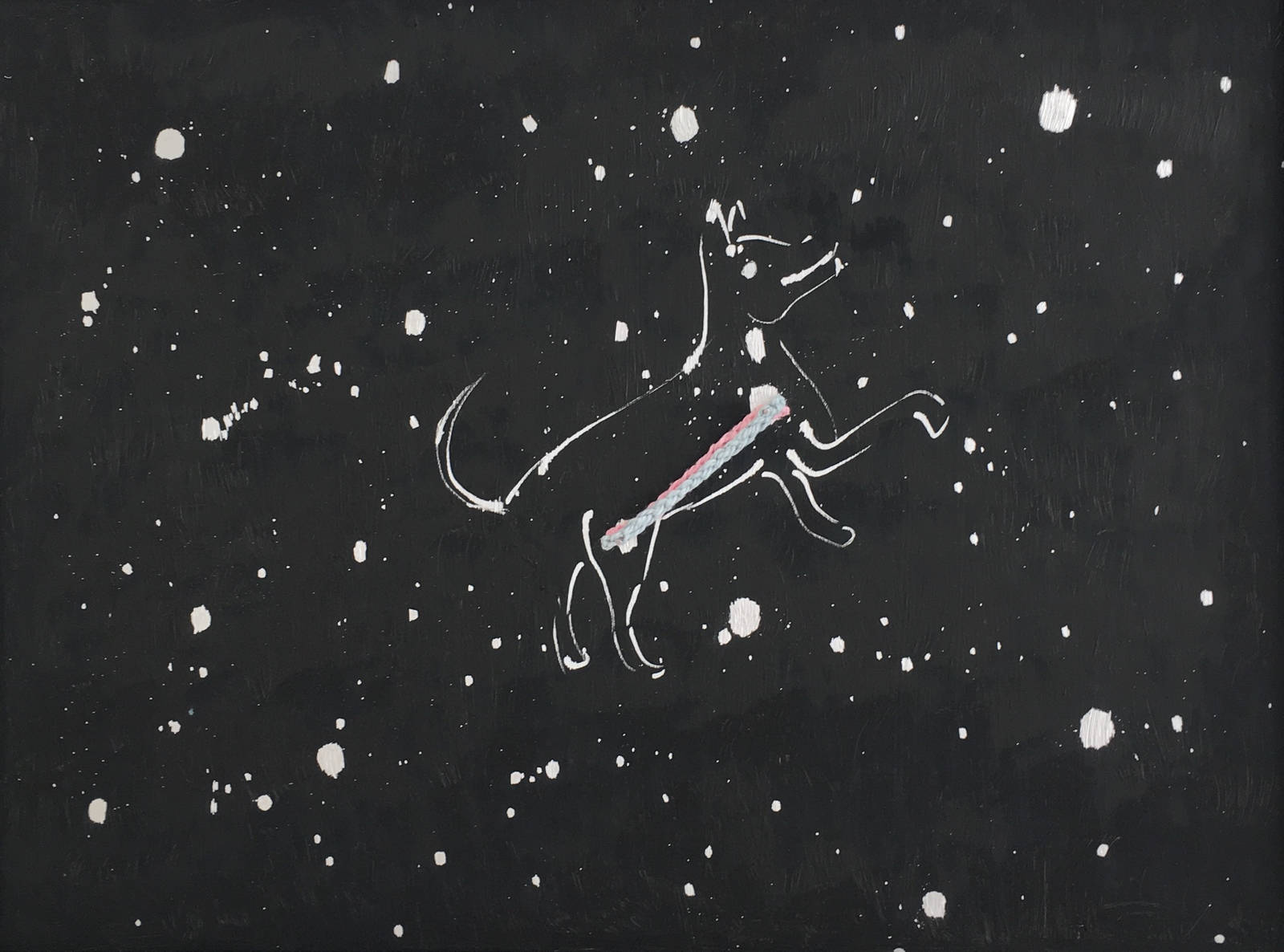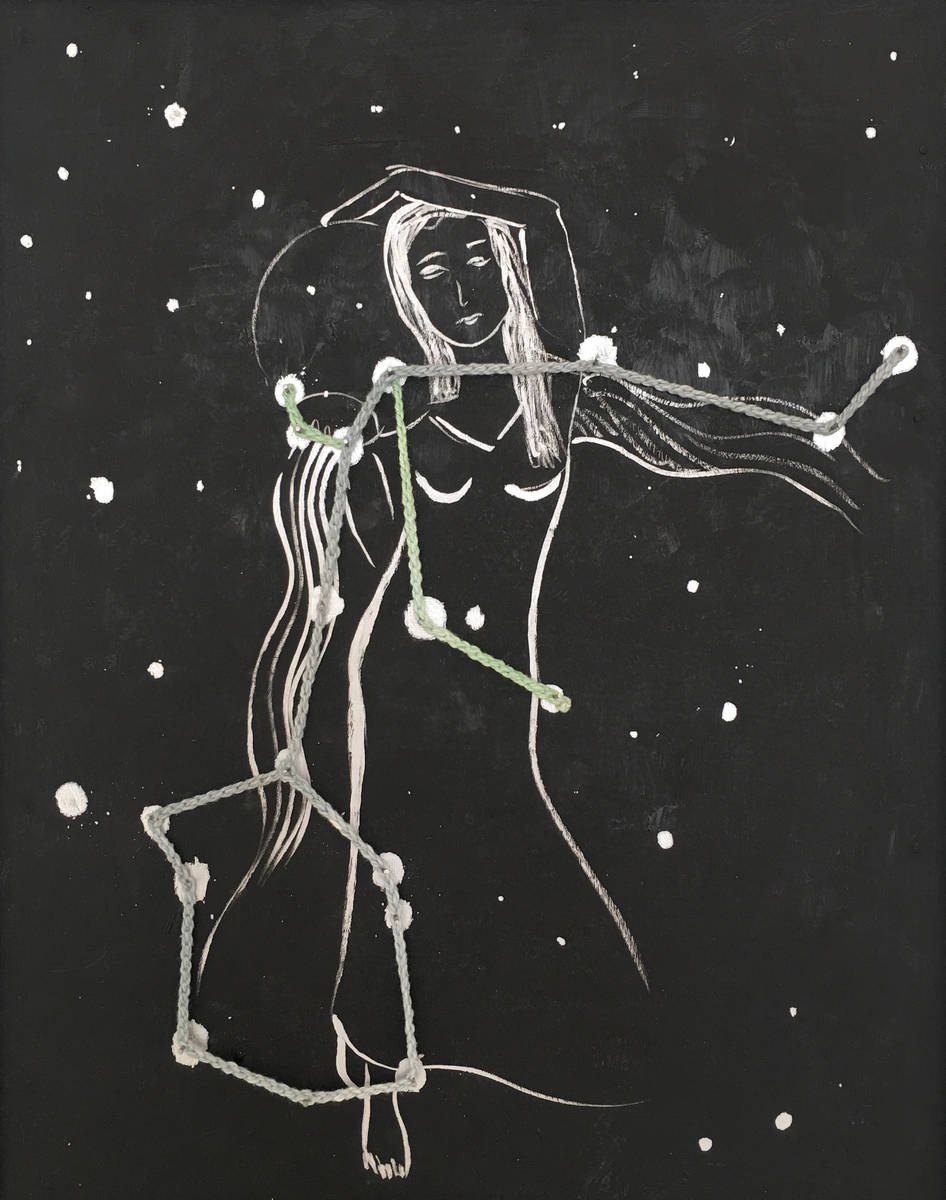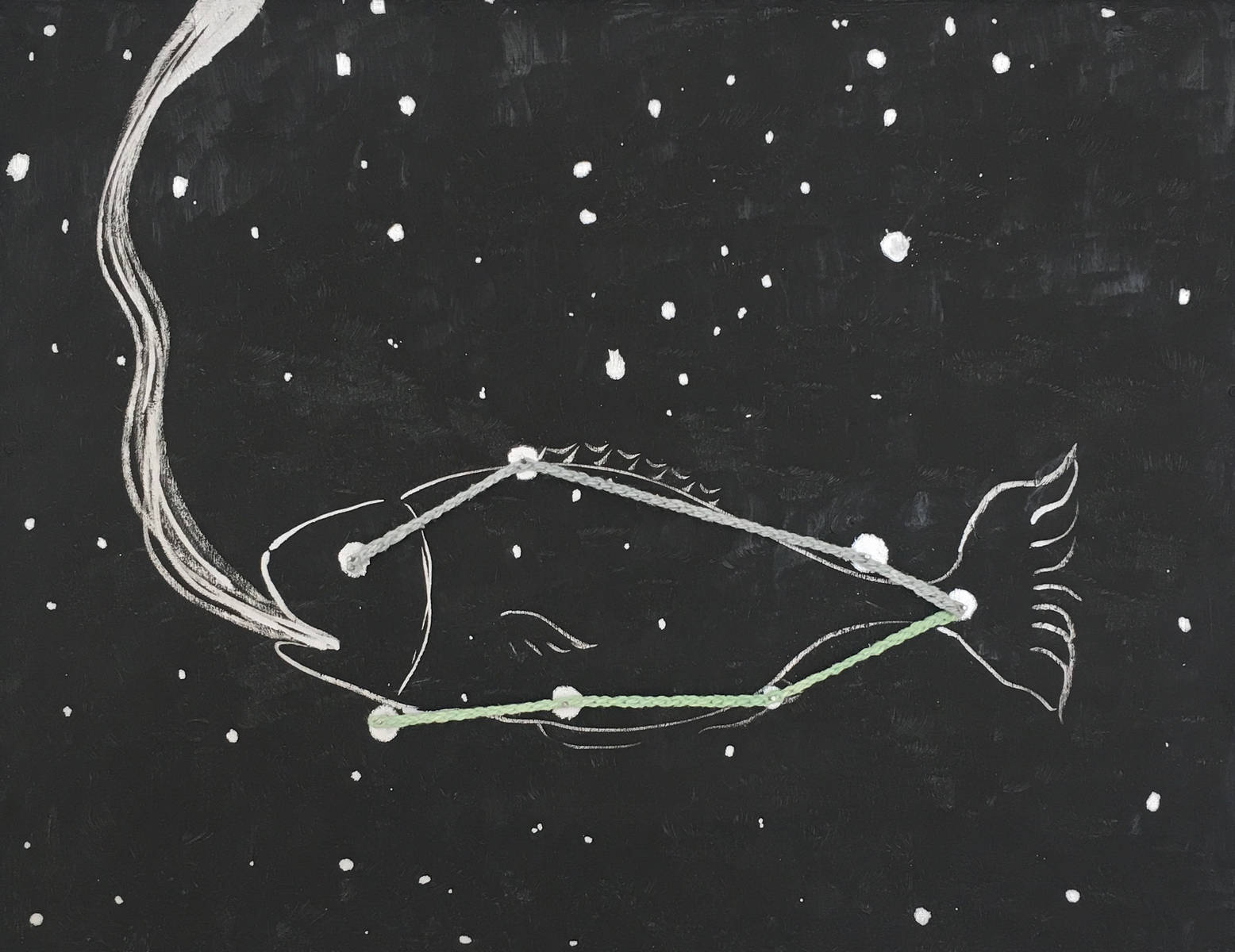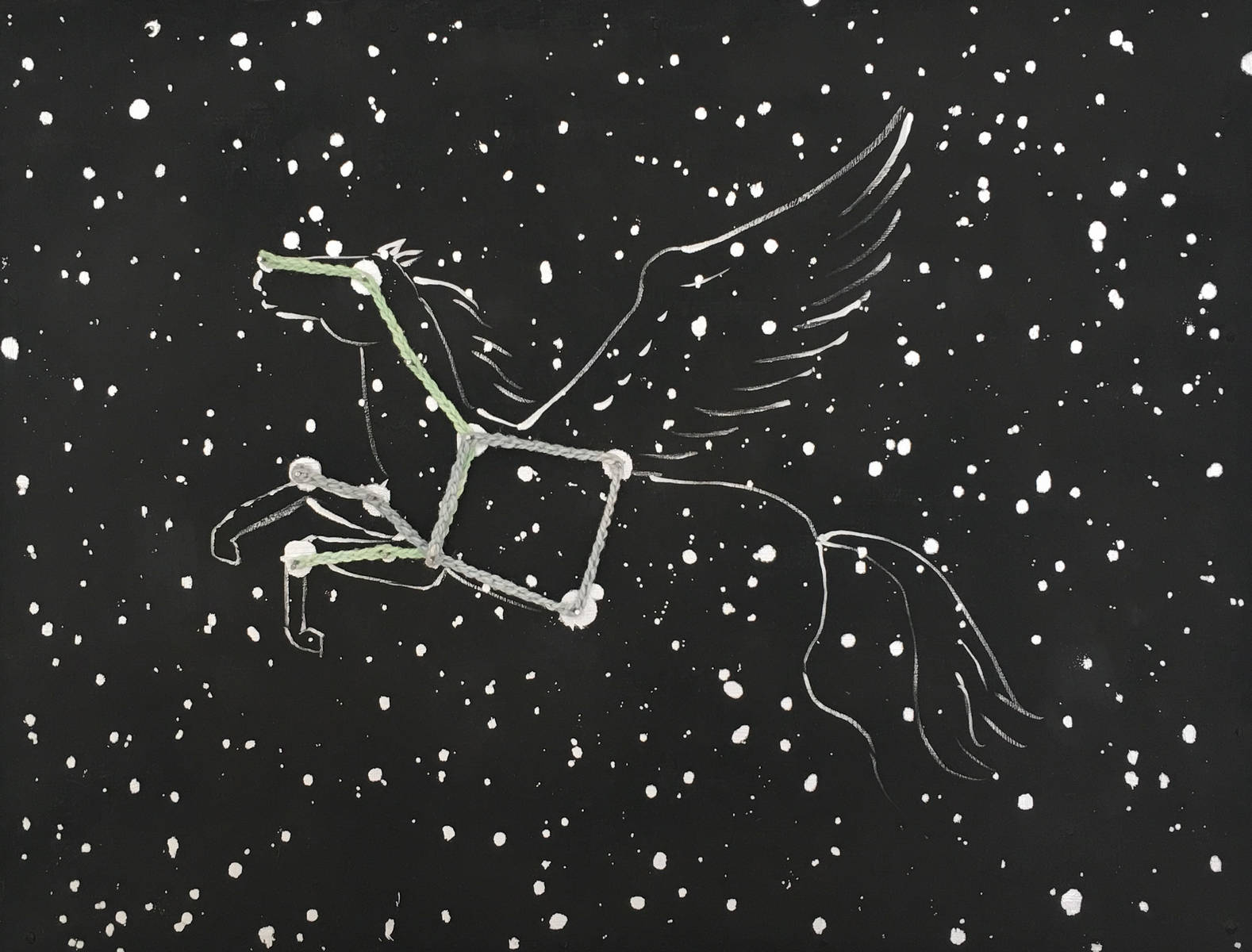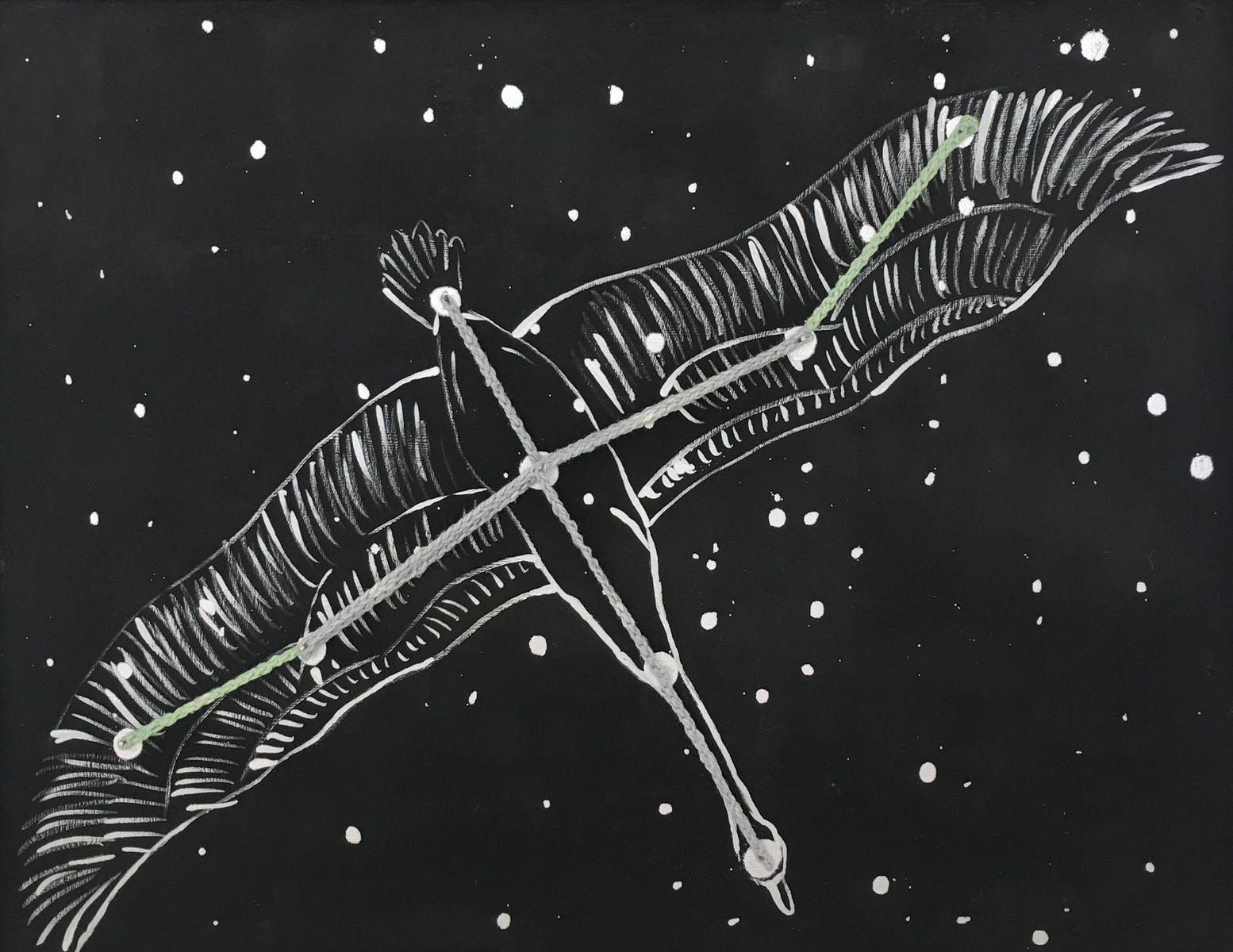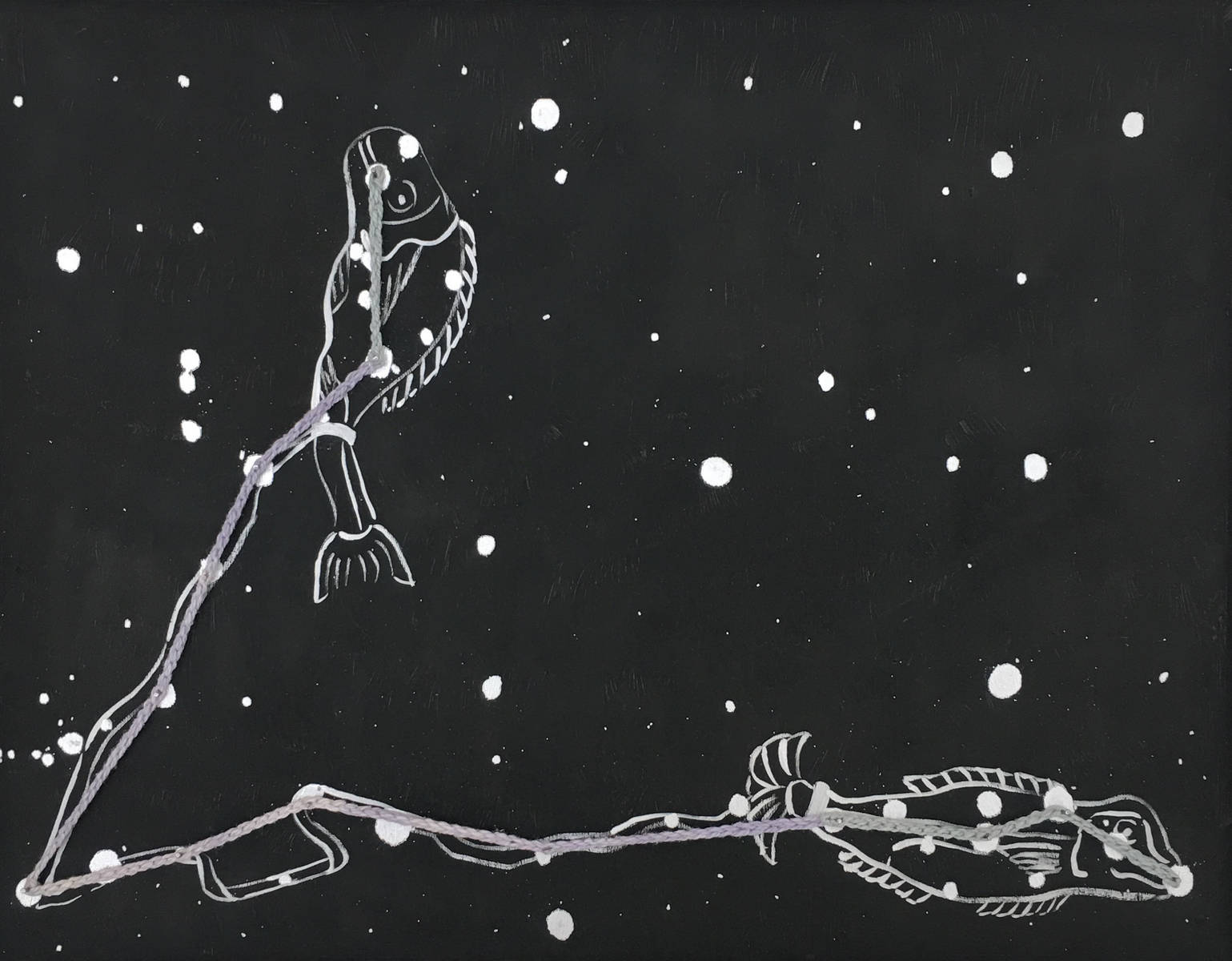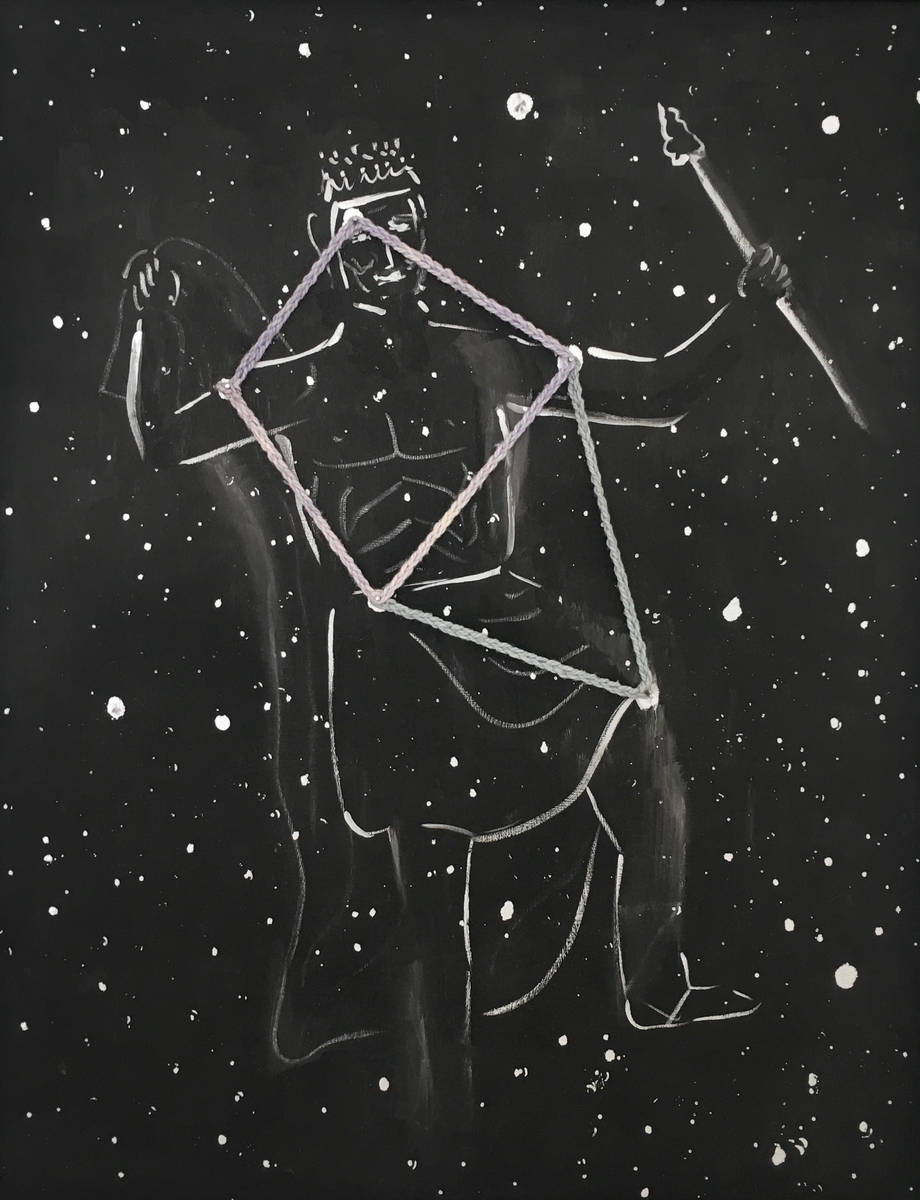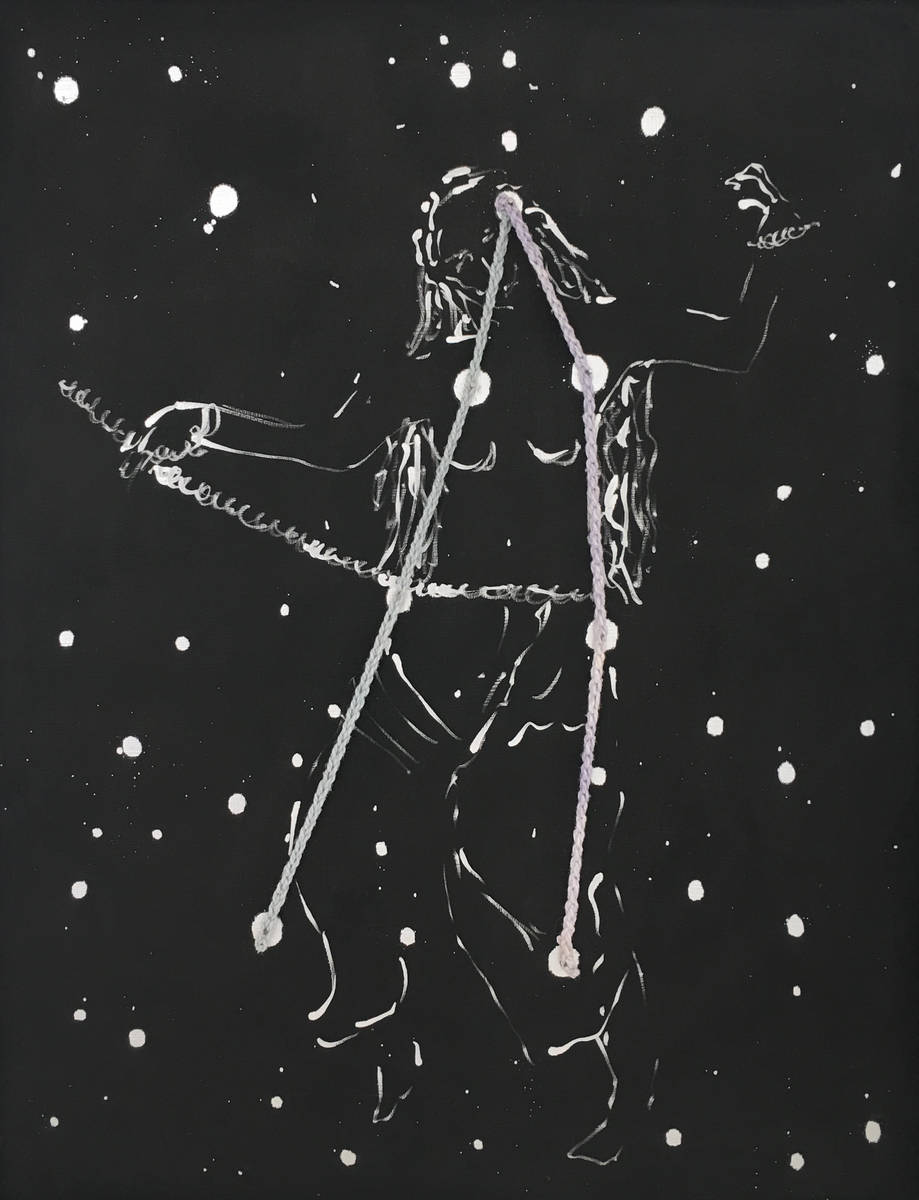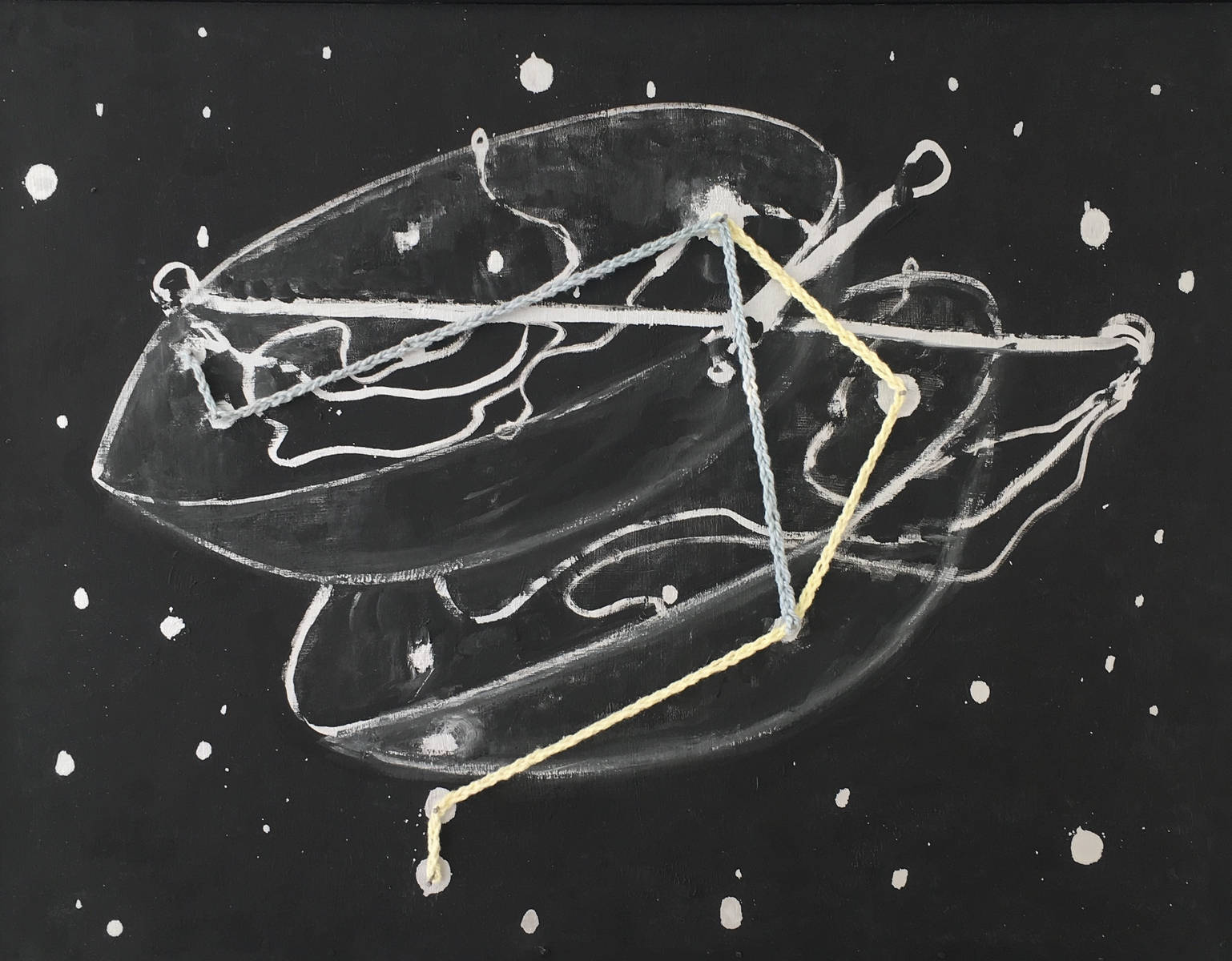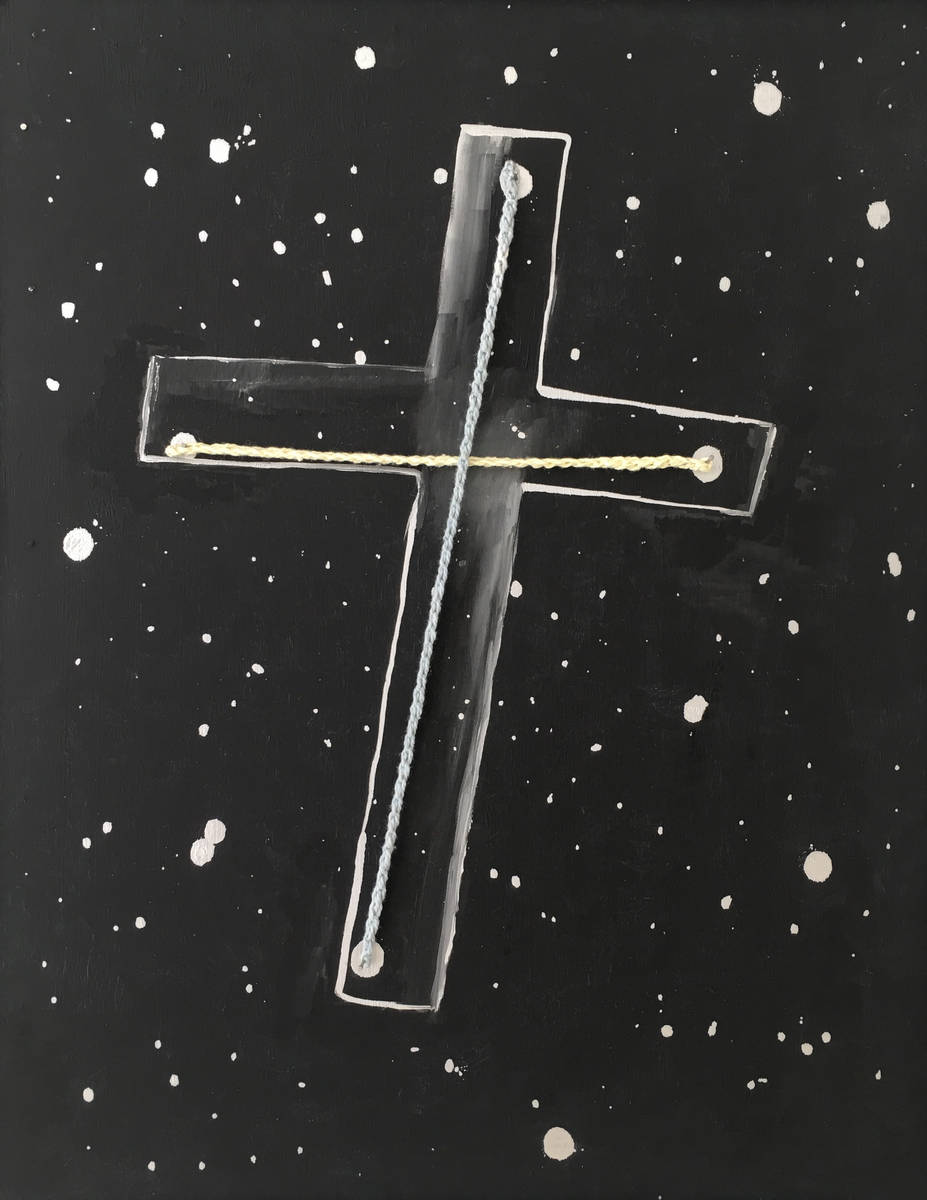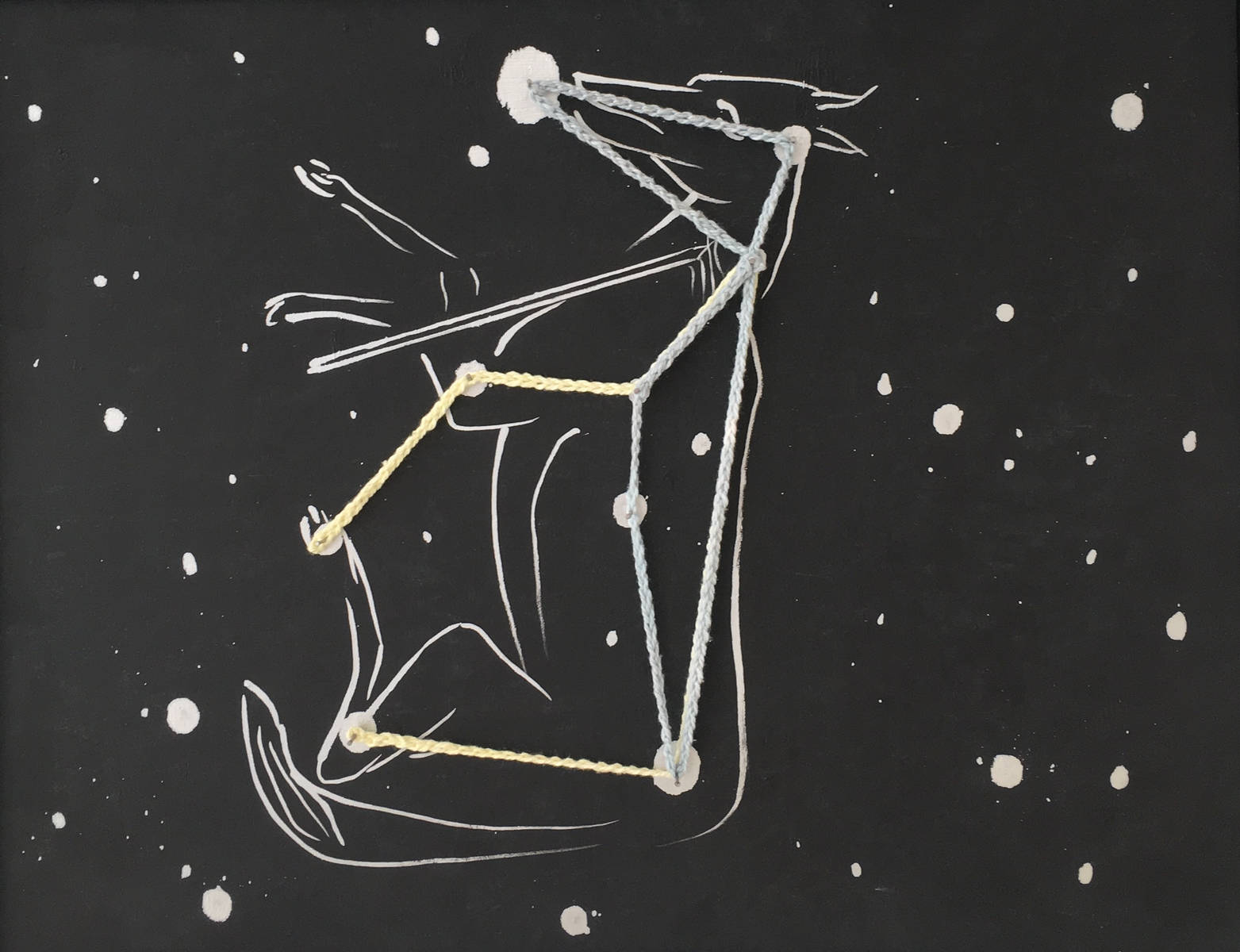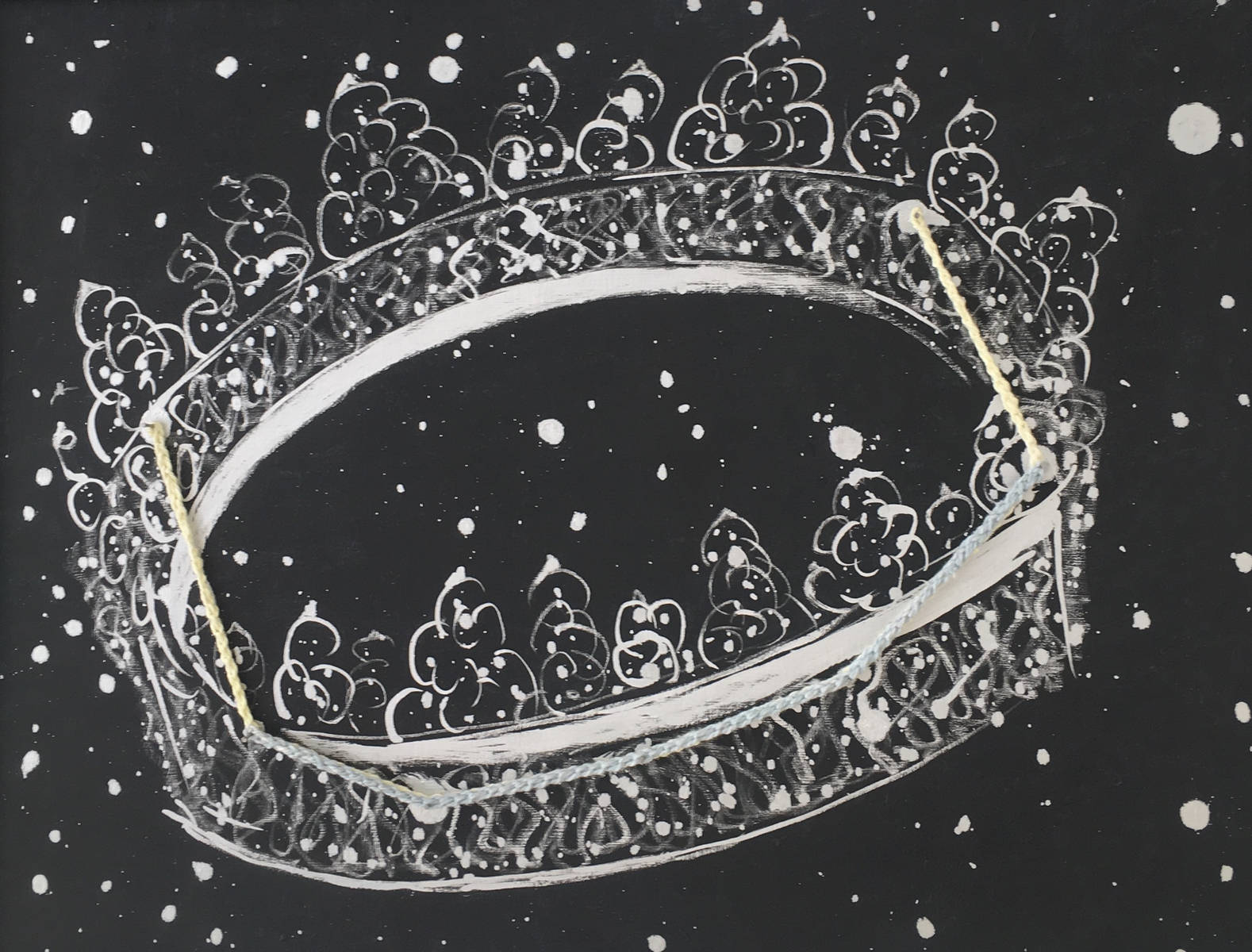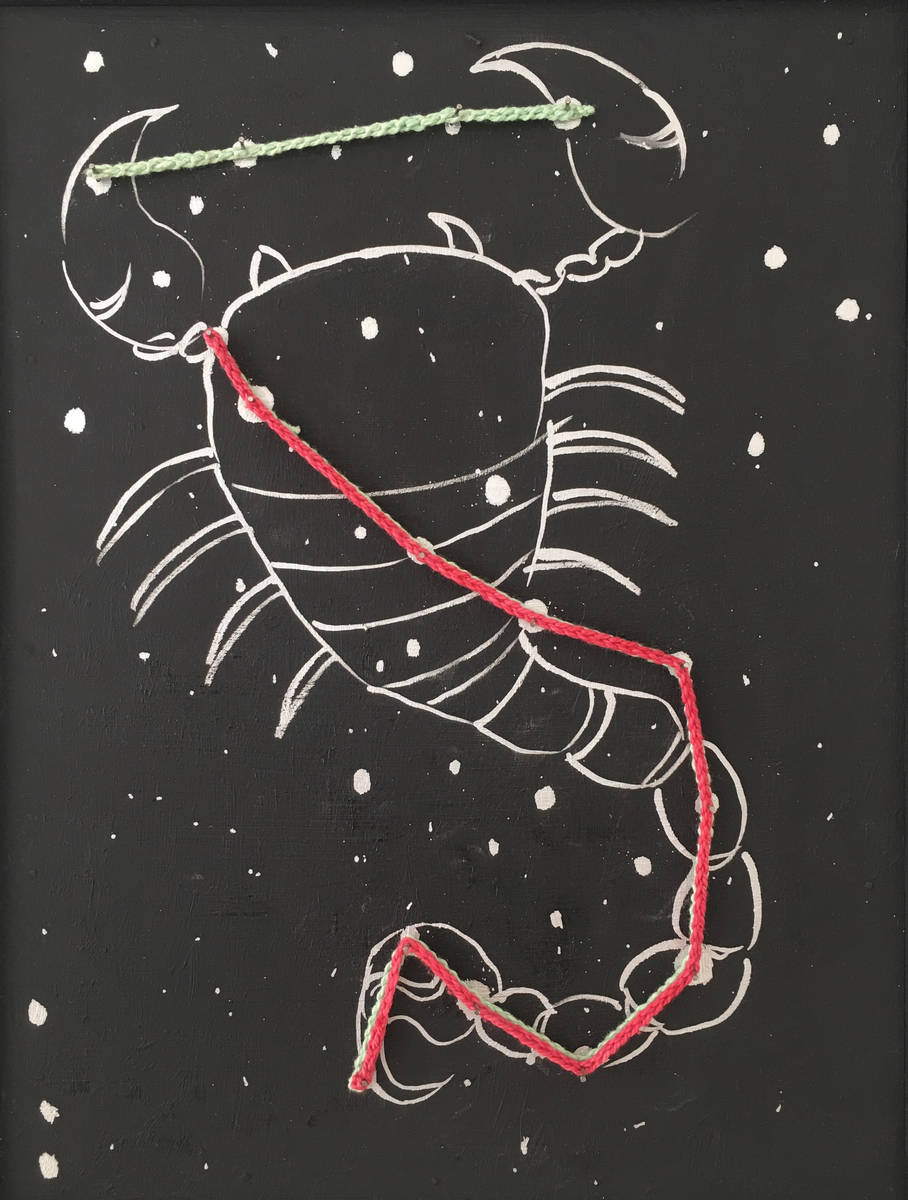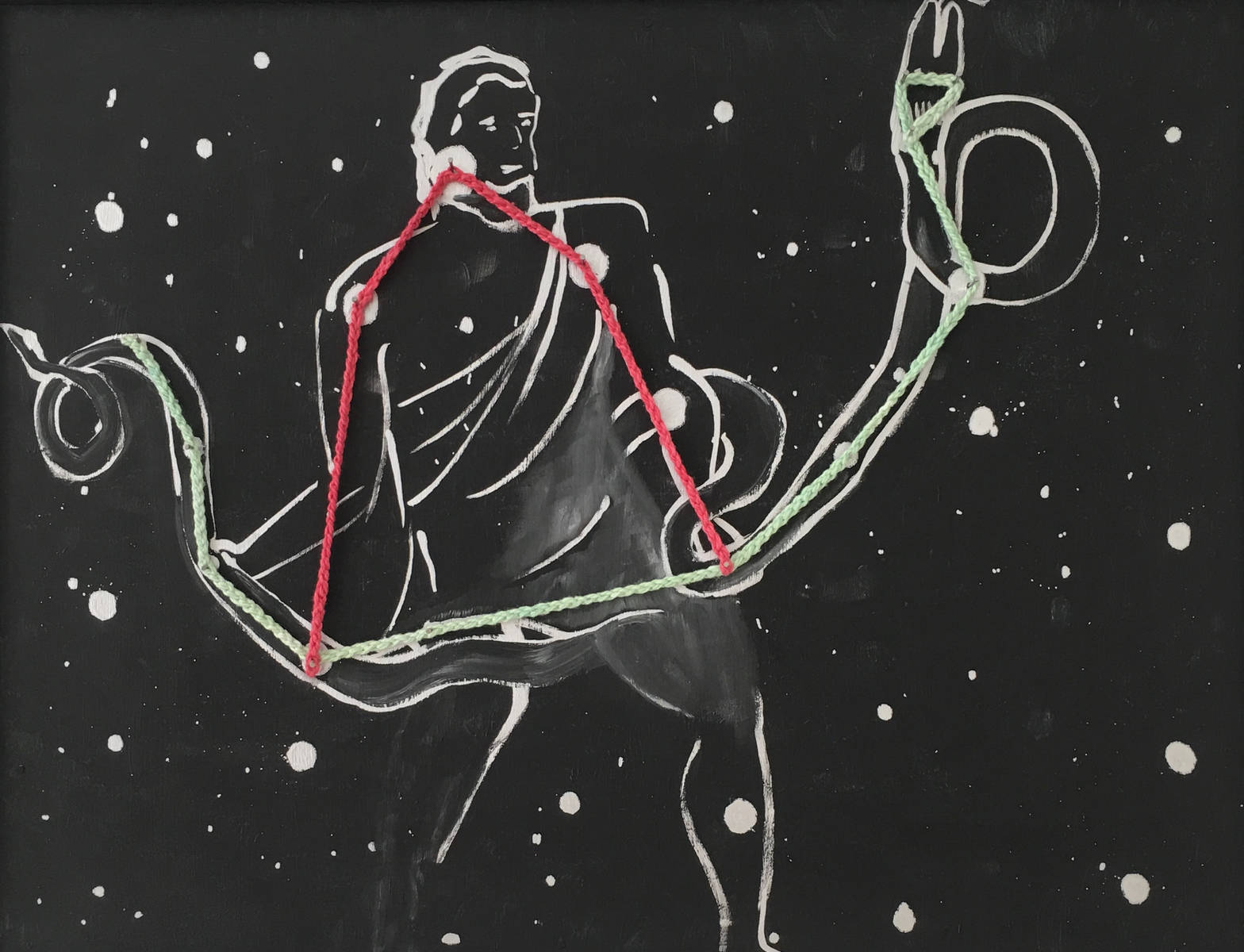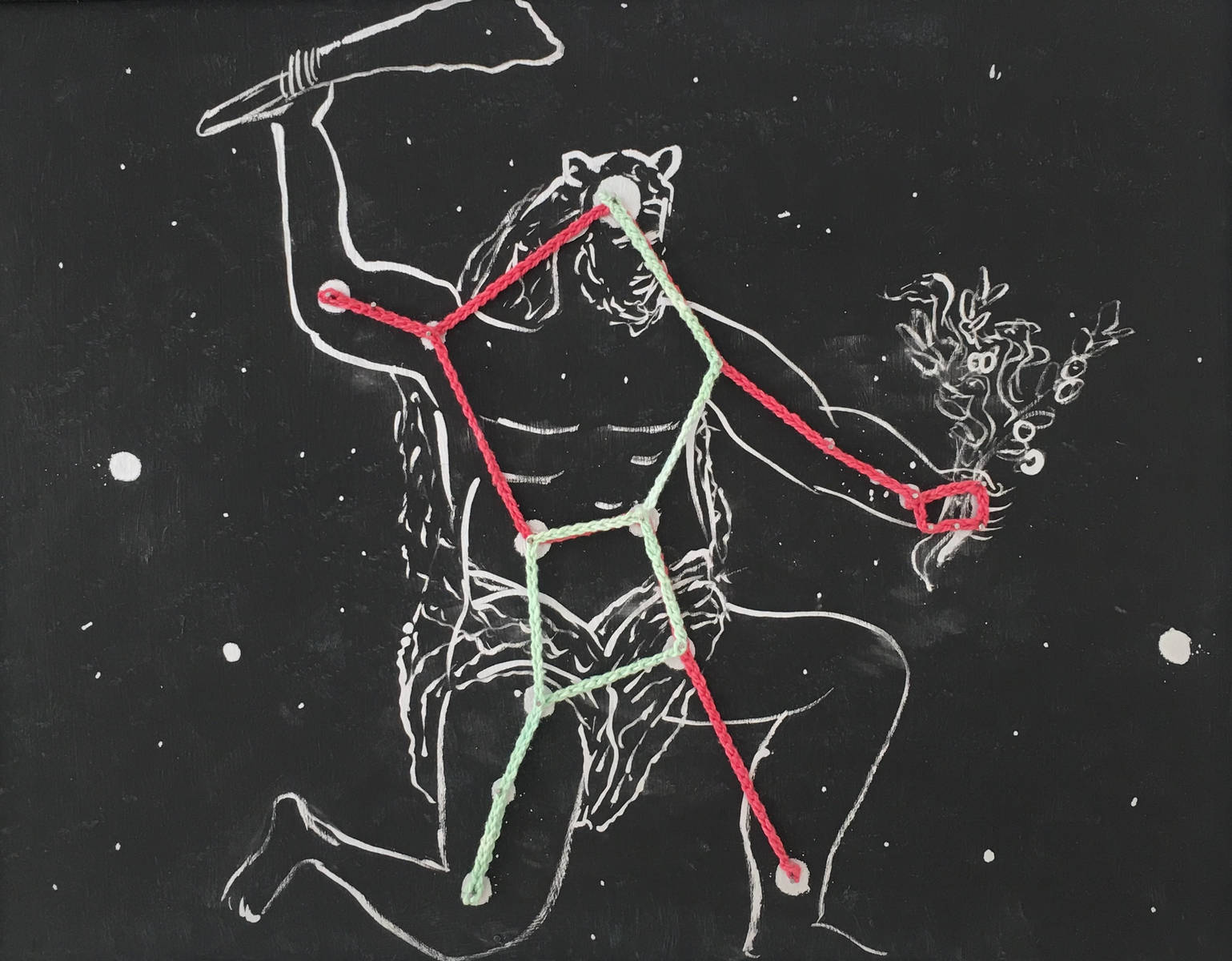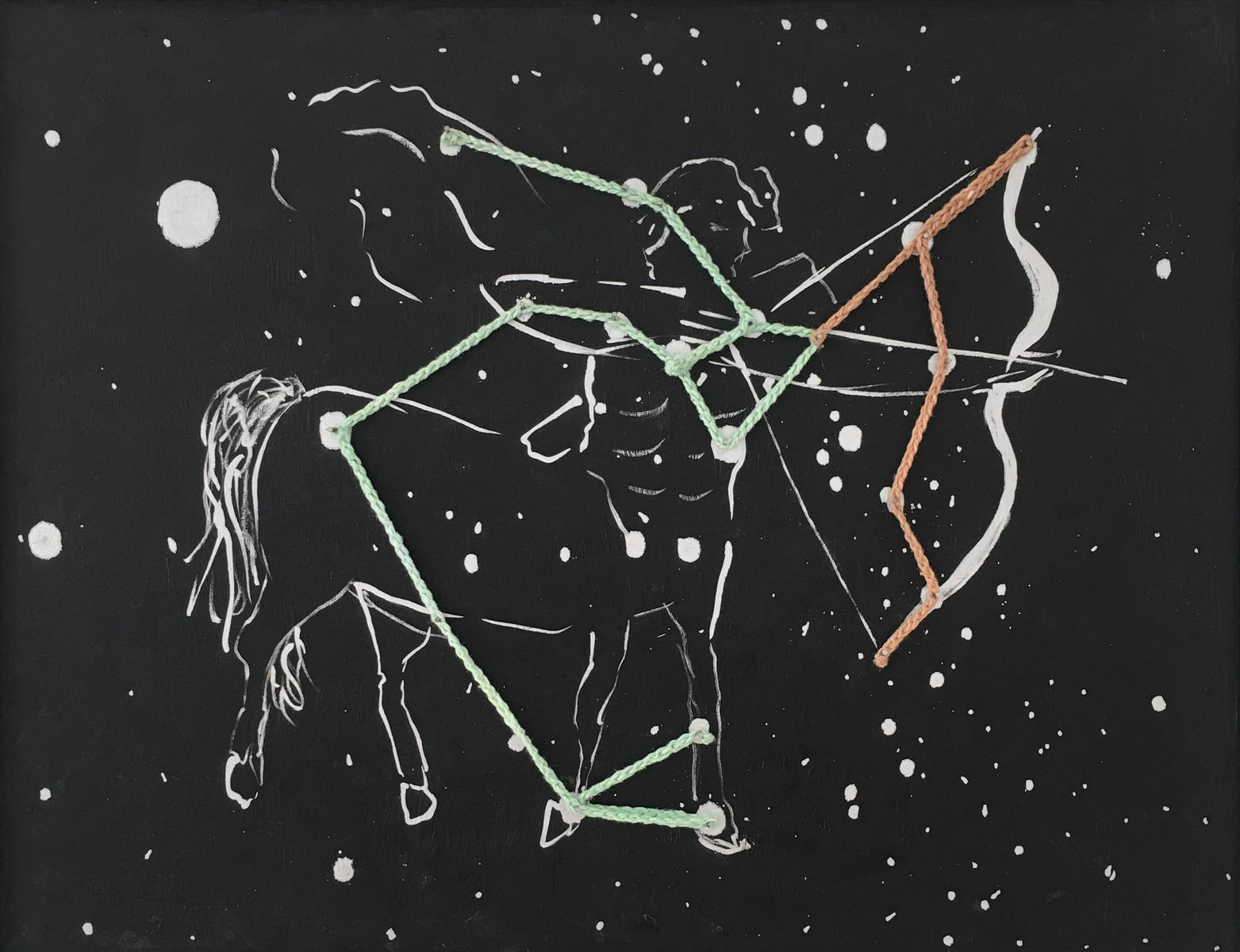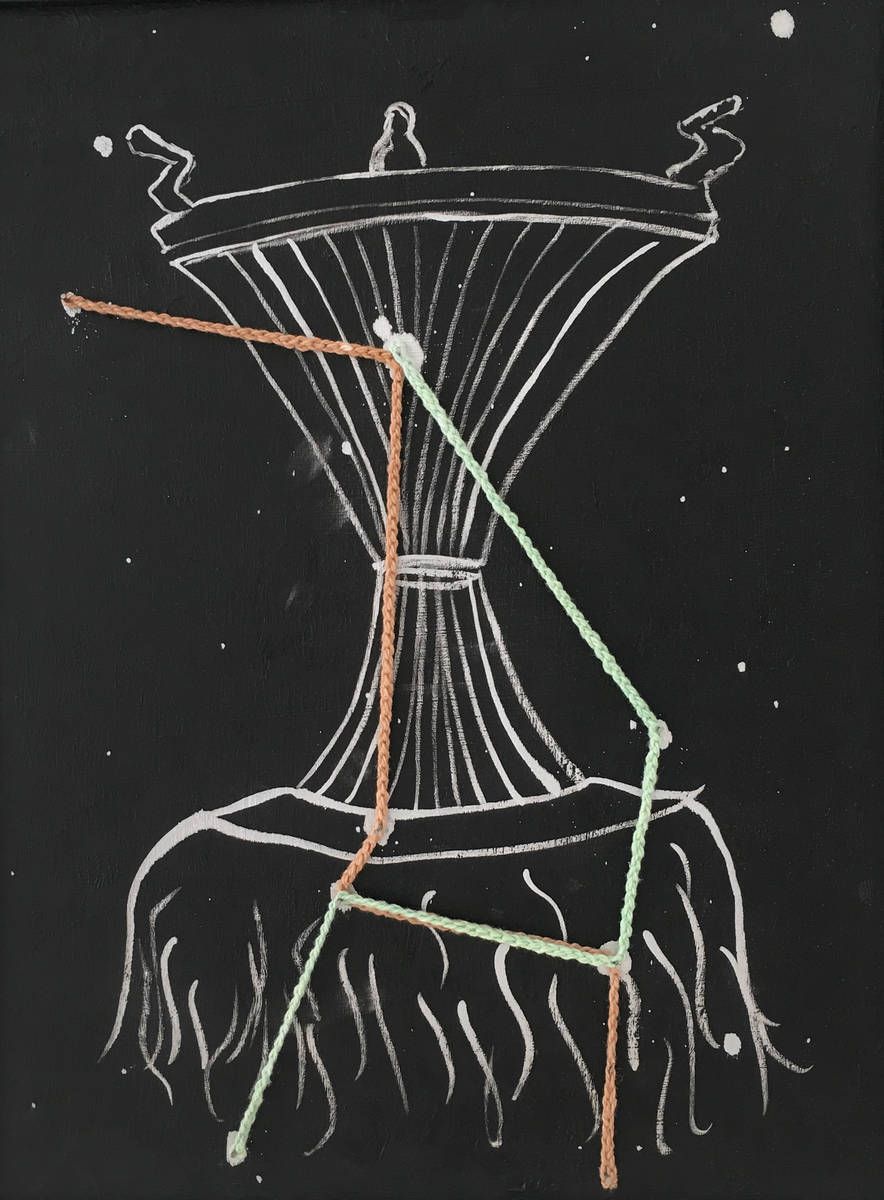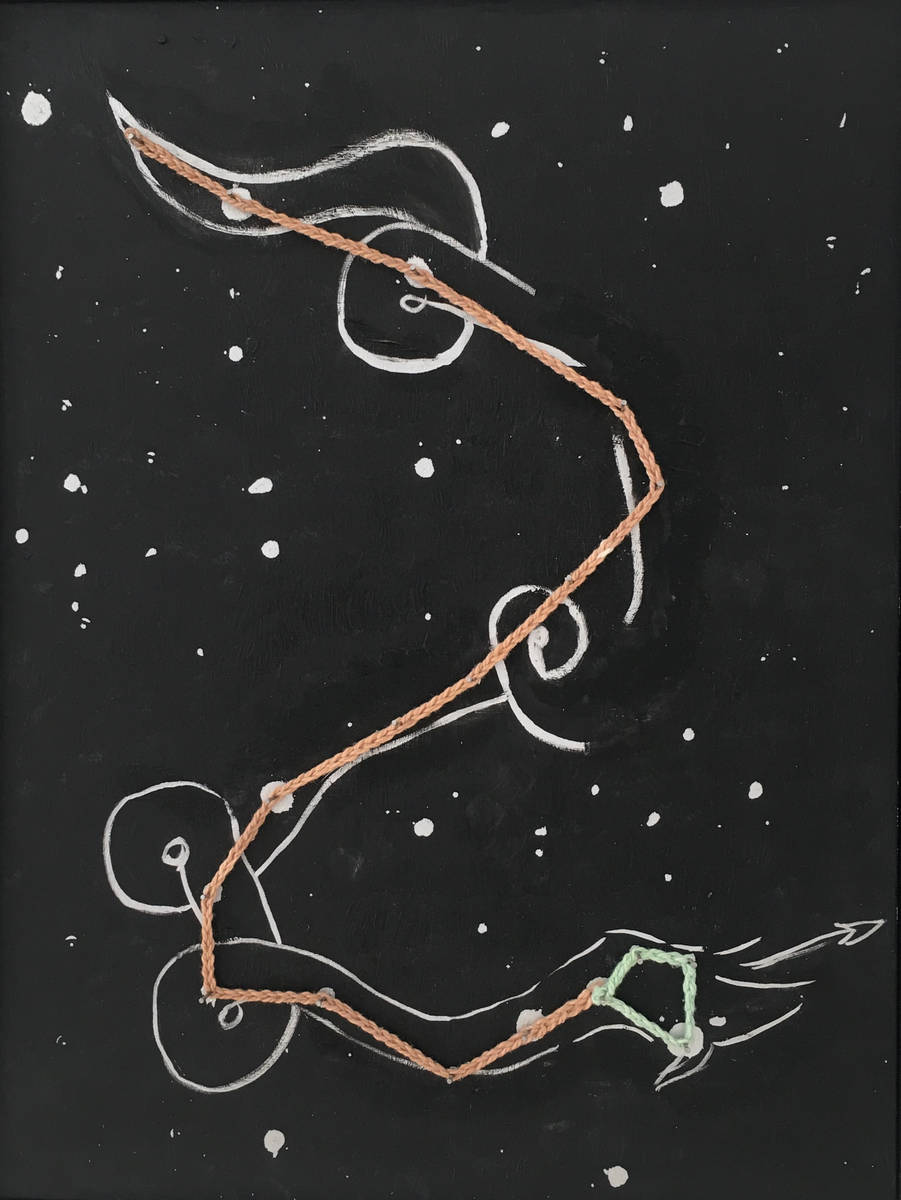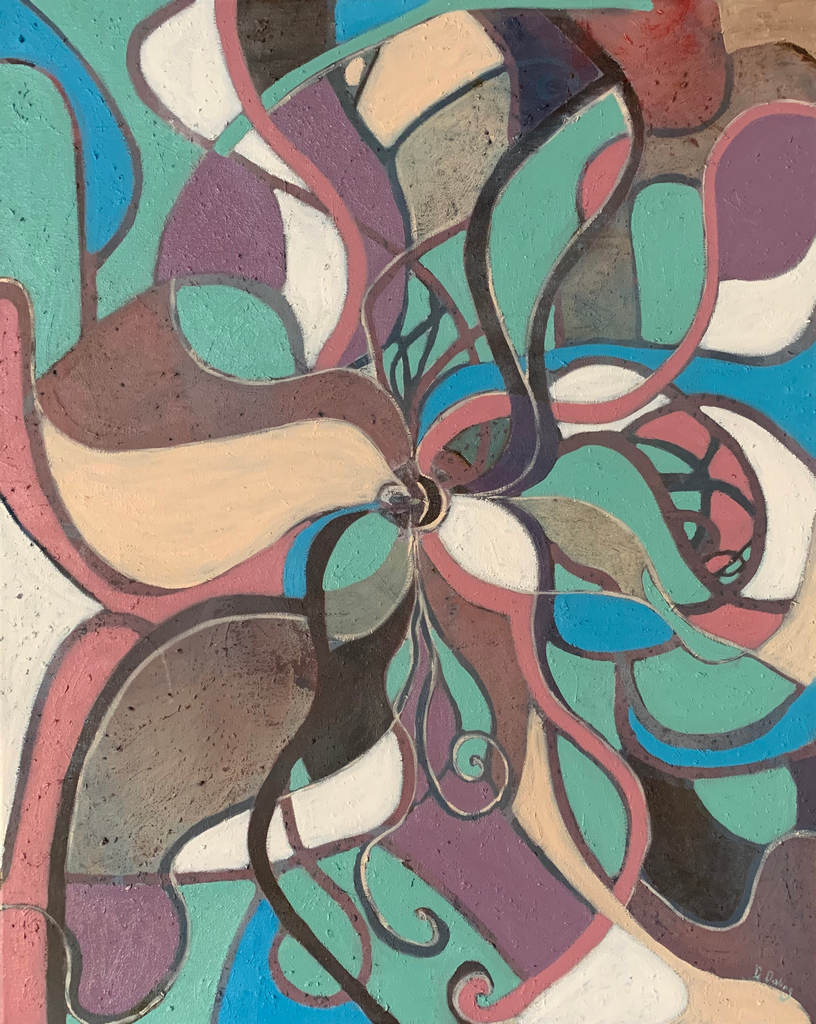
Anemone
Oil on Canvas
R2300
61 cm x 76 cm
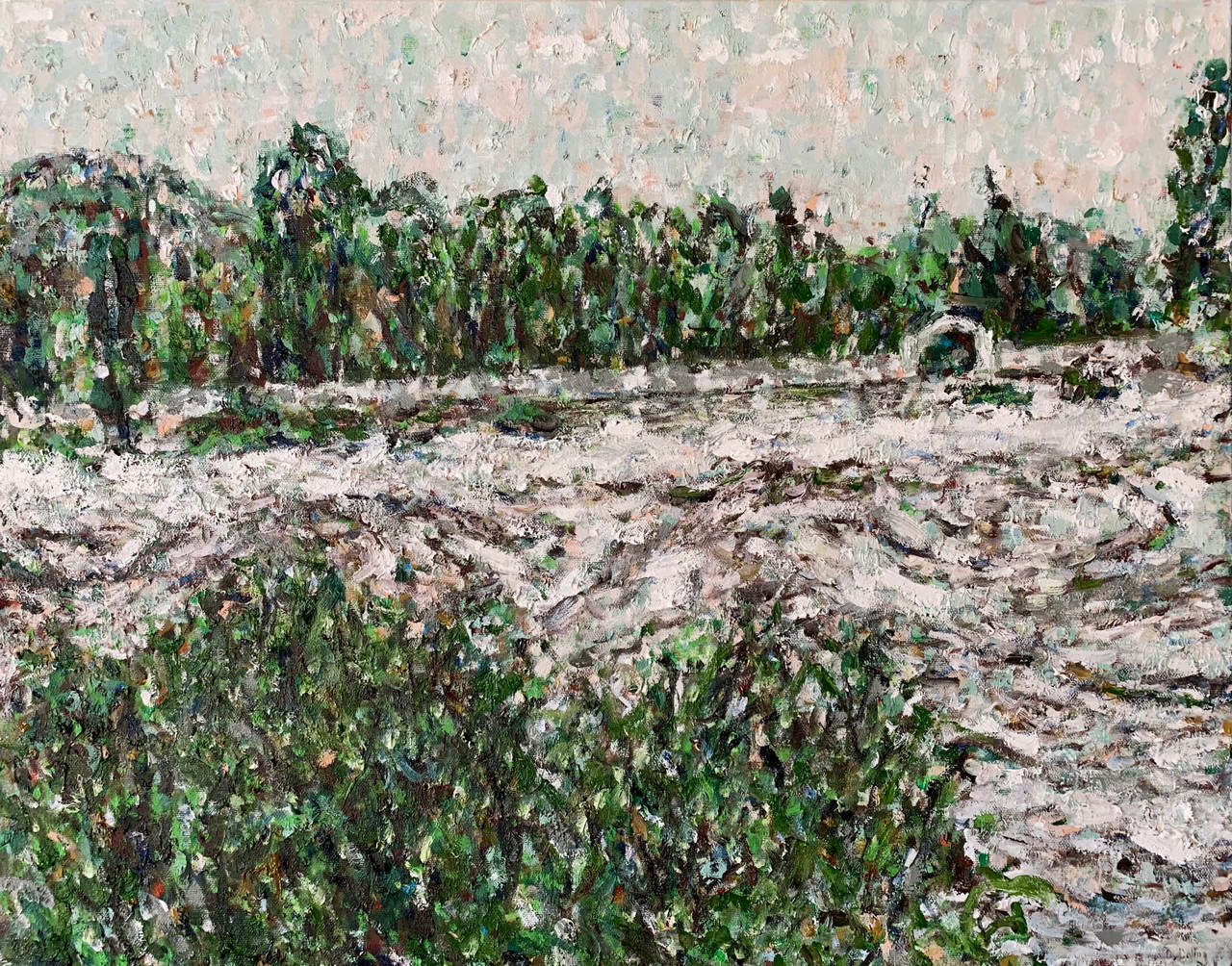
Boetie
Oil on Canvas
SOLD
56 cm x 71 cm
Let it Rain
Dirkje Daling
Looking at rain not only as a physical necessity, but also as symbolism for blessing and spiritual refreshment, I have approached the work for this exhibition to portray both.
The more abstract works, and photographic prints, are visual representations of spiritual truths, goals, experiences, concerns, and joy – that I would like to share with the viewer in my language, which is art.
The nature scenes speak of the joy we experienced in the village after long-awaited rain. The titles reflect the person who took the photograph that was used for reference.
I hope you enjoy this exhibition, and that you will gain from it.
Let it rain!

Bosbad
Oil on Canvas
56 cm x 71 cm
SOLD
“Writing in 1998 about the sorrow associated with extinction, veterinarian and author Mark Jermone Walters remarked, ‘When the tiny wings of the last Xerces blue butterfly ceased to flutter, our world grew quieter by a whisper and duller by a hue.’”
I’ve heard prayer be compared to a butterfly, as the butterfly often flutters around at first before aiming into a certain direction. If the natural world is a reflection of the spiritual, should we not perhaps ask ourselves the question what else has become or is fast becoming extinct…?
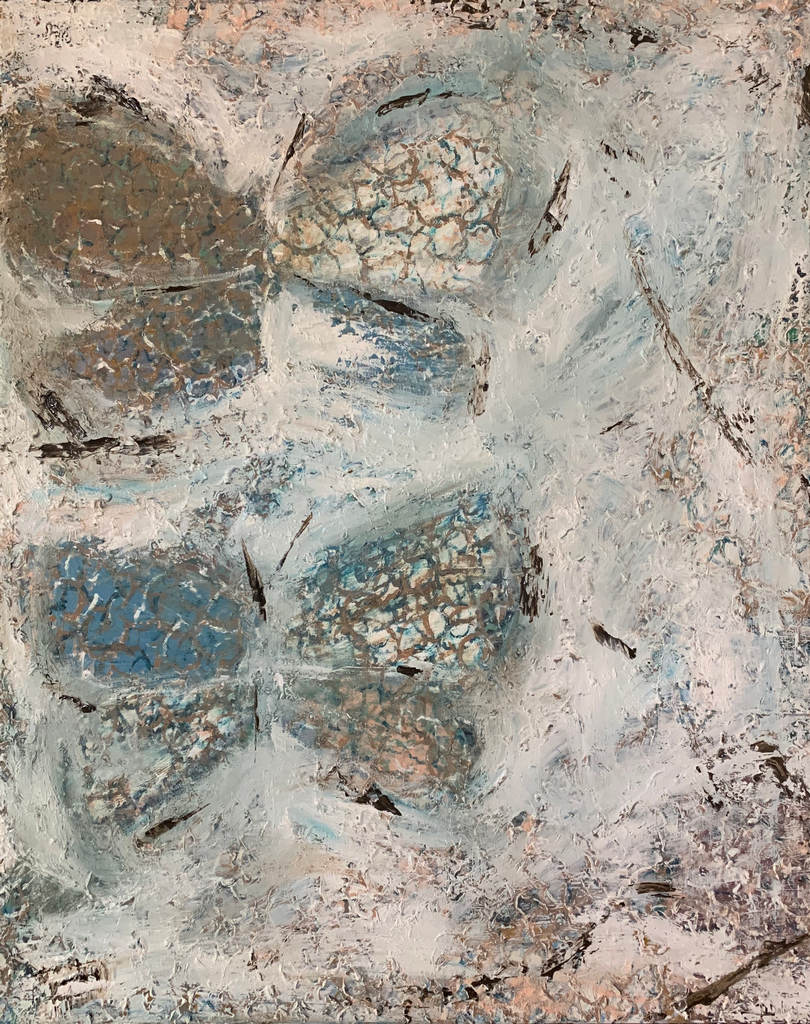
Critically Endangered
Oil on Canvas
SOLD
61 cm x 76 cm
Let it Rain
Dirkje Daling
Looking at rain not only as a physical necessity, but also as symbolism for blessing and spiritual refreshment, I have approached the work for this exhibition to portray both.
The more abstract works, and photographic prints, are visual representations of spiritual truths, goals, experiences, concerns, and joy – that I would like to share with the viewer in my language, which is art.
The nature scenes speak of the joy we experienced in the village after long-awaited rain. The titles reflect the person who took the photograph that was used for reference.
I hope you enjoy this exhibition, and that you will gain from it.
Let it rain!
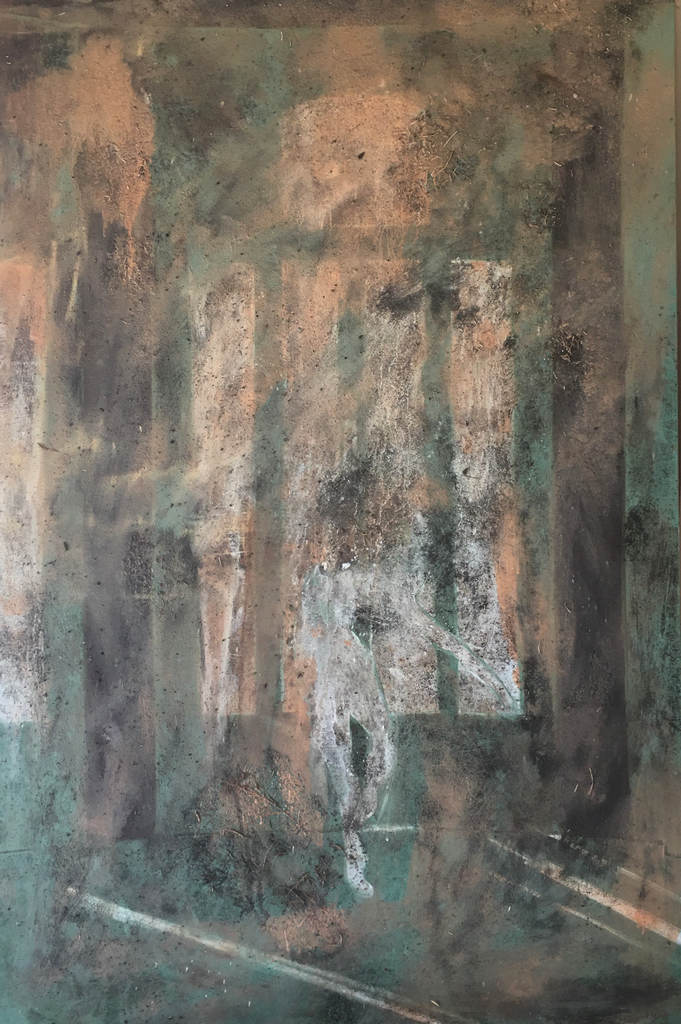
Dis baie droog Here
Mixed media
R7000
101 cm x 150 cm
Let it Rain
Dirkje Daling
Looking at rain not only as a physical necessity, but also as symbolism for blessing and spiritual refreshment, I have approached the work for this exhibition to portray both.
The more abstract works, and photographic prints, are visual representations of spiritual truths, goals, experiences, concerns, and joy – that I would like to share with the viewer in my language, which is art.
The nature scenes speak of the joy we experienced in the village after long-awaited rain. The titles reflect the person who took the photograph that was used for reference.
I hope you enjoy this exhibition, and that you will gain from it.
Let it rain!
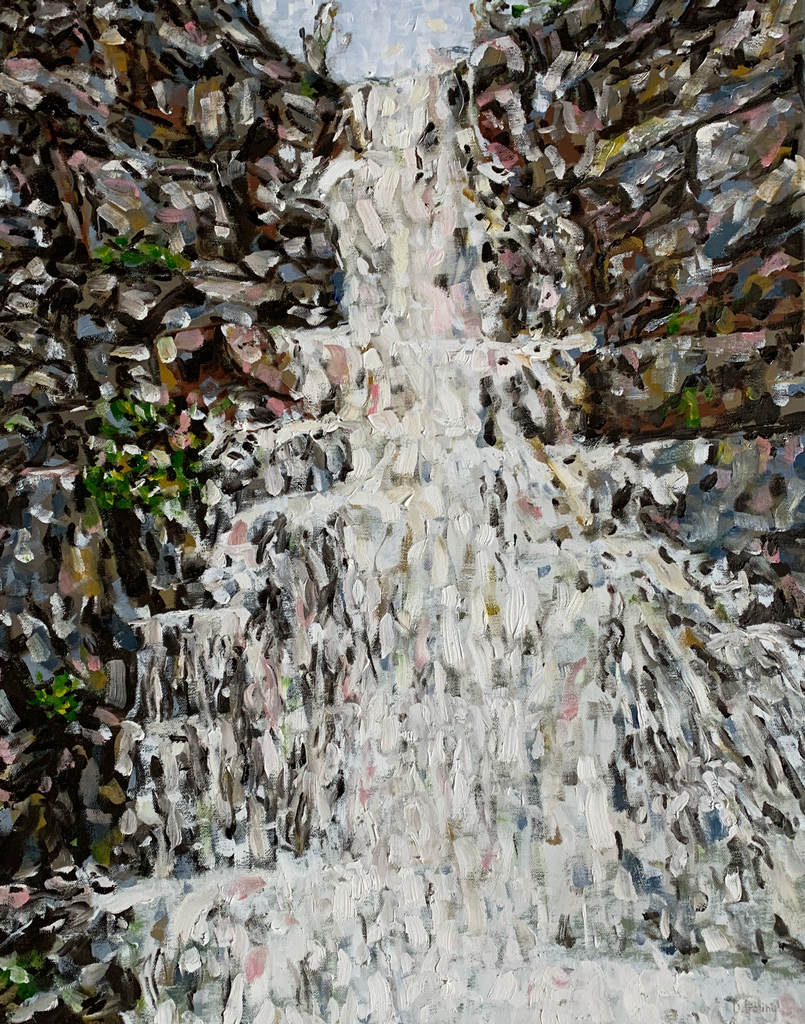
Elsi
Oil on canvas
SOLD
56 cm x 71 cm
‘In honour of’
In
December 2020 the Nieu-Bethesda residents were very proud and fond of
3 owl chicks that were newly hatched in a tree next to a fairly quiet
road and getting stronger by the day.
The
sheer beauty and magnetic mysteriousness these creatures innocently
possess had us all besotted with adoration.
Unfortunately
their presence also attracted the attention of a group of youngsters
who thought it a good idea to try and stone the innocent victim, and
succeeded.
This
raised the question – what would be the driving force behind such
cruelty at such a young age? Where have we gone wrong, and how can
we remedy this sad state of affairs?
I
do not propose to have the answers to these difficult questions. But
I do know it calls for introspection. If at some level there is
something we can do to relieve our youth’s – animal and human
alike – suffering, let us do so.
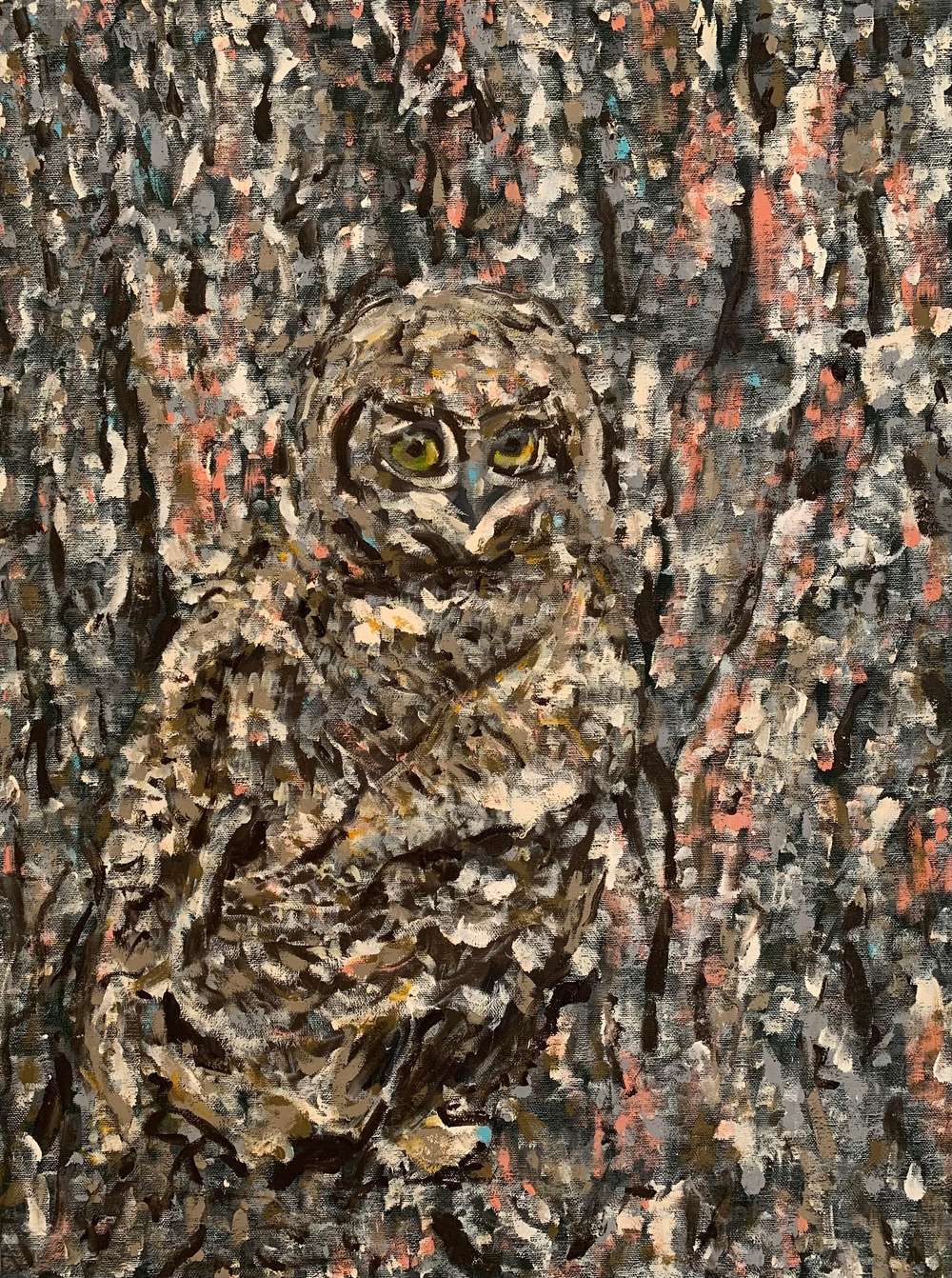
‘In honour of’
Oil on Canvas
R2300
SOLD
“As ek kon vlieg”
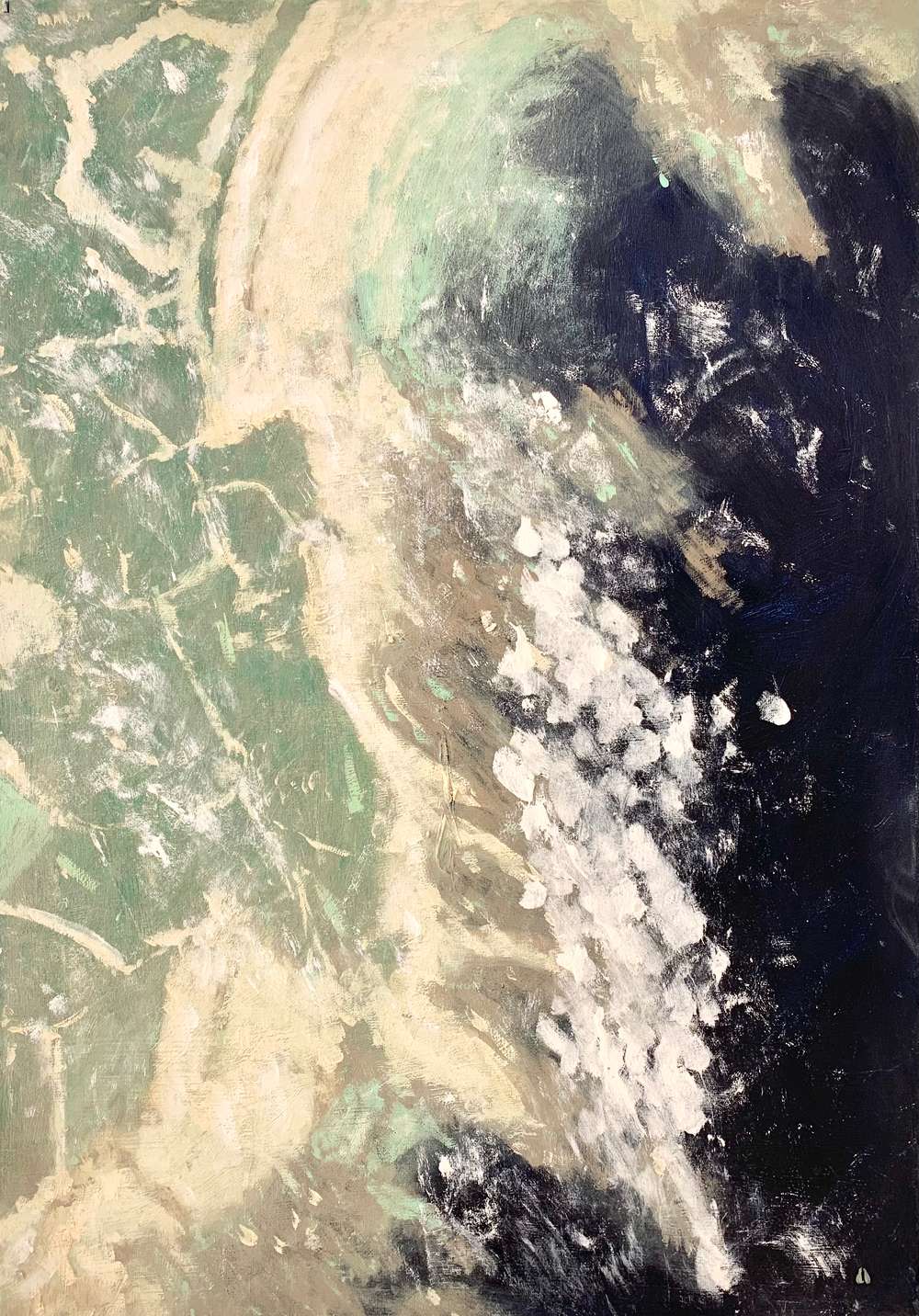
“As ek kon vlieg”
Oil on Canvas
R1800
“As ek kon vlieg sou ek”
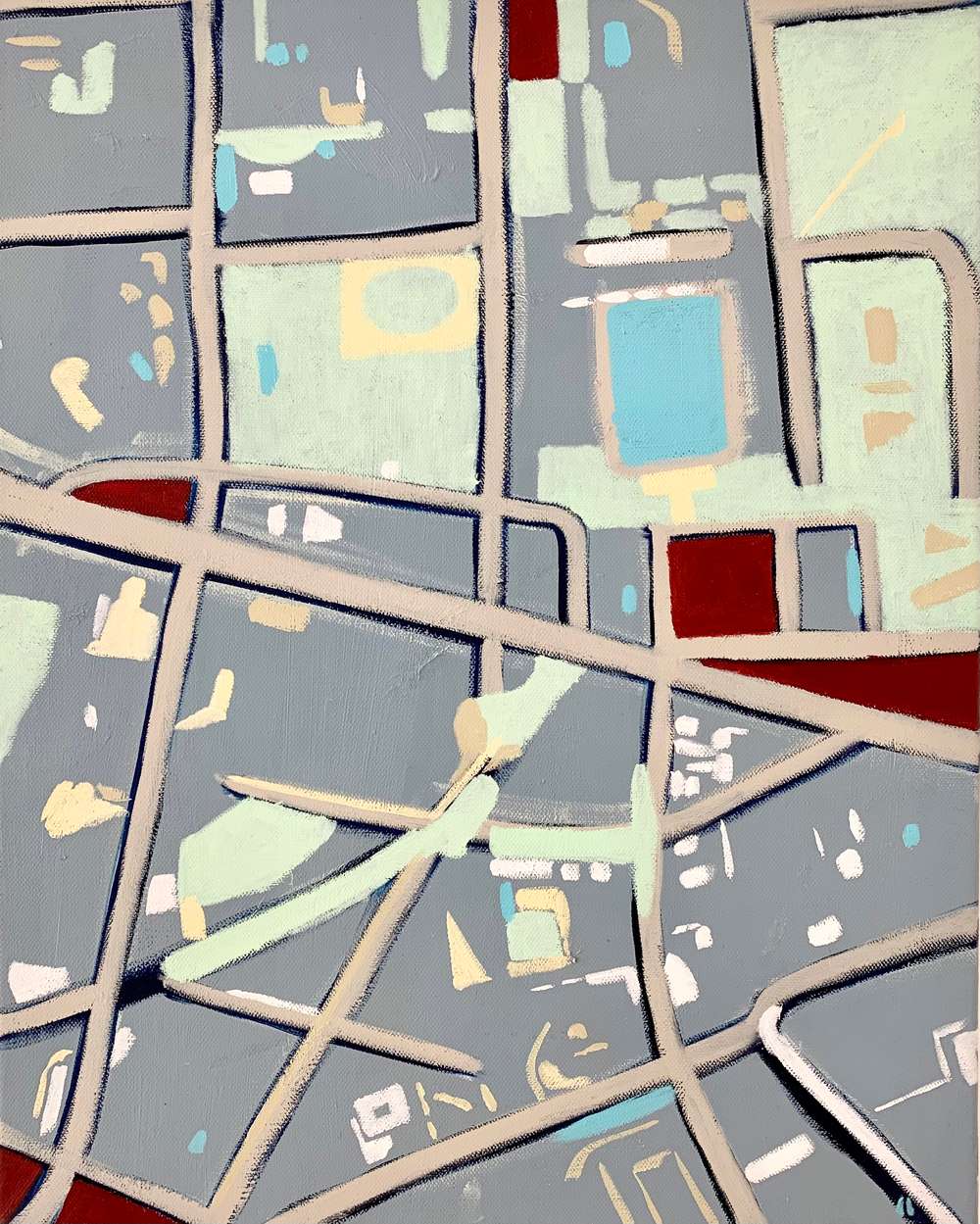
“As ek kon vlieg sou ek”
Oil on Canvas
R1200
“As ek kon vlieg sou ek na jou toe vlieg”
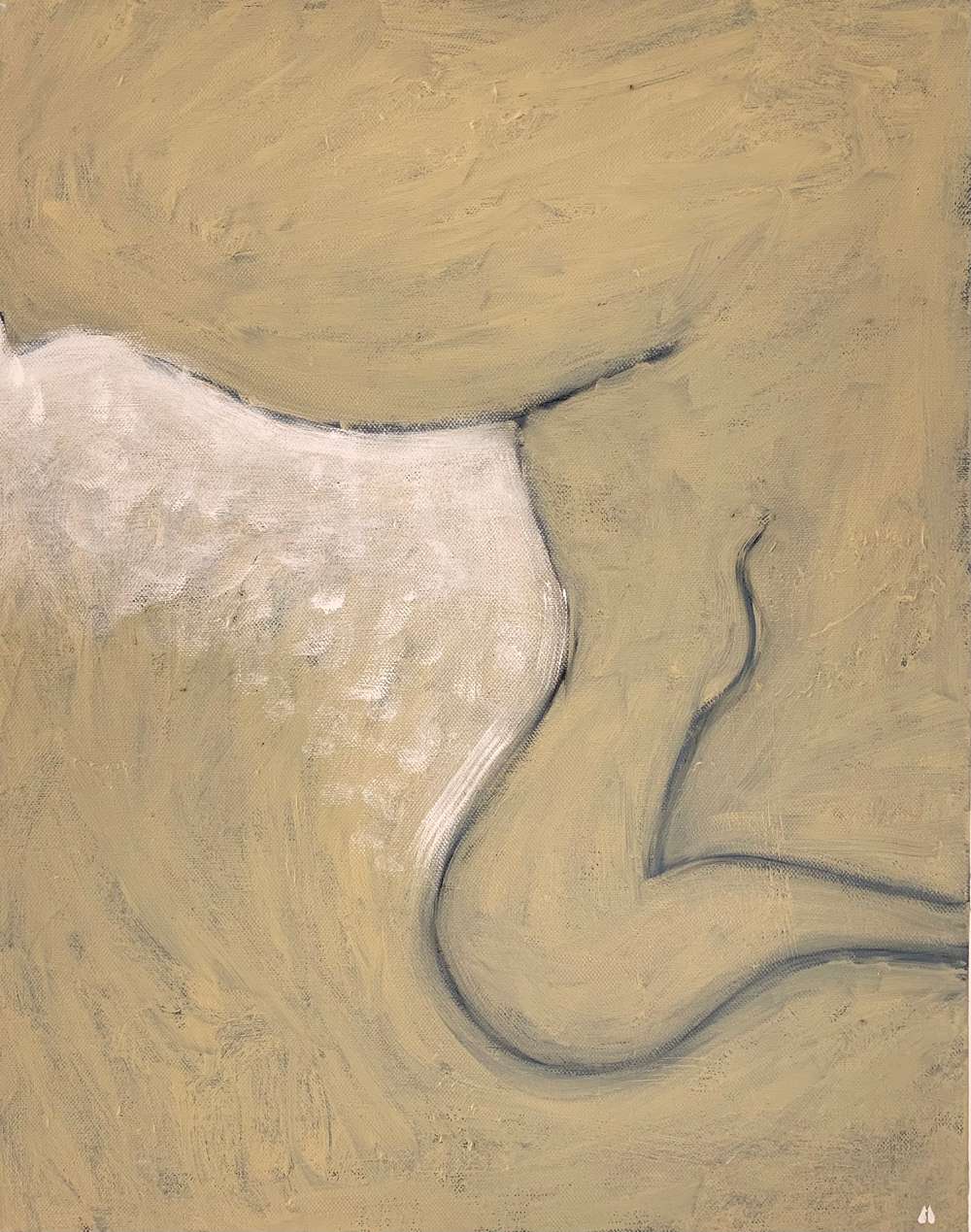
“As ek kon vlieg sou ek na jou toe vlieg”
Oil on Canvas
R1200
“As ek kon vlieg sou ek na jou toe vlieg II”
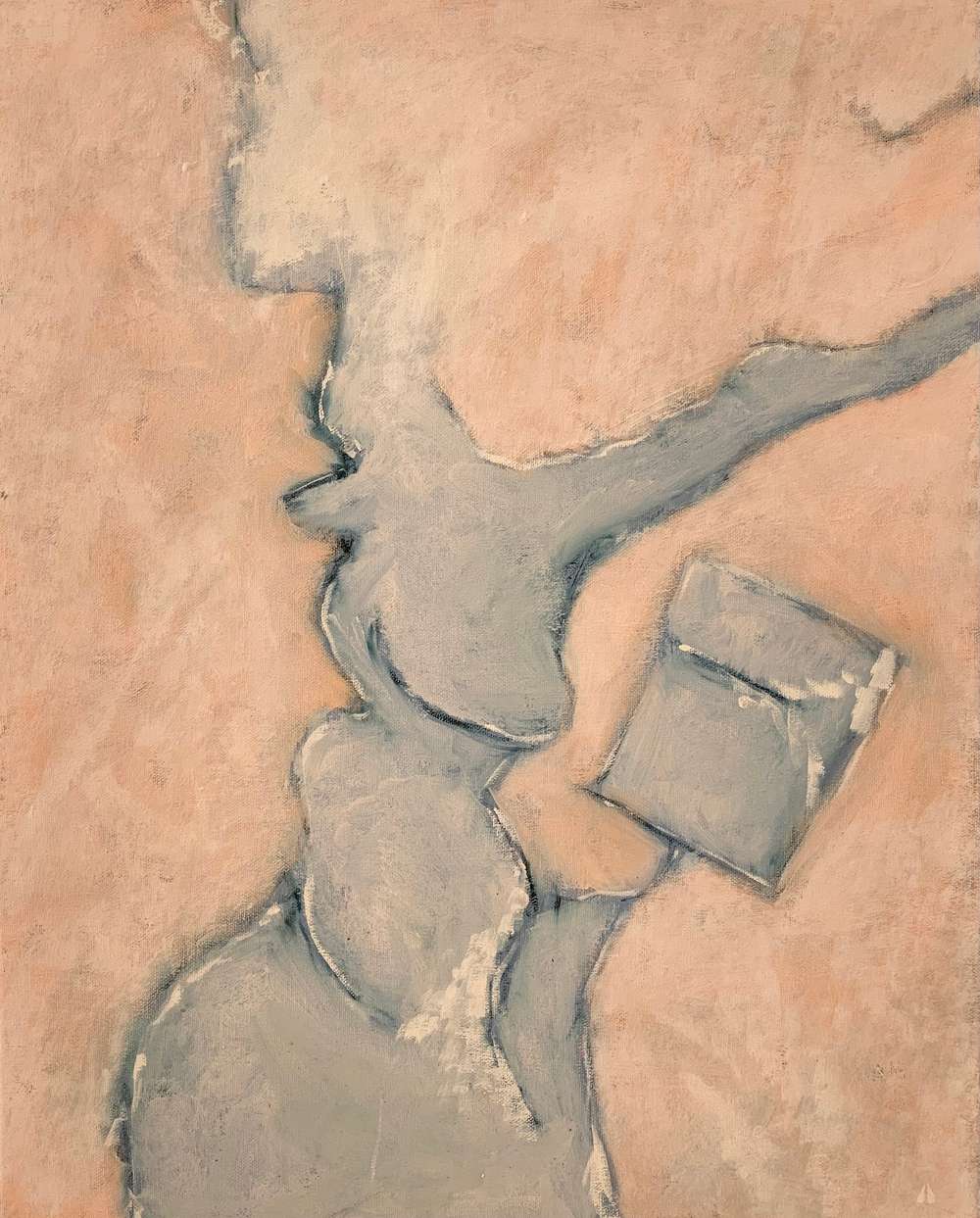
“As ek kon vlieg sou ek na jou toe vlieg II”
Oil on Canvas
R1200
Ask Elijah about the bones
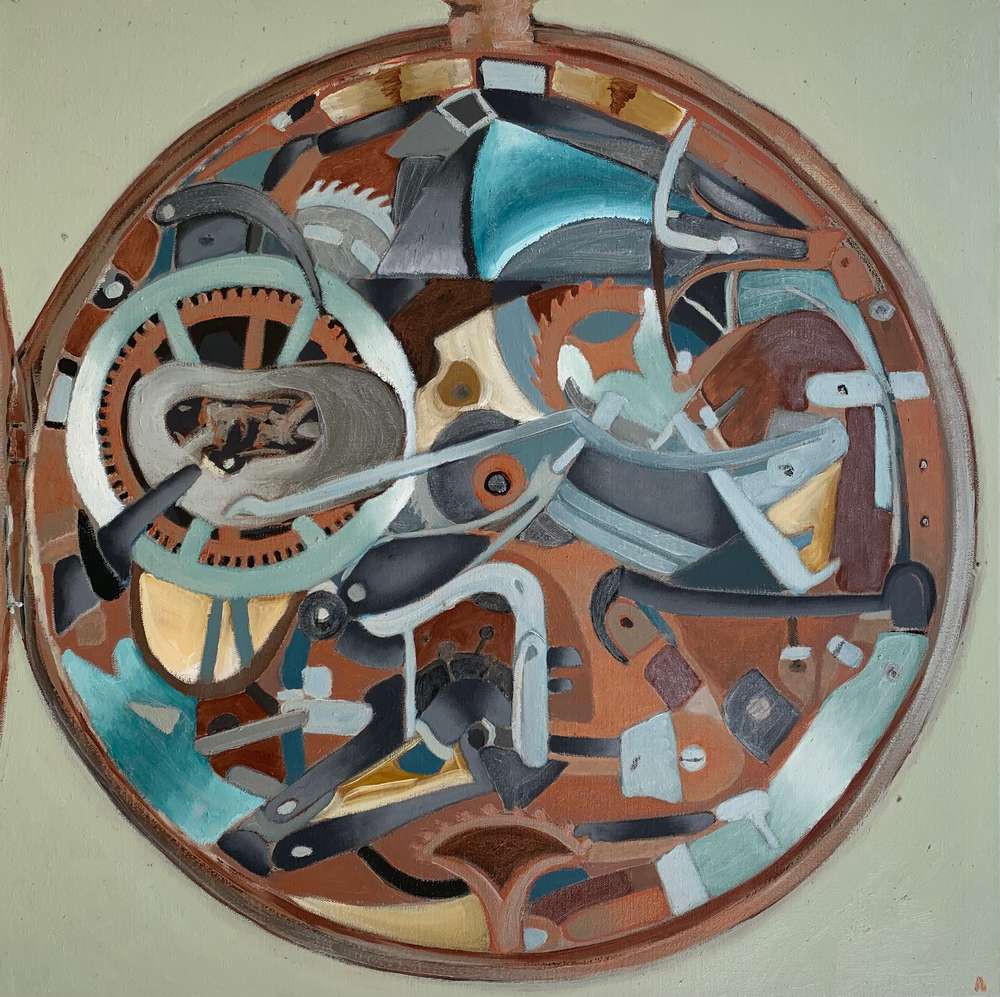
Ask Elijah about the bones
Oil on Canvas
R2300
Comprehend:
to understand the nature or meaning of

Comprehend
Oil on Canvas
R1100
“Writing in 1998 about the sorrow associated with extinction, veterinarian and author Mark Jermone Walters remarked, ‘When the tiny wings of the last Xerces blue butterfly ceased to flutter, our world grew quieter by a whisper and duller by a hue.’”
I’ve heard prayer be compared to a butterfly, as the butterfly often flutters around at first before aiming into a certain direction. If the natural world is a reflection of the spiritual, should we not perhaps ask ourselves the question what else has become or is fast becoming extinct…?

Critically Endangered
Oil on Canvas
SOLD
61 cm x 76 cm
DEATH AND NEW LIFE
“Verily, verily, I say unto you, Except a corn of wheat fall into the ground and die, it abideth alone: but if it die, it bringeth forth much fruit.”
-John 12:24
In connection with these words I continue the study of that evangelic record which we find written on the stars in the ancient astronomy.
As far as we have gone in these investigations, four signs of the Zodiac, with their accompanying Decans, have been discussed – Virgo, Libra, Scorpio, and Sagittarius. Eight more of these signs accordingly remain to be considered; and to these, in their order, I propose that we now direct our attention.
ORDER OF THE SIGNS
Perhaps this is as good a place as any that may offer to remark the fact that these twelve signs of the Solar Zodiac divide themselves into three distinct groups, each group having its own distinct subject. The first group, consisting of the four signs which have already been before us, relates to the Person Work, and Triumph of the illustrious Redeemer, with special reference to himself. The next succeeding group, consisting of Capricornus, Aquarius, Pisces, and Aries, with their several Decans, relates to the Fruits of His Work and Mediatorship – the formation, condition, and destiny of the Church, or that body of people spiritually born to Him through faith, and made partakers of the benefits of His redemptive administrations; whilst the third and last group relates to the final Consummation of the whole in the united glory of the Redeemer and the redeemed, and the exalted condition of things which the Consummation is to realize. All this will be more clearly brought out as we proceed. At present we make our entrance upon the second or middle group.
THE SIGN OF CAPRICORNUS
Here we have the picture of a fallen goat with the vigorous tail of a fish – half goat and half fish. It may seem singular and far-fetched to connect the text with such a figure.
A little consideration, however, will show that the subject-matter in both is in fact identical, though the particular imagery is entirely different. That of the text is the image which we had in Virgo, where the illustrious Son of the virgin is likened to a grain of corn or seed, denoted by Spica, the ear of wheat. It was necessary for this seed or grain of wheat to fall into the ground and die in order to reach its intended fruitfulness, which fruitfulness arises directly out of such falling and dying. The meaning of the passage is, that Christ was to die as a sacrifice, and that by virtue of His sacrificial death salvation was to come to man and the congregation of saved ones formed. As Wordsworth expresses it, “He compares himself to a grain of corn, which would be buried by the unbelief of the Jews, but would fructify in the faith of the Gentiles. As much as to say, I will die, that they may live. My death will be their birth.”
As the phœnix was said to arise out of the ashes of its consumed predecessor, so the Church, or congregation of saints, rises out of the death of Christ, sacrificed for the sins of the world. This is everywhere the teaching of the Scriptures, and nowhere more pointedly and graphically than in this text.
And when we translate this idea into the imagery of the fifth sign of the Zodiac, we find another very graphic and much older picture of precisely the same thing.
TYPE AND ANTITYPE
First of all, we have here the figure of a goat. This is a sacrificial animal. God commanded the children of Israel, saying, “Take ye a kid of the goats for a sin-offering.”
So Aaron “took the goat, which was the sin-offering for the people, and slew it, and offered it for sin” (Leviticus 9:15). And of the goat of the sin-offering Moses said, “It is most holy, and God hath given it to you to bear the iniquity of the congregation, to make atonement for them before the Lord” (Lev. 10: 16, 17).
In the next place, this goat is fallen down in the attitude of dying. His one leg is doubled under his body, and the other is powerless to lift him up. His head is drooping and sinking in death. This is the identical falling and dying of Christ as the sin-offering to which He refers in the text. It is the same Seed of the woman, in the attitude and condition of a sacrifice for sin. Christ surely was “wounded for our transgressions” and “bruised for our iniquities.” “He was cut off out of the land of the living: for the transgression of my people was He stricken.”
As the Head of the flock He suffered in their stead, and laid down His life in sacrifice that they might live. And here it is written on the stars from the earliest ages, and with a vividness of pictorial representation which no one can contemplate without realizing that the picture is intensely striking.
The names in this sign also point to the same thought and significance. Gedi and Dabih are the most prominent stars in this constellation; and in Hebrew, Arabic, and Syriac these names mean, the cut-off, the hewn-down, the sacrifice slain. Other stars in the same constellation have names of similar import, signifying the slaying, the record of the cutting off. Even the elements of the name of the sign as we still have it from the Latins, Capricornus, mean not only the goat, but atonement, sinking or bowed in death. And if there is any significance whatever in these celestial pictures, we have in this sign the symbol of sacrificial death, which is the exact idea of the text.
THE CHURCH
But it is at the same time a picture of another kind of life, developed out of this sacrificial death, and vitally conjoined with it. The body of the fallen and dying goat terminates in the body and tail of a vigorous fish. The living fish thus takes its being out of the dying goat, and has all its life and vigour from thence. Accordingly, the Coptic name of this sign signifies the station or mansion of bearing. In addition to the falling and dying, it is the sign of a mystic procreation and bringing forth. That which is brought forth is a fish, which is again a familiar and well-understood sacred symbol.
When Jesus called and appointed His first ministers He said, “I will make you fishers of men” (Matt. 4:19). So when God said He will bring the children of Israel again into their own land, His word was, “I will send for many fishers, and they shall fish them” (Jer. 16: 15, 16). So in Ezekiel’s vision of the holy waters the word was, “And there shall be a very great multitude of fish, because these waters shall come thither” (Ez. 47:1-9).
Christ speaks of His saved ones as “born of water” (John 3:5). In the parable of the drag-net and in the miraculous draughts of fishes God’s people are contemplated as fishes. Hence, in both Testaments fishes stand as the symbol of believers. “Fishes signify regenerate persons,” says Dr. Gill. “Fish are those that are wrought upon and brought in by the Gospel, and are so called for six reasons,” says Greenhill. “Fish are the men who have attained to life by the Messianic salvation,” says Dr. Hengstenberg. The early Christians were accustomed to call believers Ichthues and Pisces – that is, fishes. In the name and titles of our Lord – “Jesus Christ, the Son of God, our Saviour” – the initials in Greek form a word or name which signifies a fish, and hence the Fathers technically designated Christ as the mystic divine Fish, who in the waters of baptism begets the multitude of fishes – the congregation of His people. Christ is therefore at once the sacrificial goat of the sin-offering and the begetter of a body of reborn men, the Church, the congregation of the quickened and saved.
The diction of the Scriptures thus answers exactly to the figure in this sign, which is the dying goat developed into a fish body.
THE MYSTICAL UNION
Even the great New Testament doctrine of the Mystical Union of believers with their Saviour is here most strikingly signified. As men naturally are but reproductions and perpetuations of Adam, and live his life, so Christ’s people are the reproduction and perpetuation of Christ, living His life. They are in Him as the branch is in the vine.
They are repeatedly called His body, one with Him, “members of His body and of His flesh and of His bones.” And so close and real is their life-connection and incorporation with Him that they are in a sense sometimes called “Christ.” What, then, could better symbolize this than the sign before us? This goat and fish are one – one being, the life of the dying reproduced and continued in a spiritual product which is part of one and the same body. The goat of sacrifice sinks into a new creation, which is yet an organic part of itself. The image is grotesque, and has no prototype in Nature, but it is true, exact and graphic. The forgiveness and regeneration of men, and their incorporation with Christ, is something wholly above Nature – something altogether miraculous – which could not be adequately signified by any natural symbols; and so, as the double nature of the Redeemer himself was denoted by an arbitrary figure, half horse and half man, so the relation between Him as the Sin-bearer and His saved people, who live by virtue of His death, is denoted by another arbitrary figure, made up of a dying goat and a living fish. Nor is it in the power of human genius or imagination to devise another figure capable of setting forth more simply and truly the great and glorious mystery.
THE MYTHS
The myths concerning this sign correspond with these interpretations. This goat is everywhere regarded as Pan, Bacchus, or some divine personage. How he came to have the form of a goat is explained after this fashion: The gods were feasting near a great river, when suddenly the terrible Typhon came upon them, compelling them to assume other shapes in order to escape his fury. Bacchus took the form of a goat and plunged into the river, and that part of his body which was under the water took the form of a fish. To commemorate the occurrence Jupiter placed him in the heavens in his metamorphosed shape. The story is absurd, but through it shines something of the great original idea. It was to secure deliverance from sin, and from the ruinous power of the Devil, that the Son of God took upon Him the form of a Sin-bearer and Sacrifice, and in this character was plunged into the deep waters of death. It was by His taking of this form, and His sinking in death as our substitute and propitiation, that life came to those who were under the power of death, whereby they became a living part of Him, never more to be separated from Him. The myth is only a paganized paraphrase of the original reference which the Spirit of sacred prophecy had written in the primeval astronomy, whence the whole conception originated.
Dagon, the half-fish god of the Philistines, and Oannes, the half-fish god of the Babylonians, also connect with this Zodiacal Capricornus, and have embodied in them the same original thought as well as figure. Philo tells us that Dagon means fruitfulness, the seed-producing; and so Christ is the Seed, the Corn of wheat, fallen and dying in the goat, but producing the living fish, the Church, which is the travail of His soul, the true fruit of His atonement. Eusebius says that Dagon was the god of husbandry, the god of seeds and harvests. Pluche says that Dagon among the Philistines was the same as Horus among the Egyptians; and Horus takes the character of the meek and silent Sufferer from whom comes the horn of blessing and plenty. Dagon had the human form in place of the goat, but that was only a further interpretation of the meaning; for the goat part of Capricornus stands for the Seed of the woman, and so is in reality the man Christ Jesus.
Berosus speaks of Oannes as likewise half man and half fish. Some of the ancient pictures of him still remain, in which he is figured as a great fish outside, but under and within the fish, and joined with it as its more vital interior, was a tall and vigorous man, standing upright in great dignity, with one hand lifted up as if calling for attention, and in the other carrying a basket or satchel as if filled with treasure. He is fabled as having risen out of the sea to teach the primitive Babylonians the secrets of wisdom, particularly the elements of culture, civilization, and law, organizing them into a prosperous commonwealth. An ancient fragment says of him: “He grew not old in wisdom, and the wise people with his wisdom he filled.” The representation is throughout in full accord with what I have been saying of Capricornus.
There is a coming up out of the deep in glorious life, and a blessed fruitfulness brought forth thereby, and that fruitfulness in the form of instructed, wise, and disciplined people. It is the fallen Seed of the woman risen up from death after having gone down into the invisible and unknown world, begetting and creating a new order among men – the dying Seed issuing in the believing body, the Church, in which He still lives and walks and teaches and blesses. The myth embodies the exact story of the sign.
SPIRITUAL CONCEPTIONS
Moreover, the very complexity of the figure of Capricornus, at first so confusing and hard to construe, conducts us into still further particularities of evangelic truth. As far as we have been looking at it, we see the literal death of one being issuing in the spiritual life of other beings, of whose new life He is the life. It is Christ in the one case corporeally sacrificed, and His people mystically resurrected to newness of life in the other. But along with this goes a reflex which it is important for us to observe, as it brings out some of the deep practical spiritualities of true religion.
Of course, the rising of the fishes out of the dying goat implies the literal and potent resurrection of Christ himself as the Begetter and Giver of this spiritual resurrection to His people; for if He did not rise, then no preaching or believing would avail to bring us to life or salvation. But as we rise to spiritual life through the power of His resurrection, so there is also implied a dying with Him in order to rise with Him; for there is no resurrection where there has been no dying. We look for a resurrection of the body, because there is first a death of the body. And as God’s people are partakers of a mystic or spiritual resurrection, there goes before it a corresponding death. That death out of which their new life comes through and in Christ is twofold. It is first a deadness in sin – existence indeed, but morally and spiritually a mere carcass, with no life-standing to the law or any practical spiritual life toward God and heaven – a life that is nothing but spiritual death. In the next place, it is death to sin, both as to its penalty and power, a cessation of the mere carnal life and of further existence under condemnation. Now, the great office of religion, through the Seed of the woman and His sacrificial offering of himself to expiate our sins, is to bring death to this old life in sin and death, and by this wounding, slaying and putting off of the old man of corruption, to generate, evolve, sustain, teach and train the new man, which is renewed after the image of Christ’s own resurrection, and which beams with better knowledge and true holiness.
Christ corporeally dies for us, and we mystically die to the old death-life with, in, and by virtue of Him. We die to the death-penalty which holds us whilst in the mere carnal life, and put it clean off from us for ever, in the atoning sacrifice of Christ, by accepting Him and believing in Him as our Surety and Propitiation; and in really taking Him as our Redeemer and Hope there is such a force in our faith, and it is in itself such a living and active power, that in the very exercise of it we necessarily die to the pursuit and service of sin. In other words, beginning to live in Christ, we begin to die to the old carnal life. The one is the correlative of the other. Hence the apostolic word: “How shall we that are dead to sin live any longer therein? Know ye not that so many of us as were baptized into Jesus Christ were baptized into His death? Therefore we are buried with Him by baptism into death; that like as Christ was raised up from the dead by the glory of the Father, even so we also should walk in newness of life,…knowing this, that our old man is crucified with Him, that the body of sin might be destroyed, that henceforth we should not serve sin. For he that is dead is freed from sin” (Romans 6: 2-7).
This, then, is the meaning of the picture: The Seed of the woman takes our death-penalty on himself, and dies a sacrifice for our sins, so that believers die with Him to all the old life of condemnation and sin; out of this death He springs up in resurrection-power, in which believers rise with Him by being brought to know and accept the truth and to follow His teachings in lively hope of a still further rising in immortal glory at the last; in all of which we behold the much fruit yielded by the seed of wheat falling to the ground and dying.
And with these presentations agree the accompanying side-pieces or Decans.
THE ARROW
The first is Sagitta, the shot and killing arrow. It appears naked and alone. It has left the bow, and is speeding to its aim. It is a heavenly arrow, and He who shoots it is invisible. There is a majesty and a mystery about it which startles and awes. It is the death-arrow of almighty justice, which goes forth from the throne against all unrighteousness and sin. It is that death-inflicting instrument which comes with resistless force and sharpness against a world that lieth in sin, and which pierces the spotless Son of God as found in the place of guilty and condemned man. The execution it does is shown in the fallen and dying goat. It is the arrow of divine justice and condemnation upon sin piercing through the body and soul of the meek Lamb of God, who agreed to bear our sins and answer for them.
In the thirty-eighth Psalm we have this very arrow of God sticking fast in the body of the mysterious Sufferer, wounding His flesh and His bones, and completely overwhelming Him. He is troubled and bowed down, as under a crushing burden. His heart panteth, his strength faileth, the light of his eyes fades out. Not only is he the persecuted object of man’s hatred, but shut up within the strong bars of divine judgment. It was divine grace that prepared and shot that arrow against the person of the blameless One; but, being found in the room and stead of sinners, God’s holy vengeance could not hold back for the sparing even of the only-begotten of the Father, so full of grace and truth. Christ came into the world to die for it; and toward this lowest deep His steps daily led Him as He looked onward to the harvest that was being sown amid these tears. It would seem almost as if the song of the Psalmist had been copied direct from what is thus pictured in these signs.
But this Arrow doubtless covers a further idea. There is a spiritual piercing and slaying in the case of those who come to new life in Christ, akin to the piercing and slaying of Christ himself. Sharp and hurtful words are compared to arrows. And of this character are the words of God as pronounced upon the wicked, judging and condemning them for their sins, bringing them down from their lofty self-security, and killing out of them the vain imaginings in which they live. Isaiah speaks of this sort of shaft or arrow in the Lord’s quiver – the arrow of the Word – the arrow of conviction of sin, righteousness, and judgment – a wounding and killing arrow which enters into men’s souls, and makes humble penitents of them, that they may come to life in Christ. The death of Christ for our sins also takes the form of a word, preaching, testimony, and argument, even the preaching of the Cross, to kill the life of sin and to cause men to die unto it; so that the very arrow of sovereign justice which drank up the life of Christ as our Substitute and Propitiation passes through Him to pierce also those whose life in sin cost Him all this humiliation and pain; also killing them to that life that they may live the Christ-life as His renewed, justified, and redeemed children.
Thus the Arrow fills out precisely the same ideas which we find symbolized in the sign of Capricornus.
THE PIERCED EAGLE
The second Deacon adds still further to the clearness and certainty of the meaning. This is the constellation of Aquila, the pierced, wounded, and falling eagle. It is but another picture of the grain of wheat falling and dying. The principle star in this constellation is of the first magnitude, and is the star by which the position of the moon – also a symbol of the Church – is noted for the computation of longitude at sea. Its name is Al Tair, which in Arabic means the wounded. The name of the second star in the same language means the scarlet-coloured – covered with blood. The name of the third means the torn, whilst that of another means the wounded in the heel. It is simply impossible to explain how all these names got into this sign and its Decans, except by intention to denote the great fact of the promised Saviour’s death.
The myths explain this eagle in different ways. Some say it is Merops, king of Cos, the husband of Ethemea, who lamented for his condemned wife, and was transformed into an eagle and placed among the stars.
Some say it is the form assumed by Jupiter in carrying off Ganymedes, whilst others describe it as the eagle which brought nectar to Jupiter while he lay concealed in the Cretan cave by reason of the fury and wrath of Saturn.
In short, pagan wisdom did not know what it meant, though holding it in marked regard. And yet, as Christ loved the Church, and gave himself for it, and reigns in glory for its good – as He humbled himself in obedience to death that He might take to himself a glorious Church to serve the eternal Father in immortal blessedness – as He was really brought down into the cave of death, whence He was revived by heavenly virtues after the exhaustion of the fierce wrath of insulted sovereignty, – we can still see some dim reflections of the original truth and meaning even in these confused and contradictory fables.
The eagle is one of the biblical symbols of Christ. “Ye have seen what I did unto the Egyptians, and how I bare you on eagles’ wings and brought you unto myself” (Ex. 19:4), “As an eagle stirreth up her nest, fluttereth over her young, spreadeth abroad her wings, taketh them, beareth them on her wings; so the Lord alone did lead him” (Deut. 32:11, 12). The eagle is a royal bird, and the natural enemy of the serpent. It is elevated in its habits, strong, and swift. It is very careful and tender toward its young, and is said to tear itself to nourish them with its own blood when all other means fail. And here is the noble Eagle, the promised Seed of the woman, pierced, torn, and bleeding, that those begotten in His image may be saved from death, sheltered, protected, and made to live for ever.
But, as in the case of the Arrow, so also in this case, the figure will admit the further idea which takes in the proud sinner, pierced by the arrow of the Word and brought down into the humiliation of penitence, even to death and despair as to all his former hopes in himself. And until the high-soaring children of pride are thus brought down by the arrow of God’s Word, and fall completely out of the heaven of their dreams, conformably to Christ’s death for them, there can come to them no right life. Paul was alive without the law once, and a very high-soaring and bloodthirsty eagle; but when the commandment came, sin revived, and he died – died the death that could alone bring him to right life.
THE DOLPHIN
The third Decan of this sign is the beautiful cluster of little stars named Delphinus.
It is the figure of a vigorous fish leaping upward. Taken in connection with the dying goat, it conveys the idea of springing up again out of death. Our great Sin-bearer not only died for our sins, but He also rose again, thereby becoming “the first-fruits of them that slept.” As the Head and Representative of His Church, He is the principal fish in the congregation of the fishes. Their quickening, life, and spiritual resurrection rest on His coming forth again after having gone down into the waves of death for their sakes.
Put to death in the flesh, He was quickened by the Spirit, and in His quickening and resurrection all His people share. Their sins having been buried in His death, their life is by virtue of His resurrection, that “like as He was raised from the dead, so we should walk in newness of life,” ever advancing toward a still more complete resurrection to come. The corn of wheat falls into the ground and dies, but from that death there is a springing up again to the intended fruitfulness.
Christ dies and rises again, and His people, slain in their old carnal confidence, absolved by His suffering of the penalty due to them, and planting themselves solely upon Him as their Lord and Redeemer, rise with Him into the new, spiritual, and eternal life. The picture of the dying goat, with its after-part a living fish, implied this, but the nature of the transition could not be so well expressed in that figure by itself. Hence the additional explanatory figure of an upspringing fish, to show more vividly that the transition is by means of resurrection to a new life of another style. We thus have the vivid symbol of both the resurrection of the slain Saviour as the Head of the Church, and the included new creation of His people, who rise to their new life through His death and resurrection.
In ancient mythology the dolphin was the most sacred and honoured of fishes, doubtless because of its place among the ancient constellations, though the myths representing it are very different. It was specially sacred to Apollo, and its name was added to his – some say, because he slew the dragon; others say, because in the form of a dolphin he showed the Cretan colonists the way to Delphi, the most celebrated place in the Grecian world and the seat of the most famous of all the oracles. According to some accounts, it was a dolphin which brought about the marriage of the unwilling Amphitrite with the god of the sea, and for this it received place among the stars. The muddy waters reflect something of the original idea. Christ was the true Son of Deity. It was He who broke the Dragon’s power by submitting to become the atoning Mediator. “In all things it behoved Him to be made like unto His brethren, that He might be a merciful and faithful high priest to make reconciliation for the sins of the people.” By His death and resurrection He has opened and shown the way by which His people come to the blessed city of which Jehovah is the light. By His mediation He has brought about a marriage between men in flight from their Lord and Him who loved them with a love that passeth knowledge. And in believing foretoken of all this His sign, as the Head of His people, was thus placed in the heavens, where it stands as another form of the parable of the buried corn of wheat rising in new life, of which all who are His are partakers.
SALVATION THROUGH ATONEMENT
Capricornus is thus the illustrious bearer and witness of the most vital evangelical truths. There is no more central or important doctrine of our holy faith than this, that the pure and sinless Son of God, having assumed our nature for the purpose, did really and truly take the sins of the world upon Him, and bore the agonies of an accursed death as the sacrifice and propitiation for our guilt. Whatever difficulty human reason may have in receiving it, it is the very heart and substance of the Gospel tidings, on which all the hopes of fallen man repose. “Thus it is written, and thus it behoved Christ to suffer, and to rise from the dead the third day, that repentance and remission of sins might be preached in His name” (Luke 24: 46, 47).
This “first of all” Paul preached, and Christians received and held, “how that Christ died for our sins according to the Scriptures, and that He was buried, and that He rose again the third day according to the Scriptures” (1 Cor. 15: 3, 4). “Forasmuch as the children are partakers of flesh and blood, He also himself likewise took part of the same, that through death He might destroy him that had the power of death, that is, the Devil, and deliver them who through fear of death were all their lifetime subject to bondage” (Heb. 2: 14, 15). Hence the highest apostolic song on earth is that led off by the holy seer of Patmos: “Unto Him that loved us, and washed us from our sins in His own blood, and hath made us kings and priests unto God and His Father; to Him be glory and dominion for ever and ever;” whilst the saints in heaven, in devoutest adoration, fall down before the Lamb, and cry, “Thou art worthy to take the book, and to open the seals thereof; for Thou wast slain, and hast redeemed us to God by Thy blood” (Rev. 1:5, 6; 5:9).
And how cheering and confirmatory to our faith to see and know that what Prophets and Apostles have been testifying on earth the heavens themselves have been proclaiming for all these ages! How assuring to know that what we build our hope on now is the same that the holy patriarchs from Adam’s time built on as their hope and joy! They believed and expected, and hung their faith and testimony on the stars, that in the fullness of time the Seed of the woman should come, and bow himself in death as the Sin-offering for a guilty world, and rise again in life and fruitfulness of saving virtues, whereby His Church should rise with Him, sharing at once the merit of His atonement and the power of His resurrection, and thus live and reign in inseparable union with himself in life and glory everlasting.
Yes, this strange goat-fish, dying in its head, but living in its after-part – falling as an eagle pierced and wounded by the arrow of death, but springing up from the dark waves with the matchless vigour and beauty of the dolphin – sinking under sin’s condemnation, but rising again as sin’s conqueror – developing new life out of death – was framed by no blind chance of man. The story which it tells is the old, old story on which hangs the only availing hope that ever came, or ever can come, to Adam’s race. To what it signifies we are for ever shut up as the only saving faith. In that dying Seed of the woman we must see our Sin-bearer and the atonement for our guilt, or die ourselves unpardoned and unsanctified. Through His death and blood-shedding we must find our life, or the true life, which alone is life, we never can have.
“The wheaten corn which falls and dies,
In autumn’s plenty richly waves;
So, from the loathsome place of graves,
With Christ, our Elder, we may rise.
From death comes life! The hand of God
This direst curse to good transforms;
So purest air is born of storms;
So bursts the harvest from the clod.”
Let it Rain
Dirkje Daling
Looking at rain not only as a physical necessity, but also as symbolism for blessing and spiritual refreshment, I have approached the work for this exhibition to portray both.
The more abstract works, and photographic prints, are visual representations of spiritual truths, goals, experiences, concerns, and joy – that I would like to share with the viewer in my language, which is art.
The nature scenes speak of the joy we experienced in the village after long-awaited rain. The titles reflect the person who took the photograph that was used for reference.
I hope you enjoy this exhibition, and that you will gain from it.
Let it rain!

Elsi
Oil on canvas
SOLD
56 cm x 71 cm
Fight or flight
This
work is in honour of the critically endangered riverine rabbit, who
protects its burrow with soil and twigs.
If
disturbed in a threatening way, it has no other choice but to flee to
safer grounds. The non-aggressiveness of its nature and humble
defences does not allow for forces beyond its control.
Similarly,
let us gain wisdom in life’s circumstances, to know when to humbly
stand our ground, or when to remove ourselves from an aggressive
situation in order to move forward in peace.
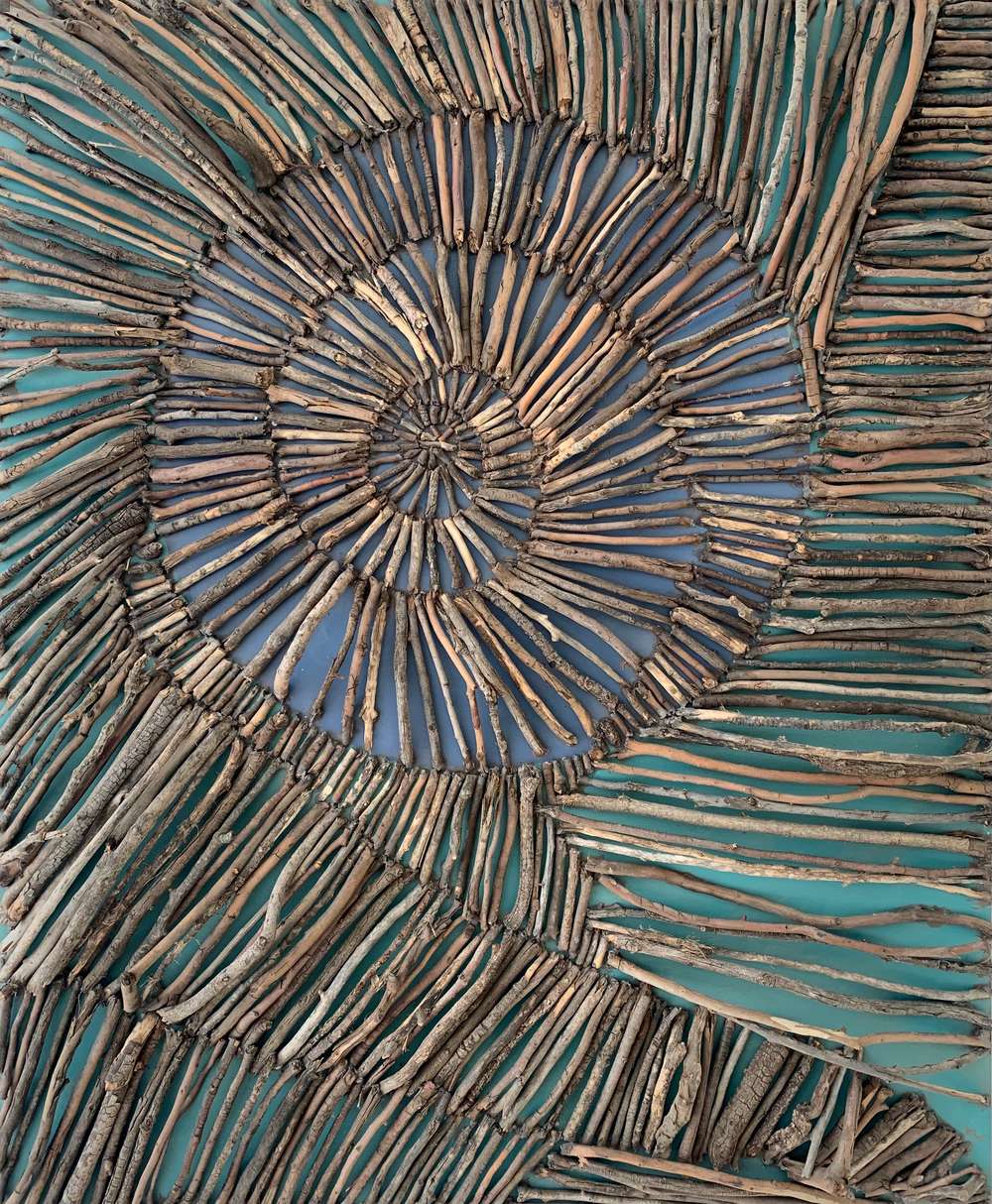
Fight or Flight
Mixed media
R4000
Flight

Flight
Oil on Canvas
R2100
Graves into gardens
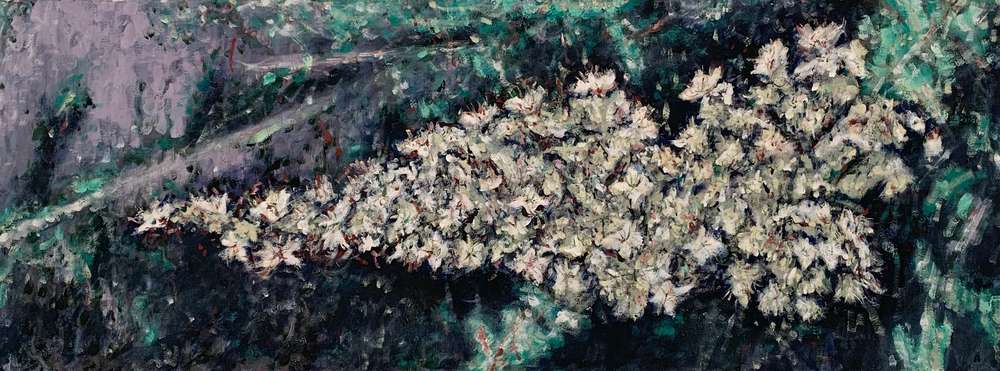
Graves into gardens
Oil on Canvas
R2300
SOLD
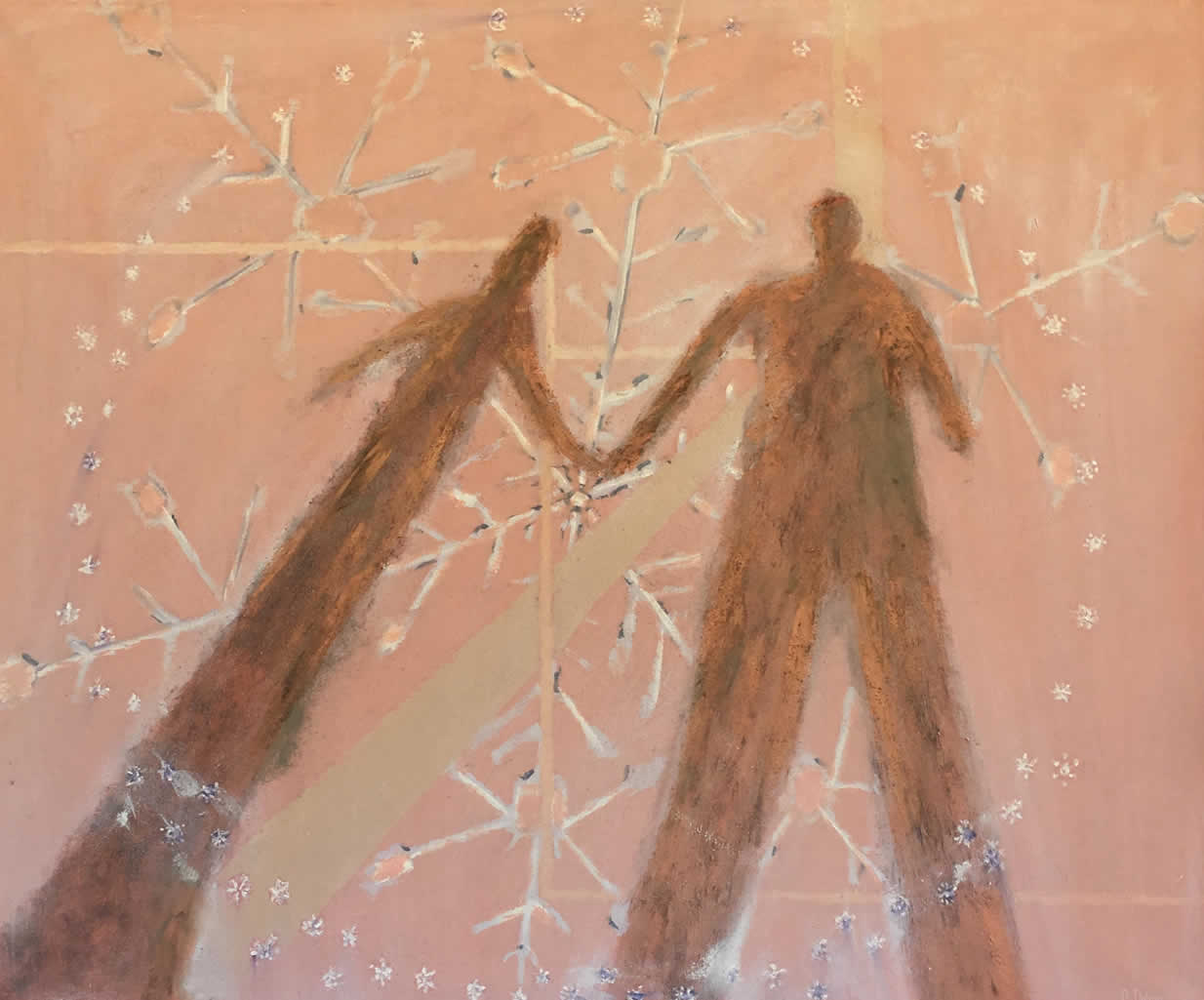
If I can be close enough we can be one I
Incense and oil on canvas
R4500
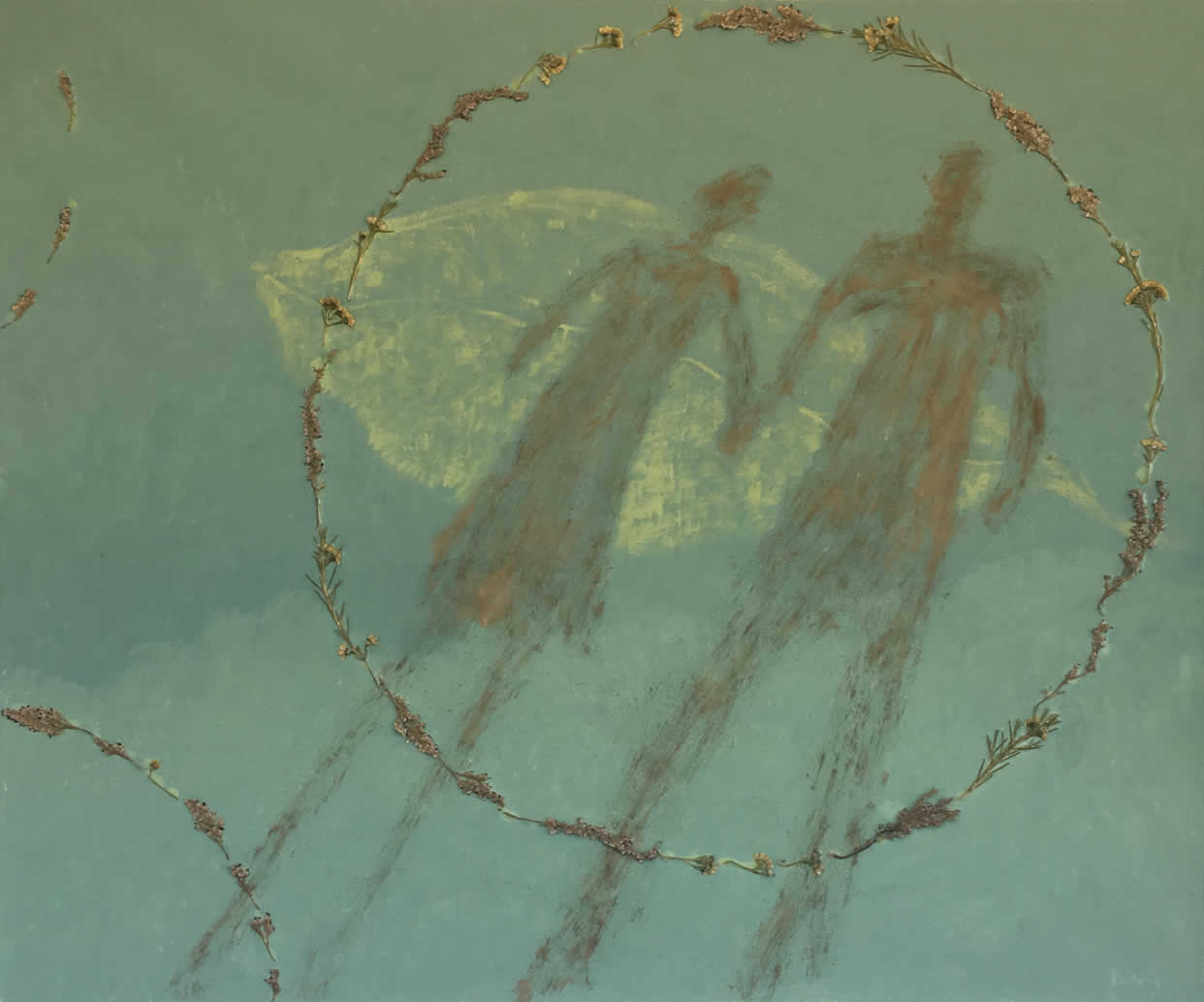
If I can be close enough we can be one II
Incense, flowers and oil on canvas
R4500
If I can be close enough
we can be one.
If I can be with you
we can become
eternally one.
Eternally one
we can become.
If I can be next to you,
if I can be true.
If I can be yours
through and through.
Then we can become
eternally one,
eternally one
we can become.
If I can be faithful,
if I can be me,
then I will be yours
and I will be free.
Cause you are the one
who eternally won,
eternally won
me.
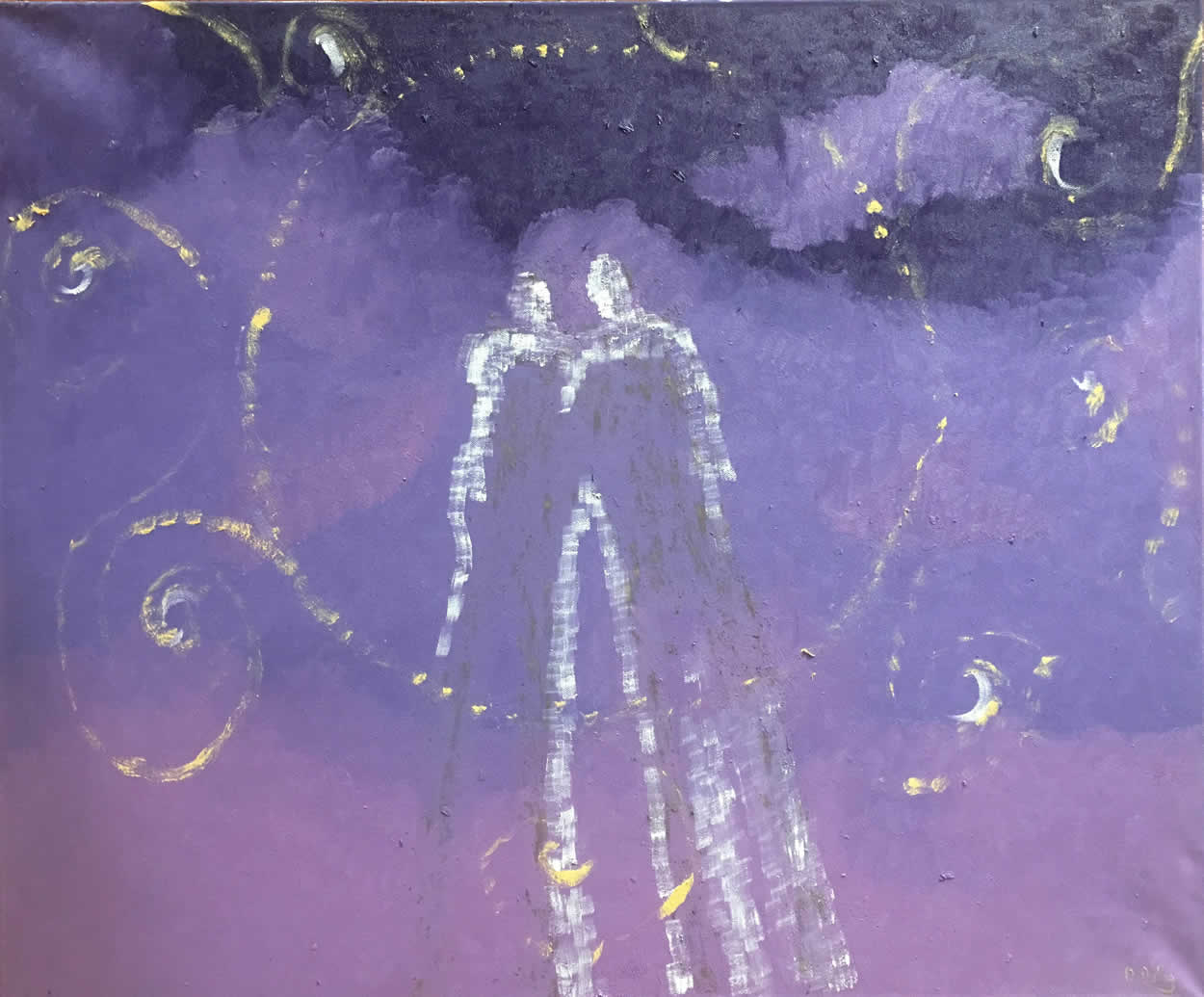
If I can be close enough we can be one III
Incense and oil on canvas
R4500
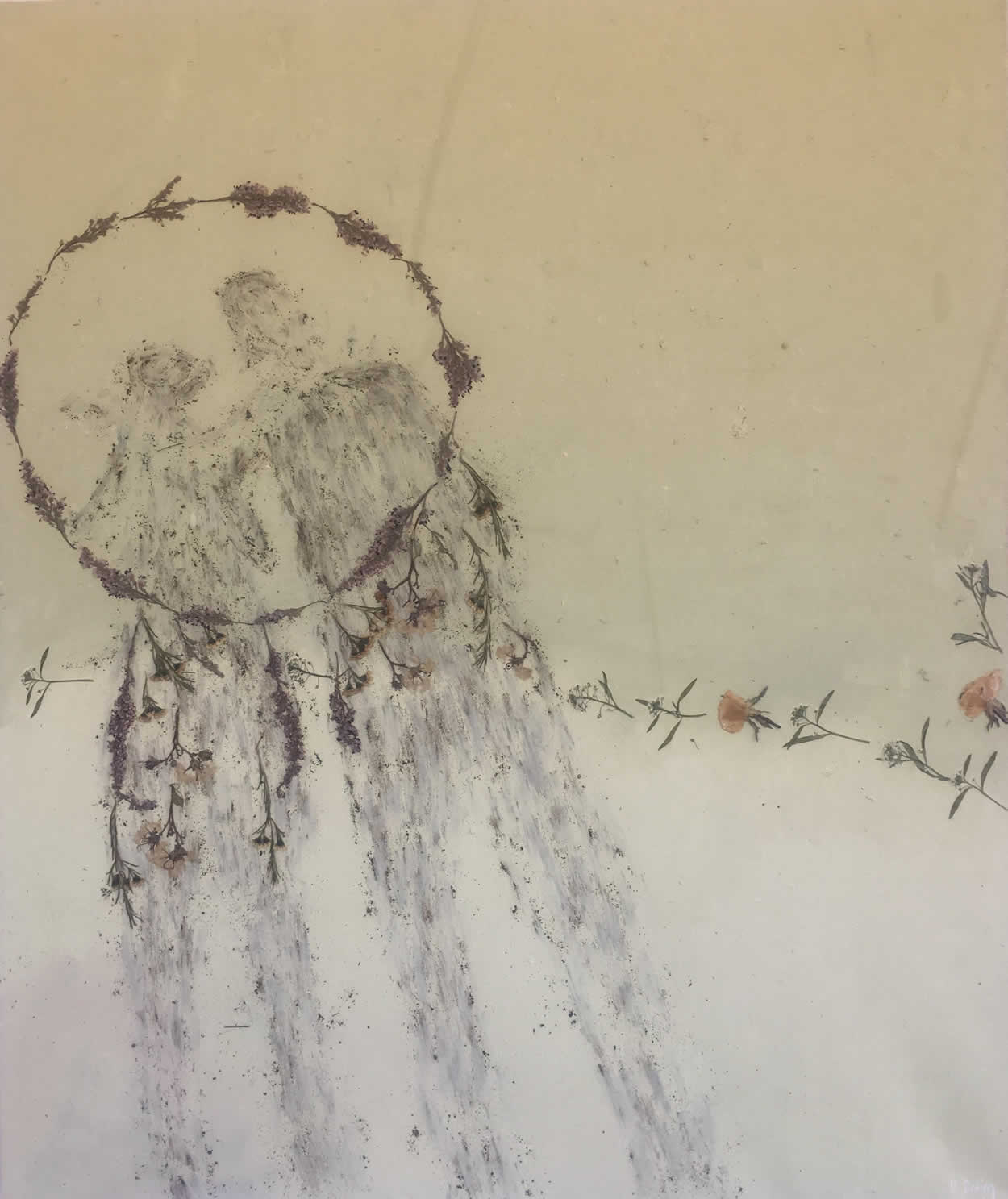
If I can be close enough we can be one IV
Incense, flowers and oil on canvas
R4500
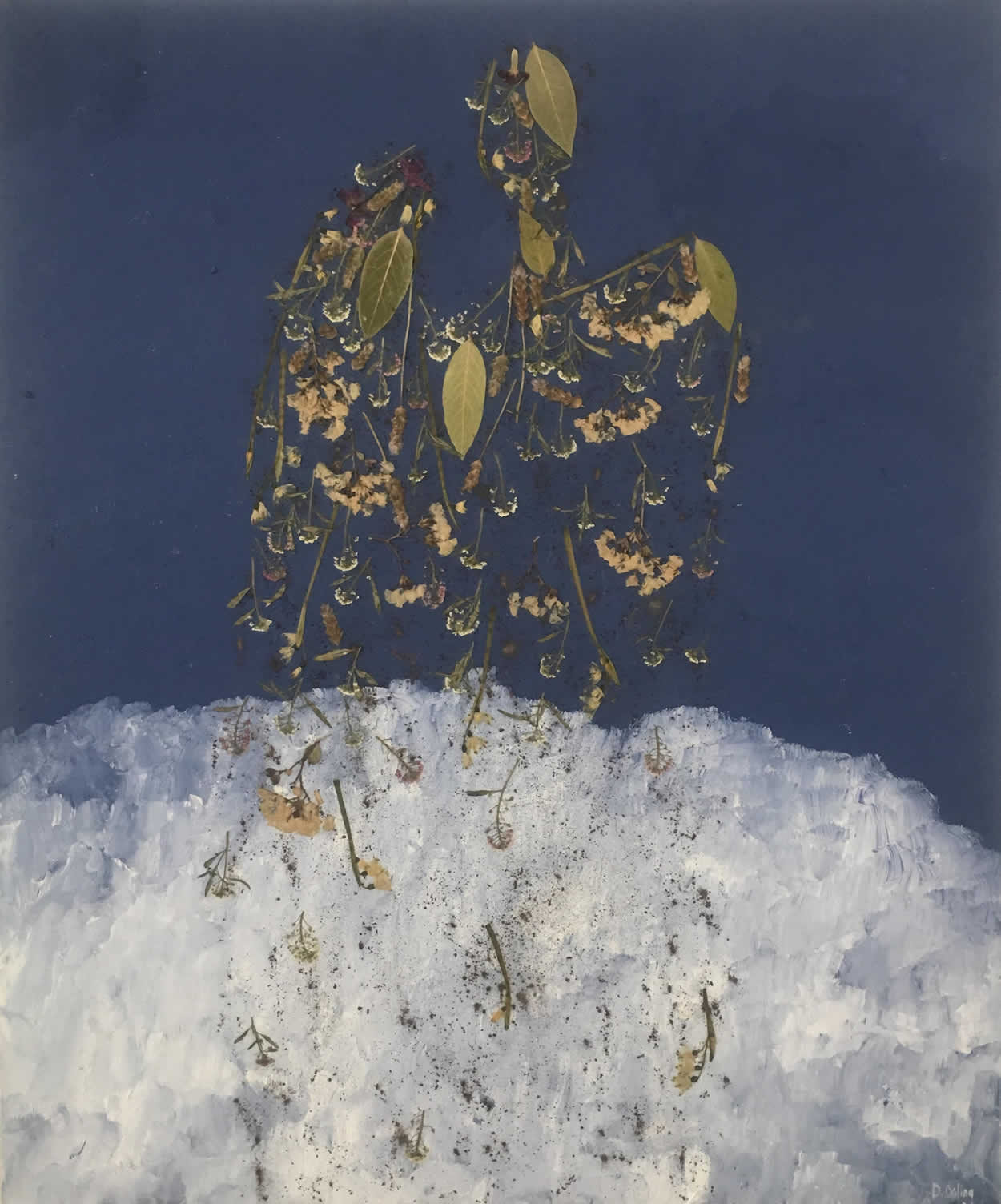
If I can be close enough we can be one V
Incense, flowers and oil on canvas
Not for sale
Let it Rain
Dirkje Daling
Looking at rain not only as a physical necessity, but also as symbolism for blessing and spiritual refreshment, I have approached the work for this exhibition to portray both.
The more abstract works, and photographic prints, are visual representations of spiritual truths, goals, experiences, concerns, and joy – that I would like to share with the viewer in my language, which is art.
The nature scenes speak of the joy we experienced in the village after long-awaited rain. The titles reflect the person who took the photograph that was used for reference.
I hope you enjoy this exhibition, and that you will gain from it.
Let it rain!
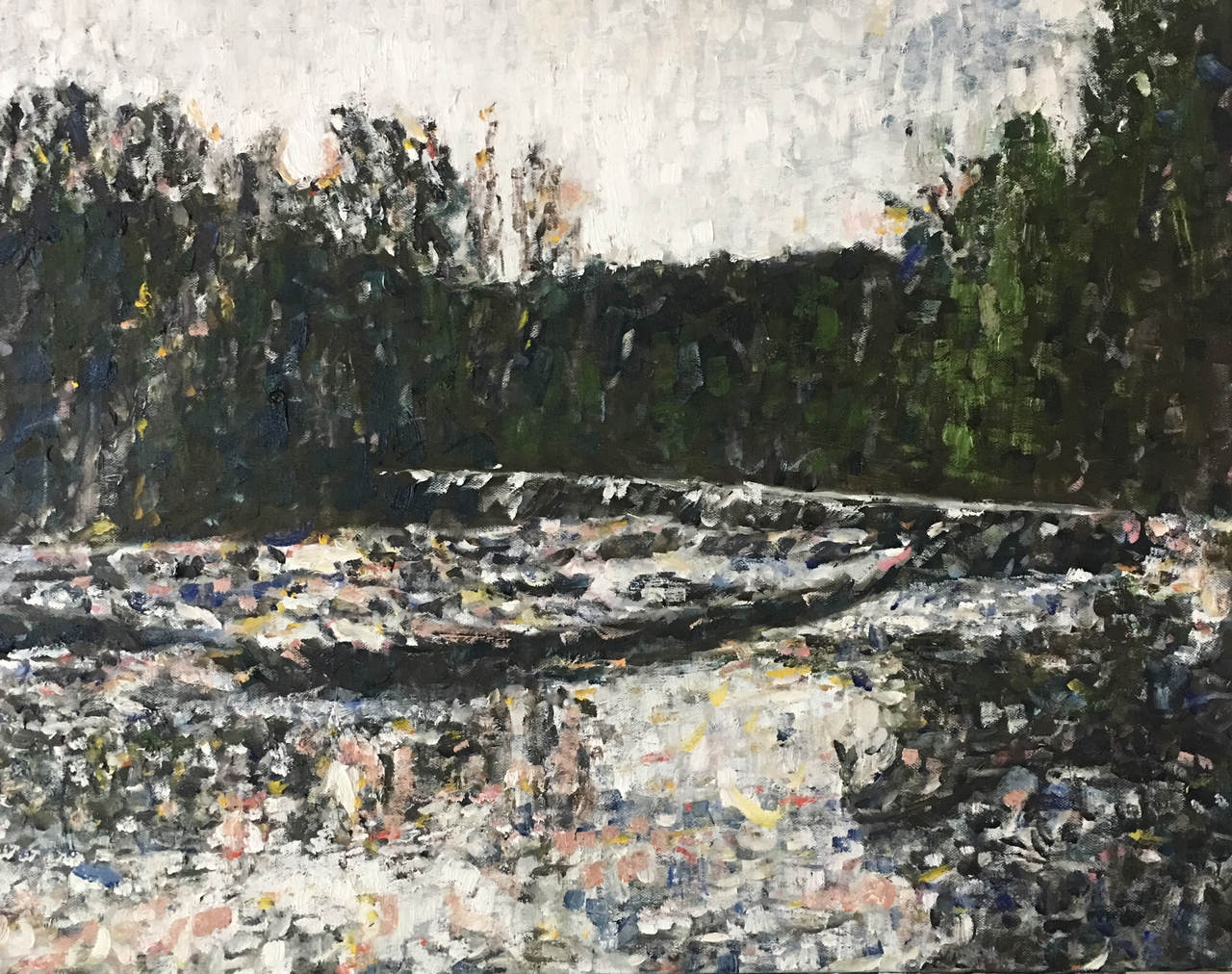
Jacqui
Oil on Canvas
56 cm x 71 cm
SOLD
Joy:
feeling or state of great delight or happiness

Joy
Oil on Canvas
R400
I have used rainfall records for the past 100 years, supplied by Peet van Heerden, of Doornberg Farm, just outside of Nieu-Bethesda.
Each column representing a month, and each row representing a year, I have started (top right corner – second last column) on the 1st of November 1919 and represented each month until 31 October 2020.
If the average rainfall for a specific month (calculated over this period) was, say 26mm, I rounded down to the nearest 10, ie. 20mm. Anything above this number, I painted with a blue/green shade of colour, to signify above-average rainfall for that month. Similarly, anything below this number was painted in a brown/earthy shade, to signify below-average rainfall for that month.
Any month with a 0 mm rainfall, was underlined in red.
The maximum over this 100 year period for any particular month, was painted white and the amount of rain for this month, given in the grey area below each column.
Should the buyer want this (and be in close enough proximity), I can use the grey strip below to ‘update’ the painting as time goes on for the next two years.
Let it rain!

Let it rain.
Oil on Canvas
76 cm x 101 cm
SOLD
Let it Rain
Dirkje Daling
Looking at rain not only as a physical necessity, but also as symbolism for blessing and spiritual refreshment, I have approached the work for this exhibition to portray both.
The more abstract works, and photographic prints, are visual representations of spiritual truths, goals, experiences, concerns, and joy – that I would like to share with the viewer in my language, which is art.
The nature scenes speak of the joy we experienced in the village after long-awaited rain. The titles reflect the person who took the photograph that was used for reference.
I hope you enjoy this exhibition, and that you will gain from it.
Let it rain!
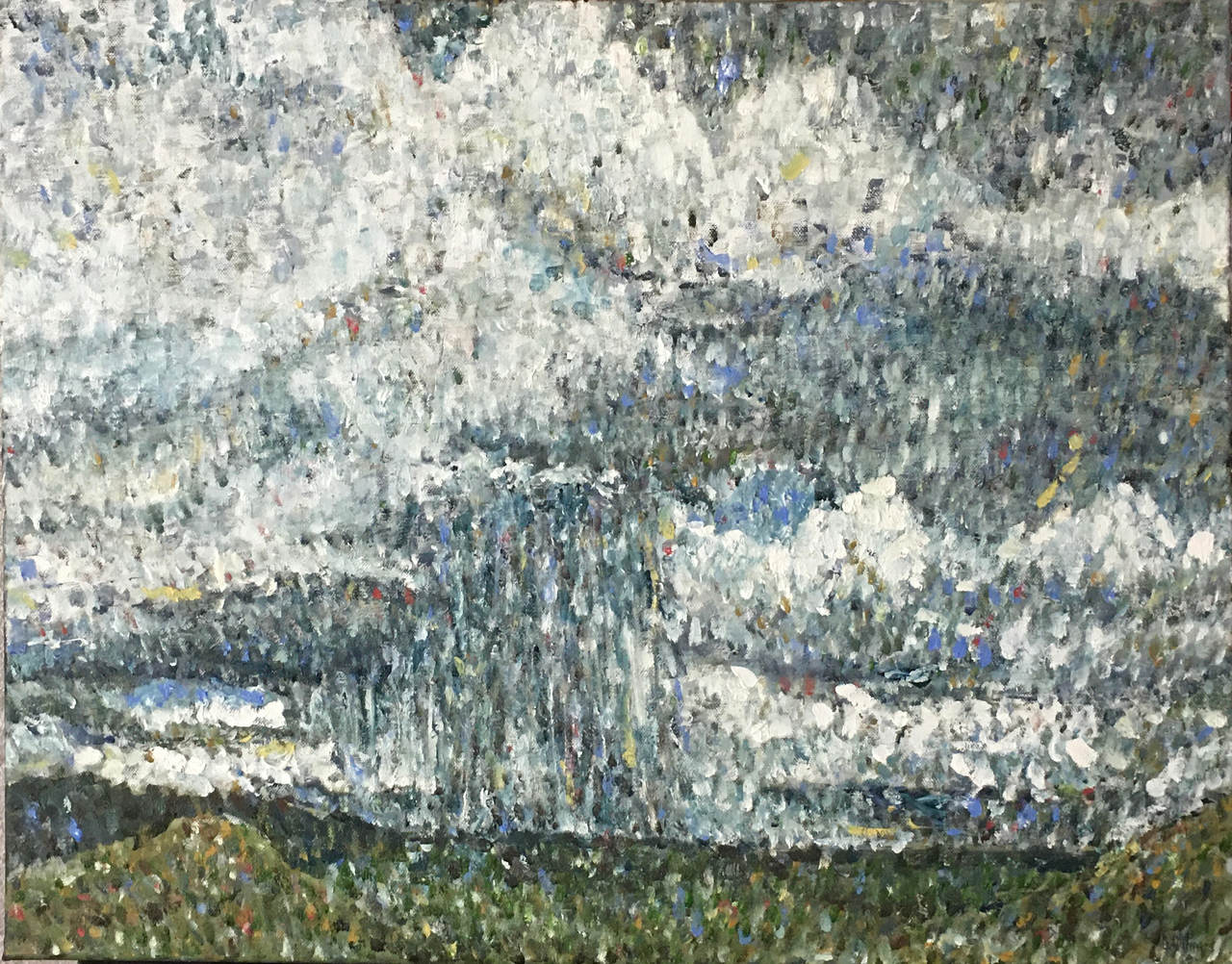
Ludolf and Carla
Oil on Canvas
56 cm x 71 cm
SOLD
Let it Rain
Dirkje Daling
Looking at rain not only as a physical necessity, but also as symbolism for blessing and spiritual refreshment, I have approached the work for this exhibition to portray both.
The more abstract works, and photographic prints, are visual representations of spiritual truths, goals, experiences, concerns, and joy – that I would like to share with the viewer in my language, which is art.
The nature scenes speak of the joy we experienced in the village after long-awaited rain. The titles reflect the person who took the photograph that was used for reference.
I hope you enjoy this exhibition, and that you will gain from it.
Let it rain!

Mindfulness – finding stillness within
Oil on Canvas
R1500
51 cm x 51 cm
Out of the grave like Lazarus

Out of the grave like Lazarus
Mixed media
R2300
Penny for your thoughts
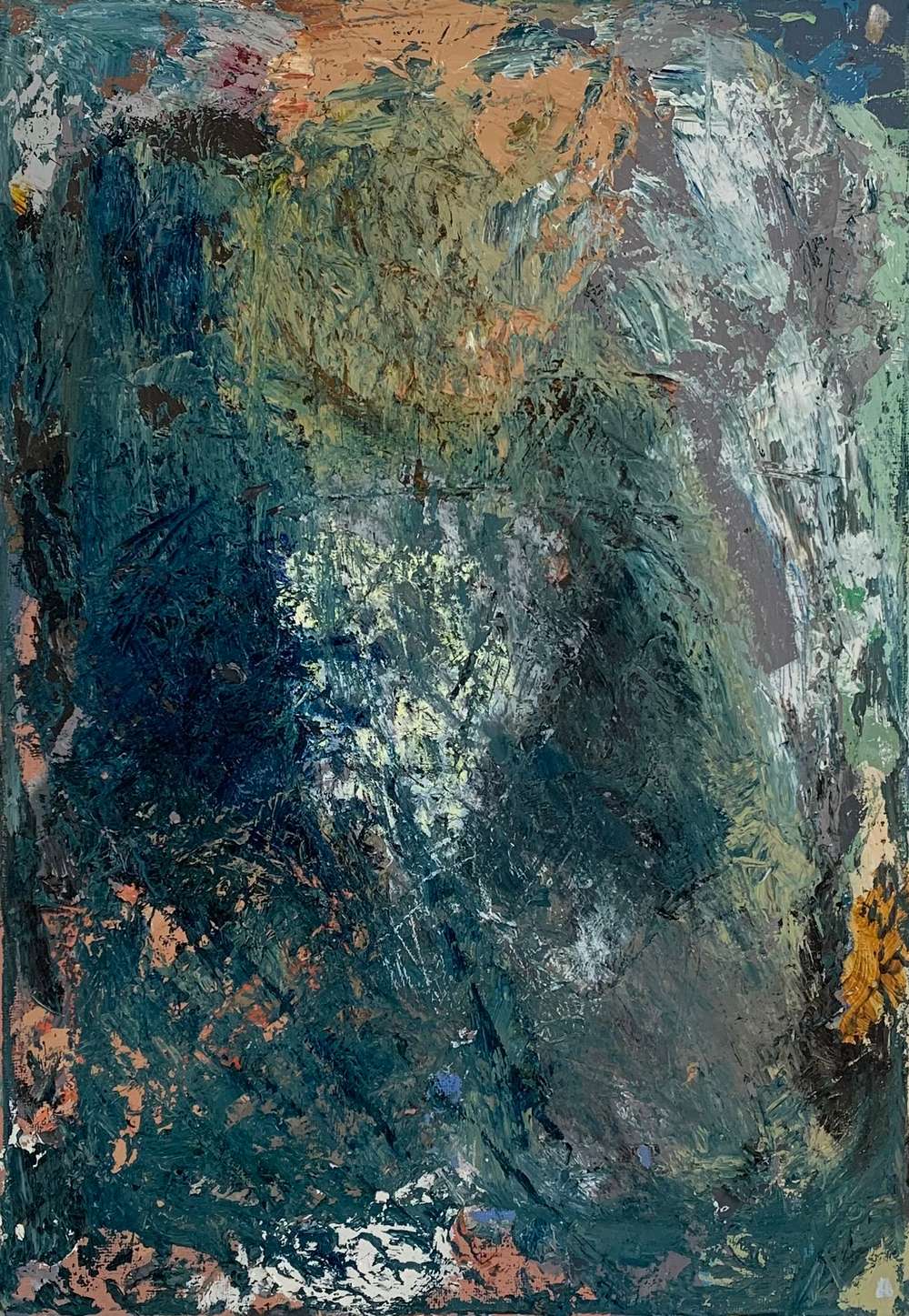
Penny for your thoughts
Oil on Canvas
R400
SOLD
Relief:
alleviation, ease, or deliverance through the removal of pain,
distress, oppression, etc
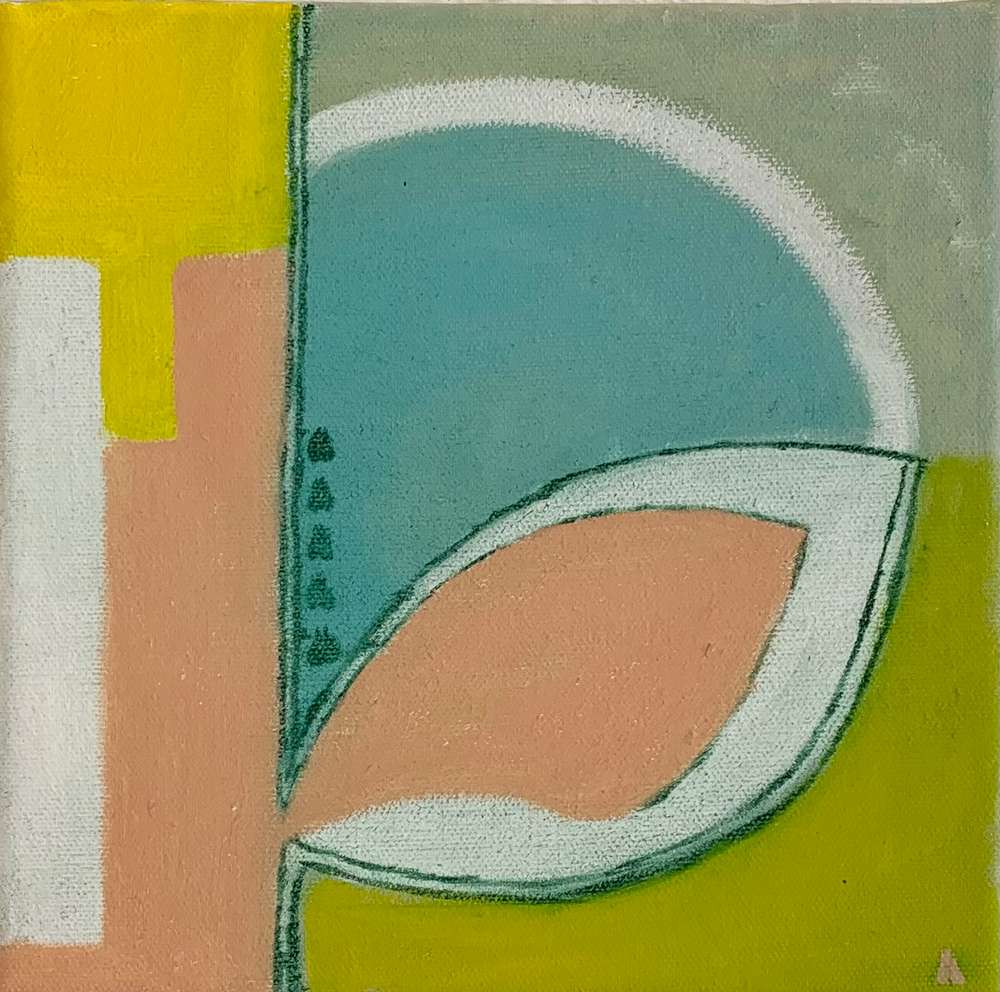
Relief
Oil on Canvas
R400
Resolve
to come to a definite or earnest decision about
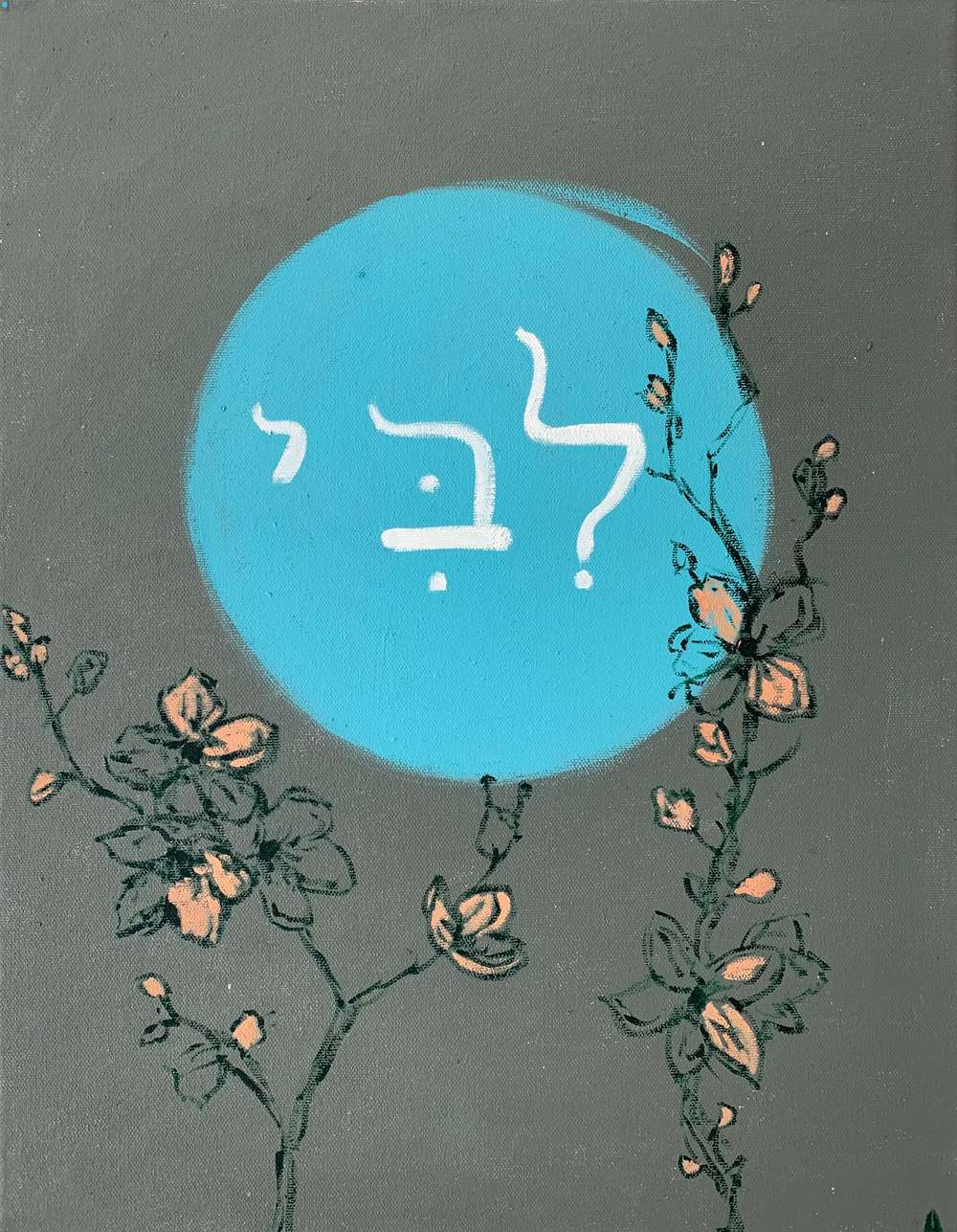
Resolve
Oil on Canvas
R1000

Dove
Mixed media
Sold

Fountain
Mixed media
Sold

Lily
Mixed media
R1000
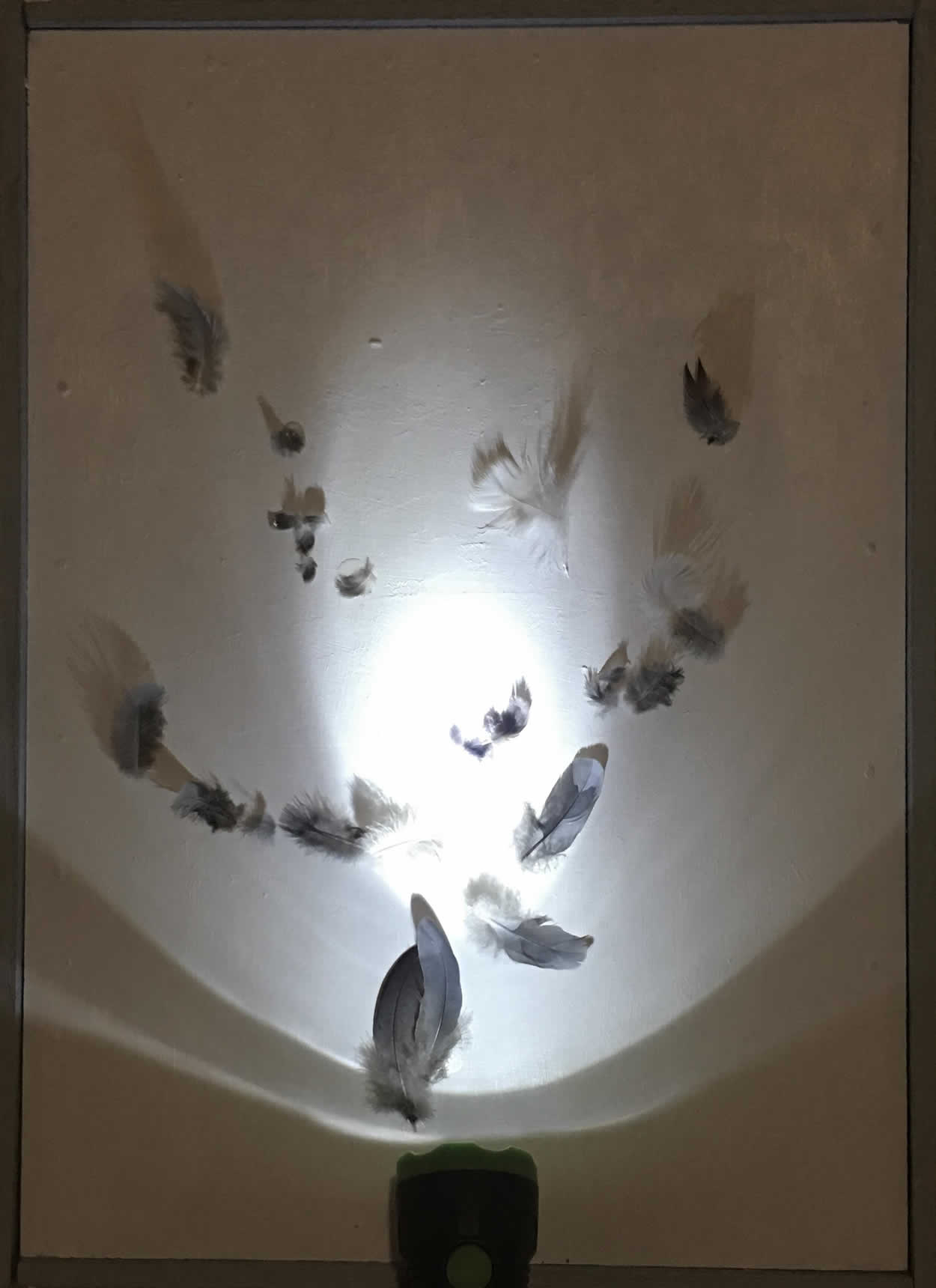
Fragrance
Mixed media
R1000
Shadow
: an imperfect and faint representation
: a slight suggestion
: a hint or faint, indistinct image or idea
: an imitation or inferior version
: that which is only a vague reflection of something real and concrete
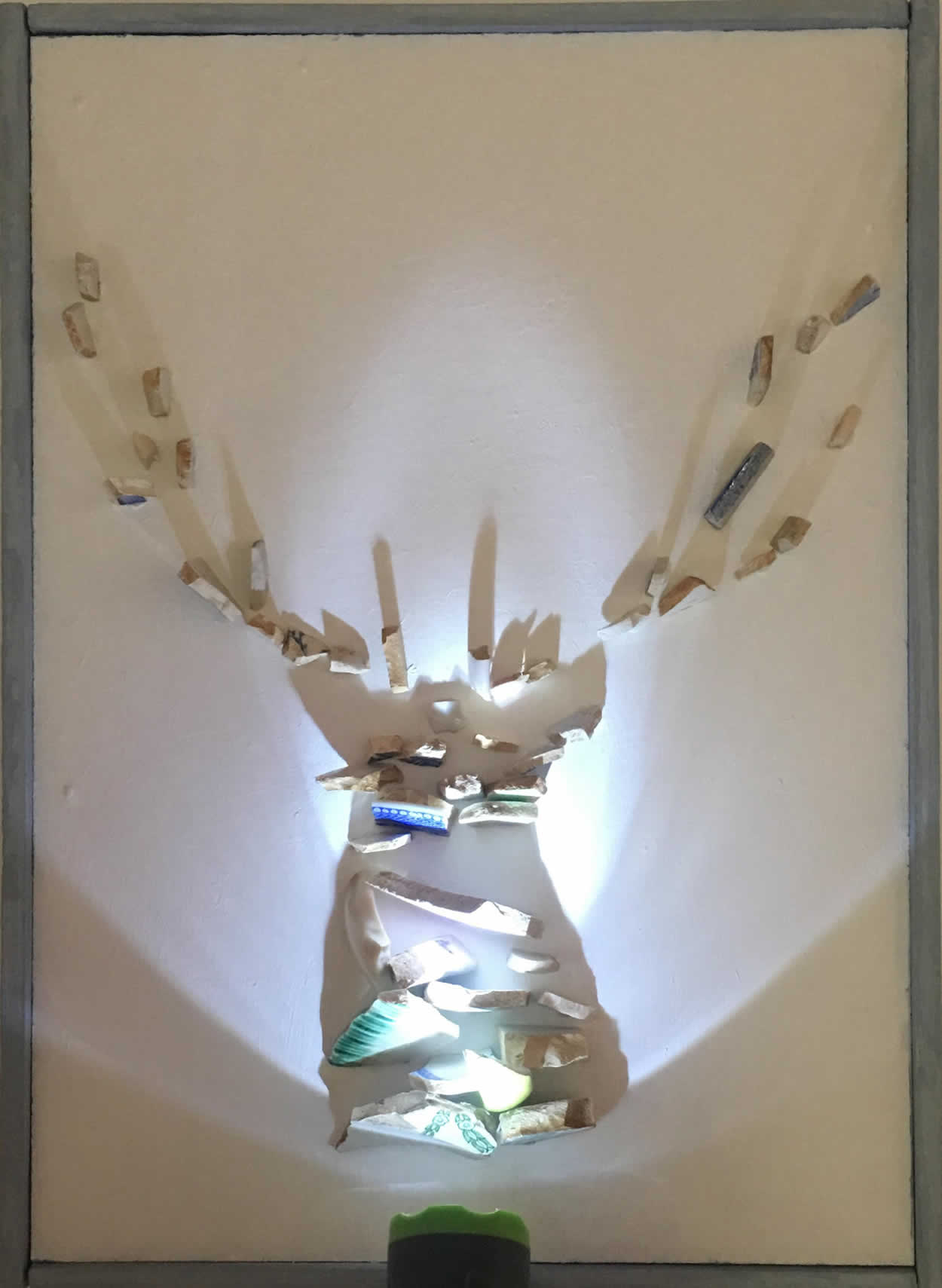
Gazelle
Mixed media
Sold
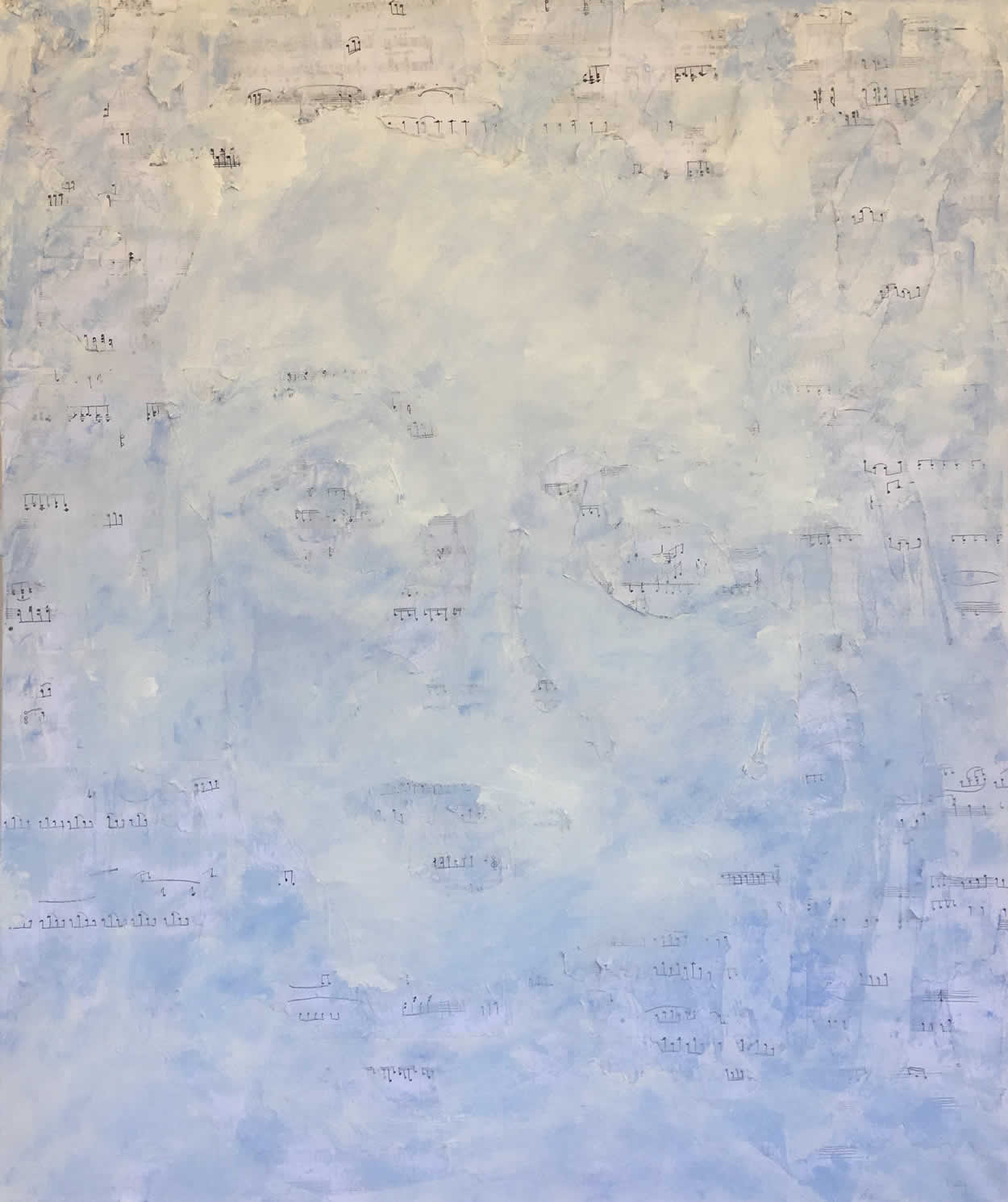
Sky, are you listening?
Sheet music and oil on canvas
R4500
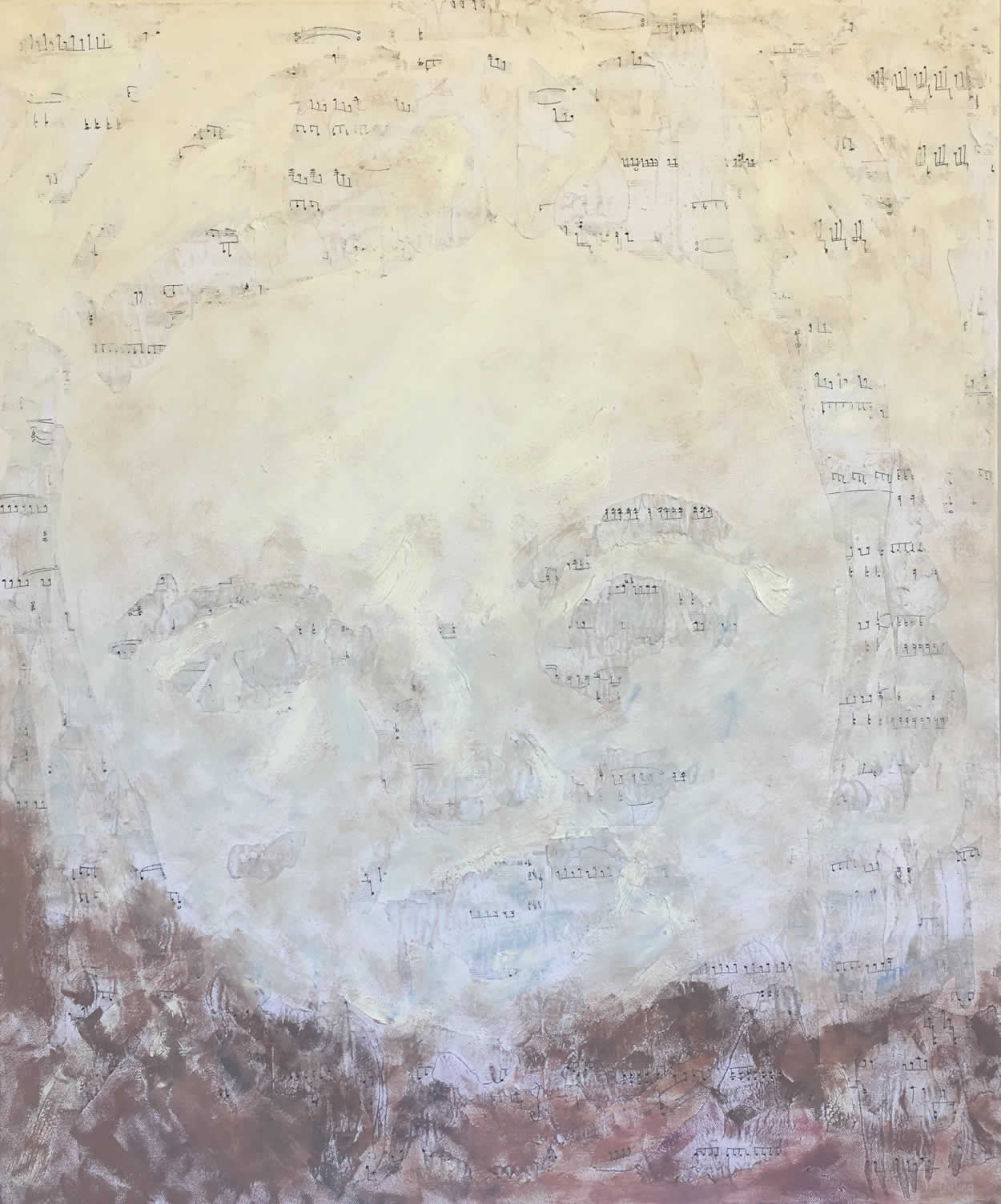
But can you listen?
Sheet music and oil on canvas
R4500
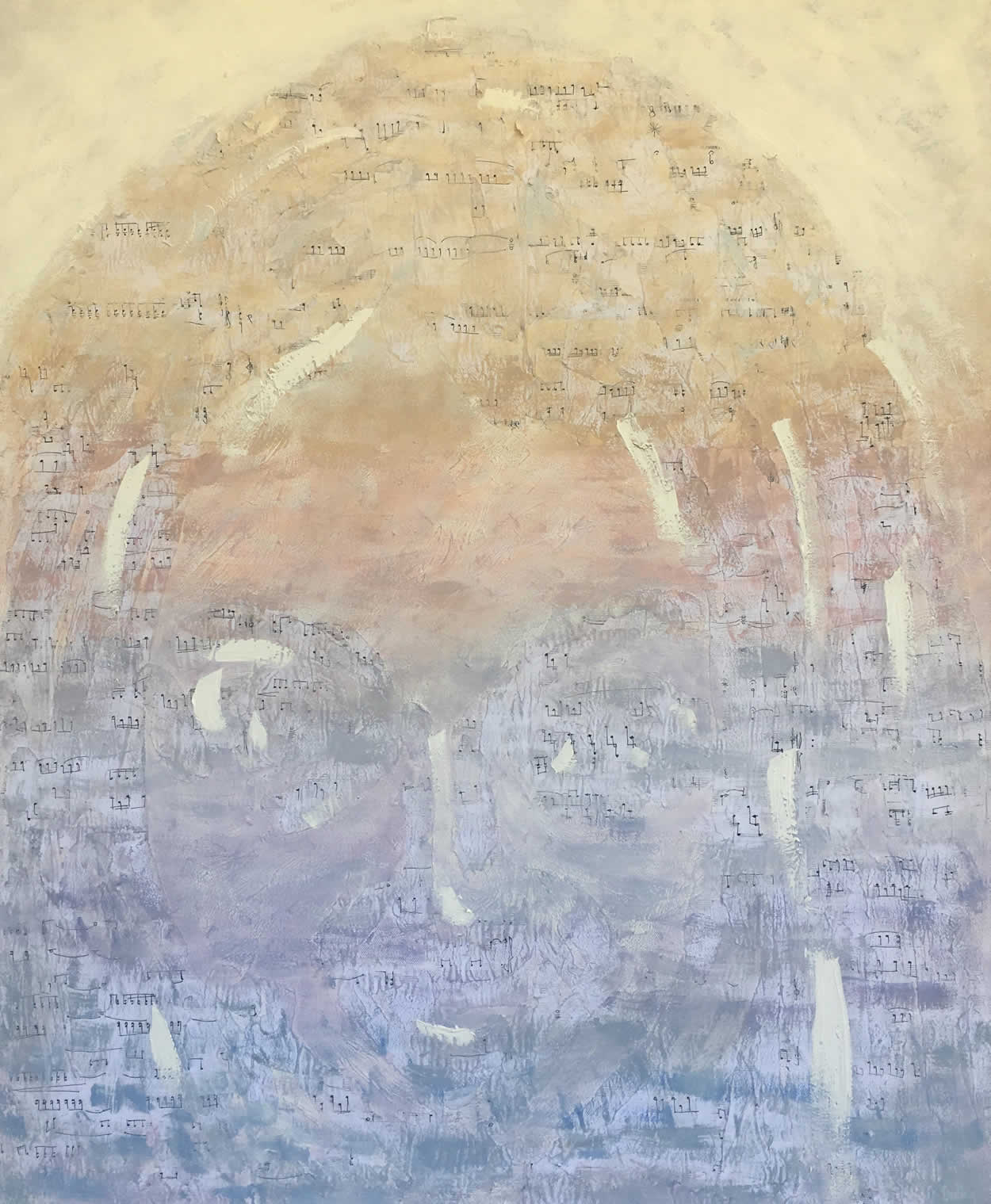
I know you can hear
Sheet music and oil on canvas
R4500
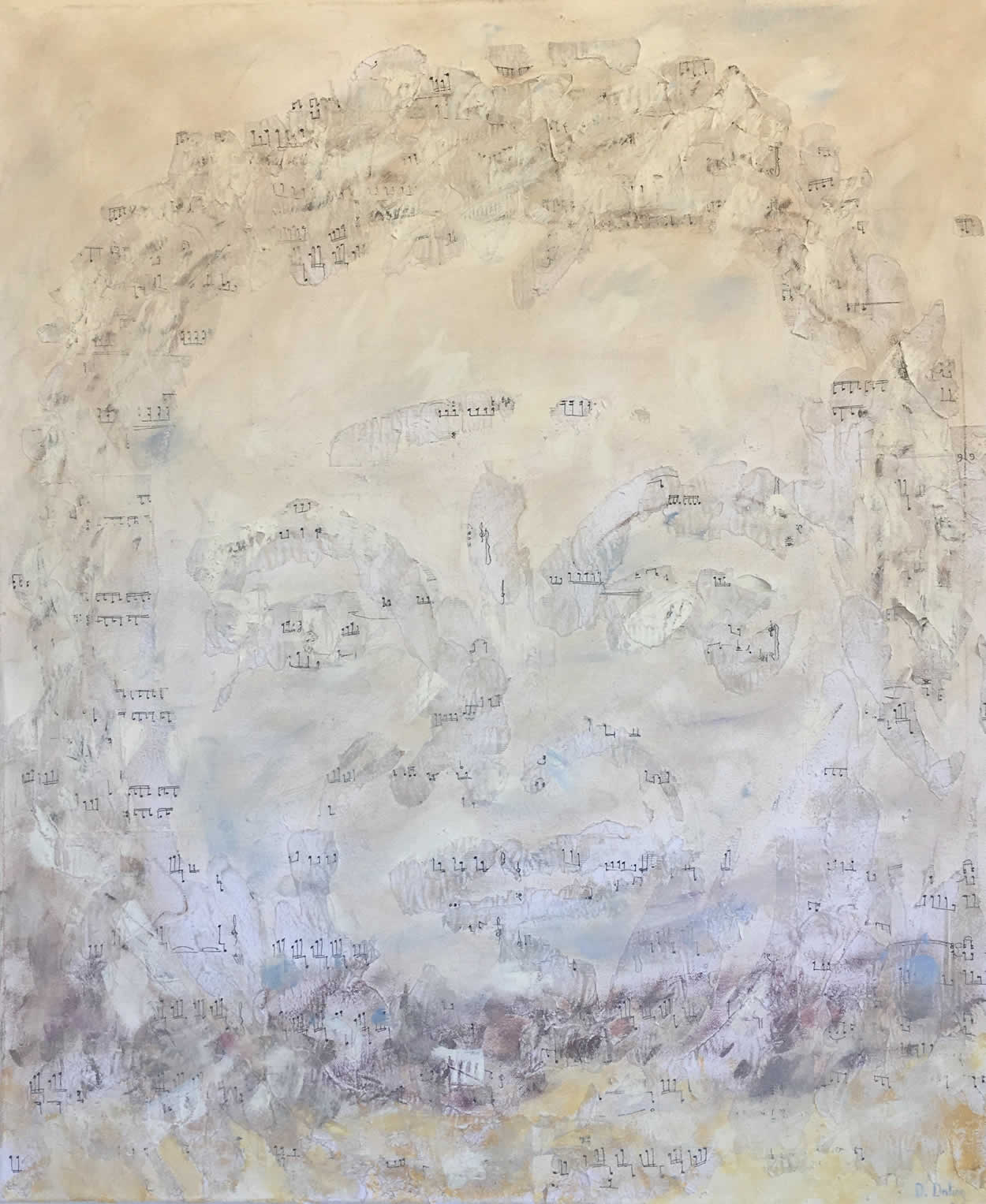
I would that you listen
Sheet music and oil on canvas
R4500
How much of what we do is perceived by nature? Could it be that we have a much bigger influence on our surroundings than what we normally think we do? And by that, I mean more than the consequences of our actions. I am referring to the influence our thoughts, and the condition of our hearts have on the trees, mountains and birds. For example, what is the effect of hatred, joy, bitterness or peace that you have inside, on the ground you walk on?
Scripture refers in various places to ‘the trees clapping hands and singing’, or the ‘hills and heavens rejoicing’, the ‘earth crying out’ or ’groaning for a specific day’.
You say it’s figurative speech. I agree.
But could it be that, as so many other things in Scripture, this too has different levels of truth and meaning hidden inside? Could it be that we, in our understanding, has only scratched the surface?
Small beginnings I
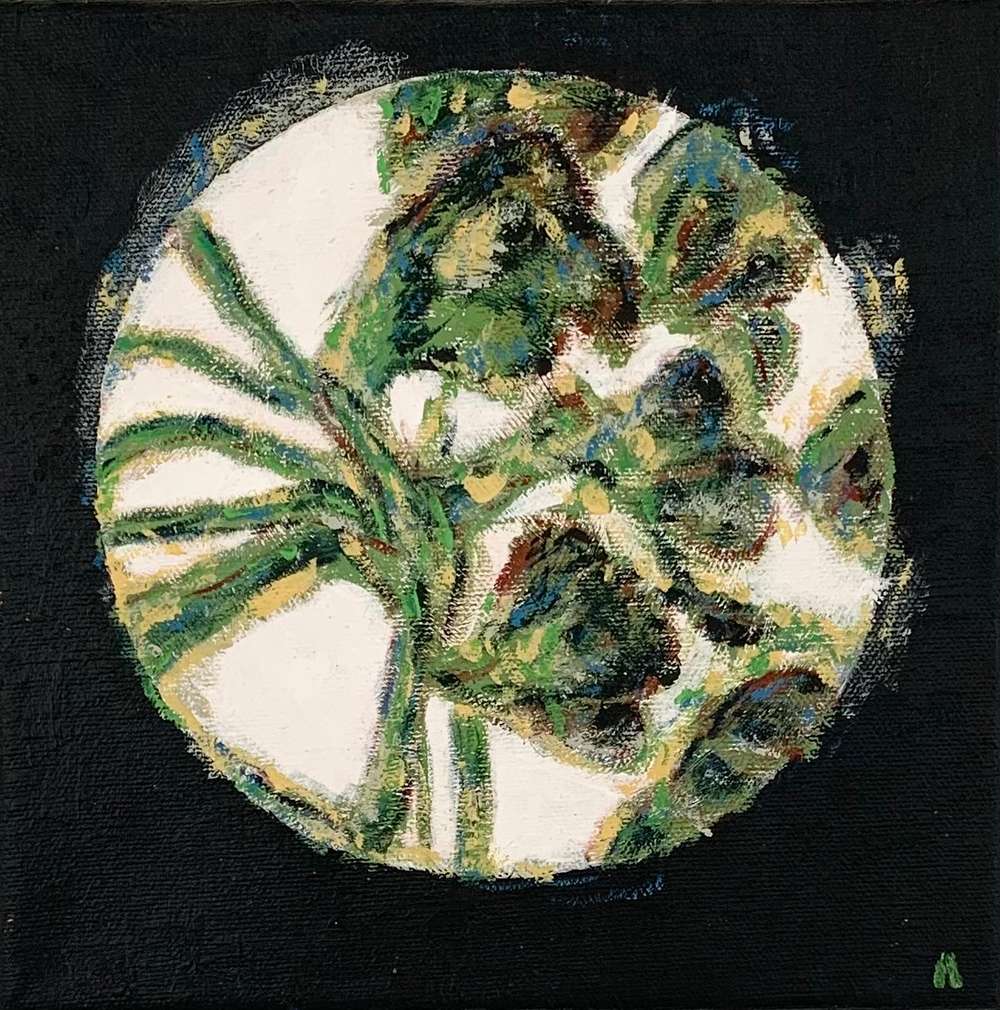
Small Beginnings I
Oil on Canvas
SOLD
Small beginnings II

Small Beginnings II
Oil on Canvas
SOLD
Small beginnings III
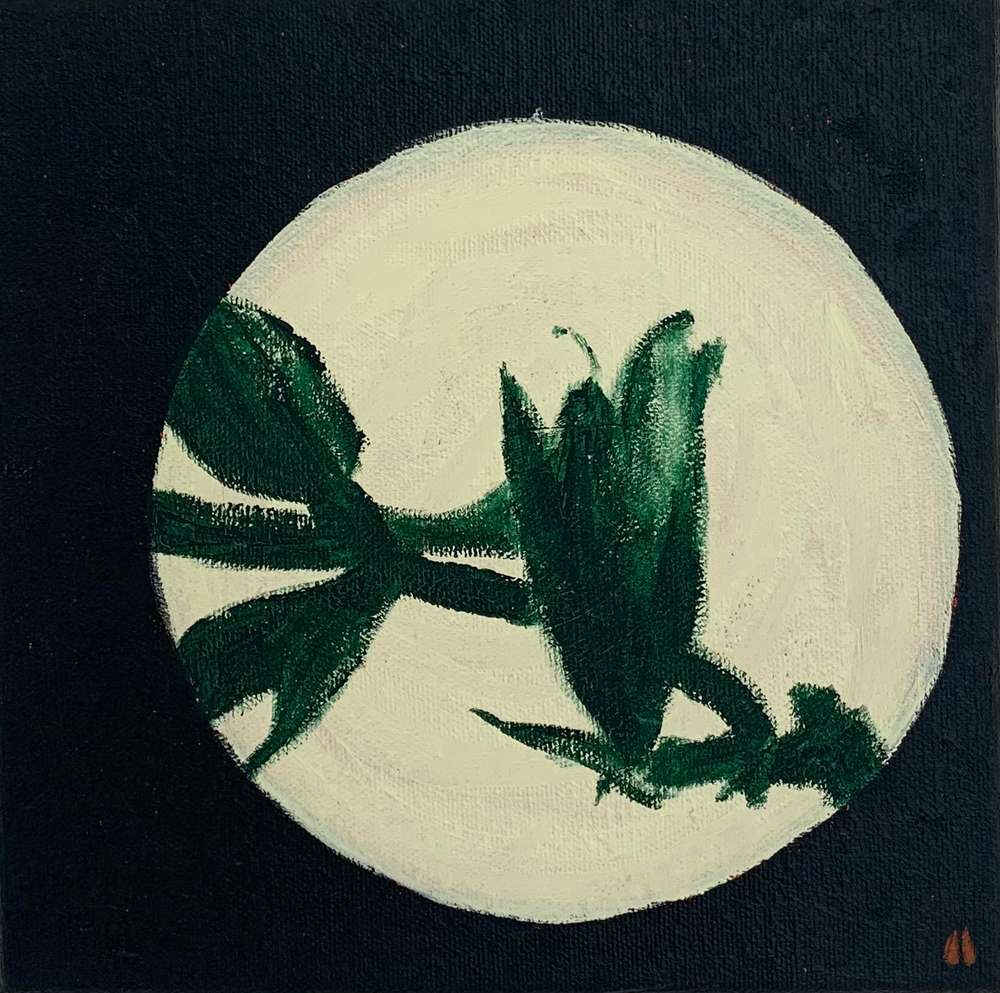
Small Beginnings III
Oil on Canvas
R400
Small beginnings IV
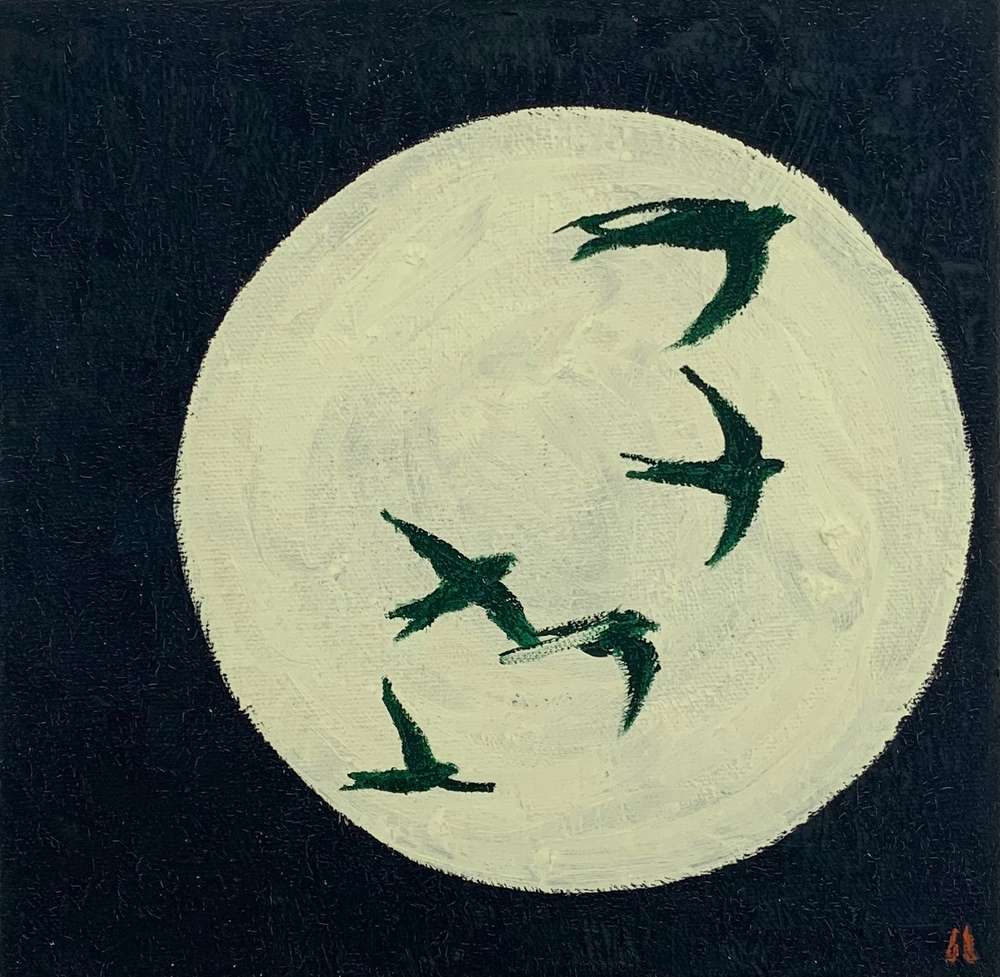
Small Beginnings III
Oil on Canvas
R400
“Sossusvlei kry water”
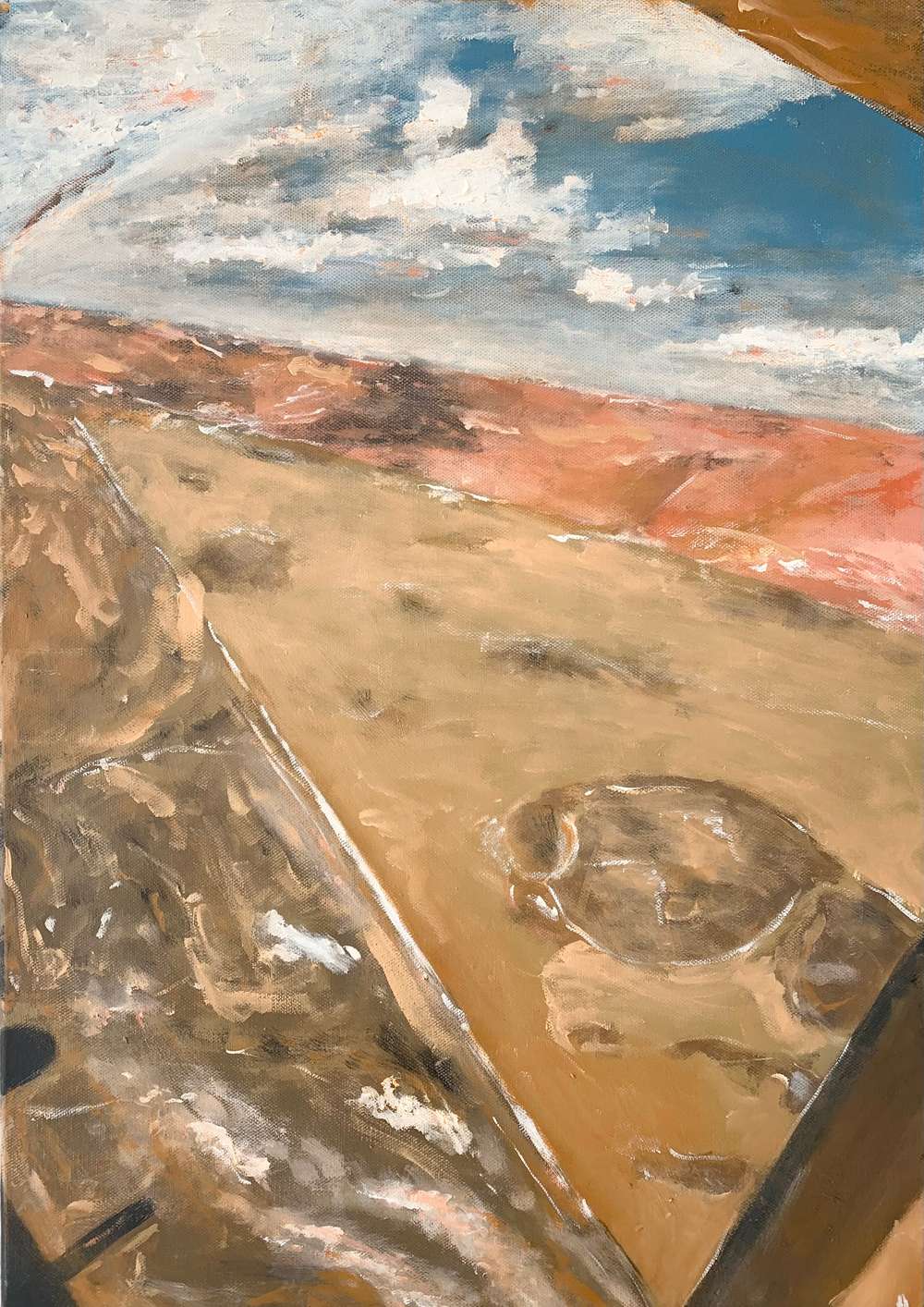
“Sossusvlei kry water”
Oil on Canvas
R1800
“Sossusvlei kry water II”
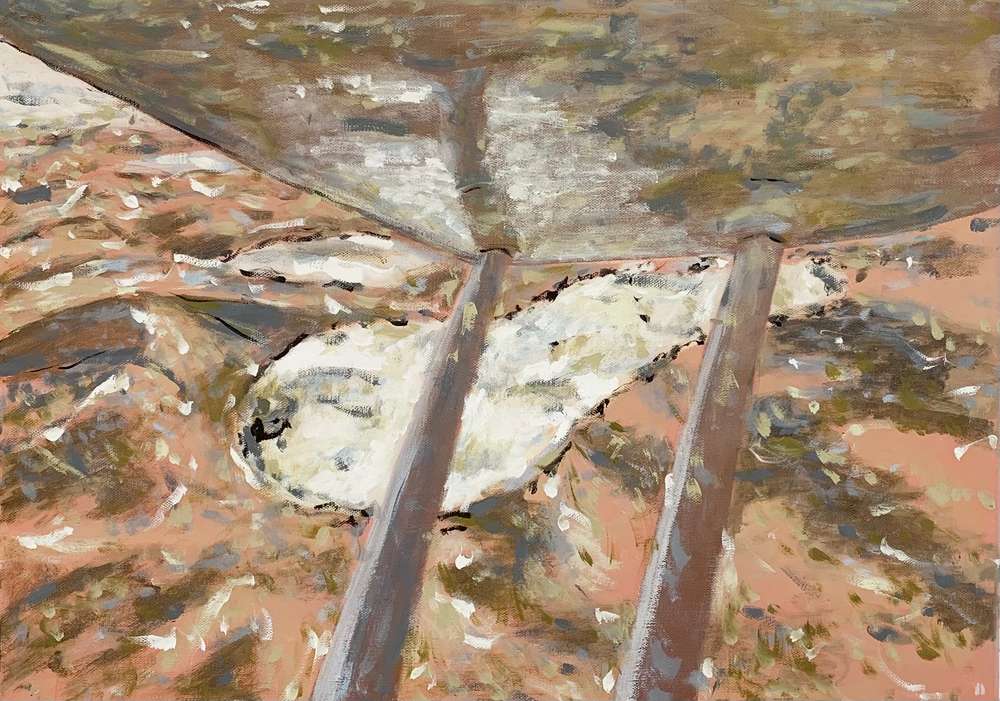
“Sossusvlei kry water II”
Oil on Canvas
R1800
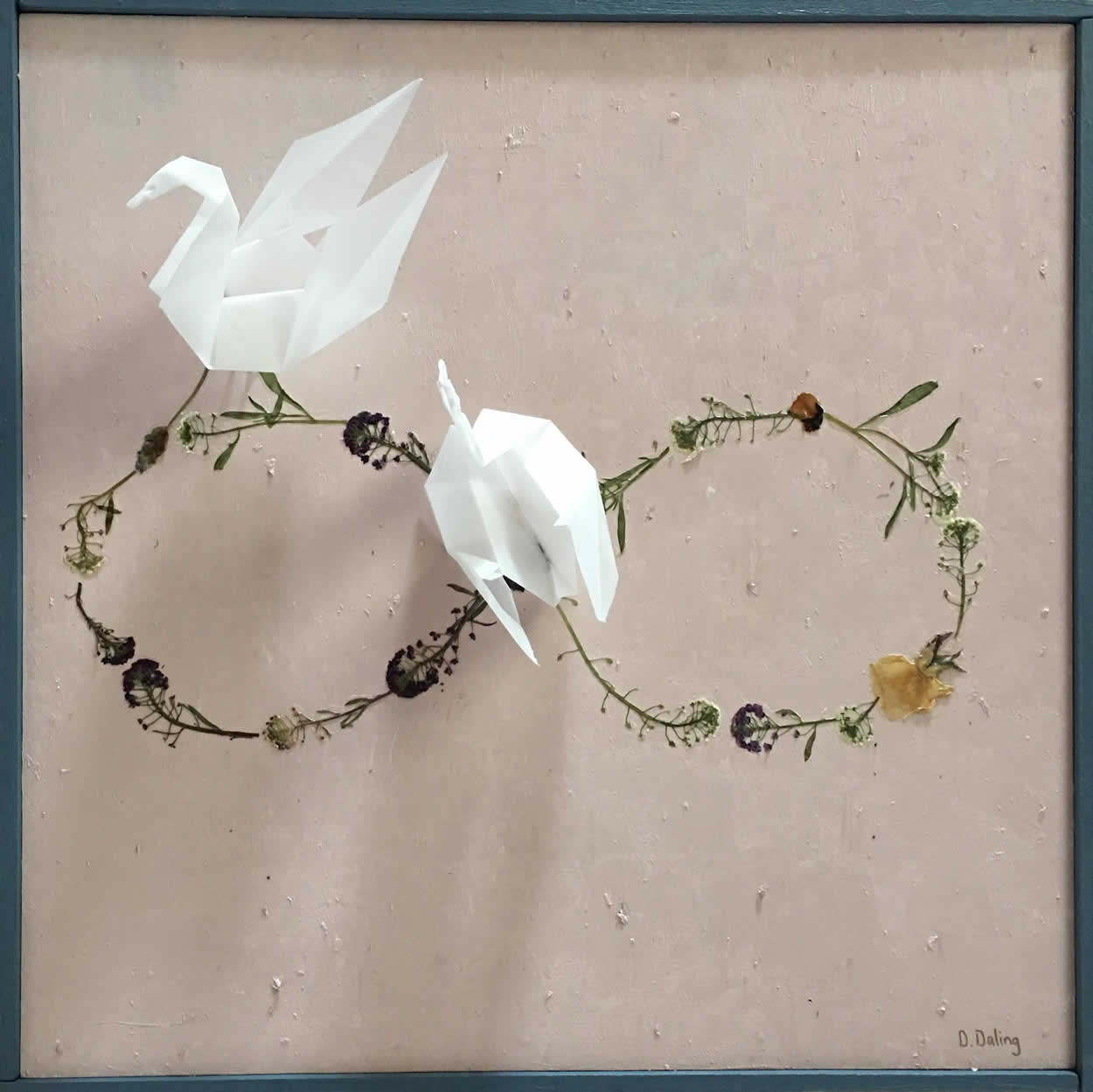
Study in shadows I
Mixed media
Sold

Study in shadows III
Mixed media
Sold

Study in shadows II
Mixed media
R1500
Sold

Study in shadows IV
Mixed media
Sold
May we become what we were meant to be,
eternally.
May we fly,
or swim deep and hidden.
May we progress,
and be forgiven.
THE BLESSED OUTCOME
Worthy is the Lamb that was slain to receive power, and riches, and wisdom, and strength, and honour, and glory, and blessing.
Revelation 5:12
This is the myriad-voiced response of the heavenly world to the triumphant song of the redeemed after the Church has run its earthly course. It immediately follows that time, now near at hand, when the great voice from the sky, as of a trumpet, shall say, to all the holy dead and to all God’s saints, “COME UP HITHER.” The whole scene represents that heavenly condition of the elect to be realized at the fulfilment of the apostolic word, which says, “The Lord himself shall descend from heaven with a shout, with the voice of the archangel, and with the trump of God: and the dead in Christ shall rise first: then we which are alive and remain shall be caught up together with them in the clouds, to meet the Lord in the air” (1 Thess. 4:16, 17). It is the same scene to which Jesus himself referred when He said: “Wheresoever the body is, thither will the eagles be gathered together” (Luke 17:37). And it is precisely this scene that is signified by the eighth sign of the Zodiac – the last of the quaternary relating more especially to the Church.
The text celebrates the worthiness, glory, and dominion of the Lamb, who is further described as appearing to have been slain, but here as standing in the midst of the throne, having the perfection of strength and wisdom, and the fullness of spiritual and divine energy operative in the world for the complete salvation of His people; for this is what is meant by the “seven horns and seven eyes – the seven Spirits of God sent forth into all the earth.” And in the sign of Aries we have this same Lamb, or Prince of the flock, the Son of man as the Head, Sacrifice, and High Priest of the Church, lifted up upon the path of the Sun, looking forth in the repose of power, and working that very translation and glorification of His people which the Scriptures everywhere set before us as the blessed hope of all saints.
To this interesting presentation, then, let us now direct our attention.
THE SIGN OF ARIES
The figure here is that of a vigorous Ram.
It is called Aries, the Chief, the Head; as Aryan means the Lordly. So Christ is the Chief, the Head and Lord of His Church. The English name, Ram, means high, great, elevated, lifted up. In Syriac the name is Amroo, the Lamb, the same as John 1:29, where it is said, “Behold the Lamb of God, which taketh away the sin of the world;” also the Branch, the Palm-branch, recognized by the Jews as denotive of Christ’s royal coming to His Church. The Arabic calls this figure Al Hamal, the Sheep, the Gentle, the Merciful.
The principal stars included in this figure are called El Nath or El Natik, and Al Sharetan, which mean the Wounded, the Bruised, the Slain. Over the head of the figure is a triangle, which the old Greeks said exhibited the name of the Deity, and its principal star bears a name signifying the Head, the Uplifted, hence the Lamb exalted to the divine glory, to the throne of the all-holy One.
It is unreasonable to suppose that all this could have happened by mere accident. There was manifestly some intelligent design by which the whole was arranged. And the entire presentation is in thorough accord with what the Scriptures say concerning the Seed of the woman. As the Son of man He is continually represented as the Head and Prince of the flock, the Lamb – “the Lamb that was slain” – the Lamb lifted to divine dominion and glory. In His pure, meek, and sacrificial character the Scriptures style Christ “the Lamb of God, which taketh away the sin of the world.” In His exaltation He is represented as “the Lamb in the midst of the throne.” In the administrations of judgment upon the wicked world He is contemplated as the Lamb, whose wrath is unbearable. As the Bridegroom and Husband of the Church He is also the Lamb, to whose marriage-supper the Gospel calls us. As the Keeper of the Book of Life in which the names of the saints are written, the Lifter of the title-deed of our inheritance, and the Breaker of the seals by which the earth is purged of usurpers and the mystery of God completed, He is presented as “the Lamb.” As the consociate of the eternal Father in the joy and sovereignty of the world to come, in which the saints glory for ever and ever, He is still referred to as “the Lamb,” by whose blood they overcome and in whose light they live world without end. And in whatever attitude He appears, back of all He is still the Lamb.
THE MYTHIC STORIES
The mythic stories concerning Aries still further identify him with the Lamb of the text.
This noble and mysterious animal was given by Nephele to her two children, Phrixus and Helle, when Ino, their mortal stepmother, was about to have them sacrificed to Jupiter. It was by seating themselves on its back and clinging to its fleece that they were to make their escape. Nephele means the Cloud. She is reputed the queen of Thebes; and Thebes was the house, city, or congregation of God.
We thus have the cloud over God’s house, or congregation, precisely as the Scriptures tell of the cloud of God’s gracious manifestations to His ancient people – in their deliverance from Egypt, in their journeyings in the wilderness, and in their worship in the tabernacle and the temple. God visibly dealt with them as their merciful Guide, Instructor, Protector, and Ruler; and His gracious presence was almost uniformly manifested in the form of the cloud. Also in Job’s time “thick clouds” were His covering. It was by these cloud-manifestations that He called and formed the congregation of His people, assembled them around Him, and kept them in communion with himself as His Church or city.
The two children of the cloud are therefore the same with the two Fishes in the preceding sign; that is, the multitudinous twofold Church, which is born of these merciful divine manifestations. These children were all under sentence of death. So the Church, consisting of men who had fallen under the power of incoming sin, was in danger of being sacrificed. From such a fate believers are delivered by means of the blest “Lamb of God, which taketh away the sin of the world.”
This Lamb was furnished to these children from the same cloud of which they themselves are born; and so Christ was begotten by the power of the Highest coming upon and over-shadowing the Virgin of Nazareth, and upon himself at His baptism and transfiguration.
The safety of these children of the cloud rested exclusively in this Lamb, and so the name of Jesus is the only name given under heaven among men whereby we can be saved.
Both of them in fact were safe, and carried far aloft from Ino’s reach and power, so long as they both continued firmly seated on this Lamb; and so the Church is lifted far above all condemnation by virtue of its being planted on Jesus Christ as its Help and Redeemer.
Helle, one of these cloud-children, became giddy in the heavenly elevation to which she was lifted by this Lamb, lost her hold upon his back, and fell off into the sea, thereafter called Hellespont, or Helle’s Sea; and so the antediluvian Church apostatized and was drowned in the flood; as likewise the Israelitish Church, becoming giddy in its sublime elevation, let go its hold on the Lamb by rejecting Christ, and dropped from its heavenly position into the sea of the common world.
Phrixus, the more manly part of this mystic cloud-seed, held on to the mystic Lamb, and was brought in safety to Colchis, the citadel of reconciliation, the city of refuge. So likewise there has ever been a true people of God remaining faithful amid the apostasies around them, who never let go their hold on the Lamb of God, and are securely borne to the citadel of peace and salvation.
Nephele’s Lamb was sacrificed to Jupiter as those who were saved by him would have been without him; and so Christ, the true Aries, was sacrificed for us, and died in our stead. He is “the Lamb slain from the foundation of the world.” And it was this Lamb of Nephele that yielded the Golden Fleece, which made him who possessed it the envy of kings, and which constituted the highest treasure to be found by the children of men.
And this, again, is a most striking image of the heavenly robe of Christ’s meritorious righteousness, the sublimest and most enriching treasure and ornament of the Church, which ever sings –
“Jesus, Thy blood and righteousness
My beauty are, my glorious dress;
‘Midst flaming worlds, in these arrayed,
With joy shall I lift up my head.”
It is wonderful to see how these traditional legends of the constellations interpret on the theory that they have come from prophecies and sacred beliefs touching the promised Seed of the woman and the Church which He has purchased with His blood.
It is also worthy of remark that the Egyptians celebrated a sacred feast to the Ram upon the entrance of the Sun into the sign of Aries. They prepared for it before the full moon next to the spring equinox, and on the fourteenth day of that moon all Egypt was in joy over the dominion of the Ram. Everybody put foliage or boughs, or some mark of the feast, over his door. The people crowned the ram with flowers, carried him with extraordinary pomp in grand processions, and rejoiced in him to the utmost. It was then that the horn was full. The ancient Persians had a similar festival of Aries. For all this it is hard to account except in connection with what was prophetically signified by Aries. But taken in relation to what the Scriptures foretell of the Lamb, in the period when He shall take to Him His great power for the deliverance and glorification of His Church, we can easily see how this would come to be one of the very gladdest and most exultant of the sacred feasts. It is when the Lamb thus comes upon the throne, and appears for the taking up of the deeds of the inheritance, the gladdest period in all the history of the Church and people of God is come. Then it is that the songs break forth in heaven in tremendous volume of Worthiness, and Blessing, and Honour, and Glory to the Lamb for redeeming men by His blood, and making them kings and priests unto God, and certifying unto them that now they “shall reign on the earth.”
And when we turn to the accompanying Decans of this sign, the very work and doings ascribed to the Lamb in this entrance upon His great power are still more specifically set before us, in which the joy in Him on the part of His Church and people comes to its culmination. The first of these is
CASSIOPEIA
This is nothing less than a picture of the true Church of God lifted up out of all evils, bonds, and disabilities, and seated with her glorious Redeemer in heaven. The figure is that of a queenly woman, matchless in beauty, seated in exalted dignity, with her foot on the Arctic Circle, on which her chair likewise is set. In one hand she holds aloft the branch of victory and triumph, and with the other she is spreading and arranging her hair, as if preparing herself for some great public manifestation. Albumazer says this woman was anciently called “the daughter of splendour,” hence “the glorified woman.” Her common name is Cassiopeia, the beautiful, the enthroned; or, as Pluche derives the name, the Boundary of Typhon’s power, the Delivered from all evil. The constellation itself is one of the most beautiful in the heavens.
“Wide her stars
Dispersed, nor shine with mutual aid improved;
Nor dazzle, brilliant with contiguous flame:
Their number fifty-five.”
Four stars of the third magnitude, form the seat upon which this woman sits. The star on her right side is on the equinoctial colure, and on a straight line with Al Pherats in Andromeda’s cheek to the north pole. The constellation embraces a binary star, a triple star, a double star, a quadruple star, and an extraordinary number of star-clusters of similar constituents to the general field of greater stars.
About three hundred years ago there occurred in this constellation what was a great mystery to astronomers. A star, surpassing in brilliance and splendour all the fixed stars, suddenly appeared on the tenth of November, 1572, and, after shining in continuous glory for sixteen months, disappeared, and has never since been seen, just as the Church disappears in the shadow of death, or is presently to be caught away to the invisible world.
And if there is any one constellation of the sky, or any figure among these celestial frescoes, specially fitted to be the symbol and representative of the Church, particularly in its enfranchised and glorified condition, it is this. The names are equally significant. The first star marking the figure of this woman is called Shedar, which means the Freed, and Ruchbah and Dat al Cursa, signifying the Enthroned, the Seated. On her right hand is also the glorious star-crowned King, holding out his sceptre toward her, whilst all the accounts pronounce her his wife, just as the Scriptures everywhere describe the Church as affianced to Christ, hereafter to be married to Him as “the bride, the Lamb’s wife.”
Cassiopeia is universally represented as the mother of Andromeda; and so the Apostle refers to the heavenly Church as the mother of the earthly Church. The Jerusalem that is above “is the mother of us all.” The whole presentation is that of deliverance and heavenly triumph, precisely as we speak of the Church triumphant; and the ready-making is for the great marriage ceremonial. (Compare Rev. 19: 7, 8.)*
The perfection of this woman’s beauty, fairer than Juno and the envy of all the nymphs of the sea, likewise answers exactly to the Scripture descriptions of the Church: “Thy renown went forth among the heathen for thy beauty; for it was perfect through my comeliness, which I put upon thee, saith the Lord” (Ezek. 16: 14).
Christ is to present it to himself, “a glorious Church, not having spot, or wrinkle, or any such thing, but holy and without blemish” (Eph. 5: 27).
Cassiopeia is an enthroned queen; and this is also uniformly the biblical picture of the Church when once it comes to enter upon its promised glory. John saw thrones, and they sat upon them, and they reigned with Christ.
And it was further said that so “they shall reign for ever and ever.” The Church is “the queen in gold of Ophir” of which the Psalmist (45:9) so enthusiastically sung.
*
“Let us rejoice and exult
and give Him the glory,
for the marriage of the Lamb has come,
and His Bride has made herself ready;
it was granted her to clothe herself
with fine linen, bright and pure” –
for the fine linen is the righteous deeds of the saints.
Revelation 19:7, 8
CETUS
But when the time comes for the Church to enter upon her royal exaltation and authority, another very important and marked event is to occur. John beheld it in apocalyptic vision, and writes: “I saw an angel come down from heaven, having the key of the bottomless pit and a great chain in his hand. And he laid hold on the Dragon, that old Serpent, which is the Devil, and Satan, and bound him a thousand years, and cast him into the bottomless pit, and shut him up, and set a seal upon him, that he should deceive the nations no more, till the thousand years are fulfilled; and after that he must be loosed a little season” (Rev. 20: 1–3). And this is pictorially given in the second Decan of Aries.
The picture is that of a great sea-monster (Cetus), the true Leviathan of Job and Isaiah, which covers the largest space of any one figure in the sky. It is a vast, scaly, beast, with enormous head, mouth, and front paws, and having the body and tail of a whale. It is generally called “the Whale” on our planispheres. It is an animal of the waters and marshes, and the natural enemy and devourer of the fishes. It is the same which the sea-god sent to devour Andromeda, and hence the particular foe and persecutor of the Church. It is a downward constellation, bordering on the lower regions. One of its characteristic stars, Mira, situated in the neck of the scaly monster, is the most wonderfully variable and unsteady in the heavens. From a star of the second magnitude it dwindles away so as to become invisible once in about every three hundred days, and Hevelius affirms that it once disappeared for the space of four years. It is a striking symbol of the arch-Deceiver, and, singularly enough, its name means the Rebel. And what is specially remarkable in the case is, that the doubled end of the Band which upholds the Fishes, after passing the front foot or hand of the Lamb, is fastened on the neck of this monster, and holds him firmly bound. The name of the first of the Cetus stars, Menkar, refers to this; for Menkar means the chained Enemy. And so the name of the second star, Diphda, means the Overthrown, the Thrust-down.
Satan is loose now. Peter writes: “Your adversary, the Devil, as a roaring lion, walketh about, seeking whom he may devour” (Pet. 5: 8). God speaks of him, and puts the confounding questions: “Canst thou draw out Leviathan with an hook? Or his tongue with the cord which thou lettest down? Canst thou put a hook into his nose? Or bore his jaw through with a thorn? Will he make many supplications unto thee? Will he speak soft words unto thee? Will he make a covenant with thee? Wilt thou take him for a servant for ever? Wilt thou play with him as with a bird? Or wilt thou bind him for thy maidens? Shall thy companions make a banquet of him? Shall they part him among the merchants? Canst thou fill his skin with barbed irons? Or his head with fish-spears? Behold, the hope of him is in vain: shall not one be cast down even at the sight of him? None is so fierce that dare stir him up” (Job 41: 1-10). But he whom no man can take or bind, the Lamb has in His power, and will yet lay hold upon, and fasten with a great chain, from which he cannot break away. By the same power with which He upholds the Fishes He restrains the devouring Enemy; and with that same power He will yet fasten up the monster for final destruction. Of old, Isaiah prophesied of a day when, “the Lord with His sore and great and strong sword shall punish Leviathan the piercing Serpent even Leviathan that crooked Serpent, and He shall slay the Dragon that is in the sea” (Isa. 27:1). And here we have the same fore-pictured in the stars, showing how the enthroned Lamb will bind and punish Leviathan, even as the written word of prophecy describes. The sign in the heavens answers precisely to the descriptions in the Book, proving that one is of the same piece with the other, and that both are from the same eternal Spirit which has moved to show us things to come.
PERSEUS
But in still greater vigour and animation is this whole scene set out in the third accompanying side-piece to this sign of the enthroned Lamb. Micah (2: 12, 13) prophesies of a time when the flock of God shall be gathered, their King pass before them, and the Lord on the head of them; and says that this shall be when “the Breaker is come up before them.”
Whatever may have been in the foreground of this prediction, it is agreed that “the Breaker” here must needs be Christ, the very Lamb of our text, breaking the way of His people through all the doors and gates of their present imprisonment and disability, and dashing to pieces all the antagonizing powers which stand in the way of their full deliverance and redemption. So the Lamb in the Apocalypse is the Breaker of the seals and of apostate nations, the same as the Son in the second Psalm. And this Breaker, in these very acts, is the precise picture in this constellation.
Here is the figure of a mighty man, stepping with one foot on the brightest part of the Milky Way, wearing a helmet on his head and wings on his feet, holding aloft a great sword in his right hand, and carrying away the blood-dripping head of the Gorgon in his left. His name in the constellation is Perets, Græcised Perses or Perseus, the same as in Micah’s prophecy – the Breaker. The name of the star by his left foot is Atik, He who breaks. The name of the brightest middle star in the figure is Al Genib, the One who carries away, and Mirfak, Who helps. And when Perseus comes to the meridian the most brilliant portion of the starry heavens opens out its sublimest magnificence in the eastern hemisphere.
THE MYTHS
Now, one of the most beloved and admired of all the hero-gods of mythology was this Perseus. He was the son of the divine Father, who came upon Danæ in the form of a shower of gold. No sooner was he born than he and his mother were put into a chest and cast into the sea: but Jupiter so directed that they were rescued by the fishermen on the coast of one of the Cyclades, and carried to the king, who treated them with great kindness, and entrusted to them the care of the temple of the goddess of wisdom. His rising genius and great courage made him a favourite of the gods. At a great feast of the king, at which the nobles were expected to make some splendid present to their sovereign, Perseus, who was so specially indebted to the king’s favours, not wishing to be behind the rest or feebler in his expressions than were his obligations, engaged to bring the head of Medusa, the only one of the three horrible Gorgons subject to mortality.
These Gorgons were fabled beings, with bodies grown indissolubly together and covered with impenetrable scales. They had tusks like boars, yellow wings, and brazen hands, and were very dangerous. Their heads were full of serpents in place of hair, and their very looks had power to turn to stone any one on whom they fixed their gaze.
To equip Perseus for his expedition Pluto lent him his helmet, which had the power of rendering the wearer invisible; and Minerva furnished him with her buckler, resplendent as a polished mirror; and Mercury gave him wings for his feet and a diamond sword for his hand. Thus furnished, he mounted into the air, led by the goddess of wisdom, and came upon the tangled monsters. He,
“In the mirror of his polished shield
Reflected, saw Medusa slumbers take,
And not one serpent by good chance awake;
Then backward an unerring blow he sped,
And from her body lopped at once her head.”
Grasping the same in his left hand, he again mounted into the air, and
“O’er Lybia’s sands his airy journey sped;
The gory drops distilled as swift he flew,
And from each drop envenomed serpents grew.”
By this victory he was rendered immortal, and took his place among the stars, ever holding fast the reeking head of the Gorgon.
It was on his return from this brave deed that he saw the beautiful Andromeda chained to the rock, and the terrible monster of the sea advancing to devour her. On condition that she should become his wife, he broke her chains, plunged his sword into the monster that sought her life, fought off and turned to stone the tyrant Phineus who sought to prevent the wedding, and made Andromeda his bride, begetting many worthy sons and daughters, and by varied administrations of miraculous power changing portions of the earth and its governments and rulers, returning betimes to bless the countries that honoured him.
PERSEUS AND CHRIST
No natural events in the seasons or in the history of man could ever serve as a foundation for such a story as this. Here is a divine-human son, begotten from a golden shower from Deity, a child of affliction and persecution from his very birth, but predestined by the heavenly powers to live and triumph. By his high qualities he is made the keeper and conservator of the temple of wisdom and sacred worship. Out of devotion to his king he undertakes to destroy the Gorgons as far as they are destructible. For this he descends into hell, and brings forth armour from thence.
He is in communion with the divine wisdom, and thereby is girded in splendour and led unerringly. He is winged, and given a diamond sword, as Heaven’s messenger and herald to undo the powers of evil and administer deliverance and posterity. He wounds the dire Gorgons in the head, and carries off their power. He punishes Leviathan with his “sore and great and strong sword.” He breaks the bonds of Andromeda, and makes her his bride amid high festival, at which he puts down all opposition. And thereupon he goes forth to countries far and near, punishing and expelling tyrants and usurpers, rooting out untruth and corrupt worship, and blessing and rejoicing the city and kingdom of heroes.
All this interprets with wonderful literalness and brilliancy when understood of the promised Seed of the woman, the Lamb that was slain, going forward at the head of His people as the Breaker, bringing death and destruction to the monsters of evil, setting wronged captives free, and joining them to himself in glory everlasting. Nor is there anything else of which it will interpret or that can adequately account for the existence of the story.
MEDUSA’S HEAD
And that we are so to understand this figure is still further manifest in the facts and names in the reeking, snake-covered head grasped by the hero. Medusa means the Trodden under foot. The name of the principal star in this head, Al Ghoul, contracted into Algol, means the Evil Spirit. The same is also a variable star, like Mira. It changes about every three days from a star of the second magnitude to one of the fourth, and makes its changes from one to the other in three and a half hours. Rosh Satan and Al Oneh are other names of the stars in this head, which mean Satan’s head, the Weakened, the Subdued. And the invincible Subduer and Breaker is none other than “the Lamb,” the biblical Peretz, the Persian Bershuash, taking to himself His great power, and enforcing His saving dominion and authority for the full redemption of His people.
THE CHURCH’S HOPE
With great vividness, beauty, and fullness does this sign of Aries thus symbolize the blessed outcome of the Church, whose earthly estate and career were signified in the three preceding. Out of the sacrificial death and mediation of the Seed of the woman, the slain Lamb, the Church obtains its being. By the unfailing stream of the spiritual waters, which pour down from heaven as the fruit of His mediatorial intercession, it is quickened into life and celestial fellowship. By the bands of royal power with which He has been crowned at the right hand of eternal Majesty it is upheld, directed, and governed amid this sea of earthly existence, turmoil, danger, and temptation. Helpless in its own strength, despised, hated, threatened by the serpents of Medusa’s head, and exposed to the attacks of the monster lord of this world, it is still sustained and preserved by the right hand of Him whose is the dominion. And the time is coming when He who walks amid the golden candlesticks and holds in His hand the seven stars shall lift the title-deed of its inheritance, and call its members up from this doomed world to meet Him in the air, whilst He proceeds to punish and dash in pieces all enemies, cutting off Medusa’s head, putting Leviathan in bonds, and lifting the chained Andromeda to Cassiopeia’s starry throne.
And then it is that all heaven rings with the song, “Worthy is the Lamb that was slain, to receive power, and riches, and wisdom, and strength, and honour, and glory, and blessing;” whilst all creation thrills with “Blessing, and honour, and glory, and power, unto Him that sitteth upon the throne, and unto the Lamb for ever and ever.”
Dear friends, may I not here turn to ask, Have you been brought into fellowship and communion with this Church and congregation of the Lord? If so, then thank God for it, and be glad before Him that He has bestowed upon you so great a favour. Bless His name for the grace that has led you into those holy gates, and for the treasures and dignities of which He has thus made you heirs. Trials, dangers, and disabilities may be upon you now, but the Lamb is in the midst of the throne to uphold, protect, and comfort you, and by His blood and intercession you are safe. Cling to Him and His golden fleece, and no malignity of the Destroyer shall ever be able to touch a hair of your head. Wait and pray on in patience and in hope; the victorious Perseus comes for your deliverance and to share with you His own triumphant immortality.
Or does the present moment find you still lingering without the gates, and far aside from the assembly and congregation of God’s flock? These starry lights that look down so lovingly upon you are hung with admonitions of your danger, and in diamond utterance point you to the better way. “There is no speech nor language, their voice is not heard; but their line is gone out through all the earth, and their words to the end of the world,” marking out the tabernacle of the Sun of Righteousness, in which alone there is covenanted safety and salvation for exposed and helpless man. In full harmony with the written Book night by night they hold forth their pictorial showings to corroborate the testimony of Prophets and Apostles, that the erring seed of Adam may learn wisdom, enter the chambers of security, and shut themselves in to life and glory against the time when the Breaker shall come. The light-bearers in the sky join with the light-bearers in the Church in giving out the one great testimony of God: “He that believeth on the Son hath everlasting life; and he that believeth not the Son shall not see life; but the wrath of God abideth on him” (John 3:36).
THE BLESSED POSSESSION
“I will multiply thy seed as the stars of the heaven, and as the sand which is upon the sea-shore; and thy seed shall possess the gate of his enemies.”
-Genesis 22:17
This is part of the oath which God swore unto Abraham after the test of his faith in the offering of his son Isaac. It applied in part to the believing patriarch’s natural seed, but more especially to Christ and the multitudinous seed of faith, who are also “the seed of Abraham.” This is made clear in the writings of St. Paul, who tells us that “to Abraham and his seed were the promises made; not to seeds, as of many, but as of one – thy Seed – which is Christ” (Gal.3:16); “and if ye be Christ’s, then are ye Abraham’s seed, and heirs according to the promise” (Gal. 3:29).
We do not therefore strain or misapply the text when we understand it of Christ and the Church, and say that to these the divine promise is to multiply them as the stars of the sky and the sands on the sea-shore, and to give them victory and success to take the gate of their enemies, and possess the same for ever. And the ultimate fulfilment of this promise is what we find symbolized in the stars by the sign of Cancer and the constellations which form its Decans.
THE SIGN OF CANCER
In our planispheres we have here the picture of a gigantic Crab. It is the same in the Parsi, Hindoo, and Chinese Zodiacs, and hence is supposed to have been the same in the Chaldean and original representations; but in the Egyptian sphere the figure is the Scarabæus, or sacred beetle, which some take as having been the original figure. It is difficult to decide which is the most ancient, but either serves well to express the meaning which clearly attaches to this sign.
THE CRAB
The crab is an animal born of the water, as the Church is “born of water and of the Spirit.” Its rows of legs, on opposite sides, gives the idea of multitudinous development and numerous members, as the promise here is with regards to the Church, and as is signified in the sign of the Fishes, which is a special symbol of the Church.
In the progress of the crab’s development and growth it undergoes important changes. The most marked of these is the periodic throwing off of its old shells and the taking on of new ones. In its earlier life these changes involve alterations in the whole form and shape of the animal. And so the Church, in the progress of its earthly development and growth, passes from dispensation to dispensation, and each individual saint first puts off the old man with his deeds, and puts on the new man which is renewed after the image of Him that created him, and then lays off “the body of this death” in order to be “clothed upon with our house which is from heaven, that mortality might be swallowed up of life.”
And these several changes, both general and personal, are all entirely completed by the time the Church comes to occupy the place indicated by this sign.
The crab is also armed with two powerful hands or claws, by which it grasps hold with wonderful force and securely retains whatever it takes. And so it is with the people of God. Having, like Mary, “chosen the good part,” or like the patriarchs, “embraced the promises,” or, like the apostles, “lain hold of the hope set before us,” they come into the possession of the incorruptible and heavenly inheritance, and retain it with a grasp so firm and strong that it “shall not be taken away.”
THE SCARABÆUS
And so again with the scarabæus. This is a creature whose career exhibits very marked and significant transformations. The first period of its existence is passed in a dark, drear, subterranean abode, where its senses are feeble, its powers circumscribed, ungladdened by pleasant sights, oft terrified by unintelligible voices from the sunlit world above, compelled to eat and live amid filth, and with no worthier employment than to grow and wait for future changes. And so it is with the earthly Church and the children of God in this present life. With all that may be said of us here, we are the slaves of toil and suffering, full of darkness, doubt, and uncertainty, loaded with grovelling cares, the sport of ever-recurring accidents which we cannot explain, pushed and cramped and crowded by others no better off than ourselves – mere knots of incapacities and troubles like earth-born and dirt-fed grubs, though bearing in us the germs and beginnings of eventual glory and blessedness.
Having dragged out the time apportioned to its first condition, the scarabæus is next transformed into quite another. Nature’s hand now swaths it into a chrysalis. Activity ceases. Food can no longer be taken. The avenue of the senses are closed. The functions of life are put in abeyance, though soon to open out into still another form of existence. And so our earthly life terminates in death and passes into the mummy condition – that peculiar middle stage in which our inner being still lives on, but in quiescence and rest, which the Scriptures call “sleep,” which no cares or wants invade, and in which the embalmed body awaits the call of resurrection to reappear with new and augmented powers.
And when this period of peaceful inaction is completed the swathed creature suddenly breaks from its chrysalis, and bursts forth into an exaltation of being which has for ever left behind it every vestige of the low conditions in which its earlier life was spent.
What painfully and gloomily crawled in the filthy earth and darkness now spurns the dust takes wings like a bird, soars at large in the bright sunshine whithersoever it will, and becomes a dweller in air, with the liberties of a free heaven. Filled now with loving affections and marvellous sagacity, it builds a house for its treasure, and holds it fast as it rolls it out with unwearied devotion into the vast unknown. And thus from the mummy form of the sleeping saints there is to come a sudden bursting forth, when bodies terrestrial shall be supplanted by bodies celestial, and what was earthy becomes heavenly, and what was corruptible puts on incorruption, and what was ignoble becomes glorious, and what was natural takes all the attributes and capacities of enfranchised spiritual being, to mount up with wings as eagles, and to enjoy the light and love and liberty of heaven, in no way inferior to the angels. And thus, with the goal of our being reached and the treasure of our hearts in hand, the promise is that we shall hold it secure world without end.
There was scarce a creature on earth which the old Egyptians made so much of as this scarabæus beetle. The stones of their finger-rings and shoe-latchets, the seals of their priests and nobles, the ornaments and amulets worn on their bodies, the tokens of their guilds and orders, the memorials of their marriages, and the last mark put upon the mummies of their dead, were shaped into the form of the scarabæus. Men have wondered why this was, and faulted the taste of people so attached to a filthy bug. It was not on account of its beauty surely, nor on account of any great service rendered by it to their country or their crops. But it was the figure in their Zodiac – the star-sign of perfected being, the progress of which from darkness to light, from death to resurrection, from earthly disability to heavenly glory, from the vicissitudes of time to the secure possession of the treasures of eternity, they could see and trace in this beetle at almost every step throughout all their land, and with which the primitive traditions had taught them to connect the most precious hopes of man. This explains the mystery and tells the story, and helps us greatly in identifying the meaning which the primeval patriarchs understood and intended to express in this eleventh sign of the Zodiacal series.
PRÆSEPE
In the centre of this constellation there is one of the brightest nebulous clusters in the starry sky, and sufficiently luminous to be seen betimes with the naked eye. It looks like the nucleus of a great comet, and has often been taken for one. It is made up of a multitude of little stars, as is often designated in modern astronomy as the Bee-hive.
The ancients called it Præsepe, which, in its Arabic and Hebrew elements, means the Multitude, Offspring, the Young, the Innumerable Seed – the very idea in the text. The Latins understood by it the manger from which the asses were fed, the stall, the stable, the fold, and hence a house of entertainment, the place into which travellers gathered for refreshment and rest. The same idea is expressed by Moses in connection with Issachar, to whom the Jews referred this sign, where he speaks of Issachar as being gathered into tents, called to the mountain, offering the sacrifices of righteousness, and sucking the abundance of the sea and all the hid treasures of its sands (Deut. 33: 18,19). In Jacob’s blessing of his sons we have corresponding allusions and still further identifications with the particulars in this sign. In many of the classic references to the Zodiac the figures here are two asses, particularly represented by the two stars, the one north and the other south of Præsepe. And so Jacob prophesies of the coming Shiloh, that to Him shall the gathering of the people be, and that, having washed His garments in the blood of grapes, as when He treads the winepress of the fierceness of the wrath of Almighty God, and having accomplished the destruction of His enemies, as when He rides forth on the white horse to destroy all hostile powers, “He shall bind His foal to the vine, and His ass’s colt to the choice vine.” Issachar himself is likened to the great and strong ass which reclines between the two folds or resting-places, seeing that, “the rest is good and the land pleasant,” even that for which he was willing to bow his shoulder to the burden, and to serve and pay tribute to possess (Gen. 49: 10-15).
The Scriptures thus not only give us the imagery found in this sign, but connect the sign itself – which was assigned to Issachar – with the final results of the achievements of the promised Seed of the woman – with the rest that remains for the people of God – with the ultimate home-gathering of the multitudinous seed of faith – with the peaceful and secure entrance of the Church upon the “inheritance, incorruptible and undefiled, and that fadeth not away, reserved in heaven for those who are kept by the power of God through faith unto salvation ready to be revealed in the last time” (1 Pet. 1: 4-6).
THE MYTHS
The myths concerning this sign are faint and feeble, but what is given amply conforms to what the Scriptures record in connection with it. The two asses which the Greeks accepted as the figures of Cancer they explained to be the animals by which Jupiter was assisted in his victory over the giants, but in repose now by the side of the celestial crib. They would thus admirable identify with the white horses on which Christ and His heavenly armies rode when they came forth for the destruction of the beasts, kings, and armies that made war with the Lamb.
They would seem, indeed, to stand for the same, but now resting in immortal glory after the victory.
Other myths associate this Crab with the famous contest of Hercules with the dreadful Lernæan monster, and affirm that this was the animal from the sea which Juno’s envy of the hero caused to bite his foot, but which, being quickly despatched, was rewarded by being placed among the heavenly constellations. Hercules was the symbol of the Seed of the woman as the suffering and toiling Deliverer, the great Overcomer and Slayer of the powers of evil, who, for the sake of His people, endured the sting and bruising of His heel; and yet, for all the pains they caused Him, He brings them at last to the enjoyment of eternal rest and glory, having slain their enmity by His cross.
THE NAMES
The Egyptians called this sign Klaria, the Folds, the Resting-places. We call it Cancer, which in later vocabularies means the Crab, but which, in its Noetic roots, explains what we are to see in this Crab. Khan means the traveller’s resting-place, and ker or cer means embraced, encircled, held as within encircling arms. And so Can-cer means Rest secured – the object of desire at length reached, compassed, possessed, and inalienably held. Hence also the chief star in this sign is named Acubens, the sheltering, the place of retirement, the good rest. Hence also other names in this sign (Ma’alaph and Al Himarein) mean assembled thousands, the kids or lambs; whilst the whole is called in Hebrew, Arabic, and Syriac by a name which signifies holding, possessing, retaining. It is the sign of the saints’ everlasting rest, in which the head of the Serpent is beneath their feet, as under the feet of this Crab.
And what we thus find in the sign itself is further illustrated and fully corroborated in its accompanying Decans.
URSA MINOR
The first of these is what is now called Ursa Minor, the Lesser Bear. But this was not its original name; nor is it a bear at all.
Those who figure it as a bear are obliged to give it a long uplifted tail, such as no bear ever had. And what is very astonishing, on the supposition that we here have to do with the form of a bear, is, that the most remarkable star in this constellation, and the most observed and rested on by man in all the heavens, is located far out on this unnatural tail. Where is the sense that would lead any astronomer, ancient or modern, to locate the Pole Star of the heavens in an imaginary tail of a feeble little bear? The very idea is absurd, and such an absurdity that we may be sure the great old primeval astronomers are in no wise chargeable with it. It is said that the North American Indians connected the North Star with a bear, and that hence the figure here must have been primitively known as “the Bear;” but it is not proven that these Indians belong to the primitive peoples, whilst they at the same time criticize and ridicule those who name it a bear, as not knowing what a bear is, or they never would have given it a long and lifted tail.
The way in which Ursa Minor and Ursa Major may have come to be called Bears is perhaps from the fact that the ancient name of the principal star in the latter is Dubheh or Dubah, and as Dob is the word for bear, the Greeks and others took the name of that star as meaning the Bear, and so called these two corresponding constellations the Bears.
But Dubheh or Dubah does not mean bear, but a collection of domestic animals, a fold, as the Hebrew word Dober. The evidence is that, according to the original intent, we are to see in these constellations not two long-tailed bears, but two sheepfolds or flocks, the collected and folded sheep of God’s pasture.
The ancient Danes and Icelanders called Ursa Minor the Chair or Chariot of Thor, and the old Britons ascribed the same to Arthur, their great divine hero. This is coming much nearer to the astronomical facts of the case, as also to the original ideas connected with this constellation. It has seven principal stars, often called Septentriones – the seven which turn. The Arabs and the rabins called them Ogilah, going round, as wheels; and hence also they are called Charles’s Wain, the King’s Wagon, or the thing which goes round. These noted seven stars are in themselves sufficient to suggest some connection with “the seven churches” which John saw as “seven stars” in Christ’s right hand. The whole number of stars in this constellation is twenty-four, which suggests connection again between it and the “four-and-twenty elders” whom John beheld “round about the throne, clothed in white raiment, and having on their heads crowns of gold” (Rev. 4), which denote the seniors of the elect Church in heaven.
The ancient names in this constellation are Kochab, the Star, allied perhaps with the promise in Revelation 2:28, otherwise rendered by Rolleston waiting the coming; Al Pherkadain, the Calves, the Young, Hebraically, the Redeemed; Al Gedi, the Kid, the Chosen of the flock; and Al Kaid, the Assembled, the gathered together. These are all applicable to the Church of the first-born, and particularly describe it as it comes to its inheritance.
Aratus says that Jupiter transferred both these bears to the sky from Crete during his concealment in the Idæan cave; but bears were never known in Crete, though it was plentiful enough in flocks and herds. But the story agrees with the scriptural account in this, that Christ mysteriously transfers the Church of the first-born to heaven whilst yet unmanifested to the rest of the world.
The Greeks called Ursa Minor, if not both the Bears, Arcas, or Arktos, a name which Harcourt derives from Arx, the stronghold of the saved. The myth concerning Arcas is, that he was the son of Jupiter and the nymph Callisto, that he built a city on the site of the blasted house of him who was served up as a dish to try Jupiter’s divinity, and that he was the progenitor, teacher, and ruler of the Arcadians; which readily interprets in good measure of what is written of the Church of the first-born, particularly in its offices in the mysterious future.
THE POLE-STAR
It is part of the promise of the text that the seed of faith is to “possess the gate of his enemies” – that is, to take the house or possession of the foe – and thenceforward to hold what the enemy previously held.
Now, at the time these constellations were formed, and for a long time afterward, the Pole-Star was the Dragon Star, Alpha Draconis. Thus this central gate, or hinge, or governing-point of the earth’s motion, was then in the enemy’s possession. But that Dragon Star is now far away from the Pole, and cannot again get back to it for ages on ages, whilst the Lesser and higher Sheepfold has come into its place; so that the main star of Arcas is now the Pole-Star. The seed of faith thus gets the enemy’s gate. And understanding Ursa Minor of the Church of the first-born in heaven, instated in the government of the earth, we have in it a striking picture of the old prophecy fulfilled, when once Satan is cast down and the saints reign with their Lord in glory everlasting.
It is also an interesting fact that no traces of these Greek Bears are to be found in the Egyptian, the Persian, or the Indian planispheres, but only what is thoroughly agreeable to the idea that we are here to see the assembly of God’s flocks in their heavenly glory, authority, and dominion, as over against the Serpent and the whole serpent dominion.
URSA MAJOR
And this is made the more evident in the second Decan of Cancer – Ursa Major, the Great Bear, anciently, the Great Sheepfold, the resting-place of the flock. The Arabs still call this constellation Al Naish or Annaish, the ordered or assembled together, as sheep in a fold.
In the centre of the miscalled tail of this so-called Bear we find the name Mizar, which means guarded or enclosed place. The chief star of all is Dubheh, herd or fold; the second is Merach, the flock; another, Cab’d al Asad, multitude of the assembled. Here we also have the names El Acola, the sheepfold; Al Kaiad, the assembled; Alioth, the ewe or mother; El Kaphrah, the protected, the covered, the Redeemed; Dubheh Lachar, the latter herd or flock, as distinguished from a former in Ursa Minor. The book of Job refers to “Arcturus and his sons” – to Ash, or Aish, and “her” progeny. The old Jewish commentators say that Aish here means the seven stars of the Great Bear. The word is often collective, denoting a community, hence the flock, the congregation. And in the so-called tail of this Bear we find the name Benet Naish, the daughters of Aish, part of the flock going out after Boötes, the Shepherd.
The myths say that this Bear is the nymph Callisto, the mother of Arcas, the son of Jupiter, and that she was metamorphosed into a bear by Juno. In the word Callisto we find the Shemitic root which we again meet as Caulæ, a sheepfold, an enclosure.
And with this idea in mind a glance at these “seven stars” shows how well the presentations answer to an enclosure, from which the great flock goes forth from the fold at the corner led by their great Shepherd and Guardian, to whose coming all the ages have been looking from the beginning.
In the Dendera Zodiac this constellation has a great female figure with the head of a swine, the enemy of the Serpent, the tearer of the earth, and holding in her hand a great ploughshare, emblematic of tearing up, bruising, turning under; and the name by which it is called is Fent-Har, the Serpent-bruiser, the Serpent-horrifier. This ploughshare appear in both these constellations, and may have given rise to the association of the plough with these stars; but the whole significance is that of the seed of faith in power and triumph over the Serpent and its progeny.
All this sufficiently shows that we here have to do with the happy sheepfold, the flock of God, in heavenly glory and dominion, and not in the least with the anomalous wild bears of the Greeks and the later Western peoples.
The picture is that of the seed of faith spoken of in the text in its twofoldness – the Church of the first-born round about the throne, signified by the Polar centre, and the Church of the after-born in still ampler numbers, led and guarded by the great Boötes amid the everlasting pastures.
ARGO
And to make this the clearer, the third Decan of Cancer was framed. This is Argo, the mysterious ship of the mysterious Argonauts returned from their successful expedition to recover the Golden Fleece. Since the time of Homer, and long before Homer lived, the world has been full of noise about this ship and these gods and demigods of the Argonautic Expedition. But that same world till now has been floundering about to find a key to unlock the mystery in which the story is enveloped. Many are the suggestions to explain it, but all as empty of satisfactoriness as they are beneath the importance and significance always and everywhere attached to it. The trouble is, that men have ever persisted in trying to interpret it with reference to the affairs of ordinary human history or of some wild conceits of dreaming poets; whereas it belongs to the mystic, spiritual, and prophetic ideas frescoed on the stars, and to nothing else under heaven.
Taken in these relations, and construed with the rest of these signs as we found their true application to be, we can have no difficulty.
That Golden Fleece was the lost treasure of human innocence and righteousness, of which the subtlety of the Serpent had bereft mankind in the Garden of Eden, and so held and guarded it that no mere man could ever find or recover it. In the grove of Mars, the fierce god of justice, at Colchis, the citadel of atonement, it lay, the Serpent watching it with jealous and ever-wakeful eyes. Nor was there a mortal to be found able to approach it until the true Jason, the Recoverer, the Atoner, the Healer, even JESUS, came, organized His Argo, His company of travellers, made up of heroes under His command and leadership, and went forth through various trials, conflicts, and sufferings, helped by the holy oracles that went along, and sustained by the heavenly ointments and powers to heal the wounds and hurts that had to be encountered, and took the precious prize, and then through varied fortunes brings the heroes back victorious to His own home-shores.
And here, in the constellation of Argo, we have the picture of that return – the ship and the brave travellers come home, with the lost treasure regained, their toils and hazards and battles over, and blessed rest their lasting inheritance. Here the story fits in every part. It is the old ship of Zion landed in the heavenly port. Understand it so, and every feature takes on an evangelic light and a meaning commensurate with its fame. Nor is it possible to contemplate the vivid correspondence without wonderment of the prophetic knowledge and spiritual understanding and anticipations of those primeval sages who framed these signs and gave out their meaning.
THE NAMES
And what we thus read in the story of the Argonauts is confirmed by the names in the constellation itself. The brightest star in the group is Canopus or Canobus. And this is the name of the great hero and helmsman, who died from the serpent’s bite, but whom the Egyptians worshipped as a divine being.
The name itself means the possession of Him who cometh, and thus explains why the Egyptians represented Canobus by a great treasure-jar. Other names are also here which tell us what we are to understand. Sephina means multitudinous good, the very abundance of the seas and of treasures referred to by Moses under the sign of Isachar. Tureis means the firm possession in hand, the treasure secured. Asmidiska means the travellers released. And Soheil means what was desired.
In the Dendera Zodiac we have here the figure of a great ox enclosed, with the cross suspended from his neck, the symbol of the great possession marked with the ancient token of immortality and eternal life. And the name of this figure is Shes-en-Fent, rejoicing over the Serpent. All this expresses exactly what I have said is the great subject of Cancer.
In the Persian Zodiac we have here three young women walking at leisure, the same with the daughters of Aish, signifying the Church in its final inheritance.
Thus the whole presentation binds up and links together from all sides to fix upon the sign of Cancer and its Decans the intention to make it the recorded symbol, prophecy, and hope of the heavenly rest for the redeemed which shines so conspicuously in all the scriptural promises. It is the star-picture of the multitudinous seed of faith at length possessing the gate of the enemy, rejoicing over him in life eternal, and going forth in abundant peace and blessedness, with the Serpent’s head effectually trodden beneath their feet.
A SWEET CONSOLATION
It is a blessed consolation to the oft-weary toilers and travellers in this world to know that there does remain a rest for the people of God. With all the trials and hardships to which they are subjected here, there is to come a blessed recompense. Jesus says: “Let not your heart be troubled; in my Father’s house are many mansions. I go to prepare a place for you; I will come again, and receive you unto myself, that where I am ye may be also” (John 14:1-3). Isaiah sings: “The ransomed of the Lord shall return, and come to Zion with songs and everlasting joy upon their heads; they shall obtain joy and gladness, and sorrow and sighing shall flee away” (35:10). John in prophetic vision looked over into that other world, and writes: “I beheld, and lo, a great multitude which no man could number, of all nations, and kindreds, and peoples, and tongues stood before the throne, and before the Lamb, clothed with white robes, and palms in their hands. These are they that came out of great tribulation, and have washed their robes, and made them white in the blood of the Lamb. Therefore are they before the throne of God, and serve Him day and night in His temple: and He that sitteth upon the throne shall dwell among them. They shall hunger no more, neither thirst any more; neither shall the sun light on them, nor any heat. For the Lamb which is in the midst of the throne shall feed them, and lead them unto living fountains of waters: and God shall wipe away all tears from their eyes” (Rev. 7: 9-17); “And there shall be no more death, neither sorrow, nor crying, neither shall there be any more pain: for the former things are passed away” (21:4). And even from His throne in glory the Saviour sends word to His struggling people: “To him that overcometh will I grant to sit with Me in my throne, even as I also overcame, and am set down with my Father in His throne” (Rev 3: 21).
Such are the great and precious promises given to us, and such the possession to which we aspire. They are promises also that shall surely be fulfilled. God has pledged himself by His oath to make them good. They are the same that glowed in the hearts of the primeval patriarchs, who saw them afar off, and were persuaded of them, and embraced them, and confessed that they were pilgrims and strangers on the earth. On these imperishable stars they hung and pictured their confident belief and anticipations, whereby they, being dead, yet speak – speak across these many thousands of years – speak for our comfort on whom the ends of the world have come. Let us, then, be encouraged to believe as they believed, to hope as they hoped, labouring and looking for entrance into that same holy rest, even the everlasting kingdom of our Lord and Saviour Jesus Christ.
THE CONSUMMATED VICTORY
Weep not: behold, the Lion of the tribe of Judah, the Root of David, hath prevailed to open the book, and to loose the seven seals thereof.
-Revelation 5:5
The scene of these words was in the heavenly spaces, whither the Apostle John had been caught up to witness what is to come to pass after the present Church-period comes to its close. They bring to view a great and oppressive sorrow and a great and glorious consolation.
In the hand of enthroned Almightiness lay a roll or document written within and without and sealed with seven seals. That roll denoted the title-deed of the inheritance which man had forfeited by disobedience, and which had reverted into the hand of God, to whom the race had become hopelessly indebted.
Those “seven seals” attested the absoluteness of the bonds of forfeit, and bespoke how completely the inheritance was disponed away and gone. Nor could it ever be recovered to man, except as some one should be found with worth, merit, and ability to satisfy the claim, lift the document, and destroy its seals. But neither in heaven or earth nor under the earth did any one appear worthy to take up the writing, or even so much as to look upon it. This was the grief that made the Apostle weep. It seemed to say to him that man’s patrimony was clean gone for ever. It drew a dark and impenetrable veil over all the promises and over all man’s prospects, as if everything hoped for was now about to fail. Could it be that all the fond anticipations touching “the redemption of the purchased possession” were now to miscarry, and the whole matter, of which the saints had been prophesying so long, go by default? So the matter looked, which was a grief indeed that well might overwhelm the soul of an Apostle, even in heaven.
But, though John “wept much,” he was not left to weep long. A voice from among the throned elders soon broke in to relieve his anxiety and dry his tears. That voice said: “Weep not: behold, the Lion of the tribe of Judah, the Root of David, hath prevailed to open the book, and to loose the seven seals thereof.” This was the consolation which comforted the holy Seer, and which he was directed to write for the cheer and comfort of the sorrowing Church in all these ages since.
And what was thus said to John, both in substance and in figure, we likewise find written upon the stars in the twelfth and last sign of the Zodiac and its Decans.
THE LION
The text speaks of a mystic Lion. The lion is a kingly, majestic, noble, but terrible creature, so strong and courageous as to fear nothing, and so fierce and powerful that no other animal can stand before him. The names of the lion in Hebrew, Arabic, Syriac, and Coptic, though different, all signify about the same, and mean He that rends, that tears asunder, that destroys, that lays waste. The name in Greek and Latin is formed from words which express sharp and flaming sight, leaping forth as flames, coming with raging vehemence. From this we see how the earlier peoples were impressed by what they saw and knew of this terrible beast. The common sentiment of mankind has associated it with royalty and dominion, and awarded it the title of “king of beasts.” It scarcely has an equal in physical strength, which is further combined with extraordinary quickness and agility. Ordained to feed on flesh, it is fitted for the work of capture and destruction, and is supplied with the most powerful physical machinery conceivable for the purpose. It can easily kill and drag away a buffalo, and it can crush the skull of a horse or break the backbone of an ox with one stroke of its paw. Its claws can cut four inches in depth at a single grasp. It has great ivory teeth capable of crunching a bullock’s bones. The fall of its fore paw in striking is estimated to be equal to twenty-five pounds in weight, whilst it is able to handle itself with all the nimbleness of a cat, to whose family the lion belongs. The possession of such powers, with its instincts for blood, renders this animal wonderfully daring, bold, and self-confident, and the great terror of men and beasts in the vicinity of its haunts.
When the lion is assailed and thoroughly aroused, and lifts himself up in proud contemplation of his foes, though banded in troops around him, his composed, majestic, and defiant mien is described as noble and magnificent beyond conception; whilst the terribleness of his growl and the thunder of his roar contribute to make the picture almost superhumanly impressive.
And this is the image which we are called to contemplate in the text as describing the character and majesty of Christ in connection with the final scenes of the taking of the roll from the hand of eternal Godhead, the breaking of its seals, and the clearing of the earth from all enemies and usurpers.
CHRIST AS THE LION
When the dying Jacob blessed his sons, he pronounced Judah a lion, whom his brethren should praise, whose hand should be in the neck of his enemies, and before whom his father’s children would bow down (Gen. 49: 8,9). His words on that occasion were all intensely prophetic. What he said of Judah applied to the warlike and victorious energy which was afterward shown in that tribe. The same received remarkable fulfilment in David, in whom the lion-nature was strikingly exhibited, and whose boast in the Lord was, “By Thee I can dash in pieces the warlike people, I pursue after mine enemies, and overtake them, and turn again until I have consumed them” (Ps. 18).
But these lion-qualities assigned to Judah looked onward to a still nobler King, who “sprang out of Judah” as David’s lineal descendant and heir, who is at once David’s Lord and David’s son, and pre-eminently the Lion of whom Jacob spoke.
Under the New Testament, and during the course of the existing Church-period, our Saviour is more commonly contemplated as the innocent, uncomplaining, and spotless Lamb of sacrifice, meekly yielding up His life that we might live. Even among the stupendous works of battle and judgment set forth in the Apocalypse, He still appears again and again as “the Lamb” – “a Lamb as it had been slain,” “the Lamb slain from the foundation of the world” – by whose blood the saints are washed from their sins, their garments made white, and their final victory over all Satan’s accusations achieved. And to His people, even as the eternal Bridegroom, He will never cease to be the Lamb of God, by whose sacrificial death and mediation they have their standing and their blessedness. Neither does He cease to be the Lamb even in connection with His being the terrible Lion. The Lamb is capable of wrath, and in the day of His wrath He is the Lion. He is the one to His friends, and He is the other to His enemies. Nay, He does not come to the exercise of His powers and prerogatives as the Lion, except as He first clears away all impediments and overcomes all embarrassments by means of sacrificial atonement and satisfaction for the sins of those for whom He at length takes the character of the Lion, to tear His and their enemies to pieces.
This is what the elder means when he says that this Lion of the tribe of Judah “hath prevailed,” so as to be in position of worthiness and ability, as the almighty Redeemer, to go forward as a Lion, to take the inheritance by destroying all who have obtruded themselves upon it and presume to hold it in defiance of His royal rights.
THE LION-WORK
Nor are the Scriptures sparing in their references to this lion-character and lion-work of the glorious Redeemer when things have once come to ripeness for the sharp sickle of judgment. Not only Jacob and Moses, but all the prophets, have alluded to it. Thus the word of the Lord by Hosea (13: 7, 8) was: “I will be unto them as a lion, I will rend the caul of their heart, I will devour them like a lion.” Thus Zephaniah (3:8) prophesied: “Wait ye upon me, saith the Lord, until the day that I rise up to the prey: for my determination is to gather the nations, that I may assemble the kingdoms, to pour upon them my indignation, even all my fierce anger: for all the earth shall be devoured with the fire of my jealousy.” Thus Isaiah (42:13), referring to the period of the judgment, says: “The Lord shall go forth as a mighty man, He shall stir up His jealousy like a man of war: He shall cry, yea, roar; He shall prevail against His enemies.” Thus Amos declares: “The Lord will roar from Zion, and utter His voice from Jerusalem; and the habitations of the shepherds shall mourn, and the top of Carmel shall wither. Will a lion roar in the forest when he hath no prey?” (1: 2; 3: 4, 8). “Consider this,” saith the Lord (Ps. 50: 22), “ye that forget God, lest I tear you in pieces, and there be none to deliver.”
And here, in the sign of Leo, is this very Lion, thoroughly aroused, salient, and full of majesty, the same in all the pictorial Zodiacs of all nations. It is the same “Lion of the tribe of Judah” to which the text refers, for in the Jewish astronomy this twelfth sign was the sign of Judah. He is the Lion of Judah in the text, and He is the Lion of Judah in the Zodiac. The record of the signs and the record of the Word are here precisely identical. The coincidence is positive and absolute, and rests on no mere inferences from mere likeness or concurring circumstances. The picture in the sky is one and the same with the picture in the Revelation as shown to John in his visions in Patmos.
In the Apocalypse the Lion-Lamb takes the roll from the hand of eternal Majesty amid thrills of exaltation which shake the whole intelligent universe from centre to circumference. He tears asunder seal after seal, until the very last is reached and broken, and with each there bursts forth a divine almightiness, seizing and convulsing the whole world as it never before was affected. The white horse of conquering power, and the red horse of war and bloodshed, and the black horse of scarcity and famine, and the cadaverous horse of Death with Hades at his heels, dash forth in invincible energy upon the apostate populations of the earth. The heavens are shaken, and seem to collapse like a falling tent, the earth is filled with quaking, the mountains and islands are moved out of their places, and the mightiest and bravest, as well as the weakest, of men are filled with horror and dismay. The great tribulation, the like of which never was and never again shall be, sets in. The golden censers of the heavenly temple, filled with fire from the celestial altar, are emptied into the earth amid cries and thunders and terrific perturbations. The judgment-angels sound their trumpets and pour out the contents of their bowls of wrath, filling the world with burning and bitterness and tripled woe, unloosing hell itself to overrun and deceive and torment the nations, developing all their antichristianism into one great and all-commanding embodiment of consummated iniquity, and gathering its abettors at the last into the great winepress of the wrath of God, to be trodden by the divine Avenger till the blood flows in depth to the horses’ bridles for more than a hundred miles, and who will no more give over until the beasts from the abyss, and the Devil, are cast into the burning lake of the second death.
Such is the Lion-work of the Root and Offspring of David as it was shown to the Apostle John, and directed to be written for our learning. And what is thus pictured in the last book of the Scriptures is the same that was fore-intimated and recorded in this last sign of the Zodiac before any one book of our present Bible was written.
THE SIGN OF LEO
Here is the great Lion in all the majesty of His fierce wrath – Aryeh, He who rends; Al Sad, He who tears and lays waste; Pimentekeon, the Pourer-out of rage, the Tearer asunder; Leon, the vehemently coming, the leaping forth as a consuming fire. The chief star embraced in this figure, situated in the Lion’s breast, whence its mighty paws proceed, bears the name of Regel or Regulus, which means the feet which crush, as where it is said of the Messiah that He shall tread upon the serpent and asp, and trample the dragon under His feet (Ps. 91: 13). The second star in Leo is called Denebola, the Judge, the Lord who cometh with haste. The third star is Al Giebha, the exalted, the exaltation. Other names in the sign are Zosma, the shining forth, the epiphany; Minchir al Asad, the punishing or tearing of him who lays waste; Deneb al Eced, the Judge coming, who seizes or violently takes; and Al Defera, the putting down of the enemy.
As nearly and fully as names can express it, we thus have the same things in the Zodiacal Leo that we find ascribed to the Lion of the tribe of Judah in the Apocalypse. They both tell one and the same story – the story of the wrath of the Lamb, and His great and final judgment-administrations, in which the kingdom of Daniel’s mystic stone, cut out of the mountain without hands, falls upon, breaks in pieces, grinds to powder, and scatters in indistinguishable dust all other kingdoms and powers, and sweeps everything inimical to a common and eternal perdition.
And what we find so vividly pictured and expressed in the sign is still further and most unmistakable corroborated in its accompanying side-pieces or Decans.
HYDRA
The great mission of the promised Seed of the woman was effectually to bruise the Serpent’s head. This is the all-comprehending burden of the assurance given to fallen Adam, and his children after him. The Serpent was the subtle and snaky creature which deceived and seduced our first parents into transgression. Whether in the form of a literal snake is not worth our while to inquire; but it was some visible serpentine shape by which Eve was approached, and in and behind which was a treacherous, intelligent, evil spirit, who reappears again and again in the histories and prophecies of the Scriptures, even up to the end, as “the great Dragon, that old Serpent, called the Devil, and Satan, which deceiveth the whole world” (Rev. 12: 9). He was once a good angel and a chief among the angels, but “kept not his first estate,” left his place as one of God’s loyal subjects, abused his free will to sin and rebellion, and fell under bonds of condemnation, in which he is held over unto the judgment of the great day.
Meanwhile, he is exerting his great powers to the utmost in malignity toward God and all good. By his successful deception of our first parents he got a footing in this world, and has here planted and organized a vast Satanic kingdom, over which he reigns, and which he inspires and directs, impiously setting himself up as another god over against the true and only God, and particularly against Christ as the rightful Heir and King of the earth. Hence the saying of the Apostle Paul, which is ever true of all God’s people: “We wrestle not against flesh and blood, but against principalities, against powers, against the rulers of the darkness of this world, against wicked spirits in the air” (Eph. 6: 12).
During these thousands of years, which the Apostle calls “man’s day” as distinguished from “the Lord’s day” or the day of enforced heavenly rule, this subtle and snaky spirit has managed to worm himself into everything that goes to make up human life, corrupting and perverting it to his own base ends, seating himself in all the centres of influence and power, and making himself the very king and god of this world. From all these places he must be dislodged, his dominion broken, his works destroyed, and he and all his effectually rooted out and put down, before the heavenly kingdom can come in its fullness or the great redemption-work reach its intended consummation. In other words, the whole empire and influence of the Serpent must be rent to atoms, worked clean out of the whole realm of humanity, and so crushed as never to be able to lift up its head again. Toward this end all the dispensations and gifts of God, from the first promise to Adam until now, have been directed. Toward this end all the works and administrations of Christ to this present are framed. To this end He is to come again in power and great glory as the Lion of the tribe of Judah, to “put down all rule and all authority and power,” and to trample “all enemies beneath His feet.”
And here, in the first Decan of Leo, is the grand picture of that consummation. Here is Hydra, that old Serpent, whose length stretches one-third the way around the whole sphere, completely expelled from the places into which he had obtruded, fleeing now for his life, and the great Lion, with claws and jaws extended, bounding in terrific fury and seizing the foul monster’s neck.
MYTHS AND NAMES
According to the myths, this Hydra was the terrible monster which infested the Lernæan lake – image of this corrupt world. It was said to have a hundred heads, neither of which could be killed simply by cutting off, for unless the wound was burned with fire two immediately grew out where there was one before. The poets describe him as
“Raising a hundred hissing heads in air;
When one was lopped, up sprang a dreadful pair.”
All this answers wonderfully well to the history of evil in the world, and the impossibility of effectually overcoming it in any one of its manifestations except by the fires of judgment.
The myths further say that it was one of the great labours imposed on Herakles to destroy this dreadful monster, in which he also succeeded, helped by his faithful companion and charioteer, Iolaus. But his success was only by means of fire and burning, by applying a red-hot iron to the wound as head after head was severed from the horrid form. Herakles was the deliverer sent to free the world of its great pests. He was the mythologic symbol of the Seed of the woman who was to come to make an end of all ill powers.
Mythology thus answers to Revelation, and well bears out the interpretation of Hydra as a picture of Satan finally vanquished, rent, burned, destroyed by the fury of Judah’s Lion.
In the Dendera sphere the Lion stands directly on the Serpent, whilst underneath is the hieroglyphic name Knem, which means vanquished, conquered. The plain idea is that here is the end of the Serpent-dominion.
The name Hydra means the Abhorred. The principal star, Al Phard, means the Separated, the Excluded, the Put out of the way. Another name in the constellation is Minchir al Sugia, which means the punishing, or tearing to pieces, of the Deceiver.
Everything thus falls in with the one idea, and adds its share to prove that we here have, by the intent of those who framed these signs, a direct and graphic picture of the glorious triumph of the Seed of the woman crushing the Serpent’s head and putting him out of the way for ever.
And if further evidence is needed, it is furnished in the two remaining Decans of this final sign.
CRATER, OR THE CUP OF WRATH
The Psalmist (75:8) says: “In the hand of the Lord there is a cup, and the wine is red; it is full of mixture; and He poureth out of the same: but the dregs thereof all the wicked of the earth shall wring out, and drink;” “Upon the wicked He shall rain burning coals, fire and brimstone, and a fiery tempest: this shall be the portion of their cup” (11:6).
Concerning every worshipper of the Beast John heard the angel proclaim, “The same shall drink of the wine of the wrath of God, which is poured out without mixture into the cup of His indignation; and he shall be tormented with fire and brimstone in the presence of the holy angels, and in the presence of the Lamb; and the smoke of their torment ascendeth up for ever and ever: and they have no rest day nor night” (Rev. 14: 10, 11). The portion of the worshippers of the son of perdition is “the lake of fire,” and the same is likewise dealt out to the Beast and the False Prophet, and ultimately to the Devil himself: for John saw him “cast into the lake of fire and brimstone, where the Beast and the False Prophet are,” and where he “shall be tormented day and night for ever and ever” (Rev. 20: 10). In other words, he and all his are to drink of the wine of the wrath of God which is poured out without adulteration or dilution into the cup of the divine indignation.
And lo! here, as the second Decan of Leo, we have the very picture of that Cup, broad, deep, full to the brim, and placed directly on the body of this writhing Serpent!
Nay, the same is sunk into his very substance, for the same stars which mark the bottom of the Cup are part of the body of the accursed monster, so that the curse is fastened down on him and in him as an element of all his after being! Dreadful beyond all thought is the picture John gives of this Cup of unmingled and eternal wrath, but not a whit more dreadful than the picture of it which the primeval prophets have thus inscribed upon the stars.
CORVUS, OR THE RAVEN
But this is not all. The wise man says, “The eye that mocketh at his father, and despiseth to obey his mother, the ravens of the valley shall pick it out, and the young eagles shall eat it” (Prov. 30:17). When David, the first great impersonation of Judah’s Lion, met the terrible Goliath of Gath, he cursed him in the name of the Lord God of Israel, and said: “I will smite thee, and take thy head from thee; and I will give the carcasses of the host of the Philistines this day unto the fowls of the air and to the wild beasts of the earth” (1 Sam. 17: 46). So, when the Lord of lords and King of kings dashes forth on the white horse, with the armies of heaven following Him on white horses, to tread the winepress of the fierceness and wrath of Almighty God, an angel stands in the sun, calling with a great voice to all the fowls and birds of prey to come and feast themselves on the flesh of the enemy (Rev. 19: 17, 18). And here, in the third Decan of Leo, we have the pictorial sign of the same thing. Here is Corvus, the Raven, the bird of punishment and final destruction, grasping the body of Hydra with its feet and tearing him with its beak.
The myths have but little sensible or consistent to say of this Raven, except in making it the symbol of punished treachery. The Greeks and Romans had for the most part lost its meaning. The Egyptians called it Her-na, the Enemy broken. The star in the eye of this ill-omened bird is called Al Chiba, the Curse inflicted. Another name in the constellation is Minchir al Gorab, the Raven tearing to pieces. It is the sign of the absolute discomfiture and destruction of the Serpent and all his power; for when the birds once begin to tear and gorge the flesh of fallen foes, no further power to resist, harm, or annoy remains in them. Their course is run.
Thus, then, and thus completely, does Judah’s Lion dispose of that old Serpent-enemy, with all his Hydra heads, when once the day of final settlement comes.
THE CAREER OF THE SERPENT
Great and marvellous is the part which this arch-enemy has played in the history of our race, is still playing, and will yet play before the end is reached. Like a dark and chilling shadow he came up upon the new-born world, insinuated his slime into the garden of human innocence, deceived and disinherited the race at its very spring, and so spun his webs around the souls of the earlier generations as to drag almost the entire population of the earth to one common ruin. Hardly had that great calamity passed when he began again with new schemes to get men in his power and sway them to his will. Before the Flood he won them through their carnal passions. Now he set himself to taint their holy worship, perverting it into idolatries which have held and debased the great body of mankind for these forty centuries, and still holds great portions of the world in darkness and in death. Then he plied them with visions of empire and dominion, and thus filled the earth and the ages with murderous tyrannies, misrule, oppressions, wars, and political abominations. Then he began to corrupt the thinking and philosophies of men, thereby making them willing slaves to damning error. And even to-day he is the very god of this world, to whose lies the vast majority of the race render homage, whose rule is in living sway over at least two-thirds of the population of the earth, which is full of misery from his power.
Nor is there the slightest solid ground for hope that it will be essentially otherwise till the great Lion of the tribe of Judah comes forth in the fury of His Almightiness to make an utter end of him and his infernal domination. But his doom is sealed. On the face of these lovely stars it has been written from the beginning, the same as in the Book.
Though Satan’s grasp upon our world should hold through the long succession of two-thirds of the signs, there is at last a Lion in the way, alive, awake, and mighty, even that Seed of the woman whom he has all these ages been wounding in the heel and trying to defeat and destroy. That Lion he cannot pass. Cunningly as the subtle Deceiver has wound himself about everything, injecting his poison and making firm his hellish dominion, he will soon be dragged forth to judgment, seized by almighty power, crushed, torn, pierced, put under the bowl of eternal wrath, whilst the hundred-headed body in which he has operated through all these ages is given to the black birds of uncleanness to be devoured.
THE END
And when the Serpent thus falls the circle of time is complete, and it is eternity. There is no continuity of the way of time beyond the victorious triumphs of Judah’s Lion. Death, and Hell, and all the wild beasts, with all their children, and the old Serpent, their father, with them, thenceforward have their place in the everlasting prison burning with fire and brimstone, which is the second death. And outside of that dread place “there shall be no more death, neither sorrow, nor crying, neither shall there be any more pain: for the former things are passed away.” Then the great voices in heaven sing: “Behold, the tabernacle of God is with men, and He will dwell with them, and they shall be His people, and God himself shall be with them, and be their God;” for they “shall inherit all things” (Rev. 21).
Blessed consummation! How should we look and long and pray for it, as Jesus has directed where He tells us to say, “Thy kingdom come – Thy will be done on earth as it is in heaven”! Well might one of England’s greatest poets cry: “Come forth out of Thy royal chambers, O Prince of all the kings of the earth! Put on the visible robes of Thy imperial Majesty! Take up the unlimited sceptre which Thy almighty Father hath bequeathed Thee! For now the voice of Thy bride calls Thee, and all creatures sigh to be renewed.”
How cheering the hope, amidst the clash of conflicting beliefs, the strife of words, the din of war, the shouts of false joy, the yells of idolatry, the sneers of unbelief, the agonies of a dying race, and the groans of a whole creation travailing in pain together in consequence of the Serpent’s malignity, that a period is coming when eternal death shall be that Serpent’s portion; when peace and order and heavenliness shall stretch their bright wings over the happy sons of men; when rivers of joy proceeding from the throne of God and of the Lamb shall water all this vale of tears; when cherubim to cherubim shall cry, “Holy, holy, holy, is the Lord God of hosts; the whole earth is full of His glory;” when myriads of myriads and thousands of thousands of angels round about the throne shall join in the acclaim of “Worthy is the Lamb which hath been slain, to receive the Power, and Riches, and Wisdom, and Might, and Honour, and Glory, and Blessing;” and when every creature which is in heaven, and on the earth, and under the earth, and upon the sea, and all things in them, shall sing, “To Him that sitteth upon the throne, and to the Lamb, be the Blessing, and the Honour, and the Glory, and the Dominion, for the ages of the ages”!
Yet such is our hope given us as an anchor for our souls, both sure and steadfast, entering into that within the veil, and linking us even now to those solid shores of the world to come.
We have it in the written word of Prophets and Apostles, and the same is certified to us by these everlasting stars in their ceaseless journeyings around the pathway of the circling year.
God be thanked for such a hope! God be thanked for the full and wide-sounding testimony to its certainty! God be thanked that it has come to us, and that ours is the privilege of taking it to our souls in the confidence and comfort that it shall be fulfilled!
“Not the light that leaves us darker,
Not the gleams that come and go,
Not the mirth whose end is madness,
Not the joy whose fruit is woe;
Not the notes that die at sunset,
Not the fashion of a day;
But the everlasting beauty
And the endless melody,
Heir of glory!
That shall be for thee and me.”
All text by Joseph A. Seiss, ‘The Gospel in the Stars’
THE DAY OF THE LORD
My horn shalt Thou exalt like the horn of an unicorn.
Psalm 92:10
Many of the Jewish writers and the Jewish Targum ascribe the authorship of this psalm to Adam, the first man.
The Jewish ritual appointed it as the special psalm for the Sabbath day. It celebrates, first of all, the glories and blessings of creation. It then anticipates a period of great apostasy, wickedness, and prosperity to the enemies of Jehovah. But beyond that it contemplates the speedy and invincible overthrow and destruction of the workers of iniquity, followed by a glorious Sabbath of everlasting righteousness and peace. And in connection with the violent scattering and perishing of the enemies of the Lord it particularly emphasizes a special and peculiar exaltation of the power and dominion of the Messiah, who speaks in the Psalmist, and says that his “horn” – His power, His active dominion – shall be “like the horn of an unicorn.”
THE UNICORN, OR REEM
It has long been a question what animal is meant by the Reem, which is so often referred to in the ancient Scriptures, and which translators have generally called the unicorn.
But modern research and discovery have served to clear up the subject in a manner entirely satisfactory. The reem is not a one-horned creature, like the rhinoceros, as has generally been supposed, but a pure animal of the ox kind, though wild, untameable, fierce, and terrible. Two passages prove that it was a great two-horned and mighty creature, now, so far as known, entirely extinct, but once common in North-western Asia, Assyria, and Middle Europe. Remains of it have of late years been discovered in the north of Palestine, and Cæsar, in the account of his wars, describes it as being hunted in the Hercynian forest in his day. It was known as the primeval ox, or wild bull, different altogether from the bison or the great antelope, sometimes taken for it. It was a formidable animal, “scarcely less than the elephant in size, but in nature, colour, and form a true ox.”
Its strength and speed were very great, and it was so fierce that it did not spare man or beast when it caught sight of them. It was wholly intractable, and could not be habituated to man, no matter how young it was taken. This fact is set out in the book of Job (39:9 – 12), where it is said: “Will the reem be willing to serve thee, or abide by thy crib? Canst thou bind the reem with his band in the furrow? Or will he harrow the valleys after thee? Wilt thou trust him because his strength is great? Or wilt thou leave thy labour to him? Wilt thou believe him that he will bring home thy seed, and gather it into thy barn?”
This animal was particularly distinguished for its great, outspread, sharp, and irresistible horns, to which the horns of ordinary oxen were not to be compared. Hence Cæsar says, when a hunter succeeded in killing one, pitfalls being the chief means of capture, he made a public exhibition of the horns as the trophies of his success, and was the wonder and praise of all who beheld. Joseph (Deut. 33:17), in his superiority of power, is likened to the reem, of which his two sons, Ephraim and Manasseh, were the two great horns which were to push the people to the ends of the earth. And to this mighty, untamable, and invincible primeval ox the Messiah compares himself in connection with the great judgment upon the wicked world; for then His horn shall be exalted like the horn of a reem.
But, what is very marvellous, the picture which the Messiah appropriates to himself so exultingly in the text is precisely the picture which is presented in the sign of the Zodiac which now comes before us – the sign of Taurus, the first of the final quaternary in the celestial circle.
I have already explained that the twelve Zodiacal signs are arranged in three sets of four each, each set having a particular subject of its own in the grand evangelical history.
In the first set we were shown the Seed of the woman in His own personal character and offices. In the second set we were shown the formation, career, and destiny of the Church. And in the third set, upon which we now enter, we are shown the great judgment-period and the completion of the whole mystery of God respecting our world and race.
THE JUDGMENT
I may also remark here that it is a great mistake to conceive of the judgment-time as limited to a period of twenty-four hours. It is called “the day of judgment” only after the manner in which “the day that the Lord made the earth and the heavens” is spoken of as a day. The day of judgment is simply the period or time of the judgment. The common notion on the subject, which crowds up everything in one grand assize, is wholly at variance with the Scriptures, and a source of endless troubles to expositors in attempting to construe the very numerous and very diverse prophecies which refer to it. It can be clearly demonstrated, from the teachings of Christ and His Apostles, as well as from the ancient prophets, that everything does not end with the termination of the present Church period, and that the end or consummation itself includes a variety of administrations, in most of which the glorified saints are to take active part.
And what is thus set forth in the Scriptures is correspondingly represented in the signs as given in the primeval astronomy. Four of the Zodiacal signs set forth the career of the Church up to the time of its transfer to glory, when, under the great power of the Lamb, the chained and exposed Andromeda is transformed into the enthroned Cassiopeia.
But beyond that we still have four additional signs before all is finally complete. These begin and end with scenes of judgment, and so relate to a great judgment-period, which begins at the house of God by the ereption of God’s ready and waiting saints to himself in the heavenly regions, and then breaks upon the ungodly population still left upon the earth. And then it is that Jehovah’s enemies shall perish, and all the workers of iniquity be scattered, and the horn of the Seed of the woman be exalted like the horn of the reem, to fulfil all His desire upon His foes; which is the precise scene pictorially represented in
THE SIGN OF TAURUS
The names of this sign, in Hebrew, Arabic, Syriac, Latin, and Greek, mean the same as the English name, the Bull. But the figure is not that of the common bull of any known class. The horns are greater and differently set from those of domestic cattle, whilst the toes also have horns. The attitude and energy displayed are likewise far fiercer and more nimble than the common ox ever shows.
It is the reem of the text, the aurochs, the bull of yore, the fierce, mighty, and untamable wild bull of the primeval ages, and a most expressive symbol of Christ as the irresistible and angry Judge.
This terrific animal appears here in the intensest rage, dashing forward with swift and impetuous energy, and with his great sharp horns set as if to run through everything that comes in its way. The Egyptians called it by names signifying the Head, the Captain, the mighty Chieftain who cometh. The chief star in this sign is situated in the Bull’s eye; and its name, Al Debaran, means the Captain, Leader, or Governor. The middle and hinder part of the enraged animal includes the body of the enthroned Lamb, out of which it seems to rise. It is also the direct opposite of the Scorpion, so that when it rises the Scorpion sets and disappears.
THE MYTHS
In mythology this Bull was always accounted snow-white, the colour of righteousness and royal judgment. According to some of the accounts, this form was assumed by Jupiter out of his passion for the beautiful Europa, whom he won by his gentleness and bore on his back across the seas to Crete. The god of the sea demanded that he should be offered in sacrifice, but because of his beauty the king preserved him. Afterward he became mad, and wrought great havoc and destruction among the Cretans, and could neither be caught nor tamed except by Herakles.
This story remarkably interprets with reference to Christ and His Church, and the anger with which He is to visit the wicked world after the Church of the first-born has been safely landed in heaven. The same becomes the more striking when we take in some other markings of the case.
Among the early nations there was a wide-spread idea connecting this Bull with the Deluge, and the Pleiades – the seven stars, the Doves, the peculiar star-cluster of “sweet influences” – with the ark of Noah and those saved by it in that great judgment. “The seven stars,” which the Scriptures also connect with the Church (Rev.1:16; 2:1)*, are on the back of this Bull, high up on his great shoulder. The Pleiades, according to the myths, were the seven daughters of Atlas, the upholder of heaven and earth, who, with their sisters, the Hyades, in this Bull’s head, were placed in heaven because of their virtues and mutual sympathy and affection.
They beautifully symbolize the saints securely supported by the terrible Judge, and who, together with the holy angels whom they are like, thus move with Him and His inflictions upon the guilty world.
*
In his right hand he held seven stars, from his mouth came a sharp two-edged sword, and his face was like the sun shining in full strength.
Revelation 1:16
To the angel of the church in Ephesus write: ‘The words of him who holds the seven stars in his right hand, who walks among the seven golden lampstands.’
Revelation 2:1
THE SACRED PROPHECIES
And when we take this fierce and enraged aurochs as the symbol of the glorious Head of His redeemed people, particularly in those scenes of judgment upon the apostate and unbelieving nations after the saints have been taken away, we have before our eyes in the stars the very picture which Isaiah describes where he prophecies of “the world, and all the things that come forth of it,” and says: “The indignation of the Lord is upon all nations, and His fury upon all their armies. He hath delivered them to the slaughter. Their slain also shall be cast out, and the mountains shall be melted with their blood. The unicorns [the reems, the precise animal which constitutes the figure in Taurus] shall come down, and the bullocks with the bulls, and their land shall be soaked with blood. For it is the day of the Lord’s vengeance, and the year of recompenses for the controversy of Zion” (34: 2-8).
The Scriptures everywhere tell us of a period of indignation, when the Lord shall come forth out of His place to punish the inhabitants of the earth for their iniquity; when He will no longer keep silence; when the earth shall disclose her blood, and shall no more cover her slain (Isa. 26:20,21). He is very longsuffering now. Men sin, but His judgment does not quickly follow upon transgression.
Sin is added upon sin, and wickedness upon wickedness, and yet the Lord keeps silence, not willing that any should perish, but that all should come to repentance. But there is a limit to His forbearance. There is a time coming when He will tear in pieces, and there shall be none to deliver. His own word is: “Behold, the day of the Lord cometh, cruel both with wrath and fierce anger, to lay the land desolate, and to destroy the sinners there-of out of it. And I will punish the world for their evil, and the wicked for their iniquity; and I will cause the arrogancy of the proud to cease, and will lay low the haughtiness of the terrible. The earth shall remove out of her place, in the wrath of the Lord of hosts, and in the day of His fierce anger. Every one that is found shall be thrust through” (Isa. 13).
These are fearful comminations. And lest we should think that they refer only to the past, the New Testament repeats them, and tells us how “the Lord Jesus shall be revealed from heaven with His mighty angels, in flaming fire taking vengeance on them that know not God, and that obey not the Gospel” (2 Thess. 1:7-9); and how the kings of the earth, and the great men, and the rich men, and the chief captains, and the mighty men, and every bondman, and every freeman, will hide themselves in the dens and in the rocks of the mountains, calling to the mountains and rocks, “Fall on us, and hide us from the face of Him that sitteth upon the throne, and from the wrath of the Lamb; for the great day of His wrath is come; and who shall be able to stand?” (Rev. 6:12-17). Alas, alas, for the wicked, the unbelieving, and the impenitent when that day comes! For the horn of Messiah shall then be like the horn of the enraged aurochs, and there will be no escape from His fury.
ORION
Very impressively also do we find the same still further signified in the constellation of the first Decan of this animated sign. This is one of the grandest of the constellations, and so beautifully splendid that when it is once learned it is never forgotten. When it comes to the meridian a very magnificent view of the celestial bodies presents itself above the horizon. It is specially celebrated in the book of Job, and is mentioned in Amos and in Homer. And because of its great magnificence the flatterers of conquerors like Nimrod and Napoleon selected it for association with the names of these men.
The figure is a giant hunter, with a mighty club in his right hand in the act of striking, and in his left the skin of a slain lion.
“First in rank
The martial star upon his shoulder flames;
A rival star illuminates his foot;
And on his girdle beams a luminary
Which in vicinity of other stars
Might claim the proudest honors.”
His left foot is in the act of crushing the enemy. He wears a brilliant starry girdle to which hangs a mighty sword, the hilt or handle of which is the head and body of the Lamb. Concerning the idolatrous and the wicked, God hath said: “Behold, I will send for many fishers, and they shall fish them; and after will I send for many hunters, and they shall hunt them from every mountain, and from every hill, and out of the holes of the rocks; for mine eyes are upon all their ways: they are not hid from my face, neither is their iniquity hid from mine eyes. I will recompense their iniquity and their sin double” (Jer. 16: 16-18). And here is the great Captain and Prince of these hunters in full and mighty action. His name is Orion, He who cometh forth as light, the Brilliant, the Swift.
The book of Job speaks of Him as invincibly girded, whose bands no one can unloose. Betelguese, a star of the first magnitude, flames on His right shoulder; and Betelguese means The Branch coming. Rigel, another star of the first magnitude, flames in His lifted foot; and Rigel means the Foot that crusheth. In His great belt are three shining brilliants, called the Three Kings, also Jacob’s Rod (Isa. 11:1), also the Ell and Yard, giving the rule of celestial and righteous measurement, just as it is said of the Rod and Branch from Jesse’s roots, “Righteousness shall be the girdle of His loins, and faithfulness the girdle of His reins” (Isa. 11:5).
In His left breast shines a bright star, Bellatrix, which means Swiftly coming or Suddenly destroying. The Arabs call Him Al Giauza, the Branch; Al Mirzam, the Ruler; Al Nagjed, the Prince. He is but another figure of the same invincible Avenger represented by the enraged aurochs – the horn of the Messiah exalted into the horn of the terrible aurochs.
MYTHS ON ORION
According to the myths, though full of confusion and contradictions, Orion was the united gift of the gods, Jupiter, Neptune, and Mercury, and had power to walk the sea without wetting his feet, and surpassed in strength, stature, and handsomeness all other men. He is described as the greatest hunter in the world, who claimed to be able to cope with and conquer any animal on earth. Because of this claim, a scorpion sprang up out of the earth and gave him a mortal wound in his foot; but at Diana’s request he was raised to immortality, and placed in the heavens over against the Scorpion. He is spoken of as skilled in the working and handling of iron, as having fabricated a subterranean abode for the god of fires, and as having walled in Sicily against the inundations of the sea, building thereon a temple to its gods. It is said of him that because he loved Merope her father put out his eyes while he was asleep on the sea-shore, but that, by raising himself on the back of a forgeman and turning his face to the rising sun, he recovered his sight, and went forth with great haste, rage, and energy to avenge the perfidious cruelty of his foes. He is said to have greatly loved the Pleiadic maiden, and that out of affection for her he performed the great work of clearing the country of all noxious wild beasts, bringing the spoils of his successes as presents to his beloved.
There is much rubbish and uncleanness in some of the accounts, but the filthy waters nevertheless reflect the pure image. Christ was born of a woman, as some accounts allege of Orion and he was at the same time the peculiar gift of Deity to our world, as alleged by other accounts of this hero of the constellation. He was indeed the greatest and sublimest of all men. He did claim to be able to destroy, and came into the world that He might destroy, all the mighty powers of evil and all the works of the Devil. On this account He was stung by the Scorpion of death. Because of His love for the Church He did sink into a deep sleep upon these shores of time, in which the light of His eyes was extinguished, but was restored to Him again by His lifting up from the grave. He was in the world, and passed through it without being wetted or soiled by its waters. He is indeed stationed in immortal glory as the everlasting plague, enemy, and destroyer of death. He it is who has made ready the lake of fire for the Devil and his angels. He is the Protector of the land of His Church, and the Builder of the temple of its worship and security. And so it is also appointed to Him to come forth in His mighty power and vengeance, to bring swift destruction upon His cruel foes, and to hunt out all the noxious wild beasts that infest the earth, that He may clear it for ever of their presence, bestowing all the fruits of His victories upon the Church which He has purchased with His blood.
ERIDANUS
The second Decan of this illustrious sign carries forward the same idea to still further lengths. From beneath the down-coming foot of Orion, from under the feet of the rampant aurochs, and from before both, there flows out a great tortuous river, eastward and westward, and down into the regions of darkness in the under-world. Its name is Eridanus, the River of the Judge. It is specially connected in the myths with a confusion in the management of the chariot of the Sun, by which heaven and earth were threatened with a universal conflagration, during which trouble the vain and obtrusive Phaeton was killed by a thunderbolt and hurled headlong into this river, in which his body burned and consumed with fire, whilst at the same time such burning heat fell upon the world that it dried up the blood of the Ethiops and turned vast sections into sterility and emptiness.
In Daniel’s vision of the four beasts, and of God’s judgment of them, we find this same River of the Judge. Having described the several world-monsters and their ill-doings, the Prophet says: “I beheld till the thrones were set, and the Ancient of days did sit: His throne was like the fiery flame, and His wheels as burning fire. A fiery stream [a river of fire] issued and came forth from before Him.”
It is the River of the Judge, for we read, “The judgment was set, and the books were opened.” And the Prophet “beheld even till the beast was slain, and his body destroyed, and given to the burning flame” (Dan. 7: 9-11).
So we also read in the Psalms (50:3): “Our God shall come, and shall not keep silence: a fire shall devour before Him, and it shall be very tempestuous round about Him;” “A fire goeth before Him, and burneth up His enemies round about Him” (97: 3-5).
So again in Isaiah it is written: “Behold, the name of the Lord cometh from far, burning with His anger, and the burden thereof is heavy: His lips are full of indignation, and His tongue as a devouring fire: and His breath as an overflowing stream [of fire].
Tophet is ordained of old; yea, for the king it is prepared: He hath made it deep and large: the pile thereof is fire and much wood; the breath of the Lord, like a stream of brimstone, doth kindle it” (30: 27-33); “For, behold, the Lord will come with fire, and with His chariots like a whirlwind, to render His anger with fury, and His rebuke with flames of fire. For by fire and by His sword will the Lord plead with all flesh; and the slain of the Lord shall be many” (66: 15,16). “Who can stand before His indignation? And who can abide in the fierceness of His anger? His fury is poured out like fire” (Nah. 1: 5,6).
And so, also, “when the Son of man shall sit upon the throne of His glory” the nations that did not the works of faith and charity shall go away “into everlasting fire, prepared for the Devil and his angels” (Matt. 25: 31-41).
Nay, saith the holy Apostle, “The day of the Lord cometh as a thief in the night; in the which the heavens shall pass with a great noise, and the elements shall melt with fervent heat, the earth also and the works that are therein shall be burned” (2 Pet. 3:10).
Here, then, is the true Eridanus, and the fate of the proud and presumptuous Phaeton and all his usurped rule. The River of Fire, issuing from before Taurus and Orion, shall receive them and burn them up in unquenchable flames. The burning breath of the angry Judge shall sweep them headlong to “the lake which burneth with fire and brimstone, which is the second death” (Rev. 20: 14,15).
These are very dark, painful, and terrifying presentations; but they are true pictures, exactly the same both in the Scriptures and in the constellations. They are given in these alarming terms and figures that wicked, careless, and indifferent people may take warning, turn away from their follies and sins, and flee to the refuge set before us in the blessed Gospel of Christ. And if any man has ears to hear, let him hear.
But the presentations are not all terror and hopelessness.
MERCY IN JUDGMENT
Although the present Church-period will have ended before the promised Seed of the woman takes on the character described in the text and in these signs, probation will not have entirely ended. The possibility of securing salvation will not yet have been completely cut off. Though the dispensation is then changed from that of the present silent forbearance and long-suffering on God’s part into one of active and terrific judgment, and though all chance of reaching the first honours of the kingdom will then have passed away for ever, there still will be a chance for being “saved so as by fire;” and many there will be who will also embrace that remaining opportunity.
In the very nature of things the breaking in of the great and terrible fact that the day of judgment is come, and with the startling and convincing proofs of its actual presence spread all around, there cannot but be some awakening and revolutionizing effect on the hearts and thinking of multitudes who up till then have made themselves very easy about these matters of salvation. Hence Isaiah prophesied: “When Thy judgments are in the earth, the inhabitants of the world will learn righteousness”. So also the Psalmist (64: 7-9) says: When God shall shoot His arrows at them that encourage themselves in evil, and shall suddenly wound them, “men shall fear, and shall declare the work of God; for they shall wisely consider His doing.”
And again: “Thy people shall be willing in the day of Thy power” (110:3). So also Daniel prophesies of this very time, and says: “Many shall be purified, and made white, and tried; but the wicked shall do wickedly, and none of the wicked shall understand; but the wise shall understand” (Dan. 12: 8-10). The wicked shall not understand, seeing, as Paul says, that because they received not the love of the truth, God sendeth them a working of error, that they may believe a lie, and be irremediably condemned (2 Thess. 2: 10-12).
Accordingly, we also read in the Apocalypse, after the ready and waiting saints have been caught up and crowned in heaven, and the great tribulation has already set in upon the earth, of “a great multitude” who were unprepared when the first scenes of the judgment broke in, but still succeed in rectifying their errors, wash their soiled robes in the blood of the Lamb, and reach the world of the redeemed.
And what we find thus set forth in the Scriptures is likewise signified in the constellations.
AURIGA
To the enraged Aurochs, the mighty Hunter, and the fiery River of the Judge there is added another figure in the third Decan, which is thoroughly evangelic and gracious. The Greek myths are totally at a loss with regards to its main features, conclusively showing that these signs were arranged long before the time of the Greeks, and that Greek genius was totally incompetent to produce them.
The Greeks could only preserve the traditional figure in this Decan, and let it stand wholly unexplained. The figure itself is that of a mighty man seated on the Milky Way, holding a band or ribbon in his right hand, and with his left arm holding upon his shoulder a she-goat, which clings to his neck and looks out in astonishment upon the terrible Bull; whilst in his lap are two frightened little kids, which he supports with his great hand.
The Greeks called him Hœniochos, which in their language signified a Driver or Charioteer; and so our modern atlases call him the Wagoner. But as he has neither chariot nor horses, and is thoroughly occupied with the care of his goats, it is very strange that the modern world should have persisted in regarding him as a chariot-driver. But there is one link of connection to show how this absurdity came about. One of the old traditional names of this figure was Auriga, or a name framed of the elements preserved in the word Auriga, which, in Latin, means a Conductor of the reins, a coachman, a charioteer. And as this figure holds a band or ribbon in his right hand these people took him for a charioteer. But he is no charioteer at all, and is engaged in performing a wholly different office.
The Noetic elements in the word Auriga signify the Shepherd; and the Shepherd he really is, even that same Good Shepherd who laid down His life for the sheep and giveth unto them eternal life. This is most clearly shown by His having the mother-goat on His arm, with her feet clasped about His neck, and the little kids on His hand. The band in His right hand is the same Band which we saw in the hand of the Lamb and in the hand of the enthroned Cepheus. It is the Band of power by which the glorious Head of the Church upholds and guides His people on the one side, and binds the enemy on the other. It is therefore a picture of the exalted and almighty Saviour, still exercising His offices of mercy and salvation in the midst of the scenes of judgment, just as the Scriptures tell us that in the midst of wrath He remembers mercy (Hab. 3:2)*. And to this all the indications in this sign agree.
The chief star in this constellation, Capella, which is of the first magnitude and of peculiar brilliancy, marks the heart of the mother-goat on Auriga’s bosom. The very attitude and expression of this goat are significant. It not only cling to the great Shepherd’s neck, as if trembling for its own safety, but is anxiously looking back upon the action of the Bull, as if saying, “I have seen the wicked in great power, and spreading himself like a green bay tree; yet he passed away, and, lo, he is not: yea, I look for him, but he cannot be found” (Ps. 37: 34-36). The whole picture is in precise accord with Isaiah’s prophecy of this very period, where he says: “Behold, the Lord will come with strong hand, and His arm shall rule for Him: behold, His reward is with Him and His work before Him. He shall feed His flock like a shepherd: He shall gather the lambs with His arm, and carry them in His bosom, and shall gently lead those that give suck” (40: 10, 11). Hence the name of the star in the right arm of Auriga, Menkalinon, in Chaldaic means the Band of the Goats or Ewes.
In the Zodiac of Dendera, Auriga holds a sceptre, the upper part of which shows the head of the Lamb, and the lower part the figure of the Cross; which vividly expresses salvation even under the severe administrations of sovereign judgment. And here are the two little kids, just born, having come into place amid these ongoings of the terrible judgment, the one bleating upward after its mother, and the other looking in startled wonder at the dashing career of the enraged Bull, but both safe in the great Shepherd’s hand. How touching the picture of the tender mercies of our Saviour, even after the Church of the firstborn has been taken, and He has already risen up as the terrible Aurochs!
*
O Lord, I have heard the report of you,
and your work, o Lord, do I fear.
In the midst of the years revive it;
in the midst of the years make it known;
in wrath remember mercy.
Habakuk 3:2
A SOLEMN OUTLOOK
And now what shall we say to these showings of the Holy Ghost? There is a day of judgment coming, and it hastens on apace. It will be a day of trouble and an hour of trial such as have never yet been seen in our world.
It will be a day that shall burn as an oven; and all the proud, yea, all that do wickedly, shall be as stubble to the fire; and the day that cometh shall burn them up, saith the Lord of hosts, that it shall leave them neither root nor branch (Mal. 4:1). Only they that take refuge in Jesus shall find shelter and security.
And on the throne of His majesty in the heavens He sits with wide-open arms, saying, “Come unto Me, all ye that labour and are heavy-laden, and I will give you rest. Take my yoke upon you, and learn of Me; and ye shall find rest unto your souls” (Matt. 11: 28,29).
From the eternal Father the word is: “Unto you that fear my name shall the Sun of Righteousness arise with healing in His wings; and ye shall go forth and grow up as calves of the stall; and ye shall tread down the wicked; for they shall be ashes under the soles of your feet in the day that I do this, saith the Lord” (Mal. 4: 2,3).
How, then, should these presentations serve to quicken us to spirituality of living and to all earnestness of watchfulness and prayer, that we may be found of Him in peace, without spot, and blameless! And how should the same animate our hopes as believers, and reconcile us to whatever sacrifices, pains, or losses to which our profession may subject us in this present evil world! What saith the Spirit? Hear it, dear friends, and ponder it: “Fret not thyself because of evil-doers, neither be thou envious against the workers of iniquity; for they shall soon be cut down like the grass, and whither as the green herb. Trust in the Lord, and do good; so shalt thou dwell in the land, and verily thou shalt be fed. For evil-doers shall be cut off: but those that wait upon the Lord, they shall inherit the earth. For yet a little while, and the wicked shall not be: yea, thou shalt diligently consider his place, and it shall not be. For the Lord loveth judgment, and forsaketh not His saints; they are preserved for ever. Wait on the Lord, and keep His way, and He shall exalt thee to inherit the land: when the wicked are cut off, thou shalt see it. The salvation of the righteous is of the Lord: He is their strength in the time of trouble. And the Lord shall help them, and deliver them: He shall deliver them from the wicked, and save them, because they trust in Him” (Ps. 37).
The Desire of Nations
Behold, a virgin shall conceive, and bear a son, and shall call his name Immanuel.
Isaiah 7:14
The learned George Stanley Faber, rector of Long-Newton, concedes to the showings of certain French sceptics what has often been noticed and remarked by the students of antiquity, that an extraordinary and very particular resemblance exists between the facts and doctrines of the Christian faith and the various theologies and mythologies of ancient paganism.
THE ETHNIC MYTHS
Gathering up and combining in one view what appears in the various modifications of ancient heathenism, we find it taught and believed, in one system or another, that eternal Godhead, or some direct emanation of eternal Godhead, was to become incarnate, to be born of a virgin mother, to spend his infancy and childhood between herds and flocks, whose life should be sought by a huge serpent or dragon, which was even to slay him, but which he was destined to conquer and crush; that he came, or was to come, from heaven for the purpose of reforming and delivering mankind; that he was mild, contemplative, and good, but still the god of vengeance, with power to destroy his enemies; that he was a priest, a prophet, and a king, the sacrificer of himself, and the parent, husband, and son of the great Mother, denoted often by a floating ark; that he was the creator of worlds and æons, previous to which he moved on boundless waters; that when slain he was entombed, descended into the hidden world, but rose to life again, ascended the top of a lofty mountain, and thence was translated to heaven.
The likeness of these particulars to the scriptural teachings concerning Christ is obvious. How to account for them among heathen peoples who never possessed our Scriptures, and lived before our Scriptures were written, is a very interesting and important question.
AN INFIDEL ARGUMENT
That the correspondence is not accidental must be admitted. Volney has attempted to draw an argument from it to prove that Christ never existed, and is only a mythic character, embodying the various old fancies afloat in the imaginations of mankind long before the time in which the Gospel records allege that He was born. The argument is, that, of the two presentations, one must necessarily be borrowed from the other; that the old myths could not be borrowed from Christianity, as they antedate the Christian times; and hence that Christianity must needs be borrowed from these old myths and traditions, which it has arrayed in a Jewish dress and palmed upon the world for the founding of a new religious sect.
But this alleged borrowing and accommodation is mere assumption, incapable of proof. Faber has shown that the antediluvian histories, including particularly that of Noah, furnished so many types of Christian facts that from them alone could have been deduced many of the ideas in the ethnic theologies which so remarkably accord with the doctrines of Christianity. Volney himself, and others of his school, with much labour and erudition have further shown that there is an astronomic record, dating back to the times of Noah and beyond, which really gives the story of the incarnation and history of Christ, just as Christianity attests. It accordingly devolves upon these men adequately to account for that record before they can justly use it against Christianity. To account for Christianity by means of that record, which they rightfully claim to be universal, and yet to leave that record itself unaccounted for, is really a mere begging of the question.
From the nature of the showings on the subject we claim that the substance of that record must needs have been a matter of divine revelation, a thing of inspiration, fixed in the earliest ages of the race. If we are right in this, it would fully account for all the old fables, notions, myths, and ideas so near akin to Christianity, and at the same time do away with all need, occasion, or right to infer that it must have been borrowed and accommodated from them. Tracing this record back to the first ages, as these men do, and finding in it the story of the Serpent and the Cross as contained in the Gospel, we thus have a demonstration of the early existence of what the Bible gives as a divine promise and prophesy, and the same dating from the time to which the Bible assigns it. That story, thus embodied and set afloat from the beginning, would necessarily descend with the multiplication and division of the race into all nations, and give rise and support to just such sacred myths and anticipations as we find confusedly given in the traditions and beliefs of all the ancient peoples. The strong presumption, therefore, the rather is, that Christianity, instead of having been borrowed and accommodated from those myths, was in contemplation in that which gave rise to them, and was the real spring of them, as it is the fulfilment and realization of them.
THE INTENTION TRACEABLE
Of course this record has been much distorted, perverted, misused, and overlaid by the superstitions, apostasies, and idolatries of men; but the showings of Bailly, Dupuis, Volney, and more modern antiquarians are that it can still be traced, and its main features unmistakably identified.
Some years ago I was in the great church of St. Sophia in Constantinople, built by the first Christian emperor, but now possessed by the Mohammedan Turks. Among the rest of its wonderful mosaics is a gigantic figure of the Saviour on the wall over the altar-place. That picture was of course very distasteful to the followers of the Prophet of Arabia; but, not willing to spoil the glorious edifice by digging it out of the wall, they covered it over with whitewash and paint. Nevertheless, in spite of all attempted obliterations, the original picture still shone through the covering, and could be distinctly perceived and identified. And just so it is with these mosaics upon the stars. With all the obscurations which the ages of apostasy and heathenism have imposed upon them, they still shine through, to tell of the faith which put them there, and to declare that very glory of God which received its sublimest expression in the imperishable truths of our Gospel. Even astrology, Sabaism, the abominations of idolatry, and scepticism itself, have been overruled to preserve to us what God, by His Spirit, thus caused to be recorded on the face of the sky from the very beginning of the world. And to the analysis and interpretation of this record we now come.
THE SIGN OF VIRGO
I begin with VIRGO, which I take to be the first sign in the Zodiac, according to its original intent and reading. The Zodiac of Esne begins with this sign. The story has no right starting-point, continuity, or end except as we commence with this constellation. I also have the statement from the best authorities that the custom was universal among the ancients to reckon from Virgo round to Leo. And in this sign of Virgo, if anywhere among the starry groups, we find the primary idea in the evangelic presentations.
The foundation-doctrine of all religion – the existence of an eternal and almighty God, the Originator, Preserver, and great Father of all things – is assumed as belonging to the natural intuitions of a right man.
The presence of the universe is the invincible demonstration of eternal power and Godhead, so that those are without excuse who fail to see that there is a God or do not glorify Him as God. Revelation is something superadded to Nature, which Nature itself cannot reach. Assuming the majesty of God and the sinfulness of man as things evident to natural reason and observation, its main subject is the way of salvation through Jesus Christ, the Gospel of the grace of God through His only-begotten Son. This is the one great theme of the Bible and of the primeval astronomy.
As Christians, we believe in a virgin-born Saviour. We confess and hold that our Lord Jesus Christ “was conceived by the Holy Ghost, born of the Virgin Mary.” So He was preannounced in the text, and so the evangelists testify of the facts concerning Him. To deny this is to deny the fundamental features of the whole Christian system and to disable the whole doctrine of human salvation. It stands in the front of all the Gospel presentations. It is the foundation and beginning of the whole structure on which our redemption hangs.
It is therefore not a little striking that the very first sign that comes before us as we enter the grand gallery of the ancient constellations is the form and figure of a virgin.
The initiative sign of the Zodiac is called Virgo, THE VIRGIN. All the traditions, names, and mythologies connected with it recognize and emphasize the virginity of this woman. Astrea* and Athene of Greek story identify with her. In Hebrew and Syriac she is Bethulah, the maiden. In Arabic she is Adarah, the pure virgin. In Greek she is Parthenos, the maid of virgin pureness. Nor is there any authority in the world for regarding her as anything but a virgin.
*Astrea was regarded as the star-bright, good, and just goddess, the last to leave the earth as the Golden Age faded out, and then took her place among the stars. The four ages of Gold, Silver, Brass, and Iron were the periods of time in which the equinoctial point successively passed through so many signs of the Zodiac, each sign requiring about twenty-one hundred and forty-six years to pass. If the summer solstice was in Virgo in the first or Golden Age, her withdrawal over that point as the equinoxes proceeded would have been very slow, and everything else characteristic of that age would have passed away before she passed. The myth would hence well fit to the astronomical facts. Since passing that point she has never returned to her former place, and cannot until about twenty-five thousand years from the time she left it.
THE VIRGIN’S SON
But the greater wonder is, that motherhood attends this virginity, in the sign the same as in the text, and in the whole teaching of the Scriptures respecting the maternity of our Saviour. Krishna, the divine incarnation of the Hindoo mythology, was born of a virgin. A hundred years before Christ an altar was found in Gaul with this inscription: “To the virgin who is to bring forth.” And this maiden in the sign is the holder and bringer of an illustrious Seed. In her hand is the spica, the ear of wheat, the best of seed, and that spica, indicated by the brightest star in the whole constellation. He who was to bruise the Serpent’s head was to be peculiarly “the Seed of the woman,” involving virgin-motherhood, and hence one born of miracle, one begotten of divine power, the Son of God. And such is the exhibit in this first sign of the Zodiac. She is a virgin, and yet she produces and holds forth a Seed contemplated as far greater than herself. That seed of wheat Christ appropriates as a symbol of himself. When certain Greeks came to Philip wishing to see Jesus, He referred to Himself as the corn, or seed, of wheat, which needed to fall and die in order to its proper fruitfulness (John 12:21-24)**. Thus, according to the starry sign, as according to the Gospel, out of the seed of wheat, the good seed of the Virgin, the blessed harvest of salvation comes. A very significant figure of Christ, much employed by the prophets, was the branch, bough, or sprout of a plant or root. Hence He is described as the Rod from the stem of Jesse and the Branch out of his roots (Isa. 11:1)**, the Branch of Righteousness, the Branch of the Lord, God’s servant THE BRANCH (Isa. 4:2; Jer. 23:5; Zech. 3:8; 6:12)**.
And so this sign holds forth the Virgin’s Seed as The Branch. In addition to the spica in one hand, she bears a branch in the other. The ancient names of the stars in this constellation emphasize this showing, along with that of the Seed. Al Zimach, Al Azal, and Subilon mean the shoot, the branch, the ear of wheat. The language of the prophesies is thus identical with the symbols in this sign.
It is believed that without Christ, and the redemption wrought by Him, all humanity would be fallen and helpless in sin. There is none other name given among men whereby we can be saved. Even Mary herself needed the mediatorial achievements of her more glorious Son to lift her up to hope and standing before God. And this, too, is here signified. This woman of the Zodiac lies prostrate. She is fallen, and cannot of herself stand upright. Christ alone can lift up to spiritual life and standing. This woman accordingly holds forth the goodly Seed, the illustrious Branch, as the great embodiment of her hope and trust, the only adequate hope and trust of prostrate and fallen humanity.
And what is thus vividly signified in this constellation is still further expressed and defined by the Decans, or side-pieces, which go along with it.
**
So these came to Philip, who was from Bethsaida in Galilee, and asked him, “Sir, we wish to see Jesus.” Philip went and told Andrew; Andrew and Philip went and told Jesus. And Jesus answered them, “The hour has come for the Son of Man to be glorified. Truly, truly, I say to you, unless a grain of wheat falls into the earth and dies, it remains alone; but if it dies, it bears much fruit. -John 12:21-24
There shall come forth a shoot from the stump of Jesse,
And a branch from his roots shall bear fruit. -Isaiah 11:1
In that day the branch of the LORD shall be beautiful and glorious, and the fruit of the land shall be the pride and honor of the survivors of Israel. -Isaiah 4:2
Behold, the days are coming, declares the LORD, when I will raise up for David a righteous Branch, and he shall reign as king and deal wisely, and shall execute justice and righteousness in the land. -Jeremiah 23:5
Hear now, O Joshua the high priest, you and your friends who sit before you, for they are men who are a sign: behold, I will bring my servant the Branch. -Zechariah 3:8
And say to him, ‘Thus says the LORD of hosts, “Behold, the man whose name is the Branch: for he shall branch out from his place, and he shall build the temple of the LORD. -Zechariah 6:12
COMA
Albumazer, who was not a Christian, says: “There arises in the first Decan, as the Persians, Chaldeans, and Egyptians, and the two Hermes and Ascalius, teach, a young woman, whose Persian name denotes a pure virgin, sitting on a throne, nourishing an infant boy, said boy having a Hebrew name, by some nations call Ihesu, with the signification Ieza, which in Greek is called Christ.” The celebrated Zodiac of Dendera, brought by the French savants to Paris under the older Napoleon, contains a Decan of Virgo, which also gives the picture of a woman holding an infant, which she is contemplating and admiring. The woman in Virgo and the woman in this first Decan of Virgo are one and the same; and the infant here is everywhere identified with the Seed and the Branch there.
It is said of the infant Christ that “the child grew, and waxed strong in spirit, filled with wisdom, and the grace of God was upon him” (Luke 2:40); so here He is pictured as supported and nourished by what the Greeks made the virgin-goddess of wisdom, righteousness, and all good arts and human thrift.
The prophets are also very emphatic in describing the promised Saviour as the Desired One, “the Desire of women,” “the Desire of all nations.” So the name of this first Decan of Virgo is Coma, which in Hebrew and Oriental dialects means the desired, the longed-for – the very word which Haggai uses where he speaks of Christ as “the Desire of all nations.” The ancient Egyptians called it Shes-nu, the desired son. The Greeks knew not how to translate it, and hence took Coma in the sense of their own language, and called it hair – Berenice’s Hair. The story is, that that princess gave her hair, the colour of gold, as a votive offering for the safety of her brother: which hair disappeared. The matter was explained by the assurance that it was taken to heaven to shine in the constellation of Coma. Hence we have a bundle of woman’s hair in the place of “the Desire of all nations.”
Shakespeare understood the matter better, for he speaks of the shooting of an arrow up “to the good boy in Virgo’s lap.” Isis and other Egyptian goddesses figured holding the divine Infant, the Coming One, refer to this constellation of Coma, and hence unwittingly to Christ, born of a woman and nurtured on a virgin-mother’s breast.
The next Decan of Virgo explains more fully concerning the Virgin’s Seed.
THE DOUBLE NATURE
It is part of the faith, and a very vital part, that the Seed of the woman is the true and only-begotten Son of God, true God and true man in one and the same person. “For the right faith is, that we believe and confess that our Lord Jesus Christ, the Son of God, is God and man; God, of the substance of the Father, begotten before the worlds, and man, of the substance of His mother, born in the world: perfect God and perfect man.” It is a great mystery, but so the Scriptures teach. In other words, we teach and hold that Christ, our Saviour, possessed a double nature, “not by conversion of the Godhead into flesh, but by taking the manhood into God,” in the unity of one Person, who accordingly is Immanuel, God with us, the Christ, who suffered for our salvation. And all this is signified in the constellation of Centaurus.
Very curious are the pagan myths concerning the centaurs. Fable represents them as the great bull-killers. They are said to have been heaven-begotten, born of the clouds, sons of God, but hated and abhorred by both gods and men, combated, driven to the mountains, and finally exterminated. Their form in the most ancient art is a composite of man and horse – a man from the head down to the front feet, and the rest horse. There was no beauty or comeliness, that any should desire them. Some classical scholars have tried to account for the grotesque conception by imagining a race of Thessalian mountaineers who rode on horses, whom the neighbouring tribes viewed with horror, supposing each horse and his rider to be one being. The conceit is without the slightest foundation in fact. The ancient Egyptians had the figure of the centaur long before the times of the Greeks.
The most noted of the centaurs of classic fable is Cheiron. To him are ascribed great wisdom and righteousness. “He was renowned for his skill in hunting, medicine, music, gymnastics, and the art of prophecy. All the most distinguished heroes in Grecian story are, like Achilles, described as his pupils in these arts.” He was the friend of the Argonauts on their voyage, and the friend of Hercules, though he died from one of the poisoned arrows of this divine hero whilst engaged in a struggle with the Erymanthean boar. He was immortal, but he voluntarily agreed to die, and transferred his immortality to Prometheus; whereupon the great God took him up and placed him among the stars.
It is easy to see how this whole idea of the centaurs, particularly of Cheiron, connects with the primeval astronomy and related traditions. Strikingly also does it set forth the nature and earthly career of the divine Seed of the woman, as narrated in the Scriptures. Christ had two natures in one person; and such was the figure of the centaur. Christ was a wise, just, good, and powerful Healer, Instructor, and Prophet; and such is the character everywhere ascribed to the chief centaur. Christ came to destroy the works of the Devil, and spent His energies in relieving men’s ills, combating the powers of evil, teaching the ways of truth and righteousness, and driving away afflictions, as the centaurs hunted and destroyed the wild bulls and the wild boars, and as Cheiron helped and taught the Grecian heroes, minstrels, and sages. Nevertheless, He was despised and rejected of men, hated, persecuted, and deemed unfit to live, just as fabled of the centaurs. Cheiron was fatally wounded whilst engaged in his good word – wounded by a poisoned arrow from heaven not intended for him. And, though immortal in himself, he chose to die from that wound, that another might live. And so it was with Christ in His conflict with the Destroyer. And a vivid picture of the same appears in the figure of this constellation.
Here is a double-natured being, to men repulsive and hateful, yet really great, powerful, and beneficent, pushing with his lance at the heart of some victim, and moving the while right over the constellation of the Cross.
The name of this Decan in Arabic and Hebrew means the despised. The brightest star in it the Greeks called Cheiron, a word which has a Hebrew root signifying the pierced; also Pholas, likewise from a Hebrew root signifying the making of prayer, the mediation. Sir John Herscel has observed that this star is growing brighter, and so belongs to the class of changeable stars. Ulugh Beigh gives its name as Toliman, which means the heretofore and the hereafter – brighter once, and to be brighter again, as the divine glory of Christ was much hidden during His earthly life, in which He made Himself of no reputation, even lower than the angels, for the suffering of death, but was again glorified with the glory which He had with the Father before the world was. Thus, this sign, and the traditions and names connected with it, strikingly accord with the facts of Christ’s earthly life and fate, and set forth some of the highest mysteries of His Person, character, and mediatorial work.
BOÖTES
The third Decan of this sign still further expresses and defines the marvellous story. One of the most common, constant, and expressive figures under which Christ is presented in the Scriptures is that of the Oriental shepherd. Isaiah fore-announced Him as He who “shall feed His flock like a shepherd.” Peter describes Him as the Shepherd and Bishop of our souls. He says of Himself, “I am the good Shepherd that giveth His life for the sheep;” “I am the good Shepherd, and know my sheep, and am known of mine;” “My sheep hear my voice, and I know them, and they follow me, and I give unto them eternal life; and they shall never perish, neither shall any man pluck them out of my hand.” And this feature of what pertains to the Virgin’s Son is the particular topic of this Decan.
We here have the figure of a strong man, whom the Greeks named Boötes, the ploughman. But he and the so-called plough are set in opposite directions. Neither does a man plough with uplifted hand in the attitude of this figure. The name thus transformed into Greek has in it a Hebrew and Oriental root, Bo, which means coming; hence, the coming One or the One that was to come. The Greeks, failing to hold on consistently to their idea of a ploughman, also called this man Arcturus, the watcher, guardian, or keeper of Arktos, the adjoining constellation, which in all the more ancient representations is the flock, the sheepfold. Boötes is not a ploughman at all, but the guardian and shepherd of the flocks represented by what are now ordinarily called the Great and Lesser Bears; though they both have long tails, which bears never have. The brightest star in the constellation of Boötes, is also called Arcturus, the guardian or keeper of Arktos, a word which in its Oriental elements connects with the idea of enclosure, the ascending, the happy, the going up upon the mountains. According to Ulugh Beigh, the ancient Egyptians called Boötes Smat, who rules, subdues, governs; and sometimes Bau, or Bo, the coming One. Al Katurops, the star on the sight side or arm of Boötes, means the Branch, the Rod, and is often connected with the figure of a staff, the shepherd’s crook, the traditional emblem of the pastoral office.
There can, therefore, be no doubt that we have here not a Greek ploughman, but the far more ancient Oriental shepherd, the keeper, guardian, ruler, and protector of the flocks; and that shepherd identical with the Seed of the Virgin, the Promised One, He who was to come, even “the Desire of all nations,” “that great Shepherd of the sheep” whom the God of peace brought up again from the dead (Heb 13:20)***. He also bears a sickle, which shows Him as the great Harvester; and the harvest He gathers is the harvest of souls, as where He directs his disciples to pray God to send forth labourers into His harvest. And the harvesting of souls is the gathering and keeping of the Lord’s flock. The sickle and the crook thus go together as significant of one and the same idea, and show that Boötes is not the keeper of dogs and hunter of bears, but that promised Saviour who was to come to gather in the harvest of souls and “feed His flock like a shepherd.”
***
Now may the God of peace who brought again from the dead our Lord Jesus, the great shepherd of the sheep, by the blood of the eternal covenant, -Hebrews 13:20
SUMMARY ON VIRGO
It is no part of my design in these Lectures to enter upon the exposition of all that is implied and expressed in the various symbols applied to Christ, except so far as necessary to show that what is written in the Scriptures is likewise written on the stars. And in so far as this first sign and its Decans are concerned, I think it must be admitted that the result is very marvellous. Ill must be the mind and dull the apprehension which cannot detect identity between God’s sign in the text and this sign in the heavens. Are they not of a piece with each other, and hence from one and the same divine source? Here is the woman whose Seed was to bruise the Serpent’s head. Here is the great Virgin-born, the divine Child, whose name is Wonderful, Counsellor, The mighty God, The everlasting Father, The Prince of Peace, of the increase of whose government and peace there is to be no end. Here is the prostrate one, deceived by Satan into sin and condemnation, but holding hopefully to the promised Seed, the most illustrious in the sphere of humanity, the vigorous, beautiful, and goodly Branch, as the particular joy and consolation of fallen man. Here is the Desire of all nations, the great Coming One, reseating the fallen who cherish and joy in Him. Here is His double nature in singleness of person, the “God with us” held forth in holy prophecy, the Seed of the woman, who is the Son of God. Here is the Rod, the Branch, on whom was to rest the Spirit of wisdom and understanding, the Spirit of counsel and might, the Spirit of knowledge and of the fear of the Lord, who should judge the poor with righteousness and reprove with equity, and smite the earth with the rod of His mouth, and slay the wicked with the breath of His lips. Here is the God-begotten Healer, Teacher, Prophet, the heroic Destroyer of the destroyers, yet despised and rejected of men, stricken, smitten, and afflicted, consenting to yield up His life that others might have immortality, and thereupon reappearing on high, clad in power and majesty, as the strong and everlasting Ruler, Guardian, and Shepherd of his flocks. These are among the most essential and most precious things of our faith. The Gospel is nothing without them. Yet this is but one of twelve such signs, each equally full, vivid, and to the point. God never does things by halves. What He once begins He always completes. We have seen the first of these signs. It bears with it the internal as well as the external evidences of what Maimonides says the ancient Fathers affirmed, to wit: that it has come from the Spirit of prophecy. And if God inspired the framing of these signs, we may expect to find the rest as rich and telling as this opening of the series, each amplifying the other, till all the sublime wonders of redemption stand revealed upon the sky.
Meanwhile, let us believe and hold fast to the fact, so joyously fore-announced by the prophet, and so vividly inscribed upon the stars as the hope and trust of man, that a virgin has conceived and brought forth a Son, who verily is what Eve supposed she had when she embraced her first-born – even “a man, the Lord,” Immanuel, God with us. Let us rejoice and be glad that unto us a Child is given, even that Seed of the woman appointed to bruise the Serpent’s head and be the everlasting Shepherd and Guardian of His people. Let us see in Jesus the great Healer, Teacher, and Prophet, even God in humanity, who was to come, and who, though despised and rejected of men, hated, condemned, and pierced, still lives in immortal glory and power as the true Arcturus, to give repentance, remission of sins, and eternal life to as many as accept Him as their Lord and Saviour. And, in this faith established, let us be all the more quickened in our interest and attention in tracing the whole story as it shines upon us in our darkness from God’s everlasting stars. Even the heathen bard, contemplating what was thus fore-signified, and deeming the time of fulfilment come, broke forth in the song:
“Saturnian times
Roll round again, and mighty years, begun
From their first orb, in radiant circles run.
The base, degenerate iron offspring ends;
A golden progeny from heaven descends.
O chaste Lucinda! speed the mother’s pains,
And haste the glorious birth! thy own Apollo reigns!
The lovely boy, with his auspicious face,
Shall Pollo’s consulship and triumph grace;
Majestic months set out with him to their appointed race.
The father banished virtue shall restore,
And crimes shall threat the guilty world no more.
The son shall lead the life of gods, and be
By gods and heroes seen, and gods and heroes see.
The jarring nations he in peace shall bind,
And with paternal virtues rule mankind.”
THE HEAVENLY UNION
“And so shall we ever be with the Lord.”
-1 Thessalonians 4:17
These sweet and comforting words relate to a scene of things beyond the resurrection of the dead, and hence to something which is to be brought about during the progress of the judgment-period. After the Lord himself has come forth with the voice of a great trumpet, and the holy dead have been raised, and the living saints have been translated, and both classes have been caught up together to meet the Saviour in the air, then the word is, “So shall we ever be with the Lord.”
And the particular blessedness which we thus find set forth in the Scriptures we also find in the constellations, and more especially in that sign of the Zodiac which we now come to consider – Gemini, usually called The Twins.
THE SIGN OF GEMINI
We have here two youthful-looking and most beautiful figures peacefully sitting together, with their feet resting on the Milky Way. Their heads lean against each other in a loving attitude. The one holds a great club in his right hand, whilst his left is clasped around the body of his companion. The other holds a harp in one hand and a bow and arrow in the other. Both the club and the bow and arrow are in repose, the same as the figures which hold them. The club, unlifted, lies against the shoulder of the one, and the bow, unstrung, rests in the hand of the other. The picture looks like a readiness for warlike action, but at the same time like a joyful repose after a great victory already gained. We will presently see that it really means all that it seems, and that it significantly portrays what is set forth in the text and in many places in the Scriptures.
MYTHIC ACCOUNTS
The Greeks and Romans considered these two figures the representatives of two youths, twin brothers, both sons of Jupiter, of very peculiar and extraordinary birth. They are said to have been with the Argonauts in the contest for the Golden Fleece, on which occasion they displayed unparalleled heroism – the one by achievements in arms and personal prowess, and the other in equestrian exercises. In the Grecian temples they were represented as mounted on white horses, armed with spears, riding side by side, crowned with the cap of the hunter tipped with a glittering star. The belief was, that they often appeared at the head of the armies, and led on the troops to battle and victory – the one mounted on a fiery steed, the other on foot, but both as invincible warriors. After their return from Colchis it is said that they cleared the Hellespont and the neighbouring seas from pirates and depredators, and hence were honoured as the particular friends and protectors of navigation. An intimation of this is given in the history of St. Paul, as the name of the vessel in which he sailed was that of these two figures. It is further said that flames of fire were betimes seen playing around their heads, and that when this occurred the tempest which was tossing the ocean ceased, and calm ensued. They were said to have been initiated into all the mysteries, and were invited guests at a great marriage at which a severe conflict occurred. They were indissolubly attached to each other, and Jupiter rewarded their mutual affection by transferring them together to heavenly immortality. The Greeks and Romans sacrificed white lambs upon their altars, and held them in very high regard. It was a common thing to take oaths by their names, as indicative of the utmost truth and verity.
Further accounts represent these two youths as kings, and as divine saviours and helpers of men, though mostly in the character of warrior-judges. They were supposed to preside over the public games, particularly where horses were concerned. War-songs and dances were supposed to have originated with them, and they had much to do in favouring and inspiring the bards and poets. When Menestheus was endeavouring to usurp the government of Attica, they interfered, and devastated the country around Athens until its gates opened to them and the Athenians submitted to them and rendered them sacred honours. They were distinguished in the Calydonian Hunt, and fought and slew Amycus, the gigantic son of the god of the sea, who challenged the Argonauts and had shown himself the enemy of Herakles.
They made invasive war to recover the portions of which they had been cunningly cheated, and succeeded in it, and gained much more in addition. In this conflict the authors of the murderous assaults upon them were stricken down and slain by the lightnings of Jupiter.
They were assigned great power over good fortune, and particularly over the winds and the waves of the sea.
Such are the mythic representations as they come through the Greeks and Romans. In some other showings, however, these two figures are not of one sex. In the Zodiac of Dendera the figure is that of a man walking hand in hand with a woman. The same are sometimes called Adam and Eve. But the male figure is not the literal first Adam, but the mystic second Adam, the same Seed of the woman who everywhere appears in these celestial frescoes. The figure in the Egyptian sphere has an appendage which signifies the Coming One – the Messiah-Prince.
And having identified the masculine figure, there can be no difficulty in identifying the accompanying female figure. The Lamb has a bride, a wife, bone of His bone and flesh of His flesh, and destined for an everlasting union with Him in glory and dominion. And this Eve, made out of His side in the deep sleep of death to which He submitted for the purpose, is none other than the Church, which here appears in celestial union with her sublime Lord. Even the word Gemini, in the original Hebrew, Arabic, and Syriac, whence it has come, does not run so much on the idea of two brought forth at the same birth, as upon the idea of something completed, as of a year come to the full or as of a long betrothal brought to its consummation in perfected marriage. The old Coptic name of this sign, Pi Mahi, signifies the United, the Completely joined.
THE STAR-NAMES
And when we closely examine the names still retained in this constellation, we find ample indication that these figures were meant to set forth Christ and His Church in that great marriage-union which is to be completed in the heavens during that very judgment-period to which these last four signs refer. In the left foot of the southern figure of Gemini shines a conspicuous star, named Al Henah, the Hurt, the Wounded.
This figure, then, must refer to Him whose heel was to be bruised. So the principal star in his head is called Pollux, the Ruler, the Judge, and sometimes Herakles, or Hercules, the mighty sufferer and toiler, who frees the world of all otherwise unmanageable powers of evil. In the centre of his body is another bright star, called Wasat, which means Set, Seated, or Put in place, as where it is said, “I am set on the throne of Israel,” “there are set thrones of judgment,” “the judgment was set,” “I am set in my ward;” which specially describes what is prophesied of Christ in connection with the completion of His marriage with His Church.
And, in perfect accord with these indications, this figure holds in his right hand the great club of power, as the One who bruises the Serpent’s head and breaks in pieces all antagonisms to His rule or to His people’s peace. The Egyptians called him Hor, or Horus, the Coming One, the son of light, the slayer of the serpent, the recoverer of the dominion. Horus is described in an extant Egyptian hymn as “the son of the sun,” “the mighty, the great avenger, the observer of justice,” “the golden hawk coming for the chastisement of all lands, the divinely beneficent, the Lord omnipotent;” which corresponds again with the descriptions of the Merodach of the ancient Babylonians, who is called the Rectifier, the great Restorer. It is the biblical description, almost literally, of the promised Redeemer of the world in connection with the judgment.
The variation as to the sex of the other figure, which is sometimes contemplated as a woman and sometimes as a masculine hero, corresponds also with the biblical representations of the Church. God calls Israel His son, and also His spouse, the wife of which He is the Husband, the one chosen out from among the maidens and wedded to himself.
The bride of the Lamb in the Apocalypse is at the same time described as “a man-child,” who was to rule all nations with a rod of iron, and to that end was “caught up unto God and to His throne.”
CHRIST’S UNION WITH HIS CHURCH
But the two figures in this sign, though in some sense distinct, are really one, as Christ and the Father are one, and as the man and his wife are one flesh. The union is such that one is in the other, and the two are so conjoined that one implies and embraces the other. There is no Christ apart from His Church, and there is no Church except in Christ. They are two, and yet they are one – He in them, and they in Him – so that what is His is theirs, and what is theirs is His. As He is the peculiar Son of God, they are peculiar sons of God in Him, and are joint-heirs with Him to all that He inherits. Again and again the Scriptures comprehend Him in the descriptions of the Church, and embrace them in the predictions concerning Him. Hence, in the truer and deeper meaning of the Psalms, He and His people speak the same words, pass through the same experiences, receive the same assurances, and rejoice in the same promises, hopes and honours. The king often disappears in the body politic, and the body politic still oftener disappears in the king.
And so it is in these two figures. They are no more twins than Christ and His church are twins, yet they are both the peculiar sons of God; whilst the birth of the one was virtually and really the birth of the other.
Hence, also, the names and qualities which appear in the one are at the same time construable with both, because they coexist in one another. They are Bridegroom and bride, but they are at the same time together the one Man-Child appointed to rule all nations with a rod of iron. Accordingly, the one is called Pollux and Herakles – the Ruler, the Judge, the Toiling Deliverer; and the other is called Castor and Apollo – the Coming Ruler or Judge, “born of the light,” who punishes and destroys the wicked and unrighteous, who brings help and wards off evil, who has the spirit of prophecy and sacred song, who protects and keeps the flocks, and who delights in the founding and establishment of cities, kingdoms, and settled rule and order among men. It is not the one by himself in either case, but the one in and with the other, conjoined and perfected in the same administration – Christ with the Church, and the Church with Christ, as the one all-ruling Man-Child under whom the whole earth shall be delivered from misrule and oppression, the eternal kingdom come, and the entire world enjoy its unending Sabbath.
At present this union of Christ with His Church, though real and the very life of Christianity, is mystic, hidden, and not yet fully revealed. The Church is yet intermixed and held down by earthiness and the power of mortality and death. All this needs to be stripped off and immortality put on, as has been accomplished in the case of Christ the Head, who is now already at the right hand of the Father. What has happened in His deliverance, triumph, and exaltation needs also to be wrought out in the case of His members, the Church. Our complete union with Him can only be when this mortal has put on immortality and death is swallowed up of life; which occurs when the sainted dead are raised, and they, together with those of His who are then still alive are caught up in incorruption to meet Him in the heavenly spaces. But what is as yet mystic and unrevealed is hereafter to be openly, formally, and most gloriously exhibited and shown in living and eternal fact.
THE MARRIAGE OF THE LAMB
Hence, in the Apocalyptic pictures of the ongoing judgment-period, after the Man-Child has been born into immortality, and is caught up to God, and has overcome the opposing Dragon and his angels by the blood of the Lamb and the word of their testimony, and immediately before Christ and His people come forth riding on white horses for the overthrow of the Beast and his armies, we hear the voice of gladness and rejoicing, and the giving of glory to the All-Ruler, in that “the Marriage of the Lamb is come,” and the word of blessing goes forth upon all who are “called to the marriage-supper of the Lamb” (Rev. 19: 7-9)*.
Just what this marriage of the Lamb is, or what celestial formalities and demonstrations it embraces, no man is able definitely to tell.
We know, in general terms, that the Bridegroom is Christ, after He has taken to Him His great power and is about to proceed to the utter destruction of His enemies, and that the bride is the Church, the completed assembly of the elect, after they have all been gathered to their Lord in triumphant immortality.
We know also that it involves some formal and manifest ceremonial, by which He takes, acknowledges, and fully endows His glorified Church as thenceforward and for ever conjoined with himself in closest and inseparable unity, to move as He moves, to reign as He reigns, to judge and make war as He judges and makes war, and to be one with Him in all the possessions, administrations, joys, honours, and achievements which pertain to Him then and world without end. It is the formal and eternal perfecting of them in Him, and of Him in them, in a union as ineffable as it is unending.
And this is the precise thing alluded to in the text and pictorially given in the sign of Gemini. The very name, the attitudes of the figures, and the order of place occupied by this sign, as well as the star-names in it and all the mythic stories connected with it, combine to fix this as its truest and fullest meaning, as intended by the mind that framed it and gave out the original instructions concerning it. It is God’s sign in the heavens of the coming marriage and union of the Seed of the woman with His redeemed Church, precisely as the same is set forth in all His word as the hope and joy of His people, to be fulfilled at His revelation and coming.
Thus, then, we find the true Castor and Pollux, the peculiar sons of God, whose bravery secures the prize of the Golden Fleece, who share in the same trials, sufferings, labours, triumphs, and glories, and with whom is the holy wisdom, the prophetic inspiration, the leadership of armies that fight for human rights and liberty, the patronage of holy heroism and sacred song, the upholding of truth and righteousness, the only salvation for oppressed and afflicted man. These are the true kings, ordained to rule all nations with a rod of iron, to chastise and destroy the rebellious and incorrigible, to hunt out and punish wickedness unto the ends of the earth, and to be revealed in flaming fire as warrior-judges on white horses, to put down usurpers, fight the gigantic son of the god of this world, hurl the dread Antichrist and his hordes to sudden perdition, revenge the blood of martyrs on those who shed it, apportion law and destiny to the earthly peoples, and sit and reign in immortal regency over all the after generations.
And what we thus find in the sign is further signified in the accompanying Decans.
*
“Let us rejoice and exult
and give him the glory,
for the marriage of the Lamb has come,
and his Bride has made herself ready;
it was granted her to clothe herself
with fine linen, bright and pure” –
for the fine linen is the righteous deeds of the saints.
And the angel said to me, “Write this: Blessed are those who are invited to the marriage supper of the Lamb.” And he said to me, “These are the true words of God.”
-Revelation 19: 7-9
LEPUS
The first of these, as given in our planispheres, is Lepus, the figure of a gigantic hare. In the Arabic it is called Arnebeth, which means the Hare, but also has the signification of Enemy of the Coming. In the Persian and Egyptian Zodiacs the figure is a serpent, trodden under Orion’s foot, with this further addition in the Egyptian, that the serpent is also caught in the claws of a seeming hawk. It is also called Bashti-Beki, the Offender confounded. The mythic account of this hare is, that it is one of the animals which Orion most delighted in hunting, and hence was placed near him in the stars. In the picture Orion is in the act of crushing this hare with his great foot. And the names of the stars which it includes – Nibal, Rakis, and Sugia – mean the Mad, the Caught, the Deceiver.
From these indications it is sufficiently manifest that this constellation was meant to show and record the nearing end of the Enemy, and the close proximity of his utter overthrow when once the heavenly marriage is celebrated.
And this is precisely the showing made in the Scriptures, particularly in the Apocalypse.
The lifting of the Church into its destined union with Christ in glory is a stunning blow to the whole empire of darkness, and the sure herald of its utter dissolution then speedily to follow. No sooner is it announced that “the marriage of the Lamb is come” than the heaven opens, and He who is called Faithful and True rides forth upon the white horse, in righteousness to judge and make war, and all the armies of heaven follow Him on white horses, and the Beast and the False Prophet are taken, and the kings of the earth and their armies are slain with the sword of this invincible host (Rev. 19: 6-21).
SIRIUS
The second Decan confirms and sustains the same presentation. This is the great Dog, anciently the Wolf, the special hunter and devourer of the hare. In the Dendera Zodiac the figure is the Eagle or Hawk, the particular enemy of the Serpent, having on his head a double mark of crownings with power and majesty, and standing on the top of a great mace as the triumphant royal Breaker and Bruiser of the powers of evil.
The principal star in this constellation is the most brilliant and fiery in all the heavens.
“All others he excels; no fairer light
Ascends the skies, none sets so clear and bright.”
But it is associated with burning heat, pestilence, and disaster to the earth and the children of men. Homer sung of it as a star
“Whose burning breath
Taints the red air with fevers, plagues, and death.”
Virgil speaks of blighted fields, a smitten earth, and suffering beasts, because this star
“With pestilential heat infects the sky.”
This star is called Sirius, from Sir or Seir, which means Prince, Guardian, the Victorious.
Taken in connection with the name of the figure in the Egyptian sphere, as often given, we have Naz-Seir or Nazir; and we know who it was that was to be called Naz-seir-ene.
Naz-Seir means the Sent Prince. So the Rod promised to come forth from the stem or stump of Jesse is called Netzer in the Hebrew Bible, there translated the Branch, the princely Scion, who should “smite the earth with the rod of His mouth, and slay the wicked with the breath of His lips.” Not, then, only because Christ spent His earlier years at an obscure little village by the name of Nazareth, but above all, because He was the Sent Prince, the Messiah, the Branch, at once the Netzer of Isaiah and the Naz-Seir of these equally prophetic constellations.
From the earliest ages of Christianity till now interpreters and defenders of the Scriptures have been at a loss to explain by what prophet or in what sacred prophecy it was said, as claimed by the Apostle, that Christ should be called a Nazarene; but here, from a most unexpected quarter, we find the nearest and most literal foreshowing of that very name, given in place as a designation of the Seed of the woman, and describing Him as the Sent Prince, the lordly Eagle, the appointed tearer in pieces and extirpator of the whole serpent brood. And in this Naz-Seir, or Naz-Sirius, we are to see Him of whom Matthew said, “He came and dwelt in a city called Nazareth, that it might be fulfilled which was spoken by the prophets, He shall be called NAZ-SEIR-ENE” (Matt. 2:23).
In accord with this, the second star of this constellation is called Mirzam, the Ruler, the third, Muliphen, the Leader, the Chieftain; the fourth, Wesen, Shining, Illustrious, Scarlet; the fifth, Adhara, the Glorious; and another, Al Habor, the Mighty. It would verily seem as if we were selecting a list of scriptural expressions concerning our Redeemer when we thus give the sense of these astronomic names.
Their meaning is most truly significant when understood of Christ, but they are worse than absurd if we are to understand them of an Egyptian dog. Nor will these showings interpret at all except as applied to the scene, subject, and period of which Gemini, as I have explained, is the central sign.
THE SUBLIME PRINCE
A magnificent picture of the Sun is that which the Psalmist gives, where he represents him as a bridegroom, glowing under his wedding-canopy, exulting like a mighty man to run his race, and going forth from one horizon to the other with a power of heat and brightness from which nothing can hide. But what is thus said of the natural Sun is still more thrillingly true of the Sun of Righteousness in the case before us. He is the Bridegroom, for “the marriage of the Lamb is come.” He stands under the wedding-canopy, the Illustrious, the Glorious, ready for revelation in the brightness of His appearing, and exulting to go forth in all His invincible energy to search and try the earth from end to end, revealing everything, testing everything, and bringing burning, death, and destruction to whatever is found lifting itself against Him as “the King of kings and Lord of lords.”
In this attitude and in these relations He is the Hunter and Destroyer of the Hare, the true Naz-Seir-ene, the Appointed Prince, the lordly Eagle, the Destroyer of the Serpent.
Here especially He is the mighty, the glorious, the Prince of the right hand, as the Arabic has it, the Chief leading His hosts to effective victory. Here heat and burning and plague and death attend upon His going forth, and men are smitten and scorched; as it is written: “Their flesh shall consume away while they stand upon their feet, and their eyes shall consume away in their sockets, and their tongues shall consume away in their mouth” (Zech. 14: 12); “for the day of the Lord of hosts shall be upon every one that is proud and lofty, and upon every one that is lifted up, and the loftiness of man shall be bowed down, and the haughtiness of men shall be made low, and the Lord alone shall be exalted in that day” (Isa. 2: 12-17); “And out of His mouth goeth a sharp sword, that with it He should smite the nations; and He shall rule them with a rod of iron; and He treadeth the winepress of the fierceness of the wrath of Almighty God” (Rev. 19: 15).
It is the same picture of the same identical scene described by Isaiah (63), where it is asked, “Who is this that cometh from Edom, with dyed garments from Bozrah? This that is glorious in his apparel, travelling in the greatness of his strength?” To which He answers: “I that speak in righteousness, mighty to save.” And where the further inquiry is put: “Wherefore art thou red in thine apparel, and thy garments like him that treadeth the winefat?” And the further answer is: “I have trodden the winepress alone; and of the people there was none with me: for I will tread them in mine anger, and trample them in my fury; and their blood shall be sprinkled upon my garments, and I will stain all my raiment. For the day of vengeance is in mine heart, and the year of my redeemed is come….And I will tread down the people in mine anger, and make them drunk in my fury, and I will bring down their strength to the earth.” Here is the true Pollux, the real Sirius, the mighty Chieftain, the Wolf or Eagle coming upon the enemy, the glorious Hero of salvation, arrayed in brightness and scarlet, and triumphing in the greatness of His strength.
All the features in the sign thus harmoniously weave into one consistent and magnificent showing, which is the same in the stars as in the written prophecies.
THE COMPANION OF SIRIUS
But when the glorious Sun of Righteousness thus comes forth is His majesty from under the wedding-canopy, “clothed with a vesture dipped in blood,” riding upon the white horse, and sending out His mighty sword to smite the nations and hurl the Beasts and their followers to perdition, He comes not alone. The armies of the heaven follow Him on white horses, wearing the clean linen of saintly righteousness. He is the Head, the Leader, the Chief, but behind Him are His elect myriads, warrior-judges like himself. He is married now, and His bride is with her Husband. “To execute vengeance upon the nations and punishments upon the people; to bind their kings with chains, and their nobles with fetters of iron; to execute upon them the judgment written: this honour have all the saints” (Ps. 149: 7-9).
And to bring out this feature there is added a third Decan of Gemini – the second Dog or Wolf. It differs from the first only in being smaller and feebler, and following a little behind the first; for the saints by this time are all like unto their Lord, and follow Him whithersoever He goeth. Princeliness is in them also, though the Arabic astronomy designates them as the Prince of the left hand, as it calls Him the Prince of the right hand.
In the Egyptian Zodiac this constellation has a human figure with the Eagle’s head; hence a sign of humanity exalted to power and authority against the Serpent-seed. It is called Sebak – that is, Conquering, Victorious.
The name of the principal star, a very bright star of the first magnitude – and from that star the name of the constellation itself on our planispheres – is Procyon, which, in its Noetic elements, is associated in meaning with redemption, and may mean Redeemed, or Redeeming, or both, and well describes the body of the glorified saints. The term Al Mirzam occurs here also, as in the second Decan, and ascribes rulership to what is here symbolized, the same as to the Head Prince going before; just as Christ has promised to His faithful people that they shall share His throne and sovereignty and “reign with Him for ever and ever.” The second star in this constellation bears the name of Al Gomeiza, which in signification also refers to redemption, and seems to include particularly the previous history of the saints, as, like their Lord, once burdened, loaded down, enduring for the sake of others.
THE MYTHS
The myths touching this Dog are varied. Some say he represents the Egyptian god Anubis, which was the god that took charge of the dying and carried them to judgment. Others say it refers to Diana and her hunting and destroying of wild beasts. Some say he is the dog of Icarus, who revealed the place where the murderers of his master had hid the body of their victim, and thus was the occasion of various sad and disturbing calamities. And still other accounts represent this Dog as one of the hounds of Actæon, which in madness devoured their master after Diana had turned him into a stag. Actæon was a trained and cunning hunter who was impertinent toward Artemis, the goddess of purity and justice, and had command over sufferings, plagues, and death. He boasted himself against her, and even appropriated to himself and associates what was sacred to her. Hence these judgments came upon him and made an end to him.
These stories agree in nothing except in the recognition of some good agency or heavenly power at work to bring the erring to account, and to give trouble and death to the proud, the offending, and the intractable.
But in this they all accord with the character and office which the Scriptures ascribe to the glorified Church in connection with what follows immediately on the marriage of the Lamb. They help to strengthen the chain of evidence identifying Procyon as the starry symbol of those heavenly armies which come forth along with the King of kings and Lord of lords to the battle of the great day of God Almighty, to make an end of misrule and usurpation on earth, and clear it of all the wild beasts which have been devastating it for these many ages.
SUMMARY ON GEMINI
Thus, then, the records in the stars combine with the records in the Book to picture to us a most sublime destiny for the congregation of believers. They are betrothed to Christ even now, and love Him, and oft have sweet and blessed communion with Him; but it is only through veils and intervening ordinances, by faith and not by sight. The time is coming when these veils shall be removed, and God’s people shall meet Him face to face, and see the King in His beauty, and be joined with Him in all the intimacies of love, fellowship, and oneness, being made co-partners with Him in all He has and is and does, yea, the loved and loving participants in all His glory, throne, and immortal administrations. They shall not only “stand in the judgment,” but they shall be lifted when it comes, “caught up to meet the Lord in the air,” to be with Him as no other beings are with Him, even as His bride and wife. And when His power goes forth to plague the wicked world, avenge the blood of the martyrs, overwhelm the great Beast and his armies, rid the world of all the wild beasts of usurpation and unrighteousness which have infested it so long, and reduce the refractory nations and peoples to just and rightful authority by the force of an iron sceptre to which all must bow or be dashed to pieces, they shall be one with Him in the terrific manifestations and be co-administrants of that irresistible almightiness. They in Him, and He in them, shall be the Castor and Pollux of the world to come, supremely blessed in each other, and making blessed, putting glad songs where tears and groans have moaned their miserere, and settling everything into the order, peace, and permanence of that divine kingdom when all shall be “on earth as it is in heaven.”
O glorious outcome for these toils and fears and trials and misgivings in faith’s weary pilgrimage! Death gone! Mortality swallowed up of life! Union with the King complete! Vicissitude, peradventure, doubt, and disability clean swept away for ever! The throne, the dominion, and the glory secure! What a blessedness is this! Who shall sing it as it merits?
“Blest seats! Through rude and stormy scenes
I onward press to you.”
THE LIVING WATERS
If any man thirst, let him come unto Me, and drink.
John 7:37
One of the gladdest things in our world is water. In whatever shape it presents itself, it is full of interest and beauty. Whether trickling down in pearly mist from the fragrant distilleries of Nature, or rippling in merry windings through the grassy dell or shady grove; whether jetting from the rocky precipices of the mountain, or gathered into the rolling plains of ocean; whether sparkling in the ice-gem, or pouring in the cataract; whether coming in silver drops from the bow-spanned heavens, or forcing itself out in glassy purity from the dark veins of the earth; whether in the feathery crystals of the snow-flakes, or grandly moving in the volume of the ample river, – it is everywhere and always beautiful. Next to light, it is God’s brightest element; and light itself is as much at home in it as in its own native sky. Sometimes, in some connections, it is the symbol of evil, but even there it is the expression of life and energy. Nor is it much to be wondered that in the hot Orient men were moved to deify fountains and erect votive temples over them, as though they were gracious divinities. The preciousness of bright, fresh waters to parched and needy man is beyond all compare. Where such waters come they bring gladness and rejuvenation, luxuriousness and plenty. Where they pour forth, sinking strength recovers, dying life rekindles, perishing Nature revives, a thousand delights are awakened, and everything rejoices and sings with new-begotten life.
Such an object in Nature could not fail to be seized by the sacred writers to represent the life-giving purity and regenerating power of divine grace and salvation. Accordingly, we find it one of the common and most lively images under which the Scriptures set forth the cleansing, renewing, and saving virtues that come to man in God’s redemptive administrations. Thus the Spirit in Balaam’s unwilling lips described the goodliness of Israel’s tents “as the valleys spread forth, as gardens by the river’s side, as the trees of lign-aloes which the Lord hath planted, as cedar trees beside the waters.” Thus when the inspired Moses began his song of God’s grace to Israel’s tribes, he said, “My doctrine shall drop as the rain, my speech shall distil as the dew, as the small rain upon the tender herb, and as the showers upon the grass.”
The good man is “like a tree planted by the rivers of water, that bringeth forth his fruit in his season, whose leaf also shall not wither.” The joy of Messiah’s day is the opening of “a fountain to the house of David, and to the inhabitants of Jerusalem, for sin and for uncleanness.” Ezekiel beholds the blessed influences of the sanctuary as issuing waters – waters to the ankles, waters to the knees, waters to the loins, waters to swim in – a river of waters. Jesus himself discoursed to the woman of Samaria of the saving benefits of His grace as “living water” – water which slakes all thirst for ever. The people of God are likened to fishes, whose life-element is water. And so in the text the Saviour compares His redeeming virtue and grace to water, and says, “If any man thirst, let him come unto Me, and drink.”
In those signs, then, which the primeval patriarchs hung upon the stars as everlasting witnesses of God’s gracious purposes to be achieved through the Seed of the woman, we would certainly expect to find some great prominence given to this same significant symbol. And as we would anticipate, so do we really find, especially in the sixth sign of the Zodiac, which we now come to consider.
THE SIGN OF AQUARIUS
Here is the figure of a person with a great urn upon his/her arm, from which he/she is pouring out from the heavens a stream of water which flows with all the volume of a swollen river.
Mythology calls him Ganymedes, the bright, glorified, and happy One – the Phrygian youth so beautiful on earth that the great King and Father of gods carried him away to heaven on eagle’s wings to live in glory with immortals. Some say that he came to an untimely death in this world; and the stories in general combine in representing him as the beloved and favourite of the divine Father, exalted to glory and made the chosen cup-bearer of the Deity.
Classic art portrays him as a most beautiful young man, sometimes carried by an eagle, sometimes ministering drink to an eagle from a bowl which he bears, and again as the particular companion of the eternal Father.
Amid all these earthly varnishes which paganism has daubed over the picture we still may see the sacred image shining through.
The true Ganymedes is the beautiful Lord Jesus, “the chief among ten thousand, and altogether lovely.” Cut off was He in His early manhood, but divinely lifted up again, borne away to heaven on unfailing wings, seated in brightness and glory beside the everlasting Father, loved and approved as God’s only-begotten Son, made the sovereign Lord and Dispenser of grace and salvation, and by His merit procuring and pouring out the very “river of water of life.” The urn He holds is the exhaustless reservoir of all the fullness of renewing, comforting, and sanctifying power. And the turning of that holy urn for its contents to flow down into the world below is the precise picture of the fulfilment of those old prophetic promises: “I will pour water upon him that is thirsty, and floods upon the dry ground: I will pour out my Spirit upon thy seed, and my blessing upon thine offspring;” “I will pour out my Spirit upon all flesh; and your sons and your daughters shall prophesy, and your old men shall dream dreams, and your young men shall see visions” (Isa. 44:3; Joel 2:28).
The name of the principal star in this sign – Sa’ad al Melik – means Record of the outpouring. The Coptic, Greek, and Latin names of the sign itself signify The Pourer-forth of water, The exalted Waterman, as though specially to designate Him who says, “If any man thirst, let him come unto Me, and drink.”
PROMISE OF THE HOLY SPIRIT
When Christ was about to leave the world He said to His followers, “It is expedient for you that I go away; for if I go not away, the Comforter will not come unto you; but if I depart, I will send Him unto you….He will guide you into all truth….He will show you things to come….He shall glorify me: for He shall receive of mine, and shall show it unto you” (John 16). That promise included all the divine life-power issuing from the mediation of Christ for the illumination, regeneration, and salvation of men – all the renewing, cleansing, comforting, and energizing grace for the bringing of believers to eternal life and glory. The Holy Ghost was in the world from the beginning, but here was the promise of a new and enlarged grant and endowment, to lift, nourish, and distinguish Christian believers. The same was gloriously fulfilled on the day of Pentecost, when “suddenly there came a sound from heaven as of a rushing mighty wind, and filled all the house where they were sitting; and they were all filled with the Holy Ghost, and began to speak with other tongues, as the Spirit gave them utterance.” And when the Jews mocked and derided, the sacred explanation was that Jesus, being raised up again from the dead and exalted to the right hand of God, and having so received of the Father, was now the Giver and Shedder-forth of this marvellous power.
He is thus presented to our contemplation as the glorified Pourer-forth from heaven of the blessed waters of life and salvation; in other words, the true Aquarius, of whom the picture in the sign was the prophecy and foreshowing.
Wherever the Scriptures represent the Spirit and grace of God under the imagery of waters, the idea of unfailing supply and plenteous abundance is also invariably connected with it. Sometimes it is a plentiful rain; sometime it is a voluminous fountain; sometimes it is a great river flowing with fullness that supplies a thousand life-freighted rivulets. Inspiration tells us that the rock smitten by Moses was the type of the smiting of Christ and the blessings proceeding from Him; but in that case the waters “gushed; they ran in dry places like a river.” Isaiah sings: “The glorious Lord will be unto us a place of broad rivers and streams.” Ezekiel’s river was deep and broad, healing even the Dead Sea with the abundance of its flow.
Zechariah says these heavenly waters flow out to both seas, and continue without cessation summer and winter alike. God’s promise is, “I will open rivers in high places, and fountains in the midst of the valleys; I will make the wilderness a pool of water, and the dry land springs of water;” which, as John Brentius says, “denotes the great plenteousness of the Word and eternal blessedness flowing from Christ the Fountain.”
And the same is characteristic of the picture in this sign. From the urn of Aquarius flows a vast, constant, and voluminous river. It flows in a bending stream both to eastward and westward, and enlarges as it flows. The imagery of the Scriptures and the imagery of this sign are exactly of a piece, and the true reason of the coincidence is, that both were meant to record and set forth the same glorious evangelic truths.
THE SOUTHERN FISH
That this sign was really framed to be a picture of the risen and glorified Redeemer pouring out from heaven the saving influences and gifts of the Holy Ghost, is further evidenced by the first Decan of Aquarius. Those who truly profit by the gifts and powers procured and poured out by our glorious Intercessor are the people who believe in Christ, the regenerate, the saved Church. These, as we saw in our last, are the mystic fishes.
And here, as the first Decan of Aquarius, we have the picture of a fish – Piscis Australis – drinking in the stream which pours from the urn of the beautiful One in heaven. It is the picture of the believing acceptance of the invitation of the text. Jesus stood and cried, “If any man thirst, let him come unto Me, and drink;” and here is a coming from below – a glad coming to the stream which issues from on high, a drinking in of the heavenly waters, and a vigorous life sustained and expanded by means of that drinking.
The mythic legends do not help us much with regard to the interpretation of this constellation, but they still furnish a few significant hints. Some say this fish represents Astarte, called Aphrodite by the Greeks and Venus by the Romans, and that she here appears in the form into which she metamorphosed herself to escape the advances and power of the horrible Typhon. Astarte was the moon-goddess, the great mother, the embodiment of the dependant but ever-productive feminine principle. In the symbology of the Scriptures the moon sometimes denotes the mother of the family, as in Joseph’s dream (Gen. 37), and both the woman and the moon are representatives of the Church. As the woman was made out of the side of Adam while he slept, so the Church was made out of Christ by means of that deep sleep of death which came upon Him, and to which He submitted for the purpose. The whole mystery of marriage is the symbol of the union between Christ and His Church (Eph. 5: 23 – 32).
Everywhere the congregation of believers is pictured as the spouse of Christ, the spiritual woman, the mother of us all. And if this fish represents the Astarte of the pagan religion, we have only to strip off the heathen impurities, and understand the reference in the sense and application of the Scripture symbols, in order to find here a picture of the regenerate people of God, the Church, the bride of Christ, the mother of saints.
So understood, the metamorphosis into a fish is also applicable and significant, as in no other interpretation. All true members of the church are transformed persons, made over again by the power of a new spiritual creation, and living a new life superadded to Nature. It is by this spiritual metamorphosis that we make our escape from the power and dominion of the Devil. And it is by means of this transformation that we have our status and relations in the heavenly economy and kingdom. The light comes feebly through the dark and murky atmosphere of the pagan world; but wherever we get sight of a distinct ray, it easily resolves back into the figures of the primeval constellations, and thence into the sacred story of redemption through the promised Seed of the woman.
PEGASUS
And in perfect consistence with, and as further illustration of, what I have given as the meaning of this sign, is the second Decan.
Here is the figure of a great horse pushing forward with full speed, with great wings springing from his shoulders. The elements of his name, as in Isaiah 64:5 (4), signify the swift divine messenger bringing joy to those whom he meets, otherwise the horse of the opening; or as the Greeks put it, without obliteration of the old Noetic nomenclature, the horse of the gushing fountain – a celestial horse, ever associated with glad song, the favourite of the Muses, under whose hoofs the Pierian springs started upon Mount Helicon, and on whose back rode Bellerophon as he went forth to slay the monster Chimæra.
The fables say that this wonderful horse sprang into being from the slaying of Medusa by Perseus; that he was called Pegasus, Horse of the Fountain, because he first appeared near the springs of the ocean; that he lived in the palace of the King and Father of gods, and thundered and lightened for Jupiter; and that Bellerophon obtained possession of him through sacrifice to the goddess of justice, followed by a deep sleep, during which he was divinely given the golden bridle which the wild horse obeyed, and thus he was borne forth to victory, though not without receiving a painful sting in his foot.
In the first chapter of Zechariah the appearance of such horses are the symbols of those whom “God hath sent to walk to and fro through the earth,” not simply to see and report the condition of affairs, but to shake and disturb nations, so as to restore liberty, peace, and blessing to God’s people. Pegasus is not precisely one of those horses, or all of them combined in one, but still a somewhat corresponding ambassador of God. Pegasus is winged; he moves with heavenly speed. The first part of his or his rider’s name, Pega, Peka, or Pacha, in the Noetic dialects means the chief; and the latter part, sus, means, not only a horse, but swiftly coming or returning, with the idea of joy-bringing; hence the chief, coming forth again in great victory, and with good tidings and blessing to those to whom he comes. The ancient names of the stars which make up this constellation are – Markab, the returning; Scheat, he who goeth and returneth; Enif, the Branch; Al Genib, who carries; Homan, the waters; Matar, who causeth the plenteous overflow. The names show to what the picture applies.
Gathering up these remarkable items, and combining them, as they all readily combine, in one consistent narrative, we have in astonishing fullness one of the sublimest evangelic presentations; nay, the very going forth of Christ in His living Gospel, as from the scenes of that supper-hall which witnessed the coming of the Paraclete the joyous waters of cleansing and redemption, through His successful mediation, poured their glad flood into our weary world. Then the word was, “Go ye into all the world, and preach the Gospel [Good Tidings] to every creature. He that believeth and is baptized shall be saved.” Thenceforward, Parthians and Medes, and Elamites, and the dwellers in Mesopotamia, and in Judæa, and Cappadocia, in Pontus and Asia, Phrygia and Pamphylia, in Egypt, in Lybia, and strangers of Rome, Jews and proselytes, Cretes and Arabians, and people to the farthest ends of the earth, were made to hear, in their tongues, the wonderful works and achievements of God for the renewal and saving of men. Thenceforward the Glad Tidings went, winged with the Spirit of God, waking poetic springs of joy upon the mountains and in the valleys, slaying the powers of darkness and superstition, overwhelming the dominion of the Devil, and bringing song and salvation to every thirsty and perishing soul which hears and obeys the call of the Lord of life to come unto Him and drink. The true Pegasus is the herald and bringer of Christ’s mediatorial success and salvation to a famishing world, which the saintly patriarchs looked for from the beginning, and which they thus figured in the constellations in advance as an imperishable witness of what was to come through and by that Coming One in whom all their hopes were centred.
THE SWAN
The final side-piece which accompanies the Zodiacal Aquarius accords precisely with this presentation. It is one of the most interesting and beautiful of the constellations, both in its natural peculiarities and in its evangelic references. It consists of eighty-one stars – one of the first or second magnitude, six of the third, and twelve of the fourth. It embraces at least five double stars and one quadruple. The binary star (61 Cygni) is the most remarkable known in the heavens. It is one of the nearest to our system of the fixed stars. It consists of two connected stars, which, besides their revolution about each other, have a common progressive and uniform motion toward some determinate region, and moving thousands of times faster than the swiftest body known to our system. This constellation has a number of distinct systems in itself, and shows planetary nebulæ which have led astronomers to regard it as the intermediate link between the planetary worlds and the nebulous stars.
It has in it specimens of both, and lies in the midst of the great Galactic Stream of nebulous stars. It is therefore remarkably suited to represent that peculiar and complex economy – partly celestial and partly terrestrial, partly acting by itself and partly dependent on the heavenly powers – by which grace and salvation are carried and ministered to the children of men.
The figure in this constellation is the figure of a swan, the lordly bird-king of the waters, in all ages and in all refined countries considered the emblem of poetic dignity, purity, and grace. By the Greeks and Romans it was held sacred to the god of beauty and the Muses, and special sweetness was connected with its death. Æschylus sung,
“The swan,
Expiring, dies in melody.”
As the white dove is the emblem of the Holy Ghost, so the elegant, pure, and graceful swan is a fitting emblem of Him who, dying, sends forth the glad river of living waters, and presides in His majesty over the administration of them to the thirsty children of men. And this is here the underlying idea.
But this swan is on the wing, in the act of rapid flight, “circling and returning,” as its name in Greek and Latin signifies. It seems to be flying down the Milky Way, in the same general direction with the river which pours from the heavenly urn. The principal stars which mark its wings and length of body form a large and beautiful cross, the most regular of all the crosses formed by the constellations. It is thus the bird of matchless beauty, purity, dignity, and grace, bearing aloft the cross, and circling with it over the blessed waters of life; whilst in the naming of its stars, the brightest is Deneb, the Lord or Judge to come; Azel, who goes and returns; Fafage, glorious, shining forth; Sadr, who returns as in a circle; Adige, flying swiftly; Arided, He shall come down; and other words of like import, we find strong identifications of this lordly bird-king of the waters with Him who, through the preaching of His cross hither and thither over all this nether world, cries and says, “If any man thirst, let him come unto Me, and drink.”
Greek and Roman mythology is greatly at a loss to account for the presence of this bird in the sky; but the stories on the subject are not destitute of thought and suggestion corresponding with the evangelic truth. The Greeks enumerated a collection of characters of different parentages and histories, each reputed to have been the original of this swan in the heavens. One was the son of Apollo, a handsome hunter, who in some strange fit leaped into Lake Canope, and was metamorphosed into this swan. Another was the son of Poseidon, an ally of the Trojans, who could not be hurt by arms of iron, but was strangled by Achilles – whose body, when the victor meant to rifle it, suddenly took its departure to heaven in the form of a swan. A third was the son of Ares, killed by Herakles in a duel, who at his death was changed by his father into a swan. A fourth was the son of Sthenelus and a dear friend and relative of Phaeton, who so lamented the fate of him whom Jupiter destroyed for his bad driving of the chariot of the sun that Apollo metamorphosed him into a swan and placed him among the stars.
Some dim embodiments of the true prophetic delineations of this swan, and of that history of the Redeemer through which He came to the position and relations in which this picture received fulfilment, appear in the several myths. Christ was of divine birth and nature. He was in himself invincible. He did submit to death in heroic conflict with the powers of darkness and the just penalties due the sins of the world. It was His great love for those to whom He became a Brother that brought Him down to the dark river. His body did take life again after death, and disappear into a new form of brightness and glory to assume position in the heavens. In these several particulars the myths touching this constellation are in remarkable accord with the Gospel history, and help to reflect how minute and clear and vivid were the believing anticipations of the makers of these signs already in the very first ages of our race.
A BEAUTIFUL PICTURE
Thus, then, in the Zodiacal Aquarius we have the picture in the stars of the heavenly waters of life and salvation; of their source in the beautiful Seed of the woman, slain indeed, but risen again and lifted up in everlasting glory; of the voluminous plenteousness in which they flow down into all our dry and thirsty world; of the new creation and joyous life they bring to those who drink them; of the swift heralding and bearing of the glad provision to all people; and of the graceful holding forth of the cross to the nations over which, on outspread wings, the Lord of these waters circles, in His meek loveliness ever calling, “If any man thirst, let him come unto Me, and drink.”
Beautiful picture of most precious Gospel truths! – a picture which I can interpret no otherwise than as intended by men fully informed beforehand of these glorious facts.
And if, perchance, these constellations were not meant in token, testimony, and prophecy of what was foreknown, believed, and expected by the primeval patriarchs who arranged them, the picture is still true to what has since come to pass, and which we accept and rejoice in as the great mercy of God to a fallen world. Christ Jesus is the beautiful Saviour of mankind, Son of God, and Son of man. He did come in the flesh and live a human life in which humanity came to its loveliest and highest bloom. He did suffer and die a violent death from offended justice on account of sin which He assumed, but in no degree chargeable to Him. He did rise again from death by the power of the eternal Spirit, changed, transfigured, and glorified, and soar away beyond all reach of enemies, even to the calm heavens, where no revolutions of time can any more obscure His brightness or eclipse the outshining of His glory. He is there as the Lord of life and grace, obtaining by His meritorious intercession an exhaustless fulness of spiritual treasures, like very rivers of renewing and sanctifying mercies, which He has poured, and is ever pouring, down into our world for the comfort, cheer, and salvation of those who believe in Him. He has arranged, and himself conducts and energizes, a great system of means for carrying and proclaiming the same all over the world amid songs of halleluia and rejoicing which can never die. Deep in it all He has embedded the great doctrine of His Cross and Passion as the central thought and brightest substance of the sublime and wonderful economy. And in and amid it all faith beholds Him in His lordly beauty stationed by the true Pierian spring, ever crying and ever calling, “IF ANY MAN THIRST, LET HIM COME UNTO ME, AND DRINK.”
“Ho, every one that thirsteth, come ye to the waters; and he that hath no money, come ye, buy, and eat; yea, come, buy wine and milk without money and without price;” “And the Spirit and the Bride say, Come. And let him that heareth say, Come. And let him that is athirst come. And whosoever will, let him take the water of life freely.” Blessed tidings! Blessed provision! Blessed opportunity! O man! Awake to the glory and drink; drink deep, drink earnestly, drink with all the capacity of thy soul; for thy Lord and Redeemer saith, “Whosoever drinketh of the water that I shall give him shall never thirst; but the water that I shall give him shall be in him a well of water springing up into everlasting life.”
“The Fountain flows! It pours in fullest measure
Of grace and power – a great and plenteous flood!
Drink – drink, O man! Drink in the crystal treasure,
Nor thirst, nor die, but live the life of God.”
THE MYSTIC FISHES
And He said unto them, Cast the net on the right side of the ship, and ye shall find. They cast therefore, and now they were not able to draw it for the multitude of fishes.
John 21:6
Our blessed Saviour taught by acts, as well as words. He gave out parables in deeds, as well as in stories and descriptions. All His works of wonder were living allegories – pictures and prophecies incarnated in visible and tangible facts. This is particularly true of the miracle to which the text refers. It was a supernatural thing, to prove the divine power of Him by whom it was wrought; but its chief significance lies in its symbolic character as an illustration of that catching of men by the preaching of the Gospel to which the Apostles were called and ordained.
APOSTOLIC FISHING
At the beginning of His ministry, seeing Peter and Andrew casting a net into the sea, He said unto them, “Follow me, and I will make you fishers of men;” that is, ministers of the Word, who by the holding forth of the truth were to cast the great evangelic net into the sea of the world, and enclose people as Christian believers and members of the Church. So He also said, “The kingdom of heaven is like unto a net that was cast into the sea, and gathered of every kind, which, when it was full, they drew to shore, and sat down, and gathered the good into vessels, but cast the bad away.” So, likewise, when He commanded Peter to launch out into the deep and let down the nets for a draught, which resulted in taking such a multitude of fishes that the nets brake in the drawing, and two boats were loaded down to the sinking point with the product, He meant to show the disciples not only His divine power, but a picture of that mystic fishing on which He was about to send them, and which was to be the work of His ministers in all the ages. And the miracle before us is a corresponding picture of the same thing – with this difference, that the other instances refer to the Church nominal and visible as it appears to human view, embracing both good and bad, to be assorted in the day of judgment; whilst the reference here is to the inward, true, invisible Church – the Church as it appears to the eye of God – which includes none but the good, the genuine children of grace and salvation, the definite number of real saints.
It is thus abundantly established and clear that in the symbology of the Scriptures and the teachings of Christ the congregation of those who profess to believe in Him – that is, the Church – is likened to fishes enclosed in the fisherman’s net. The world is likened to a sea, in which natural men range without control, following their own likes and impulses, and belonging to no one. So the Gospel is likened to a net, which the ministering servants of the Lord spread in the waters in order to enclose and gather men – not to destroy them, but to secure them for Christ, that they may be held by His word and grace and be His peculiar possession. And when they are thus secured and brought within the enclosure of the influences and laws of the Gospel as Christ professed followers, and formed into His congregation, they are His mystic fishes, caught by His command and direction and made His peculiar property.
The aptness of the figure no one can dispute, and the scripturalness of the imagery is fixed and settled beyond all possibility of mistake. Christ himself makes fishes the symbol of His Church.
But as is the picture in the Scriptures, so we find in the figures of the constellations.
The new life that rises out of the death of the sacrificial goat is in the form of a large and vigorous fish. Those who come to the heavenly Waterman to drink in the stream of living influences which he pours down from on high are represented by a great fish. And as the Church is the most important institute, result, and embodiment of the redemptive work and achievements of the Seed of the woman, so we have one of the twelve signs of the Zodiac specially and exclusively devoted to it; and that sign is the sign of the Fishes, which we are now to consider.
THE SIGN OF PISCES
This constellation is now the first in the order of the twelve signs of the Zodiac; but in the original order, which I have been following, it is the seventh. The figure by which it is represented consists of two large fishes, one headed toward the north pole, and the other parallel with the path of the Sun. They are some distance apart, but are tied to the two ends of a long, undulating band or ribbon, which is held by the foot of the Ram in the next succeeding sign.
The names of this sign in Hebrew and Arabic, as in the Greek and Latin, mean the same as in English – the Fishes. In Syriac it is called Nuno, the Fish prolonged, the fish with the idea of posterity or successive generations.
In Coptic its name is Pi-cot Orion, the Fish, congregation, or company of the coming Prince.
Two prominent names in the sign are Okda, the United, and Al Samaca, the Upheld. And all the indications connected with Pisces tend to the conclusion that in these two great fishes we are to see and read precisely what was symbolized by Christ in the miracle to which the text refers; namely, a pictorial representation of the Church.
THE MYTHS
The origin of this sign, as mythology gives it, is not at variance with this idea. It is said that Venus and Cupid were one day on the banks of the Euphrates, and were there surprised by the apparition of the giant monster Typhon. To save themselves they plunged into the river , and escaped by being changed into fishes – saved by transformation through water. To commemorate the occurrence it is said that Minerva placed these two fishes among the stars.
We have already noted some symbolic connection between the mythic Venus and the Church. The ancient Phœnicians, according to Nigidius, asserted that she was hatched from an egg by a heavenly dove. Cupid, or the ancient Eros, was held to be the first-born of the creation, one of the causes in the formation of the world, the uniting love-power which brought order and harmony to the conflicting elements of Chaos. The later fables of Cupid are remote inventions out of the original cosmic Eros, the ideas concerning whom well agree with the sign, and readily interpret in their application to Christ and the Church.
Christ was “the first-born of every creature” (Col.1:15), and is the Head of “the general assembly and Church of the first-born,” who, through His uniting love, combines the chaotic elements of humanity into order and union with himself, bringing into being the mystic woman, “born of water and of the Spirit,” which is part of His own mystic organism, His body. By that means also those who compose the Church escape the hundred-headed enemy of God and all good. And in so far as this sign of the Fishes was divinely framed and placed in the heavens to commemorate this transformation and deliverance by water, it is nothing more nor less than a divine symbol of the Church – the impersonation of escape from horrible confusion and destruction, as also of that new-creating love of God, the mother of all holy order and salvation.
TWOFOLDNESS OF THE CHURCH
These fishes are two in number. The general idea thus expressed is the idea of multitude, which is characteristic of all the sacred promises relating to the success of the Messianic work among men. The Church, in comparison with the great unsanctified world around it, is always a “little flock” – a special elect called out from among the great body of mankind outside of itself – just as the fishes enclosed in a net are but a small portion of the myriads that are in the sea. But, in itself considered, multitudinousness is always one of its characteristics. To Abraham it was figured as the stars of the sky and as the sand on the seashore for multitude. To Ezekiel the sacred waters embraced “a very great multitude of fish.” Every symbolic casting of the net at Christ’s command took a great multitude of fishes. The very name carries in it the idea of multitude, and the duplication of the symbol gives the still further idea of outspread multiplication – a glorious company of Apostles, a goodly fellowship of Prophets, a noble army of Martyrs, a holy Church throughout all the world.
But, beyond this, the Church, in historical fact and development, is twofold. There was a Church before Christ, and there is a Church since Christ; and whilst these two make up the one universal Church, they are still quite distinct in character. The patriarchal Church, which was more definitely organized under the institutes given by Moses, was one. It is a singular fact that the ancient rabbis always considered the people of Israel as denoted by this sign. The Sethites and Shemites, and all adherents to the true God and His promises and worship, were by both themselves and the heathen astronomically associated with these Fishes. They are certainly one set of the great Saviour’s fishes. The Christian Church, organized under the institutes of Jesus Christ, was the other of these Fishes.
Though in some sense the same old Church reformed, it was still in many respects quite another – so much so that it became apostasy to turn from it to “the beggarly elements” of the former dispensation. Here, then, are the two great branches or departments of the one great universal Church of the promised Seed of the woman. To the one His coming was future, and so it dealt in types, shadows, symbols, and figures of the true. To the other the ancient anticipations have passed into actual fact, and exist as living realities, already far on the way to the final consummation.
The faith of both is the same, and the spiritual life of both is the same. Hence both are mystical Fishes. But the stage of development, the historical place and condition, and the entire external economy, are different, as type and antitype are different, though in interior substance one and the same. The Fish in its multitudinousness symbolizes both. The old Church was the Fish arising out of the slain sacrifice believed in in advance, and signified in the old ordinances; and the new Church, organized under Christ, is the Fish arising afresh out of the same, which has now become an accomplished and existing reality. Hence the whole thing was fore-signified in the stars under the image of Two Fishes, which are indeed two under one method of conception, and yet one and the same in another method of conception. It is the one Fish in both, yet two Fishes in historic presentation and external dispensation.
THE BAND
The Decans of this sign serve to bring out this idea with great clearness. The first Decan is a very long waving Ribbon or Band.
The ancient name of it is Al Risha, the Band or bridle. It is one, continuous, unbroken piece, and so doubled that one of its ends goes out to the northern Fish, and is tightly bound around its tail; whilst the other end goes out to the other Fish, and is fastened to it in the same way. By this Band these two Fishes are inseparably tied together, so that the one cannot get on without the other.
And so the fact is. The patriarchal Church is really tied to the Christian Church. The Epistle to the Hebrews tells us that the ancient saints, from Adam onward, could not be made perfect without us (chap. 11:40)*.
The consummation of all they hoped for was inevitably tied up with what was to be subsequently achieved by Christ, much of which is still a matter of promise and hope. And so the Christian Church is really tied to the patriarchal Church. All the necessary preparations and foundations for Christianity were vouchsafed through the Old Testament.
What was then testified, believed, and looked for we must needs also accept, believe and take in. The Christian does not stand just where the ancient believer stood, but the old was the bridge by which the new was reached. Christ came not to destroy the law and the prophets, but to fulfil them, and to complete what they looked to and anticipated.
There could be no Christian Church without the patriarchal going before it, just as there could be no patriarchal Church without the Christian coming after it to complete and fulfil what the old was meant to prepare for.
And here is the Band of connection unalterably binding them together in a unity which still is dual.
The doubled part of this Band, strange to say, is in the hand or front foot of the symbolic figure in the next succeeding sign; that is, in the hand of Aries, the Ram or Lamb.
The point of unity between these two Fishes is therefore in Christ and His administrations, by which both are equally affected and upheld. Both belong to Christ in the attitude of the reigning and victorious Lamb. He upholds, guides, and governs them by one and the same Band. These Fishes thus have their places and status by His appointment and authority. They are caught Fishes, no longer roaming at large according to their own will.
They are bound together in the hand of the glorious Lamb. They are His, and are upheld, governed, and made to fulfil their offices and mission by His power, will, and grace.
And this is precisely the relation and condition of the Church in all dispensations. Like the net of Peter, which held, controlled, and lifted the literal fishes enclosed by it, so this Band holds, controls, and lifts the mystic Fishes which constitute the Church. It is the tie of connection between all saints, and at the same time the tie of connection between them and the glorified Saviour, by whose word they have been taken and made His precious possession. “Without Me ye can do nothing,” was His word when on earth; and ever of old His promise has been: “Thou whom I have taken from the ends of the earth, and called from the chief men thereof, and said unto thee, Thou art my servant; fear not, for I am with thee; be not dismayed, for I am thy God; I will strengthen thee; yea, I will help thee; yea, I will uphold thee with the right hand of my righteousness.” And here is the same word pictorially expressed.
*
Since God had provided something better for us, that apart from us they should not be made perfect.
-Hebrews 11:40
CEPHEUS
Who the friend and protector of these Fishes is, the second accompanying side-piece also very sublimely shows. Here is the figure of a glorious king, wearing his royal robe, bearing aloft a branch or sceptre, and having on his head a crown of stars. He is calmly seated in the repose of power, with one foot on the solstitial colure, and the other on the pole-star itself, whilst his right hand grasps the Ribbons. Bearing with us what the Scriptures tell of the present exaltation and glory of Jesus Christ, we here behold every particular so completely and thrillingly embraced that the picture stands self-interpreted.
It so vividly portrays our enthroned Saviour, and fits so sublimely to Him, and to Him only, that no special prompting is necessary to enable us to see Him in it. And if we need further assurance on the subject, we find it in the accompanying star-names.
On the right shoulder of this figure, in glittering brilliancy, shines a star whose name, Al Deramin, means the Quickly-returning. In the girdle shines another, equally conspicuous, whose name, Al Phirk, means the Redeemer.
In the left knee is still another, whose name means the Shepherd. The Egyptians called this royal figure Pe-ku-hor, the Ruler that cometh. His more common designation is Cepheus, which means the royal Branch, the King. Everything thus combines to identify this figure as intended to represent our Saviour as now enthroned in glory, even the Seed of the woman, clothed with celestial royalty and dominion.
In the Zodiac of Dendera the figure in this constellation is a large front leg of an animal connected with a small figure of a sheep, in the same posture as Aries in the next sign.
It is the strong hand of the Lamb, and so the same which holds the Band of the Fishes. It identifies what is otherwise represented as a glorious king with the upholder of the Fishes, and makes Cepheus one and the same with the victorious Lamb.
Christ has been really invested with all royal rights and dominion. It was predicted of Him from of old, “He shall bear the glory, and shall sit and rule upon His throne” (Zech. 6:13). And so the testimony of the Apostles is that, having been made a little lower than the angels for the suffering of death, and having humbled himself to the cross for our redemption, God hath highly exalted Him, and set Him on His own right hand in the heavens, far above all principality, and power, and might, and dominion, and every name that is named, not only in this world, but also in that which is to come, and hath put all things under His feet, and gave Him to be Head over all things to the Church, which is His body, the fulness of Him that filleth all in all (Eph. 1:19-23). Hence also it is said to all believers, “Ye are complete in Him, which is the Head of all principality and power” (Col. 2:10). With a high hand and an outstretched arm He sitteth in royal majesty to help, uphold, and deliver His Church; “and of the increase of His government and peace there shall be no end.”
ANDROMEDA
A still further representation of the Church is supplied in the third Decan of this sign.
This is the picture of a beautiful woman, with fetters upon her wrists and ankles, and fastened down so as to be unable to rise. This woman in the Decan is the same as the Fishes in the sign. The change of the image argues no change in the subject. The Church is often a woman, and oftener than it is a net full of fishes; but it is both – sometimes the one, and sometimes the other – in the representations of the Scriptures. Besides, in some of the ancient planispheres these Fishes were pictured with the heads of women, thus identifying them with the woman.
Greek mythology calls this woman Andromeda (andro-medo), man-ruler, but with what idea, or for what reason, does not appear in the myths. The name is perhaps derived from some ancient designation of similar significance, which has no meaning in the Greek fables, but which covers a most important and inspiring biblical representation respecting the Church. Here we discover the true Andromeda – the mystic woman called and appointed to rule and guardianship over men. When Peter wished to know what he and his fellow disciples should have by way of compensation for having forsaken everything for Christ, the blessed Master said: “Ye which have followed Me, in the regeneration, when the Son of man shall sit in the throne of His glory, ye also shall sit upon twelve thrones, judging the twelve tribes of Israel” (Matt. 19:28).
Hence Paul spoke to the Corinthians as of a well-understood fact, “Do ye not know that the saints shall judge the world?” (1 Cor. 6:2).
Hence the enraptured John ascribes everlasting glory and dominion to the divine Christ, not only for washing us from our sins in His own blood, but that He “hath made us kings and priests unto God” (Rev. 1: 5, 6). The true people of God, the real Church, are the elect kings of the future ages. Even now already they are embodiments and bearers of the heavenly kingdom and dominion upon earth. Through them the word goes forth for the governing of men, and the regulation of their hearts and lives, and the bringing of them under a new spiritual dominion, so that none ever come to forgiveness and glory except as they come into submission to the truth and the teachings of the true invisible Church. The great All-Ruler has so united the Church to himself, and so embodied himself in it, that by its word, testimonies, and ordinances He rules, governs, tutors, and guards men, and brings them under His saving dominion. The Prophets, Apostles, Confessors, Pastors, and Teachers which He has raised up in the Church, with those associated with them in the fellowship of the same faith and work, are the true kings and guardians of men, who have been ruling from their spiritual thrones for all these ages, and will continue to rule more and more for ever as the spiritual and eternal kingdom is more and more revealed and enforced. Most significantly, therefore, may the Church be called Andromeda; and the fact that the mystic woman in this constellation is so called, with no other known reason for it, goes far to identify her as verily intended to be a prophetic picture of the Church, which she truly represents beyond anything else that has ever been in fable or in fact.
ANDROMEDA’S CHAINS
But this woman is in chains, bound hand and foot. The names in the sign mean the Broken-down, the Weak, the Afflicted, the Chained. The fables say that she was the daughter of Cepheus and Cassiopeia, promised to her uncle Phineus in marriage, when Neptune sent a flood and a sea-monster to ravage the country in answer to the resentful clamors of his favorite nymphs against Cassiopeia, because she boasted herself fairer than Juno and the Nereides. Nor would the incensed god be pacified until, at the instance of Jupiter Ammon, the beautiful Andromeda was exposed to the sea-monster, chained to a rock near Joppa in Palestine, and left to be devoured. But Perseus, on returning from the conquest of the Gorgons, rescued her and made her his bride.
Here, then, was a case of malignant jealousy and persecution resulting in the disability, exposure, and intended destruction of an innocent person. And thus, again, we have a striking picture of the unfavourable side of the Church’s condition in this world. Jealous rivals hate her and clamor against her. The world-powers in their selfishness fail to protect her, and lend themselves for her exposure and destruction. Innocently she is made to suffer. Though a lovely and influential princess, she is hindered by personal disabilities and bonds. It will not be so always. The time will come when those bonds shall be broken and that exposure ended. There is One engaged in a war with the powers of darkness and the children of hell who will presently come this way to rescue and deliver the fair maiden and to make her His glorious bride. But for the present affliction and hardship are appointed to her. She cannot move as she would, or enjoy what pertains to her royal character, her innocence, and her beauty. She is bound to the hard, cold, and ponderous rock of this earthly life.
Born to reign with her redeeming Lord, Apostles can only wish that she did reign, that they might reign with her. She is within the sacred territory, but it is as yet a place of captivity and bonds. She never can be truly herself in this mortal life. Nor is she completely free from the oppressive Phineus until the victorious Perseus comes. The whole picture is true to the life, and shows with what profound prophetic foresight and knowledge the makers of these signs were endowed.
ILL-FAVOR OF THE CHURCH
Among the ancients the Zodiacal Pisces was considered the most unfavourable of all the signs. The astrological calendars describe its influences as malignant, and interpret its emblems as indicative of violence and death. The Syrians and the Egyptians largely abstained from the eating of fish, from the dread and abhorrence which they associated with the Fishes in the Zodiac. In the hieroglyphics of Egypt the fish is the symbol of odiousness, dislike, and hatred. And this, too, falls in exactly with our interpretation.
The earthly condition and fortunes of the Church are nothing but unfavourable and repulsive to the tastes and likes of carnal and self-seeking man. The restraints and disabilities which go along with it are what the world hates, derides, and rebels against. These Bands that bind the Fishes together, and hold them with bridles of heavenly command and control, and enclose them with meshes beyond which they cannot pass, are what unsanctified humanity disdains as humiliation and reckons as adversity to the proper joy and good of life. Though people can sustain no charges against the Church, and cannot deny her princely beauty, yet to take sides with her is to them nothing but flood, drowning, and devastation to what they most cherish and admire. Let her be chained, disabled, exposed and devoured, if need be, only so that they are exempt from association with her! Let her suffer, and let her be given to death and destruction, the more and the sooner the better if they only can thereby have the greater freedom for their likes, passions, and enjoyments uncurbed and unrestrained!
This is the feeling and this is the spirit which have obtained toward the Church in all the ages. And the dislike of men to this sign is but the filling out of the picture in the stars as I have been expounding it. It is another link in the chain of evidence that we have here a divine symbol of the Church in its earthly estate and career. The coincidences, to say the least, are very marvellous. To say that the Church has been formed from and to the signs, is in the highest degree absurd. The Church has not accepted humiliation, disability, contempt, hatred, and oppression from the world just to conform herself to the indications connected with Pisces; and yet her condition today, as in all other time, is precisely that which this sign represents, and has been representing on the face of the sky for all these years. The sign has in no sense or degree conditioned the Church, and yet it truly represents the estate of the Church in all generations. To what other conclusion, then, can we come than that the sign in its place, and the whole system of signs of which it forms a conspicuous part, is from that good and infallible prescience which knows the course and end of all things from the beginning? Let those doubt it who will; for my own part, I have no doubt upon the subject.
THE SUFFERING REDEEMER
And they sung a new song, Thou art worthy,…for thou wast slain, and hast redeemed us to God by thy blood.
Revelation 5:9
Redemption, the price of redemption, and the heavenly honour of Him who brings redemption, are the topics which comes to view in this text. And what was thus exhibited to the enraptured Apocalyptist as he stood within the heavenly portals gazing upon the throne of the thrice-holy Lord God Almighty, observing the Lamb as it had been slain, and listening to the songs of the adoring living ones and elders, is the same to which the second sign in the Zodiac introduces us. Let us look at it with that devout reverence which becomes a subject so sacred, so solemn, and so mysterious.
THE SIGN OF LIBRA
There would seem to be little or nothing to arrest our attention or to illuminate our faith in a matter so ordinary and unpoetical as a pair of balances for weighing commodities. A more homely, secular, and every-day figure would be hard to find, but a more expressive one, or one more profoundly significant of the weightiest truths that concern the hopes of man, would be still harder to select when considered in the relations in which we here find this figure. The arms of that tilting beam, with its attached bowls, reach out into eternities. The positions of that beam, which a feather’s weight may change, indicate the fortunes of worlds, the destinies of ages, the estates of immortality. The equipoise of that beam marks the adjustment of a vast and mighty feud and the effectual bridging over of a chasm as deep as hell.
And the whole instrument together, in use, bespeaks the eternal justice which presides over all the boundless universe. In the Persian sphere a man or woman lifts these scales in one hand, and grasps a lamb with the other, the lamb being the form of the ancient weight. Nor can we be mistaken when we here read the divine determination of the wages of sin and the price of redemption.
The figure of the Scales, or Balances, is found in all the Eastern and most ancient Zodiacs, the down side invariably toward the deadly Scorpion. In some instances the bowl on the low side was held by the Scorpion’s claws, whence, in some of the Western spheres, Chelœ, the Claws, occasionally occupied the place of the Scales. Among the Jews it was denoted by the last letter of the Hebrew alphabet, T, or Tau, originally written as we still write it, and as written in nearly all the ancient alphabets, in the form of a cross, which signified the end, the boundary, the limit, the completion; as the Saviour when about to give up the ghost on the cross said, “It is finished,” the last letter in the history of His humiliation having been reached.
The names of this sign indicate the range of meaning attaching to it. In Hebrew it is Mozanaim, the scales, weighing, as where God is said to weigh the mountains in scales and the hills in a balance. In Arabic, it is Al Zubena, purchase, redemption, gain. In Coptic, Lambadia, station or house of propitiation. In the Arab tongue, Lam is graciousness, and badia is branch – the atoning grace of the Branch. In Greek it is called Zugos, the cross-bar by which two oxen or horses draw, the yoke, pulling against each other, thwarts joining the opposite sides of a ship, the cross-strap of a sandal, the balance-beam in weighing. The name of the first star in Libra is Zuben al Genubi, the price deficient. Other names are: Zuben al Shemali, the price which covers; Al Gubi, heaped up high; Zuben Akrabi, the price of the conflict.
The figure in this sign is largely associated with the ethical impersonations of Astrea and Athene of the Greek and Roman mythology, who were the patrons of righteousness, justice, order, government, and the institutions and powers of the state, by which rights were protected, justice administered, and the general good secured. The same figure still connects with houses where courts are held, where causes are tried, where accusations and disputes are settled, and the awards of justice declared and given.
All this clearly settles, as near as may be, that this sign of the Zodiac has reference to some great divine adjudications and adjustments relating to defaults, defects, and accusations, involving penalties, prices, payments. And with these ideas applied to the continuation of the story of the Seed of the woman, the divine Son of the Virgin, promised and appointed to lift up the fallen, recover from the Serpent’s power, and bring men to the pasturages on the heavenly hillsides, we are at once brought face to face with eternal justice weighing the demerits and awards of sin on the one hand, and the price of redemption rendered and paid for it on the other.
THE COMMERCIAL IDEA IN CHRISTIANITY
There are some to whom this commercial element in the system of our salvation is very distasteful and repulsive. The natural heart is prone to be offended with it, and to reject it altogether. Rationalism proudly asserts that sin is personal and intransferable; that the action or merit of one cannot be the action or merit of another; and that there can be no such thing as a vicarious atonement, or the release and justification from the penalties of sin by the substitution of the work, sufferings, or merit of a second party. Physically considered, this may be true. The action of one is necessarily the action of that one. But there are spheres in which the action and force of one may and does go to the account, or the determination of the estate, of another. It depends upon the relation of the parties how far the doings of the one may accrue to the good or ill condition of another. In the case of a husband and wife, a father and child, a king and his subjects, an army and the country for which it acts, the qualities and activities, good or ill, on the one side most certainly redound to the other side as well. Sin is of the nature of a debt, and debt may be as completely discharged by a friend of the debtor as by the debtor himself. Sin is of the nature of bondage, and release from bondage is a negotiable matter, and may be procured at a valuation or price, which may be equally paid by the bondman himself or by some one else kind enough to pay it for him. Many crimes and misdemeanours in human law have penalties dischargeable in money consideration, which any friend of the criminal may as truly satisfy as the convicted one, and as may not be in the power of the convict to do. Crimes depend on law, for where there is no law there is no transgression; and law is the will of government. If the government condemns in righteousness, in the same righteousness it can adjudge and accept equivalent for the penalty, and there is nothing to say nay to it. The notions of men cannot bind the Supreme.
Remission of penalty is likewise something entirely distinct from the moral estate of the criminal. The justification or pardon of the guilty one is another matter from his sanctification or personal goodness. The one is a thing of price; the other is a thing of power. The one may be procured by a friend, mediator, or surety; the other must be wrought into the experiences, affections, and impulses of the man himself. The vicariousness of redemption relates to justification, the keeping of the law satisfied by an adequate and accepted consideration, the holding back of all the powers to hurt or condemn, and to these only; whilst another administration between the Redeemer and the one for whom He answers takes charge of the inward fitting of the absolved for the enjoyment of his freedom and his training for the kingdom of the redeemed. And if the just and righteous Sovereign of the universe, supreme in all His perfections and rights, is agreed and content to accept a certain price or equivalent for releasing the culprit to the sanctifying and reforming administration of his friend or surety on the payment of the price to governmental justice, where is the wrong, or what is there in the universe to question the rightfulness of the proceeding? Let the Redeemer be found to pay the required ransom and to fill the place of such an advocate, surety, and Lord, and neither men, angels, nor devils have any right on any ground to except to the proceeding if the great Supreme is satisfied and pleased, and says, So be it.
The only question to be decided is, whether God in His word sets forth to our belief that such is the arrangement in fact. We affirm that such is the clear and unequivocal teaching of the Scriptures from end to end. In all the old prophecies, in all the ritual observances connected with them, in all the New-Testament promises, facts, teachings, and institutes, and in all the visions of the final consummation, – everywhere we find the doctrine of salvation through the sacrifice of Christ as our Substitute, Surety, and Propitiation. And this is precisely what is signified by this sign of Libra and its Decans.
In the place of the woman and her Seed we have here a pair of balances suspended in the sky, in which is signalled to us the inexorable justice of the Almighty, in which the deficiency and condemnation on the part of man, and the all-sufficiency of the ransom paid on the part of his Redeemer, are alike indicated. One of the scales is up, which says to universal man, “Thou art weighed in the balances, and art found wanting.” The name of the star which marks it records the verdict – “The price deficient.” But the other side is borne down, and with it the star named “The price that covers.” Of what that accepted price was to consist is more fully told in the accompanying Decans.
THE SOUTHERN CROSS
Strikingly enough, we here come upon a figure stationed in the darkest section of the heavens, in the very lowest part of the sphere, and outlined by the stars themselves so as to be readily recognized by every beholder – a figure of the shameful instrument on which the blessed Saviour died, even the Cross. It is clear, distinct, and specially noticeable to those dwelling near or south of the equator. Humboldt speaks with enthusiasm of this cross set in stars of the southern sky. It was one of the reveries of his youth, he tells us, to be able to gaze upon that celestial wonder, and that it was painful to him to think of letting go the hope of some time beholding it. Such was his enthusiasm on the subject that he says he could not raise his eyes toward the starry vault without thinking of the Cross of the South. And when he afterward saw it, it was with deep personal emotion, warmly shared by such of the crew as had lived in those southern regions; and the more on their part because religiously attached, as Humboldt himself was not, to a constellation “the form of which recalls the sign of the faith planted by their ancestors in the deserts of the New World.” He describes this Cross as standing perpendicular at the moment when it passes the meridian. Up to that moment it leans one way, and after that moment it begins to lean the other way. It is therefore a most convenient and marked timepiece, which the people universally observe as such. “How often,” says this philosopher and traveller, “have we heard our guides exclaim in the savannahs of Venezuela or in the desert of Lima, ‘Midnight is past; the Cross begins to bend’!”
Formerly this constellation was visible in the northern latitudes; but in the gradual shifting of the heavens it has long since sunk away to the southward. It was last seen in the horizon of Jerusalem about the time that Christ was crucified. It consists of four bright stars placed in the form of a cross, and is by far the most conspicuous star-group in the southern heavens. Standing directly in the path of the second Decan of Virgo, the double-natured Seed of the woman, and connecting with Libra and the price of redemption, it takes the same place in the celestial symbology which the Cross of Calvary holds in the Christian system.
THE SIGN OF THE CROSS
Ever since Christ Jesus “suffered for our sins” the cross has been a sacred and most significant emblem to all Christian believers. Paul would glory in nothing but “in the cross of our Lord Jesus Christ.” It was a sacred symbol long before Christ was born. We find it in the most sacred connections, edifices, feasts, and signs of the ancient Egyptians, Persians, Assyrians, Hindoos, Chinese, Kamtschatkans, Mexicans, Peruvians, Scandinavians, Gauls, and Celts. The mystic Tau, the wonder-working caduceus, the invincible arrows, the holy cakes, all had their fabled virtues in connection with the form of the cross which they bore. But that sign has received a far more definite and certain consecration by the death of Christ upon it. Its original ancient meaning had reference to the Seed of the woman, the divine Son who was to suffer on it, to conquer by it, and to give eternal life through it. We cannot adequately account for it except as belonging to the original prophecy and revelation concerning Him and the price He was to pay for our redemption, conquering through suffering, and giving life through death. And in all the ideas connected with it by the ancient peoples we can readily trace the application of it, the same as in the arrangement of the constellations.
Eben Ezra gives its Hebrew name, Adom, which means cutting off, as the angel told Daniel of the cutting off of the Messiah. And Christ was cut off by being condemned and crucified.
In the Zodiac of Dendera this constellation is marked by the figure of a lion, with his head turned backward, and his tongue hanging out of his mouth as if in consuming thirst. It is the same idea. Christ is “the Lion of the tribe of Judah,” and one of the few expressions made by Him as He died on the cross was that of His consuming thirst. Strong and divine as He was, His life was there parched out of Him. “Jesus, knowing that all things were now accomplished, that the Scripture might be fulfilled, saith, I thirst; and they filled a sponge with vinegar and put it upon hyssop, and put it to his mouth. When, therefore, he had received the vinegar, he said, It is finished: and He bowed His head, and gave up the ghost.” The hieroglyphic name attached means pouring water; and David, impersonating the Messiah, exclaims, “I am poured out like water, all my bones are out of joint; my heart is like wax; it is melted in the midst of my bowels. My strength is dried up like a potsherd; and my tongue cleaveth to my jaws; and thou hast brought me into the dust of death” (Ps. 22:13-18).
It is simply wonderful how the facts in the sign correspond with the showings of the Scriptures, and how all the old myths embody the same showings.
In the triad of the three great Egyptian gods each holds the sacred Tau, or the cross, as the symbol of life and immortality; but only the second, the Son, the Conqueror and Deliverer, extends the cross, thus pictorially expressing the offering of life and immortality through the Cross.
In the triad of Brahmanic deities the second, the Son, the One who became incarnate in the man-god Krishna, sits upon his throne crossed-legged, holding the cross in his right hand; and he is the god of deliverance from dangers and serpents. The same is otherwise represented as the ruler of the elements, the stiller of tempests, the good genius in all earthly affairs. But in all these relations and offices he always wears a cross on his breast. It is the same story of deliverance and salvation through the Cross-bearer, the divine Son of the Virgin. And even so “it pleased the Father that in Christ should all fullness dwell, and, making peace through the blood of His cross, by Him to reconcile all things.”
The old Egyptians pictured departed spirits as birds with human heads, indicating the laying off of the earthly form and the putting on of immortality. But all such figures are represented holding the cross, emblematic not only of eternal life, but of that life as in, with, or through the Cross, just as the Gospel teaches.
The old Mexicans, at certain of their holy feasts, made a cross composed of the flour of maize and the blood of a victim offered in sacrifice, which they first worshipped, and finally broke in pieces, distributed the fragments among themselves, and ate them in token of union and brotherhood. The Egyptians and others also had the sacred cake with the form of a cross upon it, which they ate in holy worship. It was but another form of the same idea – life and salvation through the Cross.
And in every aspect in which the figure of this Decan, in its deeper inward significance, appears in the records and remains of antiquity, it connects with deliverance, life, and salvation by means of it. Accordingly, it stands among the starry symbols of the ancient astronomy precisely as it stands in our blessed Christianity. It was placed there as the sign of what holy prophecy had declared should come, just as we reverence it as the sign of what has come in Jesus of Nazareth, the Virgin-born Redeemer of the world. It is the Cross of Calvary prefigured on the sky in token of the price at which our redemption was to be bought.
THE VICTIM SLAIN
The next in the series of these heavenly signs gives us a still fuller and clearer indication of the nature and payment of that price. Christ was not only “crucified,” but He was also “dead and buried.” Hence we have in the second Decan of Libra a slain victim, pierced and slain with a dart barbed in the form of the cross – pierced and slain by Centaur himself. “The soul that sinneth, it shall die;” “Without shedding of blood there is no remission.” Hence the doctrine of the Scriptures, that Christ’s life was made an offering for sin – He who knew no sin consenting to be made a curse for us, that we might be made righteous through Him. He not only felt the cross, enduring its agony and shame, but He died upon it – died for us, that we might have eternal redemption through His blood.
But an important element in the mysterious transaction was, that He sacrificed himself. Men in their wickedness killed Him, but it was He who gave himself into their hands to do it. Without this voluntariness and self-command in the matter the great redeeming virtue of His sacrifice would be wanting. Hence He was particular to say as He went to the cross, “I lay down my life for the sheep….No man taketh it from me, but I lay it down of myself. I have power to lay it down, and I have power to take it again”
(John 10:15-18).
Hence He is preached as the great High Priest passed into the heavens, “who through the eternal Spirit offered himself without spot to God,” having “appeared once in the end of the world to put away sin by the sacrifice of himself” (Heb.9:11,26). This was partially prefigured by the Cross in Centaur’s path, but more particularly in this Decan, which shows the death infliction by the barbed dart from His own hand.
What this victim of Centaur is, is not very definitely determined. Many of our modern atlases give it as a wolf, but with no ancient authority for it. The Greeks and Latins sometimes called it the wolf; but they were so much in doubt that they more commonly called it the animal, the victim, without describing it. Ulugh Beigh says it was anciently called Sura, a sheep or lamb. The Arabs use a word in connection with it which means to be slain, destroyed; hence the slain one, the victim. It plainly expresses slaying, sacrifice by death; and so would fall in with that saying of the Apocalypse, that Christ is “the Lamb slain from the foundation of the world.”
In some of the Coptic and Egyptian representations this victim is a naked youth, a stripped and unresisting young man, with his finger on his mouth. This youth is Horus, the beloved son of Osiris and the virgin, the One to come, who appears in various relations under different names, all more or less connected with the bringing of life and blessedness through humiliation and death. In Phœnician this youth is called Harpocrates, under which name he became known to the Greeks and Romans. Harpocrates means justice, or the victim of justice, the vindication of the majesty of law. Among the Romans, Harpocrates was the god of silence, quiet submission, and acquiescence. All of this connects with this Decan as a sign of the promised One, and prefigured Him as quietly and meekly submitting as a victim and sacrifice to justice and the law, even as Christ did actually lay down His life and submit himself as our propitiation. “As a sheep before her shearers is dumb, so He opened not His mouth.”
In some of the pictures of this youth he is represented with the horn of a goat on one side of his head, as well as with his finger on his lips. This again connects him with sacrifice – willing, silent sacrifice. In some other pictures this horn is detached and held in his hand, filled with fruits and flowers – the original of the cornucopia, or horn of plenty; thus signifying that all good to man comes through that meek submission to stripping and sacrifice to satisfy the requirements of eternal righteousness.
So, then, from every side we get the idea of silent submission to death as a slain victim, and the bringing in thereby of a plentiful and everlasting provision for all the wants of man; prefiguring exactly what the Gospel sets forth as fulfilled in Jesus Christ, who, “being found in fashion as a man, humbled himself, and became obedient unto death, even the death of the cross” (Phil. 2:5-8).
THE TURN IN THE HISTORY
But the Cross, and Christ’s death by the Cross, mark the limit and farthest boundaries of the humiliation for human redemption. There was nothing lower than that in the history; and the first two Decans of Libra are the southernmost constellations but one in the ancient astronomy. From the moment that Jesus gave up the ghost the price was paid, the whole debt was discharged, and everything gave token of change. The tide there reached its lowest ebb, and turned, thenceforward to flow in ever-augmenting volume from glory to glory.
The bones of the two thieves were broken, but the death of Jesus, already accomplished, spared His body that indignity. A man high in office and estate moved to take charge of His remains for honourable sepulture in an honourable tomb. Imperial Rome lent its soldiers and its seal to guard and protect them in the place of their rest. The earth and sky gave signs of sympathy, and yielded attestations which drew even from heathen lips the confession of His divinity. A few days, and hell stood confounded before His majesty, and the doors of the grave gave way, and angels in white array stood round the spot to welcome His forthcoming in the powers of an endless life. Far above all principalities and powers, and every name that is named, He ascended, and for ever sat down at the right hand of the Father, the great Procurer and sovereign Giver of all good and grace. He accepted death, consented to quit His earthly life, agreed to take His place with departed spirits, “died for our sins according to the Scriptures” (1 Cor. 15:3); but thence ascended where the heavens resound with the new song, “Thou art worthy, for Thou wast slain, and hast redeemed us to God by Thy blood.” Now, then, “we see Jesus, who was made a little lower than the angels for the suffering of death, crowned with glory and honour” (Heb. 2:9). His shameful Cross issued in a glorious Throne.
THE NORTHERN CROWN
And so we find it foreshown in these starry pictures. That Southern Cross connects with the Northern Crown. The one is a Cross formed of stars, and the other is equally a Crown formed of stars. The third Decan of Libra is the Corona Borealis, vertical over Jerusalem once in every revolution of the earth.
“The golden circlet mounts, and, as it flies,
Its diamonds twinkle in the distant skies.”
The Greeks say that this was the bridal-gift of Bacchus to Ariadne, the woman who through her love for Theseus came to her death by the hand of Artemis, or, according to another story, was so ill-treated in her affection that she put an end to her own life, but was saved by the god, who became so pleased with her beauty that he raised her to a place among immortals, and gave her this crown of stars. It was but a clumsy and carnalized version of the story recorded in the primeval astronomy. Not a woman, but a man, even the Seed of the woman, is the subject. It was through His great love to mortals that He came to grief, neglect, persecution, and death. That death was the divinely-exacted price which had to be paid in bringing the object of His love out of the dark labyrinth of sin and condemnation; but it was at the same time by His own free will and choice. He was brought up again out of death in immortal beauty and glory, and through the good pleasure and delight of the Father was awarded an imperishable crown in heaven. And that heavenly crown had its sign in this beautiful constellation. In its true original this story of Ariadne and her crown is the same as that of the great Redeemer, giving up, and himself sacrificing, His life for the objects of His love, raised from the dead in immortal glory, that at the name of Jesus every knee should bow, and every tongue confess that He is Lord, to the glory of God the Father.
Thus, then, the prophetic sign in the stars is fulfilled in the facts of the history.
A SNEER
I have heard intimated that this is all speculation. It may suit some to dismiss it in this way. But will those who think it nothing but speculation tell us, then, what is not speculation? The French savants, whom many reverence as the high priests of reason over against all credulity and superstition, take it as solid enough to build on it an argument against Christianity; why, then, is it not solid enough to build on it an argument for Christianity? Some think it speculation to hold for truth that there is a personal God; that the Bible contains a revelation from Him; that man has a soul to live beyond death; that there is to be a future judgment; that the earth is a globe in motion ever rolling around the sun; or that Jesus Christ is the appointed and only Saviour of fallen man; – are we therefore to put all these things from us as empty dreams? Believing the Bible, we believe that God from the beginning promised a divine Seed of the woman to bruise Satan’s head, and through suffering and death to bring in everlasting redemption for man; that He has come as the Son of the virgin, born at Bethlehem, crucified on Calvary, buried in Joseph’s tomb, resurrected the third day, opening the kingdom of heaven to all believers. Dare we for an instant allow that this is mere speculation? And if what we read in the book of God is not speculation, can it be mere speculation when we find it written with the same clearness on the stars? It is not above a child’s capacity to judge whether the story thus told by the constellations answers to the story of the Gospel or not; and, seeing the correspondence, are we not to conclude that the one is the prophetic foretelling and anticipation of the other? If not, I am at a loss to know what, in all the rounds of human belief or unbelief, is not mere speculation. No, no; the story of the Cross of Christ is true, and the word on the heavens unites with the word in the Book to assure us of the certainty thereof.
“My trust is in the Cross; there lies my rest,
My fast, my sole delight.
Let cold-mouthed Boreas, or the hot-mouthed East,
Blow till they burst with spite;
Let earth and hell conspire their worst, their best,
And join their twisted might;
Let showers of thunderbolts dart round and round me,
And troops of fiends surround me:
All this may well confront; all this shall ne’er confound me.”
THE TOILING DELIVERER
“Thou shalt tread upon the lion and the adder; the young lion and the dragon shalt Thou trample under foot.”
Psalm 91:13
It is generally accepted by the old interpreters that the word “lion” in this text should be taken as denoting some venomous thing, either reptile or insect, of a class with serpents. Bochart thinks it means “the black serpent.” Patrick takes the description as meaning “serpents, asps, and dragons, with all the rest of those venomous sorts of creatures.” The Saviour recurs to this passage where He says, “I give you power to tread on serpents and scorpions, and over all the power of the enemy” (Luke 10:19). Accordingly, we find both the Psalmist and the Saviour using the precise imagery of the sign of the Zodiac and its Decans which we are now to consider. A gigantic scorpion, serpent, and dragon, with a mighty man in conflict with them, mastering them and treading them under foot, is the figure before us.
Some have attempted to explain the origin and meaning of these signs of the Zodiac as gradual formations for season-marks, of sowing, reaping, fishing, hunting, cattle-culture, and the like. Abbé Pluche, in his History of the Heavens, thinks to exhaust the whole matter after this manner, though it is hard to see the need for such high and elaborate memorials of what was otherwise far more obvious to the senses. And although some of these signs apply, and have been used, in this way, the abbé is obliged to admit that the scheme does not fit to Egypt, where many say these signs originated; neither does it fit anywhere else; whilst it leaves all the Decans of these signs wholly unexplained. And, however well the theory may here or there fall in with some of the signs, it is much perplexed and disabled when it comes to such as Scorpio, since the scorpion is nowhere a thing of game or cultivation, and has no particular season. The best the abbé can do with it on this theory is, to expound it as a sign of autumnal diseases, to tell the people when they were most likely to be sick! Had the abbé taken the very significant hints given in some of his quotations, telling how these signs were explained to those initiated into the more famous ancient mysteries, he would have saved himself such puerilities, and found what he so trifled with to be the records of truths relating to the highest spiritual and eternal interests of man.
THE ANCIENT MYSTERIES
Pluche quotes from Isocrates, Epictetus, and Tully on the subject, who unequivocally testify that there these signs were explained throughout in a manner indicating most important truths of a sort to give peace in life and hope in death. “Those who are acquainted with the mysteries,” says the first, “insure to themselves very pleasing hopes against the hour of their death, as well as for the whole course of their lives.” “All these mysteries,” adds Epictetus, “have been established by the ancients to regulate the life of men and to banish disorders therefrom.” Tully says: “When these mysteries are explained and brought again to their true meaning, we prove not to have learned so much the nature of the gods [heathen deities] as that of the things themselves or of the truth we stand in need of… The instructions given there have taught men not only how to live in peace and gentleness, but how to die in the hopes of a better state to come.” But what had the raising of good crops, the production of calves, lambs, and goats, and the timing of the fishing and hunting seasons to do with the hopes and prospects of the soul sinking away from earth into the mysterious eternity? And if these signs and asterisms, in “their true meaning,” had reference to the soul and its immortal hopes, and were so explained in the noblest of the mysteries, it only shows that among the pagans, notwithstanding all their idolatry and darkness, the true prophetic light still feebly lingered by means of these primeval writings on the stars. And, with the rest of these comforting and hopeful records on the sky, this sign of the Scorpion has equal place and significance.
THE SIGN OF SCORPIO
The name of this sign in Arabic and Syriac is Al Akrab, which, as a name, means the scorpion, but also wounding, conflict, war. David uses the root of this word (Ps. 144:1)* where he blesses God for teaching his hands to war. In Coptic the name is Isidis, attack of the enemy – a word from the same root which occurs in Hebrew (Ps. 17:9)** in the sense of oppression from deadly foes. The word scorpion itself is formed from a root which means to cleave in conflict or battle, and this sign in the Zodiac is the house of Mars, the god of war and justice. The principal star in this sign is called Antares, wounding, cutting, tearing.
The scorpion, as a living thing, is a spider-like insect, formed something like a small lobster, with an extended chain-like tail ending in a crooked horny sting loaded with irritant poison. To be struck by a scorpion is often fatal, though not necessarily so; but the pain from it is the intensest that can be inflicted on the human body. It is the most irascible and malignant insect that lives, and its poison is like itself. And in this sign we have the figure of a mammoth scorpion, with its tail uplifted in anger as in the act of striking. The figure, the names, and all the indications agree in telling us that we here have the story of a most malignant conflict, and of a deadly wounding in that conflict.
THE SUFFERING SAVIOUR
How clearly and fully all this corresponds to the great conflict of Christ, and His dear-bought victory in achieving our redemption, any one can easily trace. The text exhibits Him as victor in just such a conflict. Though it refers to the success of God’s people in general, and their security under the shadow of the Almighty, the New Testament applies the passage to Christ, who is always the kernel of everything pertaining to the powers and triumphs of His people. What they get, they get in and through His going before them in the matter. He is to His Church what the head is to the body – the chief of the whole thing, without which all the rest is powerless and nothing. Therefore we must understand the declaration as including Him and as referring pre-eminently to Him. It accordingly represents Him as in conflict with serpents, scorpions, asps, dragons, and all deadly and venomous things, just as in this sign and its Decans.
In the Egyptian Zodiac this sign is represented by a monster serpent, Typhon, or Python, the hundred-headed son of a malignant, envious, and intractable shrew, the father of the many-headed dog of hell, of the Lernæan Hydra, and of the three-headed, fire-breathing Chimæra. In the Hebrew Zodiac this sign was counted to Dan; and Dan is described as “a serpent by the way, and an adder in the path.” Scorpio certainly ranks with the Serpent, and stands in close affinity with the Dragon.
The Serpent’s seed is everywhere and always the enemy of the woman’s Seed; and the conflict is above all between Christ and the devil, until all evil is finally subdued and crushed. The great office of the divine Son of the woman, and his experience in it, were sketched from the beginning, as the bruising of the Serpent’s head and the bruising of His heel. No sooner did Christ come into the world than the Dragon sought to devour Him through Herod’s executioners. No sooner had He come up from the waters of baptism, attested from the open heavens as the Messiah, the Son of God, than the Devil made attack upon Him. And as He came to the final act of discharging the debt of a condemned world, the most terrible of all the assaults of the powers of darkness had to be encountered.
We know something of the wrestling and agony which our Saviour suffered in the Garden of Gethsemane. We know how sorrowful was His soul, as though His immortal being were about to be broken up. We know how He was inwardly wrung with anguish until every pore issued sweat of blood, clotting on His body and falling in great drops to the ground. It was “the hour of the powers of darkness,” as He himself explained. It was an experience of agony the like of which never had been, and never could be again. It was the sting and poison of the great Scorpion struck into the Son of God, making all His glorious nature vibrate as if in dissolution. It was the prophetic sign of the Zodiac fulfilled in the Seed of the virgin.
THE SERPENT
A further confirmation that we are on the right track in thus interpreting this sign is the fact that the first Decan, or illustrative side-piece, presents us with a picture of the Serpent itself in all its giant proportions.
It was the particular admonition to the Church in Philadelphia: “Hold fast that thou hast, that no one take thy crown.” We have likewise seen in the preceding sign that there was held forth a celestial crown for Him who was to suffer on the cross. It was for the joy thus set before Him that the apostle says He “endured the cross, despising the shame.” On the other hand, mythology represents Python as aiming to acquire the sovereignty of gods and men, and only prevented from gaining it by the struggle which ensued between him and the greatest of the Olympian gods. That myth was simply the story of this constellation, for here the Serpent is stretching after the celestial Crown, has almost reached it, and is only kept from taking it by being held fast by a manly figure grasping him firmly with both hands.
This serpent in the Decan is, of course, to be construed with the Scorpion in the sign, as the one is expository of the other; just as Spica in Virgo is to be construed with the Infant in Coma. The conflict in both cases is the same, only the images are changed to give a somewhat further impression of it. In the first instance it is the Evil One attacking and inflicting the intensest of anguish; in the other, it is a fierce contest for the Crown. I will not here discuss the question whether it was a literal serpent that tempted Eve. I suppose some earthly serpentine form in the case, but whether it had wings or organs of speech matters not to the integrity of the record or of the ideas meant to be conveyed. The simple narrative, as it strikes the common mind, is as clear and satisfactory as any learned expositions can make it. The physical creature was not the real enactor of the temptation but was the image associated with a dark and subtle intelligence operating in that form to deceive and ruin our first parents. And from that, for ever afterward, the figure of a serpent became the universal symbol and representative of that Evil Spirit, hence called the Dragon, that old Serpent, the Devil, and Satan, who is the arch-enemy of all good, the opponent of God and the deceiver of men. And it is as the symbol of this evil power that these serpentine figures appear in the constellations.
The Bible everywhere assures us of the existence of a personal Devil and Destroyer, just as it everywhere describes a personal God and Redeemer. It tells us plainly whence he came, what he is, what power he wields, and what is to be his fate, just as it tells whence Christ is, who He is, for what purpose He came into the world, and what is to be the result of His marvellous and complex administrations.
The doctrine of a Saviour necessarily implies the doctrine of a destroyer. The one is the counterpart of the other, and belief in both is fundamental to the right explanation of things, as well as to our proper safety. Men may doubt and question, and treat the idea of a personal Devil as a foolish myth, but their language nevertheless bewrayeth the unfittingness of their scepticism. The doctrine is in the oldest, worthiest, and divinest records ever made for human enlightenment, and in the common belief of all nations and peoples from the beginning of the world. And here we have it pictured and repeated at every turn of the starry configurations, precisely as we find it presented in the sacred Scriptures. Nor can we be on the safe side without honestly receiving and believing it. People may make a jest of it if they will, but they will find out some day that this story of the Serpent is a terrible reality.
OPHIUCHUS
Any attentive reader of the Scriptures will observe how constantly the Redeemer of the world is represented in the attitude and character of a Physician, a Healer, a Mollifier of wounds, a Deliverer from the power of disease and death. Before He was born the prophets fore-announced Him as “the Sun of Righteousness” who should “arise with healing in His wings” – as He “with whose stripes we are healed” – as He who “healeth the broken in heart, and bindeth up their wounds” – as He who saith, “O death, I will be thy plagues; O grave, I will be thy destruction.” So the record of Him in the New Testament is that He “went about all Galilee, preaching the Gospel of the kingdom, and healing all manner of sickness and all manner of disease among the people,” and giving every demonstration of power to make good His word, that if any one would receive His teachings and believe on Him that sent Him, the same should never see death, and be raised to life eternal at the last day. His great complaint against men ever was, and is, that they come not unto Him that they might have life. And this again is accurately and most strikingly presented in the second Decan of Scorpio and the myths connected to it.
We have here the figure of a mighty man wrestling until he is bald with a gigantic serpent, grasping the same with both hands, disabling the monster by his superior power, and effectually holding him fast so that he cannot get the crown. With one foot lifted from the scorpion’s tail as stung and hurt, he is in the act of crushing that scorpion’s head with the other. He thus appears as the one who hath power over the Serpent and over death, holding, disabling, and destroying them, though himself wounded in His conflict with them. Such is also the representation of Krishna in two sculptured figures in one of the oldest existing pagodas of Hindostan.
In one of the old Egyptian spheres the picture is that of a man enthroned, wearing the head of an eagle or a hawk, the enemy and slayer of the serpent, and assigned a Coptic name which means the chief who cometh.
But the more common figure is that which appears on our modern atlases, whom the Greeks in their own language called Ophiuchus, the Serpent-holder, otherwise, from two Arabic words signifying the same thing, Cheleb Afei or Æsculapius, who figures so illustriously in the mythologies and worships of Greece and Rome.
THE GREAT PHYSICIAN
This Æsculapius was held to be one of the worthiest of the gods. It was to him that the great Socrates in his last hours sacrificed a cock. His temples were everywhere, and everywhere frequented and honoured. But, though regarded as a god, the son of Apollo, or the Sun, Homer applies epithets to him never applied to a god, and the greatest of his achievements are mostly ascribed to him in the sphere and activities of a man. He therefore comes to view as both god and man, after the same style as the Seed of the woman in the Scriptures. He is assigned seven children, who were simply personifications of his own qualities and powers, their names further describing him as the Healer, the Physician, the Desired One, the Health-giver, the Beautifier with good health, the One who brings cure, the Universal Remedy. The story is, that he not only cured all the sick, but called the dead to life again by means of blood from the side of the goddess of justice and from the slain Gorgon, and finally himself suffered death from the lightnings of heaven because of the complaints against him by the god of hell, but was nevertheless raised to glory through the influence of Apollo. In all the representations he is invariably accompanied with the symbol of the serpent.
Many hypotheses have been broached to account for the origin of the story and illustrious worship of Æsculapius; and I cannot but wonder that no one has ever thought of tracing it to the primeval astronomy and to this conspicuous constellation of Serpentarius, to which it most certainly belongs. Taking these signs, as I hold them to be, the pictorial records of the primitive revelation concerning the Seed of the woman, we at once strike the heart of a complete explanation of every feature of the myth, which at the same time very wonderfully confirms the correctness of so accepting these signs. Here is the man with the serpent, as was Æsculapius. Here is the Seed of the woman, the Son of God. Here is the Serpent-holder and the Death-vanquisher, hence the matchless Physician and Healer.
It may seem strange to identify Æsculapius with Christ, nor do we say that Æsculapius was Christ; but we do say that the constellation out of which came the heathen legend concerning Æsculapius was the picture and sign of the promised Sun of Righteousness, the Healer and Saviour of mankind. As truly as Spica denotes the Seed of the virgin, Serpentarius denotes that same Seed; and the whole story of Æsculapius thus found its hero, its features, and its names from the primitive prophecies and promises concerning the Virgin’s Son, as pictured in this constellation.
Everything characteristic in the myth was in some sense prophetic of what should be, and was, fulfilled in Jesus of Nazareth. Christ is the true Sun of Righteousness, the great Healer, the heavenly Physician, the Desired One, the sublime Restorer of soul and body, the Beautifier with health and salvation, the Bringer of cure for suffering and perishing humanity, the Universal Remedy for all the ills which sin has wrought. He is the potent Holder of the Serpent, the Vanquisher of death. He is the Resurrection and the Life, who raiseth up the dead by virtue of the blood taken from the virgin in taking her nature, and the blood of the Gorgon vanquished by His power. And He it was who died from the divine thunderbolts as a Sin-bearer to silence the clamors of perdition, and yet, on the plea of His merit and divinity, was raised up and enthroned in highest heaven as the very God of salvation.
His identity with what the myth represented appears also very strikingly in a certain ancient prophetic hymn to Æsculapius, fabled as inspired and sung at the time of his birth – a hymn with these remarkable lines, which the angles might be supposed to sing over the manger of Bethlehem:
“Hail, great Physician of the world! all hail!
Hail, mighty Infant, who, in years to come,
Shall heal the nations and defraud the tomb!
Swift be Thy growth! Thy triumphs unconfined!
Make kingdoms thicker and increase mankind:
Thy daring art shall animate the dead,
And draw the thunder on Thy guilty head;
For Thou shalt die, but from the dark abode
Rise up victorious, and be twice a God!”
The whole showing of the constellation, and of the mythic story connected with it, thus wonderfully accords with what the prophets anticipated and the New Testament teaches concerning the divine Son of the virgin.
HERCULES
And still more fully is the Messianic work of the bruising of the Serpent’s head set forth in the third constellation belonging to this sign. Here is the figure of a mighty man, down on one knee, with his heel uplifted as if wounded, having a great club in one hand and a fierce three-headed monster held fast in the other, whilst his left foot is set directly on the head of the great Dragon. Take this figure according to the name given it in the Egyptian hieroglyphics, and you have a picture of Him who cometh to bruise the Serpent and “destroy the works of the Devil.” In the head of this figure is a bright star, the brightest in this constellation, which bears the name of Ras al Gethi, which means the Head of him who bruises; whilst the name of the second star means The Branch kneeling. The Phœnicians worshipped this man five generations before the times of the Greeks, and honoured him as representing a saviour. Smith and Sayce trace the legend of him in Chaldea four thousand years ago. On the atlases he is called Hercules. So the Romans called him, but the Greeks called him Herakles, whom they worshipped and honoured as the greatest of all their hero-gods, principally on account of his twelve great labors.
According to the mythic accounts, Herakles or Hercules was the god-begotten man, to whose tasks there was scarce an end. From his cradle to his death he was employed accomplishing the most difficult and wonderful of feats laid upon him to perform, and all in the line of vanquishing great evil powers, such as the lion begotten from Typhon, the many-headed Hydra sprung from the same parentage, the brazen-footed and golden-horned stag, the Erymanthean boar, the vast filth of the Augean stables, the swarms of life-destroying Stymphalian birds, the mad bull of Crete which no mortal dared look upon, the flesh-eating mares of Diomedes, the queen of the devastating Amazons, the triple-bodied Geryones and his dog, the Dragon which guarded the apples of the Hesperides, and the three-headed snaky monster which kept the gates of hell.
Some have argued that the story of Herakles is a purely Greek invention, but it certainly dates back in all its essential features, in Egypt, Phœnicia, and India, to a time long anterior to the Greeks. By their own confession the Greeks did not even understand who or what Herakles was, or what was meant by all his great labors. They took him for the sublimest of the hero-gods, as the accounts came to them, and here and there, as in so many other things, appropriated all to their own country and people; but Aratus, who sung the song of the ancient constellations, and from whose song the Apostle Paul makes a quotation, speaks of Herakles as
“An image none knows certainly to name,
Nor what he labors for,”
and, again, as
“The inexplicable image.”
Ptolemy and Manilius refer to him in corresponding terms. They could not make out their greatest hero, or any meaning to his works! Not with them, therefore, did the mythic story of the powerful labourer originate. Its true original is in the ancient constellations of the primeval astronomy, which, like the Scriptures, pointed to the coming Seed of the woman to bruise, vanquish, and destroy the Serpent, and everything of the Serpent born or belonging to the Serpent’s kingdom.
A PICTURE OF CHRIST
Stripped of its heathenisms and admixtures, we can easily trace throughout the myth all the outlines of the astronomic picture, and that picture anticipating the sublime work of the Virgin’s Son, as depicted by the prophets and recorded in the Gospel, even the battering and vanquishing of Satan and all the powers of darkness. Christ is the God-begotten man. He it is that comes against the roaring satanic “lion” who “goeth about seeking whom he may devour.” He it is that came into the world to strike off the heads of the great Serpent, lurking in the bogs to ravage and destroy. He it is who comes forth to free the world of all its monsters and hellish pests, and purge it of its vast uncleanness. He it is who had it laid upon Him to fight and slay the Dragon, and thus recover access to the fruits of the Tree of Life, though having to bear the whole weight of a guilty world in making the grand achievement. And He it is who “descended into hell,” before whom the spirits of the under-world cowered; to whose power the king of perdition yielded; and who grasped the struggling triple-headed dragon-dog in charge of the infernal gates, and bore him off, “leading captivity captive.” Wounded He was in the dreadful encounter – wounded in His heel, wounded unto death, yet living still; suffering also from the poisoned garment of others’ sins, mounting the funeral-pyre to die of His own accord amid fires undue to Him, and thence ascending amid the clouds to immortal honour in heaven, with his foot for ever on the head of the foe.
The heathen could not understand the story, and knew not what to make of the foreshowing; but in the light of God’s fuller revelation, and of the facts attested by the Gospel, we read the origin and meaning of it all, and see how God has been all these ages proclaiming from the starry sky the glories, labors, sufferings, and triumphs of His only-begotten Son, our Saviour.
There is no character in mythology around which great and wondrous incidents crowd so thickly as around Herakles, and there is no character in the history of the world upon whom so much of interest and sublime achievement centres as upon Jesus Christ, the true Deliverer. With Him was the wielding of power unknown to any other man. To kill Him and to be rid of Him has ever been the intensest wish of all the Dragon brood, from the time Herod sought the young child’s life even unto this present. With all sorts of ill and wrong was He smitten while He lived, and plotted against in all the ages by the jealous, obstinate, and quarrelsome goddess of false wisdom and serpentine intrigue against the will and word of Heaven. Even the sensual and disgusting loves of Herakles were but heathen and carnal perversions of the devotion to the interest and redemption of man which ever glows in the Saviour’s breast and shines in all His varied works. And as Herakles and all his tremendous labors were totally inexplicable on any motives perceptible to ordinary reason, so is Christ the everlasting mystery, incomprehensible and unconstruable, in His life, deeds, or institutes, to all who fail to accept and believe in Him as verily the God-man, come, and still coming, to work the works given Him to do, through suffering, toil, and sacrifice to deliver an afflicted world – come, and still coming, to beat down Satan and spoil all the principalities and powers of evil.
Thus, then, in this sign and its constellations, and in the myths founded on and associated with them, we have the precise picture presented in the text – the picture of the promised Seed of the woman treading on serpents, asps, dragons, and the whole brood of venomous powers – suffering and dying in the conflict, but in the end trampling all enemies in glorious triumph beneath His feet.
We wonder betimes what is to come of this unceasing conflict between right and wrong, good and bad, which we see raging around us in all things – this creeping in everywhere of scorpions and adders to sting and hurt – this twining and hissing of serpents and all horrid things – this everlasting toil, expenditure, and suffering for the better, which never seems to come. A glance at these constellations may serve to tell us, the same as promised in the Holy Book. There can be no deliverance without it, and long and oppressive must the struggle be. Many a serpent must first be strangled, many a hydra attacked, many a wild passion caught and slain, many a pang endured, many a sore reverse experienced. But the cause is secure. The victory must come at last. God and truth and right and good must triumph in the end. The Ophiuchus who holds fast will not lose his crown. The scorpion may sting the heel, but the foot will crush its head. The faithful wielder of the club of righteousness may be brought to his knee, but he shall yet lift up the instrument of his power in glorious success, strangle Cerberus, and bear off in triumph the apples of gold, whilst the great Dragon writhes through all his length with his head under the heel of the Conqueror. For from of old it stands written, “Thou shalt tread upon the serpent and adder; the young lion and the dragon shalt Thou trample under foot.”
THE TRIUMPHANT WARRIOR
“And in Thy majesty ride prosperously, because of truth and meekness and righteousness; and Thy right hand shall teach Thee terrible things. Thine arrows are sharp in the heart of the King’s enemies.”
Psalm 45:4, 5
These words are from one of the most glowing of the Psalms, in the writing of which David’s heart boiled with goodly words. It is marked: “To the chief Musician upon Shoshannim, for the sons of Korah – Maschil. A song of loves.” The lily-instrument, the master-performer, and the whole body of singers were called into requisition for its rendering. As a sublime ode it was to be given with the sublimest skill, for it relates to the loveliest of heroes in the loveliest of His aspects, offices, and relations to His people. This hero is none other than the promised Messiah, the Lord Jesus Christ, in His royal majesty and glory subsequent to His resurrection, and as to be hereafter revealed. When on earth He was despised and rejected of men, but here He is celebrated as “beautiful, beautiful, above the sons of man,” endowed with every grace and invested with all authority and power. When on earth He was meek and non-resistant, not breaking so much as a bruised reed; but here He is contemplated and addressed as a mounted warrior, riding as a king, armed with bow and arrows, shooting down His enemies. His character here is that of the Mighty One, girding himself with honour and majesty, and going forth to victory. John, in his visions of the future, beheld “a white horse; and He that sat on him had a bow; and He went forth conquering and to conquer.” It is the same divine Hero, in the same character, offices, and work, in both instances. He has a crown, a throne, and a cause – the cause of righteousness over against injustice, usurpation, and tyranny; which cause He enforces with invincible majesty. His former sufferings are now turned to aromatic perfumes upon Him. Out of the ivory palaces He is gladdened with the sound of the harp. And in glory and triumph He rides forth unto victory, hailed by the daughters of kings and worshipped by the queen at His right hand arrayed in the gold of Ophir.
The picture is particularly magnificent. We cannot contemplate it without sharing the enthusiasm with which the inspired Psalmist sketched it. But the surprising thing is, that it is also in the Zodiac, and appears at full length in
THE SIGN OF SAGITTARIUS
In this sign we have again the double-natured Seed of the virgin, the Son of God as the Son of man. The figure is that of a mighty warrior with bow and arrows, riding prosperously. In all tongues he is named, as in our charts, the Archer, the Bowman, He who sends forth the arrow. In form he is the Centaur, the Piercer – not now, however, in connection with the Cross, far down toward the hidden regions, offering himself as a victim and sacrifice to satisfy the demands of justice, but lifted up on high, stationed on the path of the Sun, himself the Sun of Righteousness rising in His majesty.
The Greeks called him Cheiron, the Executer, the chief centaur, whom they described as “the righteous-dealing centaur,” precisely as this Psalm represents the Horseman and Hero of whom it speaks. Other centaurs were considered mean and beneath humanity, as Christ was accounted in His humiliation; but with Cheiron everything noble, just, refined, and good was connected, even super-human intelligence, dignity, and power. The artists in picturing him laboured to blend the greatest beneficence and goodness with the greatest strength and majesty. And such is the description of the divine Hero of this Psalm.
According to the myths, Cheiron was the great teacher of mankind in heavenly wisdom, medicine, music, and all noble and polite arts, and from whom the most exalted heroes and the most honoured of men received their tuition. And so it is said of this sublime King that every grace was poured upon His lips, and that He is the One specially blessed of God, whose name every generation shall remember, and whom the people shall praise for ever and ever. The barbed arrows of this Archer are aimed at the heart of the Scorpion. It was sung of Cheiron,
“’Midst golden stars he stands refulgent now,
And thrusts the scorpion with his bended bow.”
And thus the “arrows” of the divine Hero of the text “are sharp in the heart of the King’s enemies.” His war is with the whole Serpent-brood, and His going forth is for their destruction. Whether we understand it of the moral and renovating power of the Gospel, or of the judicial administrations of the Son of man at the end of the present Gospel dispensation, or more naturally of both, it is the office and purpose in all the doings of the glorified Christ to pierce and wound the Serpent, to destroy all his works and power, and to disable him for ever. And this is shown in the sign, just as it is declared in the Gospel.
Some of the names in the sign express the further idea of graciousness and delight in connection with the action signified; which again accords with that saying ascribed to Christ in both Testaments: “Lo, I come: in the volume of the book it is written of me. I delight to do thy will, O my God: yea, thy law is within my heart. I have preached righteousness in the great congregation: lo, I have not refrained my lips.”
Swiftness is another idea included in these names; and hence of quick and resistless power, of which horses and horsemen are the biblical images, particularly in connection with the scenes of the great judgement which Christ is appointed to enact. And the coming again of Christ is everywhere described as being with great power and glory, quickly, suddenly, like the lightning’s flash. His own word is, “Behold, I come quickly; and my reward is with me;” “The great day of the Lord hasteth greatly;” “For when they shall say, Peace, peace; then sudden destruction cometh upon them.”
Cheiron is sometimes represented as occupying Apollo’s throne; and so the word to this royal Judge and invincible Warrior is, “Thy throne, O God, is for ever and ever; the sceptre of Thy kingdom is a right sceptre.”
In the Indian sacred books there is a tenth avatar predicted, when Vishnu, the second in the divine Triad, is to come as a man on a white horse, overthrowing his enemies and rooting out all evil from the earth. And so, according to the last book of the New Testament, when the King of kings and Lord of lords comes forth to the battle of that great day to overwhelm the Beast and the false Prophet and all their armies, He comes in the form of a man sitting upon a white horse, in righteousness judging and making war, the same as Sagittarius.
Thus everything in and illustrative of this sign serves to identify it as a pictorial prophecy of our blessed Lord, answering in all respects to the representations given in the Scriptures. Grotesque and unevangelic as it may seem, it is a showing upon the stars of the same things, under the same images, that we find written concerning the glorified Redeemer in whom all our hopes are centred.
He is the sublime Lord and King of salvation, with the two natures in one person, once humbled to death on the cross, but now exalted to glory in heaven. He is the wise, the true, the good, the righteous, who standeth for the defence and administration of righteousness against the Devil and all the powers of the Adversary. He is the mighty Warrior who rideth prosperously, with the bow and arrows of truth and judgment, ever aiming and speeding them at the heart of the foe, and never more giving over until He has carried everything through to everlasting victory, when Death and Hades, and all the powers and children of evil, shall have sunk for ever to their deserved perdition. And the Decans in this sign confirm and further illustrate what we thus read from it.
THE HARP
In connection with this shooting of the Almighty’s arrows against His enemies, when His right hand shall find them out and His wrath swallow them up, so that their fruit shall be destroyed from the earth and their seed from among the children of men, the twenty-first Psalm introduces a special celebration of God’s exalted strength in the matter, and represents all His holy ones as singing and praising His power. So also in the Apocalyptic visions of the destruction of the destroyers of the earth, the four-and-twenty elders in heaven fell upon their faces and worshipped God, saying, “We give Thee thanks, O Lord God, the Almighty, who art and who wast, because Thou hast taken to Thee Thy great power, and hast reigned” – i.e. entered on Thy dominion. Accordingly, also, the first Decan of Sagittarius is the constellation of Lyra, the Lyre, the Harp, marked by one of the brightest stars in the northern heavens.
THE LYRE OF ORPHEUS
The harp is the oldest of stringed instruments of music. The ancients ascribed its invention to the gods. We find it named along with the organ, or shepherd’s pipe, three hundred years before Adam died (Gen. 4:21)*, and find a specimen of song to be sung to it dating back to the same period (Gen. 4:23, 24)**. The most renowned performer on the harp or lyre in the classic myths is Orpheus, often identified with Apollo. He is called the father of songs and the particular helper of the Argonauts, the noble ones seeking for the Golden Fleece. He is not mentioned by this name by Hesiod or Homer, and subsequent writers place him far anterior to Hesiod and Homer, and mention all poets and singers as his children or the children of Apollo, to whom he stands in close relation.
His art is everywhere associated with religion, prayer, prophecy, and all sacred services, teachings, and anticipations, especially with the joyous element in holy things. At the instance of Apollo and the Muses, it is said, God himself placed the Harp of Orpheus among the stars, where it has ever since been gladdening the celestial sphere with brightness and with song.
The placing of that harp as the first Decan of Sagittarius connects pre-eminent gladness, joy, delight, and praise with the action of this great Archer with his bow and arrows. There is but one such sign in all the ancient constellations, and that is associated with the going forth of this double-natured Bowman aiming his arrows at the Scorpion’s heart. It marks him in this particular attitude and act as the achiever of what is the sublimest glory of God and the sublimest joy of heaven.
People often smile and jest at the fabled power of the lyre of Orpheus, at which the rivers for the time forgot to flow, the wild beasts lost their savageness, the trees and rocks on Olympus moved from their places to listen, the ship of the Argonauts glided smoothly into the sea, the mountains became entranced, the dragon that guarded the Golden Fleece sank into sleep, the sufferers in the under-world for the moment lost their pains, and all the potencies of hell yielded homage.
But when we connect that lyre with the action of this glorious Archer, and take that action in its true prophetic significance, as the inventors of these signs intended them, these smiles and jests subside, and a scene of glorious achievement opens to our view, which has been the burden of all the songs and prayers and hopes and joyful anticipations of an enthralled and suffering world from the time that Adam was driven out of Eden up till then. That glorious Archer, as he appears in this sign, answers to the Lamb as John beheld Him, standing, having seven horns and seven eyes – all the fullness of regal, intellectual, and spiritual power and almightiness – and in the act of lifting the title-deed of the alienated inheritance to take possession again of all that sin has disponed away. Heaven contemplated that act with awe, and grew breathless as it gazed, and a thrill went through the universal heart of living things. A new song broke forth from the living ones and elders around the throne of Deity, and rolled sublime through all the heavenly spheres, till afar in the depths of space the voices of angelic myriads took it up, and every creature in heaven, and on earth, and under the earth, and upon the sea, and all things in these realms, were heard singing, and saying, “To Him that sitteth upon the throne, and to the Lamb, be the blessing, and the honour, and the glory, and the dominion for the ages of the ages!” And this is the true lyre of Orpheus – the joy and gladness and jubilation of the universe at the fulfilment of the burden of all sacred hope and prayer embodied in the words, “Thy kingdom come – Thy will be done on earth as it is in heaven!” We thus observe a depth, a splendour, a volume, a pathos, a universality of sacred ardour and poetic outpouring, as just as it is tremendous, and to which all the extravagances of the mythic records do not reach halfway.
With a wonderful appropriateness, then, which could hardly have come from the unaided powers of man, did the framers of these constellations select the brightest star in the northern heavens to represent this harp, and give to it the name of Vega, which signifies He shall be exalted, The warrior triumphant – the very name from which our own word victory has come – a name which the Apostle uses in its primeval and true connection where he challenges Death and Hades, triumphs over them, and cries his glad thanks “to God who giveth us the victory through our Lord Jesus Christ.”
In some of the old uranographies this constellation is marked by the figure of an eagle or hawk, the enemy of the serpent, who darts forth upon his prey from the heavenly heights with great suddenness and power; and this eagle is in the attitude of triumph, much as the Mexican eagle is presented victoriously grasping the serpent in its claws. It is the same idea, the triumphant overwhelming of the enemy. From this many of the modern atlases represent the figure of this constellation by an eagle holding the harp, or a harp placed over an eagle, expressing triumphant song springing from the eagle – that is, from the vanquisher and destroyer of the serpent.
Whatever the variations of the figure, the same idea is retained, showing the true intention in the marking of this constellation, and the tenacity with which the original thought has clung to it in all ages and in all nations.
It is the sign of the Serpent ruled, the Enemy destroyed, the triumphant fulfilment of the sublimest of hopes and sacred promises.
*
His brother’s name was Jubal; he was the father of all those who play the lyre and pipe.
-Genenis 4:21
**
Lamech said to his wives: “Adah and Zillah, hear my voice;
you wives of Lamech, listen to what I say:
I have killed a man for wounding me,
a young man for striking me.
If Cain’s revenge is sevenfold,
then Lamech’s is seventy-sevenfold.” -Genesis 4:23,24
ARA, THE BURNING PYRE
Still further is this signified in the second Decan, which the Arabs call Al Mugamra, the completing, the finishing, the making of an end of what was undertaken. The Hebrew uses the elements of the same word where it is said, “The Lord will perfect that which concerneth me” (Psalm 138:8). The Greeks called it Ara, a word which the Latins used to denote a small elevation of wood, stone, or earth made for sacred purposes, particularly for sacrifices; hence an altar, and also a funeral-pile, whence we have in our charts the figure of an altar covered with burning fire to denote this constellation. The Greeks used the word ara sometimes in the sense of prayer, but more frequently in the sense of an imprecation, a curse, or the effect of a curse – bane, ruin, destruction. Personified, it was the name of the goddess of revenge and destruction. In Æschylus it is the name of the actual curse of Œdipus personified. It connects directly with the Hebrew mara and aram, which mean a curse, utter destruction.
THE UNDER-WORLD
In the latitudes in which these constellations were originally formed Ara was on the lowest horizon of the south. The regions beyond this were contemplated as the lower regions, the under-world, the regions of darkness, “outer darkness;” just as the regions toward the north pole are contemplated as the upper regions, the regions of light and heaven. And, singularly enough, these ara-fires burn downward, toward the dark and hidden abyss, toward the covered and invisible south pole.
The whole significance of the name and figure thus connects with ultimate perdition, the completed curse, the sending into “the lake of fire.”
In the Zodiac of Dendera the figure is different, but the idea is the same. There we have a throned human figure wielding the flail, the implement of threshing and bruising, and that figure at the same time set over a jackal, often identified with the dragon. Here is the unclean and cunning animal of darkness brought under dominion and judgment, threshed, bruised, punished. This throned and threshing figure has a name which signifies the Coming One, the same as in Scorpio. The meaning of the sign is therefore plain. The idea is, victory over the enemy, the thrusting of him into the regions of darkness, the threshing and bruising of him beneath the feet of the conqueror, the beating of him down into final punishment.
According to the Scriptures, the spoiling of Satan and his kingdom by the Virgin-born Son of God is to go on, step after step, to complete overthrow and final perdition. A curse was pronounced upon him at the beginning, fore-announcing that his head should be bruised under the heel of the promised Seed of the woman. Though a strong man armed, a stronger than he was to come upon him, take from him his armour, and subdue all things unto himself, spoiling principalities and powers, triumphing over them. Christ tells us of “everlasting fire, prepared for the Devil and his angels.” John, in his vision of what must shortly come to pass, heard the heavens resounding with the song, “Now is come salvation, and strength, and the kingdom of our God, and the power of His Christ: for the accuser of our brethren” – “the great Dragon, that old Serpent” – “is cast down.” He also saw a messenger from heaven laying hold on the same, binding him and casting him into the abyss, whence he was finally “cast into the lake of fire and brimstone,” where he “shall be tormented day and night for ever and ever.” Such is the curse upon the great Enemy, and the finishing of him as set forth in the Holy Scriptures. And what we find thus written in the book is identical with what is pictured on the heavens in connection with Sagittarius. To some the idea may seem far-fetched, and so different from ordinary thinking as to be almost absurd; but let them look at the facts as they are, and tell us what other conclusion is possible. What could be more complete than the correspondence of the two records?
The third constellation belonging to the sign of the Bowman is also very significant, and further determines the meaning to be as just expressed.
THE DRAGON
One of the most famous mythological creations in the history of human thought is the horrid serpentine monster called the dragon. Together with the serpent, and other things of the same repulsive and dangerous class, this is the universal symbol of evil – of some living power inimical to God and all good, and the just terror of all men. The Serpent stands for that form of the Evil One in which cunning, artifice, deceit, and malignant subtlety are the characteristics. The Dragon represents the same power armed, defiant, and putting forth in imperial forms, and devastating by force. The Serpent is the sly and creeping deceiver, smoothly gliding in to betray, insinuating his poison and destroying by stealth. The Dragon is the terrific oppressor, assailing with teeth and claws, armed all over with spikes, lifting speary wings and tail, spouting fire and fury, and rushing upon its prey with every vehemence of malignant energy. The Serpent and the Dragon are one and the same, only in different modes of manifestation. Hence the Devil is called “the Dragon, that old Serpent.”
Whenever the power of evil is clothed in political sovereignty, persecuting, tyrannizing, and oppressing, it is always the Dragon, or some rampant figure of destruction answering to it.
Among all nations we find this terrible image. Chinese and Japanese legend and art super abound with it. The pages of the classic poets of Greece and Rome teem with it. We find it in the religious books, traditions, and ideas of men of all classes, in all sections of the world, in all the ages. It is in the Old Testament, in the Apocrypha, and in the New Testament. Jews and Gentiles, Christians and heathen, civilized and savage, the Teutons, Scandinavians, and Celts of Europe, as well as the myriads of Asia and the remotest isles of the sea, alike have it, and connect with it the same family of ideas. And everywhere the vanquishing of this monster is the work of gods, heroes, and saints.
Many have wondered and speculated as to how such an imagination obtained this universal hold of the human mind. There is nothing in earthly zoology to serve as the original for the picture, or to account for conceptions and ideas so uniform all the world over. No man ever saw a dragon, living or dead, yet all men talk of the dragon, and adopt it into all their religion, heraldry, and art as the symbol of some well-known reality. Where did it come from? Admit the doctrine which I am endeavouring to elucidate respecting these primeval constellations, and the whole thing is at once and completely explained as nothing else can explain it. Here is the Serpent in all forms of manifestation, and particularly the Dragon, wound about at least one-half of the northern sky, his tail alone extending over the territory of “the third part of the stars.” Here is the divine Hero, armed with bow and arrows, riding like St. George, and aiming his weapons at the heart of that Dragon’s representative. Here is this precise symbol of the evil power in all his various shapes and attributes, and the great Son of the virgin revealed for his destruction, and going forth in His benevolent majesty to make an utter end of the terrible beast. In all the ages has this image been before the eyes of men in the primeval astronomy, pictorially portraying in the stars the very ideas that figure so conspicuously in their myths and traditions. And this, and this only, is the true original of all these ethnic conceptions – the true original by inspiration given.
And as Sagittarius goes forth in war against the enemy to complete upon him the curse, to make all clear and unmistakable the great constellation of the Dragon is added as a third explanatory side-piece, denoting exactly who it is that this mighty administration strikes, thus waking all the triumphant songs of heaven. It is the final fall of the Dragon-power before the arrows of the invincible warrior-Seed of the woman. It is the ultimate victory fore-announced.
In the Apocalyptic visions of the consummation John beheld a great red Dragon, having seven heads and ten horns, upon his head seven diadems, whose tail was drawing along the third of the stars of the heaven. He stood before the woman eager to devour her child as soon as born; but in spite of him that child was caught away to God and to His throne. And then came war in heaven: Michael and his angels warring with the Dragon, who was cast down, and all his angels with him. And then it was that the great voice of song was heard in heaven, because the Accuser, the great Adversary, was conquered and cast down. For a while his persecutions continued upon the earth, till the crowned Warrior on the white horse came, destroying his armies, chaining him in the abyss for a thousand years, and then consigning him and all his to the lake of fire, whence the smoke of their torment ascendeth up for ever and ever (Revelation 20:7,10,14,15)***.
Thus also the Psalmist sings: “God is my King of old, working salvation in the midst of the earth, breaking the heads of the dragons in the waters, breaking the heads of Leviathan in pieces” (Ps.74).
Isaiah refers exultingly to the time when the Lord cometh forth out of His place to punish the workers of iniquity, and says: “In that day the Lord with His sore and great and strong sword shall punish Leviathan the crossing serpent, even Leviathan that crooked serpent; and He shall slay the Dragon;” and calls upon all the people of God to sing when that day arrives (Isaiah 27:1).
And when we lay these foreshowings of the holy prophets alongside of these pictures in the stars, who can question that we have one and the same story in both? In both we behold the same Dragon, the same worming of himself into the domain of God, the same spoliation of peace and good by his malignant power, and the same vastness and stretch of his evil influences and dominion. In both we have the same divine Hero, arrayed as an invincible warrior, going forth in conquering majesty against the Dragon, wounding him with His arrows, cleaving him with His sword, bruising and crushing him for his wickedness, annihilating his power, and consigning him to his deserved and everlasting perdition. The names, the actions, the implements, the results, and the common joy of the holy universe over the achievement, are one and the same in the constellations, in the Scriptures, and in the myths. Nor could all this possibly have been except from one original source, even the sacred promise and foreshowing of God, variously certified, and ever again repeated through His prophets, even from the foundations of the world.
The name of this great constellation is Draco, the Dragon, the trodden-on. The chief star has several ancient names, such as Al Waid, who is to be destroyed; Thuban, the subtle; Al Dib, the reptile. This was the pole-star from four to six thousand years ago, singularly answering to the scriptural designation of Satan as the god and prince of this world. To this day this star is still observed as a very important star to nautical men and the direction of commerce upon the seas, just as the Dragon power still largely prevails.
The second star in this constellation is Rastaban, head of the subtle; the third, Etanin, the long serpent, the Dragon; another, Grumian, the deceiver; another, El Athik, the fraudful; another, El Asiek, the humbled, brought down; another, Gianser, the punished enemy. Roots corresponding to all these words are contained in the Hebrew Scriptures, where they are used in the senses here given.
What shall we say, then, to these things? Mythology says the Dragon is the power that guarded the golden apples in the famous Garden of the Hesperides, hindering men from getting them. Is not this the Devil, the old Serpent, the Dragon, who has thrust himself in to keep mortal men from the fruits of the Tree of Life? Mythology says this Dragon was slain by Hercules. And is not Hercules the astronomic sign of the promised Seed of the woman, the One to come as the Serpent-bruiser, and who stands pictured in his constellation with His foot on the head of the Dragon? Other myths represent the Dragon as guarding the sacred well, and slaying those who came to draw from it, but was slain by the arrows of Cadmus, who had to suffer for it, indeed, but by Minerva’s aid freed the way to the well, and built there a noble city. But is not Cadmus the hero sent to seek his sister who was lost, and the same who was offered as the giver of victory to the people who should accept him as their commander; just as Christ is come to seek and to save that which was lost, through suffering and divinity vanquishing Satan, opening access to the sacred well of the waters of life, building about it the Zion of His Church, and conducting those who take Him as their Lord and King to the blessedness of triumph and everlasting peace? Ay, verily, these signs in the constellations are but another version of what was written by the prophets and set forth in the Scriptures as the true and only hope of man.
“Most wondrous Book! The Author God himself;
The subject, God and man, salvation, life
And death – eternal life, eternal death.
…..On every line
Marked with the seal of high divinity,
On every leaf bedewed with drops of love
Divine, and with the eternal heraldry
And signature of God Almighty stamped
From first to last.”
***
And when the thousand years are ended, Satan will be released from his prison…
… and the devil who had deceived them was thrown into the lake of fire and sulphur where the beast and the false prophet were, and they will be tormented day and night forever and ever…
…Then Death and Hades were thrown into the lake of fire…
…And if anyone’s name was not found written in the book of life, he was thrown into the lake of fire…
-Revelation 20:7,10,14,15
Torn
The veil between heaven and earth has been torn, and heaven’s water can and will be poured upon us.
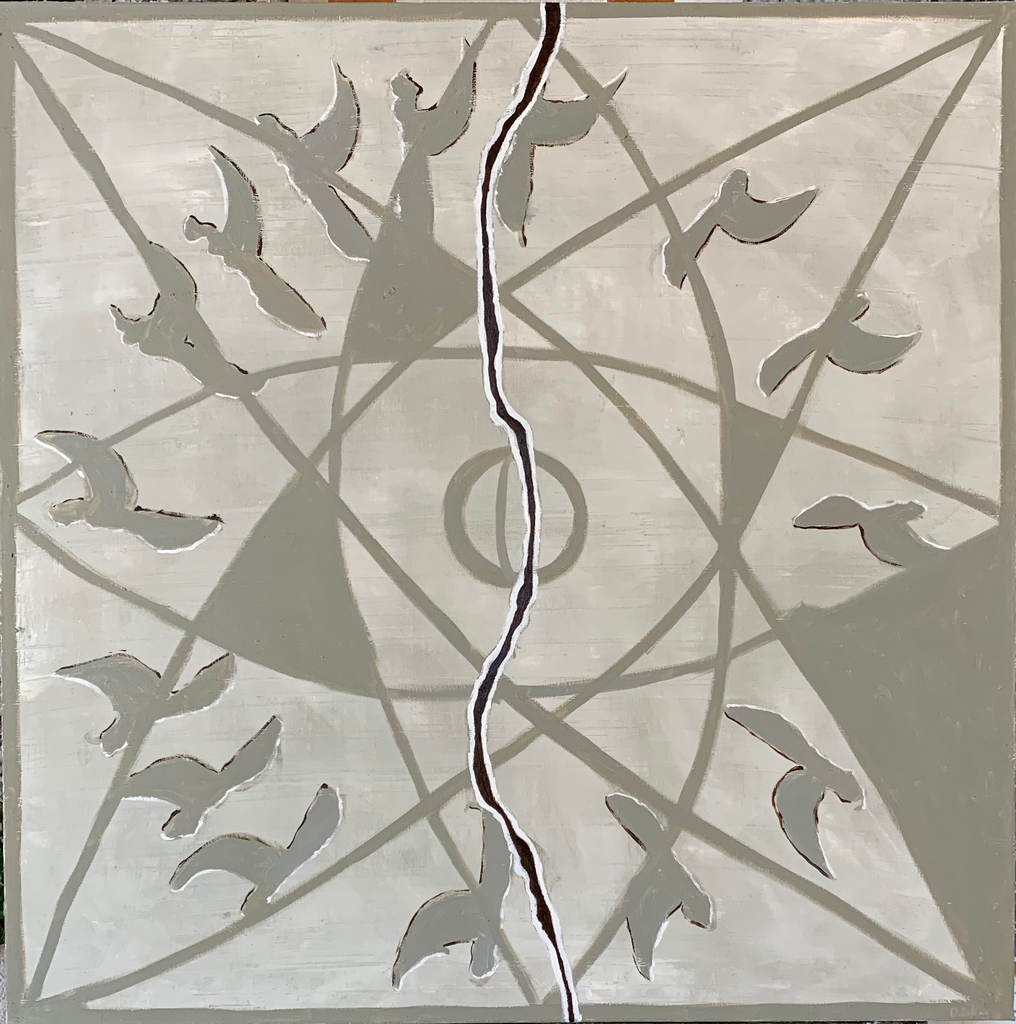
Torn
Oil on Canvas
R2000
71 cm x 71 cm
Let it Rain
Dirkje Daling
Looking at rain not only as a physical necessity, but also as symbolism for blessing and spiritual refreshment, I have approached the work for this exhibition to portray both.
The more abstract works, and photographic prints, are visual representations of spiritual truths, goals, experiences, concerns, and joy – that I would like to share with the viewer in my language, which is art.
The nature scenes speak of the joy we experienced in the village after long-awaited rain. The titles reflect the person who took the photograph that was used for reference.
I hope you enjoy this exhibition, and that you will gain from it.
Let it rain!

Waterfall
Oil on Canvas
71 cm x 71 cm
SOLD

